59.1 [Introduction]
A copyist wrote the introductory words “In the name of God…said:”. Al-Hawārī first praises God and Muḥammad, and then Abū Yaʿqūb,
59.15 Al-Hawārī asked permission from Ibn al-Bannāʾ to write this commentary, which Ibn al-Bannāʾ granted. The latter had already written a commentary on his own book, titled Lifting the Veil from the Face of the Operations of Arithmetic. What the Condensed Book and Lifting the Veil lacked, according to al-Hawārī, were ample numerical examples of the rules.
61.1 Four of the manuscripts we consulted show the phrase “may God forgive him”, which agrees with manuscripts of the Condensed Book. The Medina manuscript has instead “may God preserve his splendor, his reputation, and keep his memory whole”. This version implies that Ibn al-Bannāʾ is already deceased.
61.9 Part I. Known numbers.
63.1 Chapter I.1. Whole numbers.
65.1 Section I.1.1. The divisions of numbers and their ranks.
65.2
Euclid
Al-Hawārī will explain the various ways of representing fractions in Chapter 2, beginning at 131.1. The examples he gives here are, in the notation described later in the book,
 ,
,
 (equivalent to our
(equivalent to our
 ),
),
 (our
(our
 ),
),
 (our
(our
 ), and
), and
![{1\over 9}~\scalebox {-1}[1]{\ell }~{5\over 6}](../../../media/sources/14/5/EOAineq_5_8.png) (our
(our
 ).5
).5
65.6 Reading right to left, the first place is the units place. Zero was not considered to be a digit, but was instead a sign indicating an empty place in the representation of a number.
65.10
Evenly-even numbers are the powers of two starting with 2, and evenly-odd numbers are the double of an odd number
 . Evenly-evenly-odd numbers are numbers in between: they are the product of some power of two
. Evenly-evenly-odd numbers are numbers in between: they are the product of some power of two
 by an odd number
by an odd number
 . The classification of even numbers into evenly-even, evenly-odd, and evenly-evenly-odd comes from Greek number theory. These definitions are taken from Nicomachus’s
. The classification of even numbers into evenly-even, evenly-odd, and evenly-evenly-odd comes from Greek number theory. These definitions are taken from Nicomachus’s
Euclid’s . Also, Euclid has nothing corresponding to the “evenly-evenly-odd”.
. Also, Euclid has nothing corresponding to the “evenly-evenly-odd”.
Note the wording “each of the sixteens”. When we take half of 32, the result is a single number, 16. For al-Hawārī, halving 32 means to partition it into a pair of 16s. Numbers in medieval Arabic arithmetic admit multiplicity. See our comments at 163.2 below.
66.7
The word we translate as “prime” is awwal. This word also means “first, foremost”, etc., and so is close to our “prime” or “primal”. Ibn al-Bannāʾ and al-Hawārī also use the word aṣamm (“deaf”) to mean “prime”, though other arithmeticians, like al-Uqlīdisī
An “oddly-odd” number is the product of two odd numbers, both
 . This time Euclid,
. This time Euclid,
The word for “composite” in Ibn al-Bannāʾ and al-Hawārī is similarly murakkab, or some related form. (Sometimes we translate these words as “composed” or “composition”.) The associated verb rakiba serves to multiply the factors together to produce the number composed of those factors. See below at 196.16 and 211.13 for related forms of this word in the context of proportions and algebra.
66.13
Al-Hawārī presents another classification of numbers. All numbers are either prime or composite, and composite numbers come in three types: (a) perfect squares, (b) products of two or more different numbers, and (c) perfect cubes. He does not mention that some numbers fall into more than one category. The number 36, for example, is a square (
 ) and a product of two different numbers (
) and a product of two different numbers (
 ). The classification of composite numbers is explained for even numbers starting at 66.17, then again for odd numbers at 67.17.
). The classification of composite numbers is explained for even numbers starting at 66.17, then again for odd numbers at 67.17.
We have translated the adjective majdhūr as “has a root”. A number “has a root” if its square root is rational, like 9 or
 . We could have translated it as a single word like “rootable”, but that seemed too awkward. Later, first at 163.14, we will encounter the same concept for ranks. A rank is a majdhūra if a number of that rank can have a root. This is true for the units, the hundreds, ten thousands, and every other rank after that.
. We could have translated it as a single word like “rootable”, but that seemed too awkward. Later, first at 163.14, we will encounter the same concept for ranks. A rank is a majdhūra if a number of that rank can have a root. This is true for the units, the hundreds, ten thousands, and every other rank after that.
66.17
The words ḍilʿ (“side”), musaṭṭaḥ (“surface” or “plane”), and murabbaʿ (“square”) are geometric terms used in arithmetic in a metaphorical sense. They derive from the corresponding Greek words in the number theory books VII to IX in Euclid’s
67.12
The word mukaʿʿab can mean a geometrical cube, or, as here, it can be an arithmetical term meaning “[perfect] cube”, like 27 or
 . The related word kaʿb in the present passage means “cube root”, but it is also the name given to the third power of the unknown in algebra (first encountered at 221.1), which we translate as “cube”. The meanings are clear by the context.
. The related word kaʿb in the present passage means “cube root”, but it is also the name given to the third power of the unknown in algebra (first encountered at 221.1), which we translate as “cube”. The meanings are clear by the context.
68.11
Perhaps al-Hawārī is thinking of the fact that “root” and “cube root” are particular to dimensions 2 and 3 respectively, while “side” is the term for the
 -th root for any particular
-th root for any particular
 .
.
To “decompose” (ḥalla) a number means to express it as the product of two or more numbers. The opposite operation is to “compose” (rakiba) two or more numbers into their product.
Ibn al-Bannāʾ and al-Hawārī explain a rule for extracting square roots numerically beginning at 166.1. Similar rules for extracting cube roots were well known in their time, but al-Hawārī remarks here that going through the work is “of little benefit”. Instead, he briefly explains how to find the cube root of a perfect cube by factoring. For example, to find the cube root of 216, one can break it down as
 , then to
, then to
 , and then to
, and then to
 . Then one can piece it together as
. Then one can piece it together as
 , so 6 is the cube root.
, so 6 is the cube root.
68.18 Ibn al-Bannāʾ uses a few different words to explain the base ten system for writing numbers with the Indian figures:
Rank (martaba). This word indicates the position of a digit in a number. The Arabic word suggests a ranking of the digits, as al-Hawārī explains at 68.18. Ranks are sometimes designated by ordinal numbers, like first, second, third, etc., or by the names “units”, “tens”, “hundreds”, etc. For example, the “7” in 17,285 is the fourth rank, or the rank of thousands.
Place, position (manzila). Like martaba, this word indicates the position of a digit in a number. But here the Arabic word evokes the image of a place or a home, “because the numbers reside in them”, as remarked at 68.18. Again, the “7” in 17,285 is in the fourth place, or the thousands place. Sometimes the word mawdhiʿ, also meaning “place”, is used with the same meaning (at 108.12, 109.4).
Index (uss). This is the number indicating the position of the digit. The index of units is 1, of tens is 2, of hundreds is 3, of thousands is 4, etc. The Arabic word uss is used today to indicate the exponent in mathematics. We could have translated it as “power”, but the numbers would be off by one. For us 10 is the first power of ten, while the corresponding index is 2. Later, in the chapter on algebra, the word uss is used to mean the power of the unknown, and there it matches our exponents. The uss of the second degree unknown is 2, for instance. Thus we translate it as “power” there.
Name (ism). The name of a digit is “units”, “tens”, “hundreds”, “thousands”, “ten thousands”, etc., depending on its place. For instance, the name of the 7 in 17,285 is “thousands”.
Species (nawʿ or jins). There are three species of number: units, tens, and hundreds. These are repeated for the thousands, for the thousand thousands (i.e., millions), etc. So the species of the “7” in 17,285 is units, and the species of the “1” is tens. The same two words nawʿ and jins are used for the different “species”, or what we would call the powers of the unknown, in algebra.
At 68.18 Ibn al-Bannāʾ limits “rank” and “place” to units, tens, and hundreds, these being repeated for the thousands, thousand thousands, etc. But at 70.2, 70.23, 72.4, and 105.1 al-Hawārī regards these terms as progressing indefinitely instead of repeating.
One word absent in the book is ḥarf, meaning “digit”. Other medieval books, such as Principles of Indian Reckoning of Kūshyār ibn Labbān
There were several Arabic words that played the roles of our words “type”, “kind”, “species”, “division”, or “variety”. The ones appearing in our book are nawʿ, jins, ḍarb, qism, and ṣanf. These words were more or less interchangeable in Arabic mathematics, whether for types of number, of fraction, of addition (and other operations), of proportion, of equation, etc. It is partly from the ways numbers were classified, and from the descriptions of the two types each of multiplication and division (95.3, 117.9), that we can recognize numbers in Arabic mathematics as being numbers of something. See our commentary at 95.3 below.
69.2 By the thirteenth century CE, and perhaps much earlier, two distinct styles of writing the Indian numerals had developed in the Islamic world.8 The Western forms, written in the Maghreb and al-Andalus, ultimately led to the European forms 123456789 and 0, while the Eastern forms led to the current Arabic forms of the numerals, ١٢٣٤٥٦٧٨٩ and ٠. There are of course variations within each style.
Naturally, al-Hawārī wrote the Western forms, and it is these that are described by the poet. The poem makes use of the similarities between the shapes of the numerals and the shapes of letters of the Arabic alphabet to teach the student how to write the numerals. The copyist of the Medina manuscript was not familiar with the Western way of writing the numerals, so he followed the instructions in the poem to the letter (pun intended). Figure 1 below shows the numerals 987654321, with the Eastern forms written underneath.
Starting from the right, the “1” looks like the letter alif, which is just a vertical line. The “2” is written as the letter ḥā, and the “3” is the ligature of the letters ḥā and jīm, pronounced ḥajja as if it were a word. The “4” should be the ligature of ʿayn and wāw, pronounced ʿuw, but the copyist forgot to add the waw. See below in Figure 2 for the “4” in the Istanbul manuscript. The “5” is shown as an ʿayn alone, so it looks like the “4” in this figure. The “6” is shaped like the letter hā (the copyist failed to close the loop), the “7” like an anchor, and the “8” is said to be a couple zeros (small circles), one above the other, connected by a vertical line (the alif). The line is not evident in the figure, and is generally not written at all. The Tunis manuscript writes the “8” the normal way, as  , but just below it follows the instructions with the vertical line:
, but just below it follows the instructions with the vertical line:  (and afterward the copyist wrote the Eastern forms of the digits). Finally, the “9” is written as the letter wāw.
(and afterward the copyist wrote the Eastern forms of the digits). Finally, the “9” is written as the letter wāw.
The copyist of the Istanbul manuscript was already familiar with the Western forms. These are shown in Figure 2.
For comparison, Figure 3 shows the number 9367184225 from the same manuscript, with the Eastern forms above the Western forms. The Eastern “5”, on the right in black, is mistakenly written as a “4”.
70.2 There were no words for “million”, “billion”, etc. in Arabic arithmetic. They wrote instead “thousand thousand”, “thousand thousand thousand”, etc.
70.8 The places/ranks of a number were spoken in Arabic in a different order than they are in English. We preserve the Arabic order in our translation from here to the end of the chapter (through page 72 of our edition) to give the reader a feel for how the numbers were expressed.
Arabic numbers less than one hundred were spoken with the units first, like “four and sixty” instead of “sixty-four”. So “four and sixty thousands” is 64,000, and “four and sixty thousands and three hundred thousands” is 364,000, though this was often spoken as “three hundred thousands and four and sixty thousands”. In Arabic, the hundreds (like “three hundred” and “five hundred”) are compound words, so we translate “three hundred” instead of “three hundreds”. The word for "Thousands" is stated separately from its number, and is made plural when there is more than one of them. They wrote “a thousand” for one, and “two thousands”, “three thousands”, etc. for more than one.
The plural becomes more complicated when we get to the millions. When there are more than ten of something, the plural form of an Arabic noun is written the same as the singular form. So we read “four trees”, but fourteen of them reads like “fourteen tree”. Thus, what appears to be “ten thousands thousand” should be understood as “ten thousands thousands”. If there are 10,000 of the second word “thousand”, it must be plural.
Also, where we say “one hundred”, “one thousand”, etc., in Arabic the “one” is not written. They expressed these numbers with the implied indefinite article, as “[a] hundred”, “[a] thousand”, etc.
71.12 Subsection on knowing the index of the repeated number.
72.1 A 1, 2, or 3 is needed for the rule, so if the number is divisible by three, then three is regarded as the remainder.
73.1 Section I.1.2. Addition.
73.2
The act of adding two numbers, according to al-Hawārī’s definition, should result in a single expression. Sometimes, though, the sum can only be expressed with more than one expression. For example, adding 978 to 456 yields one expression, 1434 (at 75.9), as does adding “a root of two to a root of eight” (
 ), which gives “a root of 18” (
), which gives “a root of 18” (
 , at 179.16). The example at 180.10 shows an addition that results in two expressions: adding a root of three (
, at 179.16). The example at 180.10 shows an addition that results in two expressions: adding a root of three (
 ) to a root of fifteen (
) to a root of fifteen (
 ) can only be expressed as “a root of three and a root of fifteen”. We write this as
) can only be expressed as “a root of three and a root of fifteen”. We write this as
 , but as we explain below at 219.1, the operation of addition is not inherent in this composite expression. The current section covers addition of whole numbers, which always results in one expression.
, but as we explain below at 219.1, the operation of addition is not inherent in this composite expression. The current section covers addition of whole numbers, which always results in one expression.
Four different verbs are used in the book to mean “to add”: jamaʿa, ḥamala, zāda, and ḍāfa. Lane’s definitions of jamaʿa begin “to collect; bring, or gather together”.9 He starts off his definitions of zāda with “to increase, or augment, or grow”, while the various meanings of ḥamala begin with “to bear it, carry it, take it up and carry it, convey it, or carry it off or away”. Lane gives no definition of ḍāfa that relates to addition, but Wehr has “to be added, be annexed, be subjoined, be attached”.10 There are similar variations for words meaning “exceed”/“surpass” (zāda, faḍala, ʿalā) and “sum” (majmū and related forms, jumla).
Ibn al-Bannāʾ covers five types of addition in the Condensed Book:
(1)Adding numbers with no known relation. He covers the basic process of adding numbers in Indian notation beginning at 74.9.
(2)Adding sequences of numbers with a known disparity, at 76.7.
2a. In one kind of disparity, the ratio between consecutive terms is constant.
2b. In the second kind, the difference between consecutive terms is constant.
(3)Adding consecutive numbers, their squares, and their cubes, at 79.13.
(4)Adding consecutive odd numbers, their squares, and their cubes, at 80.5.
(5)Adding consecutive even numbers, their squares, and their cubes, at 80.20.
The rules for summing finite series, extending from 76.7 to 82.4, are (mostly) originally Greek in origin, but were probably borrowed from some intermediate Arabic source.11
73.7, 73.17
Ibn al-Bannāʾ’s distinction between a disparity in quantity (kamm), in which the difference between consecutive terms is constant, and a disparity in quality (kayf), in which the ratios of consecutive terms is constant, comes from Nicomachus
The Arabic for “geometric progression” is nisba handasiyya, literally “geometric relation”. Ibn al-Bannāʾ writes “known disparity” instead of “known relation” because the word nisba (“relation”) might imply the geometric progression. See below at 193.1 for more on the word nisba.
74.17 Al-Hawārī gives two examples of the first type of addition, starting with the addition of 4043 to 2685. First, the two numbers are written on two lines, like this:
Then the units 3 and 5 are added, and the result is put above (we put changes from the previous figure in red):
The tens are next. Because
 has two digits, 1 is added to the 6 in the hundreds place of the lower number, and a 2 is put above the tens place:
has two digits, 1 is added to the 6 in the hundreds place of the lower number, and a 2 is put above the tens place:
There is nothing to add to the 7, so 7 is put above the hundreds place:
Finally, the thousands place is 6, from the sum of 2 and 4. The answer is 6,728:
Because this method requires erasing and replacing, it was intended to be worked out on a dust-board or wax tablet, and not with ink.
Operating on zero
The rules for operating on numbers expressed in Indian notation call for the addition, subtraction and multiplication of digits, and sometimes one or both of these digits is a zero. The zero signifies a place where there is no number at all, so we should ask what it meant to operate on it. For this we need to understand that the operations themselves were thought of in a more material sense than our binary operations on abstract sets. Even the notion of a set is a modern one – there was no word for “set” in Greek, Latin, Arabic, Sanskrit, or medieval Italian. Premodern mathematicians, Europeans and Indians included, had no concept of a set as an object.
Addition for al-Hawārī was not an operation on R+ satisfying the commutative and associative axioms. It was simply the appending of a number with another number, or the gathering of numbers together, which were all regarded as amounts of something (dirhams, men, hours, etc.). To add five to three was like combining the five silver dirhams in one purse with the three silver dirhams in another purse, or like extending a length of five adhruʿ by three more adhruʿ, or like adding three mathāqīl of grain to five mathāqīl. Not even Euclid
For the operation of addition, Ibn al-Bannāʾ provides a special instruction when there is a zero present (74.9): “Then you add each digit of one of the addends to its counterpart in the other. If there is no counterpart, then the answer is the addend, as if it had a counterpart”. Al-Hawārī follows this rule in the present calculation: “Nothing corresponds to the seven in the upper line, so it is considered to be the sum of that rank and that of its counterpart as if it had something”. Adding nothing to 7 to get 7 does not mean that 0 assumes the role of an operable quantity. Instead, no addition takes place at all. Think of it like combining the money in two purses: one with 7 dirhams and the other empty. There is no act of combining to perform. Subtraction works similarly. In the passage at 83.19 al-Hawārī is faced with the subtraction of 0 from 9: “So we subtract this nothing of the minuend from the nine of the subtrahend, leaving nine”. No subtraction takes place when taking nothing away from an amount, so it leaves the amount unchanged.
Multiplication by zero is explained in the passage at 114.4: “multiplying the number by the zero or the zero by the number is identical. It comes from voiding the number or duplicating zero. Neither of these gives a number, so its sign is always a zero”. The word behind “voiding” (taṣfīr) is related to the word for “zero” (ṣifr). The former could have been translated as “emptying” or “zeroing”, and “zero” could be replaced with “nothing”. This duplication conforms to the standard definition of multiplication, given by Ibn al-Bannāʾ at 95.2: “Multiplication consists of the duplication of one of two numbers by however many units are in the other”. Duplicating nothing a number of times surely gives nothing, so the multiplication makes sense even if zero, being nothing, is not a number.
See the passages in the translation at 83.19,84.13, 90.7, 90.18, 123.3, and 215.14 for other operations with zero and/or nothing.
75.9 Al-Hawārī’s second example shows addition starting from the highest power term. He adds 978 to 456, first writing one above the other as before:
Working from the hundreds place,
 , so 13 is placed above:
, so 13 is placed above:
Next,
 , so a 2 is put above the 7, and 1 is added to the 3 next to it:
, so a 2 is put above the 7, and 1 is added to the 3 next to it:
Finally,
 , so the 4 is put above the 8, and 1 is added to the 2 next to it to get the answer, 1,434:
, so the 4 is put above the 8, and 1 is added to the 2 next to it to get the answer, 1,434:
76.7
For the second type of addition, Ibn al-Bannāʾ works with the famous chessboard problem. In some books, a grain of wheat is placed in the first square, two grains in the second, four in the third, etc. Ibn al-Bannāʾ simply places numbers in the squares, as did Abū Kāmil
Ibn al-Bannāʾ gives the rule for finding the sum of the numbers from the first square up to the
 th square. Al-Hawārī gives the example for the
th square. Al-Hawārī gives the example for the
 th = 16th square. The following iteration is performed:
th = 16th square. The following iteration is performed:
Take the 1 in the first square. Add 1 to get 2.
Square it to get 4. This is 1 more than what is in the first two squares (
 ), and it is also what is in the third square (4).
), and it is also what is in the third square (4).
Then square the 4 to get 16. This is 1 more than what is in the first four squares (
 ), and it is also what is in the fifth square (16).
), and it is also what is in the fifth square (16).
Square the 16 to get 256. This is one more than what is in the first 8 squares (
 ), and it is also what is in the 9th square (256).
), and it is also what is in the 9th square (256).
Square the 256 to get 65,536. This is 1 more than what is in the first 16 squares, and it is also what is in the 17th square.
So, the sum of the numbers in the first 16 squares is 65,535.
The figure shown in the translation is the one found in the Medina, Tehran, and Tunis manuscripts. The Istanbul and Oxford manuscripts show this figure instead (only Istanbul has the 65536 written on the left):
77.9
Ibn al-Bannāʾ then gives a variation in which the first square has a number other than 1, and the rule for filling out the remaining squares in the chessboard is the same: each square is double the one before it. For example, if the first square has a 3, then the succeeding squares are 6, 12, 24, etc. The rule to find the sum of the first
 squares is to follow the procedure as if a 1 were in the first square, then one multiplies the result by the number that is in the first square. Al-Hawārī gives the example of adding
squares is to follow the procedure as if a 1 were in the first square, then one multiplies the result by the number that is in the first square. Al-Hawārī gives the example of adding
 . The sum of the first eight squares starting with 1 is
. The sum of the first eight squares starting with 1 is
 . Multiplying this by 4 gives 1020, which is the required sum.
. Multiplying this by 4 gives 1020, which is the required sum.
78.1
Another variation is when the ratio of consecutive terms is some number other than
 . The example given by al-Hawārī starts with 16, and each square is 2/3 of the succeeding square. He gives the first five numbers: 16, 24, 36, 54, 81. Putting Ibn al-Bannāʾ’s rhetorical rule into modern form, the sum will be
. The example given by al-Hawārī starts with 16, and each square is 2/3 of the succeeding square. He gives the first five numbers: 16, 24, 36, 54, 81. Putting Ibn al-Bannāʾ’s rhetorical rule into modern form, the sum will be
 . We leave the general rule as an exercise for the reader.
. We leave the general rule as an exercise for the reader.
79.1
Ibn al-Bannāʾ then gives a rule for summing sequences of numbers in which the difference, rather than the ratio, of consecutive terms is constant. Al-Hawārī’s example is to add the 6 numbers starting with 10, and with a difference of 3. If we were to write it all out the sum would be
 , but we are working only with the known numbers 6, 10, and 3. The rule begins by finding the last number, which in this case is
, but we are working only with the known numbers 6, 10, and 3. The rule begins by finding the last number, which in this case is
 . Then
. Then
 of
of
 is the sum. Ibn al-Bannāʾ’s rhetorical rule can be expressed in modern notation this way: if there are
is the sum. Ibn al-Bannāʾ’s rhetorical rule can be expressed in modern notation this way: if there are
 numbers starting with
numbers starting with
 and with a difference of
and with a difference of
 , then the last number
, then the last number
 is
is
 , and the sum is
, and the sum is
 .
.
79.13 The third type of addition covers consecutive numbers, their squares, and their cubes. It is true that the first of these is a special case of the second type of addition, but here the first and last numbers are both given, and the rule is then used to find the sums of the squares and the cubes.
To add the numbers from 1 to 10, multiply half of the 10 by one more than the 10:
 . In modern notation,
. In modern notation,
 .
.
To add the squares of these numbers, or
 , the rule is
, the rule is
 . In general,
. In general,
 .
.
To add consecutive cubes, square the sum of the numbers. The example is
 . In general,
. In general,
 .
.
Medieval Arabic mathematicians wrote “[a] square” of a number, with the implied indefinite article, rather than “the square” because their numbers admit multiplicity. See below at 163.2 for a more detailed explanation for the case of roots.
80.5
The fourth type of addition is to add the consecutive odd numbers, their squares, and their cubes. For the first of these, square half of one more than the last number. Al-Hawārī’s example is to find
 . The answer is
. The answer is
 . In general, if the last number is
. In general, if the last number is
 , then the sum
, then the sum
 .
.
The sum of the squares of consecutive odd numbers up to
 is
is
 . In the example, al-Hawārī finds that
. In the example, al-Hawārī finds that
 .
.
If we let
 be the sum of the odd numbers up to
be the sum of the odd numbers up to
 , then the sum of the cubes of the odd numbers to
, then the sum of the cubes of the odd numbers to
 is
is
 . Al-Hawārī calculates that
. Al-Hawārī calculates that
 .
.
80.20
The fifth and last type of addition deals with consecutive even numbers, their squares, and their cubes. Al-Hawārī adds the even numbers from 2 to 10 by calculating
 .
.
For the squares
 one adds
one adds
 of 10 to
of 10 to
 of 1, and the result is multiplied by the sum, 30:
of 1, and the result is multiplied by the sum, 30:
 , and
, and
 .
.
Al-Hawārī gives an alternative rule, using the example of adding the squares
 . Here one multiplies a sixth of the last number (12) by the product of the next two numbers (13 and 14). Taking
. Here one multiplies a sixth of the last number (12) by the product of the next two numbers (13 and 14). Taking
 of 12 gives 2, and 2 by 182 is 364, which is the required sum. This happens to be the same rule he gave for adding the odd squares.
of 12 gives 2, and 2 by 182 is 364, which is the required sum. This happens to be the same rule he gave for adding the odd squares.
The sum of the even cubes
 “is given by multiplying the sum by its double”. We already know that the sum
“is given by multiplying the sum by its double”. We already know that the sum
 is 30, so we multiply 30 by 60 to get 1800, which is the answer.
is 30, so we multiply 30 by 60 to get 1800, which is the answer.
83.1 Section I.1.3. Subtraction.
Just as with addition, several verbs are used for subtraction. The most common, and the one which appears in chapter titles and instructions, is ṭaraḥa. We translate it as “to subtract”. The verb ṭaraḥa is also used for what we call “casting out”, as in casting out nines to check the answer to a calculation. Two other common verbs for subtraction are saqaṭa, “to drop”, and naqaṣa, which we also translate as “to subtract”. Rarer are the verbs nazala, “to remove”, and dhahaba, “to take away”.
To announce the result of a subtraction the verb baqiya (“to remain, leave”) is used. The word for “remainder” is bāqī. Often we translate a phrase whose literal meaning is “[there] remains” or “what remains” as “the remainder”. The word for the “residue” after casting out nines or eights or sevens, covered starting at 87.15, is the related word baqiya, and we translate bāqiya as “residual”. These two words appear one time each to mean “remaining” and “remainder”, respectively, at 110.16 and 118.20.
83.2 Ibn al-Bannāʾ writes of two kinds of subtraction. The first is the subtraction of one number from another with Indian numerals, and the second is “casting out” to check the answer of a calculation. Between these two kinds al-Hawārī inserts a description of repeated subtractions, starting at 86.1, that he took from Lifting the Veil.
Two examples are given for the first kind. Al-Hawārī begins with the example
 and proceeds from the highest rank to the lowest. First, the greater number is written above the smaller:
and proceeds from the highest rank to the lowest. First, the greater number is written above the smaller:
The 4 is subtracted from the 5, and the result is written above:
For the hundreds place, there is nothing (i.e., a 0) in the minuend, so one takes nothing away from the 9 in the subtrahend, leaving 9. This is subtracted from the 1 above the 5, which is really 10 since we are now working in the hundreds place. 9 from 10 leaves 1, so the first 1 is replaced with a 0, and this new 1 is placed above the hundreds place:
In the tens place the 3 is smaller than the 6, so we subtract 3 from 6 to get 3, and this is subtracted from the 10 above, leaving 7. The figure then becomes:
The situation is similar for the units place. Since 5 is less than 8, we subtract their difference, which is 3, from the 70 above. This leaves 67 as the answer:
84.13 Al-Hawārī gives a second example that starts with the units place. He begins with:
The 3 is less than 9, so we add 10 to the 3 and then subtract 9, leaving 4. This is placed above the 3. To compensate for the added 10, a 1 is added to the 6 next to the 9:
For the tens place we have a similar situation: 4 is less than 7. So add 10 to the 4 and subtract, leaving 7. Then add one to the 4 in the bottom row to get:
Next, taking 5 from 5 leaves nothing, so a 0 is placed above them:
Taking 3 from 6 leaves 3, so the figure becomes:
The answer is the 3,074 on top.
85.16 Rūmī signs were used in a system of calculation practiced in Western North Africa and al-Andalus. See 1.3 in the Introduction.
86.1
The part on repeated subtractions is taken from Ibn al-Bannāʾ’s commentary, and is not mentioned in the Condensed Book. It is not one of the two categories of subtraction he mentions at 83.2 at the start of the chapter. In modern notation the expression “ten less eight less seven less five less two” is
 . This is explained in words from the inside out: “subtract two from five, and the remainder from seven,…” and in an English version of the Arabic notation it would be
. This is explained in words from the inside out: “subtract two from five, and the remainder from seven,…” and in an English version of the Arabic notation it would be
 , where the
, where the
 stands for “less”. We are keeping the direction of the Arabic figures, so we write it in the translation as
stands for “less”. We are keeping the direction of the Arabic figures, so we write it in the translation as
![2~\scalebox {-1}[1]{\ell }~5~\scalebox {-1}[1]{\ell }~7~\scalebox {-1}[1]{\ell }~8~\scalebox {-1}[1]{\ell }~10](../../../media/sources/14/5/EOAineq_5_88.png) . See the discussion at 219.4 below for an explanation of the word “less” (illā).
. See the discussion at 219.4 below for an explanation of the word “less” (illā).
In two of the five manuscripts we consulted, Istanbul and Oxford, the numbers are separated by the word illā. Here it is in the Istanbul manuscript:  . In the Medina manuscript only the last part of the word is drawn, so it looks like an upside-down “
. In the Medina manuscript only the last part of the word is drawn, so it looks like an upside-down “
 ”:
”:  . The two other manuscripts, Tunis and Tehran, put three dots in place of the word illā for this figure. Here is the figure from the Tunis manuscript:
. The two other manuscripts, Tunis and Tehran, put three dots in place of the word illā for this figure. Here is the figure from the Tunis manuscript:  .14 Both manuscripts, curiously, write the illā in other instances.
.14 Both manuscripts, curiously, write the illā in other instances.
86.15
One could simply perform the operations as stated: subtract 2 from 5, then subtract the result from 7, etc. But Ibn al-Bannāʾ gives three other rules to work it out. For his first rule he distinguishes between the minuend, in this case 10, and the subtrahends, which here are 8, 7, 5, and 2. Add the even subtrahends (the 7 and 2) to the 10, and from this subtract the odd subtrahends, giving
 .
.
86.18
Another way is to collapse the string of numbers in groups of three. We “subtract the middle from the sum of the extremes, leaving the remainder as one number”. Taking the 10, 8, and 7, calculate
 , and replace all three with the 9 to get
, and replace all three with the 9 to get
![2~\scalebox {-1}[1]{\ell }~5~\scalebox {-1}[1]{\ell }~9](../../../media/sources/14/5/EOAineq_5_92.png) . Repeating the process gives
. Repeating the process gives
 . One does not need to start with the first three numbers. This works starting from any three consecutive numbers.
. One does not need to start with the first three numbers. This works starting from any three consecutive numbers.
87.9 A third way is to perform alternating subtractions and additions, beginning with the 10. Subtract 8 from 10, then add 7 to the remainder, then subtract 5, and finally add 2.
87.11 See our extended discussions below, at 219.1 and 219.4, for an explanation of “appended” (zāʾid) and “deleted” (nāqiṣ). They do not mean “positive” and “negative”. Because numbers were numbers of something counted or measured, negative numbers would have been meaningless to medieval arithmeticians.
87.15
The second kind of subtraction is what we call in English “casting out”. In “casting out nines”, which is still taught today, the remainder from division by 9 can be found by adding the digits and removing multiples of 9. Al-Hawārī gives the example of 6435. He adds the digits one by one, casting out nines as he goes. So
 , and removing a 9 leaves 1. Then
, and removing a 9 leaves 1. Then
 , and
, and
 . “This is cast out entirely”, meaning nothing remains. Nothing is literally no number at all, and not our modern number 0.
. “This is cast out entirely”, meaning nothing remains. Nothing is literally no number at all, and not our modern number 0.
Al-Hawārī also gives examples of the rules for casting out eights and casting out sevens. Because multiples of 200 are divisible by 8, one only needs to deal with the first three places in casting out eights. Al-Hawārī’s example is 5393. The 5000 is cast out entirely, as is the 200 from the 300. The remainder from the 100 is 4, then 2 is multiplied by the 9, and to these are added the 3, giving 25. Casting eights from this leaves 1. In general, the remainder of a number of the form
 (i.e.,
(i.e.,
 ) is the same as the remainder of
) is the same as the remainder of
 .
.
88.10 Casting out sevens is more complicated. No multiple of 10 is divisible by 7, so all digits must be taken into account. The remainders of each power of 10 are different for the first six powers, after which they repeat. These remainders must be memorized, and al-Hawārī illustrates Ibn al-Bannāʾ’s rule of expressing this sequence of remainders in abjad form. The letters appearing there are:
| Arabic | Transliteration | Value | |
 |
alif | A | 1 |
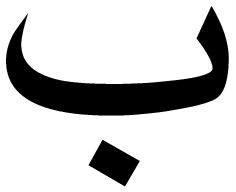 |
bā | B | 2 |
 |
jīm | J | 3 |
 |
dāl | D | 4 |
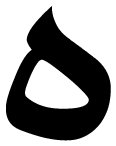 |
hā | H | 5 |
 |
wāw | W | 6 |
The remainders of 1, 10, 100, 1000, 10000, and 100000 are 1, 3, 2, 6, 4, and 5, respectively. At 88.14 he gives a short poem designed to help the student memorize these letters.
88.17 Indian numerals were sometimes called al-ghubār, or “dust” numerals, after the dust-board on which they were commonly written.
89.4 The example al-Hawārī gives is to cast out sevens from 23,786,435. He writes the digits above their corresponding letters:
For us, it is easier to use the Indian numerals:
Multiplying the digits in the corresponding places, and casting out sevens if necessary, gives:
For example, in the thousands place we multiply 6 by 6 to get 36, and casting out sevens leaves 1. The digits in the top row add up to 22, and casting out sevens again leaves 1.
90.3 Ibn al-Bannāʾ gives two variations for casting out sevens that do not require the memorization of the sequence of abjad numerals. The first is an iteration: first multiply the highest power digit by three (the residue of 10), cast out sevens if necessary, and then add the result to the previous digit. Al-Hawārī’s example is 58,064. Starting with the highest power term, multiply 5 by 3 to get 15. Cast out sevens to get 1. Then add this 1 to the 8 to get 9. Now repeat: multiply 9 by 3 to get 27, leaving 6 after casting out. Add 6 to nothing (the 0) to get 6. Multiply by 3 to get 18, and cast out sevens, leaving 4. Add 4 to 6 to get 10. Thrice 10 is 30; cast out to get 2, and add it to the 4 to get 6. This is the answer.
90.15 The other variation takes into account two digits at a time. Casting out sevens from the 58 in 58,064 leaves 2. Although al-Hawārī does not write it, the residue of 58,064 is the same as the residue of 2,064. Next, the residue of 20 is 6, so we now consider 664. The residue of 66 is 3, so now the number is 34. Its residue is 6, which is the answer.
91.1 Subsection on the way to test [calculations] by casting-out.
Next, Ibn al-Bannāʾ turns to applications of these techniques of casting out to check the results of arithmetical operations. These include addition, subtraction, multiplication, and division/denomination. For the latter two it works even for fractions. Here are a couple of al-Hawārī’s examples.
91.4
For addition, he works with the example
 . He could cast out nines, eights, or sevens, and for this and subsequent examples he chooses sevens. The residue of 43 is 1, and the residue of 64 is also 1. Add them to get 2, which should be (and is) the residue of 107. If the residues added to 7 or more, one would cast out a 7 to make it less than 7.
. He could cast out nines, eights, or sevens, and for this and subsequent examples he chooses sevens. The residue of 43 is 1, and the residue of 64 is also 1. Add them to get 2, which should be (and is) the residue of 107. If the residues added to 7 or more, one would cast out a 7 to make it less than 7.
92.3
In subtraction there is a problem if the residue of the minuend is smaller than the residue of the subtrahend. Take for example
 . The residue of the 29 is 1, and the residue of the 13 is 6. We cannot subtract 6 from 1, so we add 7 to the 1 and then subtract:
. The residue of the 29 is 1, and the residue of the 13 is 6. We cannot subtract 6 from 1, so we add 7 to the 1 and then subtract:
 , and this 2 is the residue of the remainder 16. For casting out nines, add nine to the residue of the minuend, and for casting out eights, add eight.
, and this 2 is the residue of the remainder 16. For casting out nines, add nine to the residue of the minuend, and for casting out eights, add eight.
92.17
An example for the multiplication of fractions is
 . The residues of the multipliers are
. The residues of the multipliers are
 and
and
 . Ibn al-Bannāʾ does not say so, but these are the residues of the numerators. If, for instance, the multiplier were
. Ibn al-Bannāʾ does not say so, but these are the residues of the numerators. If, for instance, the multiplier were
 , he would have found the residue to be
, he would have found the residue to be
 , since
, since
 as a single fraction is
as a single fraction is
 , and the residue of 13 is 6.
, and the residue of 13 is 6.
The product of the
 by the
by the
 is
is
 , or as Ibn al-Bannāʾ puts it, “a third of a fourth”. The numerator of this fraction is 1. The product
, or as Ibn al-Bannāʾ puts it, “a third of a fourth”. The numerator of this fraction is 1. The product
 is
is
 , and Ibn al-Bannāʾ takes the residue of the numerator, which is 5. But these are fourths, not twelfths, so he multiplies by 3 to get 15 (for
, and Ibn al-Bannāʾ takes the residue of the numerator, which is 5. But these are fourths, not twelfths, so he multiplies by 3 to get 15 (for
 ), whose residue is 1. This agrees with the residue of the multipliers.
), whose residue is 1. This agrees with the residue of the multipliers.
The numerator 1 of “a third of a fourth” is equal to the numerator of the answer, so they are equal in quantity. The kinds of fractions they are, thirds of fourths, are the same, making them equal in quality. This terminology comes from Aristotle’s
93.6
As Ibn al-Bannāʾ will explain in the section on division at 118.14, the term “division” is used for the division of a greater number by a smaller number, and “denomination” for the division of a smaller number by a greater number. For the division
 , where
, where
 , the
, the
 is the dividend and
is the dividend and
 the divisor. If
the divisor. If
 , then
, then
 is the denominated [number] and
is the denominated [number] and
 is the denominating [number] or what we call the denominator. For both kinds,
is the denominating [number] or what we call the denominator. For both kinds,
 is the quotient or result. So “the result and the divisor or denominating number” are
is the quotient or result. So “the result and the divisor or denominating number” are
 and
and
 , and the “dividend or denominated number” is
, and the “dividend or denominated number” is
 .
.
The Arabic words for the “denominator” of a fraction (imām, and less frequently maqām) are unrelated to the verb “denominate” (sammā) and related nouns such as “denominating [number]” (musammā minhu).
93.10 For both division and denomination, al-Hawārī gives an example with whole numbers and an example with fractions.
The Arabic word for the “numerator” of a fraction is basṭ, or occasionally the related word mabsūṭ. These words are unrelated to the word for “number”, which is ʿadad. We translate the related verb basaṭa as “to numerate”. Its meaning is to find the numerator of a fraction that is “a combination of two or more names” (135.1). For example, to numerate the fraction “five sixths and three fourths” (at 93.15) means to express it as “thirty-eight fourths of a sixth” (
 ). Finding the numerator is described at length in the first section on fractions, beginning at 135.8.
). Finding the numerator is described at length in the first section on fractions, beginning at 135.8.
93.15
The notation for distinct fractions shows one next to the other, as explained later at 136.8 and 139.1. This problem is to divide
 by
by
 . We would write
. We would write
 as
as
 , and the result of the division as
, and the result of the division as
 . The residue of
. The residue of
 is 5, or
is 5, or
 . The residue of
. The residue of
 is 1, or
is 1, or
 . Multiplying them, one gets
. Multiplying them, one gets
 , or, as Ibn al-Bannāʾ says, “five halves of a sixth”. The residue of the dividend,
, or, as Ibn al-Bannāʾ says, “five halves of a sixth”. The residue of the dividend,
 , is 3, with a denominator of 24. So the
, is 3, with a denominator of 24. So the
 must be converted to 24ths, making it
must be converted to 24ths, making it
 , which is
, which is
 after casting out again. This matches the residue of the
after casting out again. This matches the residue of the
 .
.
94.1
Al-Hawārī gives an example of checking the result of the denomination of whole numbers even if it might be superfluous in practice. The example is to denominate 11 with 15, which for us gives the fraction
 . The residue of the denominated number 11 is of course the same as the residue of the numerator 11 of the result, so there is nothing to check. The only aspect that makes this appear to be a problem is that al-Hawārī follows common Arabic practice by expressing the result not as
. The residue of the denominated number 11 is of course the same as the residue of the numerator 11 of the result, so there is nothing to check. The only aspect that makes this appear to be a problem is that al-Hawārī follows common Arabic practice by expressing the result not as
 , but as “three fifths and two thirds of a fifth”. We might write this as
, but as “three fifths and two thirds of a fifth”. We might write this as
 , but for al-Hawārī it would be shown as
, but for al-Hawārī it would be shown as
 (the notation for this fraction is explained at 123.18). The numerator and denominator of this fraction must be calculated in order to find its residue, but this brings us right back to the 11 and 15 we started with.
(the notation for this fraction is explained at 123.18). The numerator and denominator of this fraction must be calculated in order to find its residue, but this brings us right back to the 11 and 15 we started with.
94.5
Checking the result of the denomination of fractions requires some work. Writing Ibn al-Bannāʾ’s example in notation, it is to denominate
 with
with
 , which results in
, which results in
 . After finding the numerators, the problem remains to denominate
. After finding the numerators, the problem remains to denominate
 with
with
 . The product of the residues of
. The product of the residues of
 and
and
 should equal the residue of
should equal the residue of
 , but we need to be sure the denominators are the same to make it work. The residue of the numerator of
, but we need to be sure the denominators are the same to make it work. The residue of the numerator of
 is 2. The residue of the numerator of
is 2. The residue of the numerator of
 is also 2, and multiplying the 2 (as
is also 2, and multiplying the 2 (as
 ) by the 2 (as
) by the 2 (as
 ) gives
) gives
 . Because the 6 in the denominator of the
. Because the 6 in the denominator of the
 is lacking in the
is lacking in the
 , we multiply the numerator and denominator of the latter by 6 to get
, we multiply the numerator and denominator of the latter by 6 to get
 , and its residue is 3, which is the “answer”. We now turn our attention to
, and its residue is 3, which is the “answer”. We now turn our attention to
 . The residue of the 8 is 1, and this must be multiplied by 3 and then by 8 to make the denominators match. This gives
. The residue of the 8 is 1, and this must be multiplied by 3 and then by 8 to make the denominators match. This gives
 , and its residue is 3, which agrees with the answer.
, and its residue is 3, which agrees with the answer.
95.1 Section I.1.4. Multiplication.
95.2
Arabic arithmetic books often define multiplication as “the duplication of one of two numbers by however many units are in the other”, as Ibn al-Bannāʾ phrased it here in the Condensed Book.16 This definition by “duplication” may come from Book VII of Euclid’s
It would not matter so much that Nicomachus
Contrary to what Abū l-Wafāʾ’s
It may have been his desire to tie practical Arabic arithmetic with the Greek tradition that led Abū l-Wafāʾ
Whatever its source, the “duplication” definition of multiplication was devised with whole numbers in mind. Abū l-Wafāʾ
95.3 Ibn al-Bannāʾ distinguishes between two types of multiplication. In the first type, one puts a copy of the multiplicand in place of each unit of the multiplier. The example is “three men: each of them has five dirhams. You multiply five by three, which gives fifteen dirhams”. Each of the three men is substituted with five dirhams, to get a total of fifteen dirhams. There is a change in meaning (maʿnan) because the three (men) became fifteen (dirhams). Also, the units shift from (three) men to (fifteen) dirhams, which is a change in terms (lafẓ).
The example for the second type is “five dirhams, how many thirds does it contain?”. This type is called “conversion” because the units for the amount “five dirhams” is converted from dirhams to thirds of a dirham. There are 5 of the former and 15 of the latter. The total amount “five dirhams” remains the same, so there is no change in meaning. But the shift in units, from dirhams to thirds of a dirham, is a change in terms. “All of what is in the multiplier in units”, or three (thirds of a dirham), “is equal to the one [dirham] of the multiplicand”. Thus the “[number of] units in the multiplier”, or three, “is the number of what is in one of the multiplicand in parts”, or, more loosely translated, “is the number in each part [i.e., each dirham] of the multiplicand”. Conversion of fractions is covered later, at 157.9, and the two corresponding types of division are explained beginning at 117.9.
Ibn al-Bannāʾ’s description of the first type, at 95.3, is problematic. It reads “in putting down the multiplier, each one of them is equal to the one of the multiplicand”. Reading the example for this type at 95.10, it could be translated as: “in putting down the multiplier, each one of them stands for (mithl) the single entity (wāḥid) of the multiplicand”. One should substitute for each unit in the multiplier the entire multiplicand, not just its unit (“the one”). But this translation is at odds with the description of the second type of multiplication, which begins: “all of what is in the multiplier in units is equal to the one of the multiplicand”. The same phrase “the one of the multiplicand” in this case must mean its unit, and not the multiplicand as a single entity. Perhaps the description of the first type is misstated.
In Lifting the Veil, Ibn al-Bannāʾ completes his descriptions and examples by writing “The first type is combining (tarkīb) and the second is dissecting (tafṣīl)”, though al-Hawārī does not copy it. In the example of the first type the three copies of five dirhams are combined, and in the example of the second type each of the five dirhams is dissected into three pieces.
Modern mathematicians work with only one kind of multiplication because our numbers all belong to the same abstract set. Instead, in Arabic arithmetic a number is a number of something, whether it be men, dirhams, mithqals, or abstract units. This is why Ibn al-Bannāʾ distinguishes between a change in terms and a change in meaning. (See also our comments on division, below at 117.9.) This idea of different kinds of number is also behind the names of the powers of ten (hundreds, thousands, etc.), the names of fractions (thirds, fourths, etc.), and the names of the powers of the unknown in algebra (numbers, things, māls, cubes, etc.). So “three men” was a particular kind of 3, like “three boats”, “three thousands”, “three fifths”, and “three things”.
Arabic authors often designated numbers by their kind, and several examples are found in al-Hawārī’s book. Just above, at 95.7, we read “the units in the multiplier”; at 114.12, we find “the ranks of the result”; at 208.1; “if we make the starlings twenty-four”; and at 215.15, “we square half of the things”. These nouns mean, respectively, “the number of units”, “the number of ranks”, “the number of starlings”, and “the number of things”. If one has 24 starlings, for example, then that collection of birds is an instance of the number 24, and one can indicate their number by saying merely “the starlings”.
This idea that a number has two aspects, its meaning (value) and its term (the kind of number), breaks down with irrational roots, though our authors do not discuss it. This is because it makes no sense to have an irrational number of anything, like
 bricks, for example. This becomes problematic in algebra, where the “coefficient” (the “number”, or meaning) of a term had to remain rational even when multiplying by an irrational number. See the discussion below in the last paragraph of our commentary to 219.1.
bricks, for example. This becomes problematic in algebra, where the “coefficient” (the “number”, or meaning) of a term had to remain rational even when multiplying by an irrational number. See the discussion below in the last paragraph of our commentary to 219.1.
95.15
Rules for multiplying numbers, Ibn al-Bannāʾ tells us, fall into one of three categories: those with shifting, those with half-shifting, and those without any shifting. Methods involving shifting are designed for the dust-board or wax tablet, where it is easy to erase and rewrite the digits. Those without shifting were intended for the lawḥa with ink pen, and will also work on paper. He also describes some techniques of mental arithmetic at the end of the chapter, beginning at 108.9, that he took mainly from Ibn al-Yāsamīn’s
95.17 The first multiplication rule with shifting is called “sleeper multiplication”, perhaps because the numbers are placed horizontally as if they are sleeping on a bed. There is another method of “sleeper multiplication”, without shifting, that features numbers written horizontally. It is described at 103.14.
96.3 Al-Hawārī gives the example of multiplying 43 by 54. They are arranged on the dust-board like this:
The overall scheme will be to multiply the 4 of the 43 by the 54, then the 54 will be shifted to the right, and then the 3 from the 43 will be multiplied by the 54. First the 4 from the 43 is multiplied by the 5, and the 20 is placed above:
The 4 from the 43 is then multiplied by the 4 below, giving 16. The 1 from the 16 is added to the 0 we just wrote, and the 6 of the 16 replaces the 4:
The 54 is then shifted to the right one unit, giving this figure:
Now we multiply the 3 by the 5 below. The resulting 15 is added to the 16 above to get 31:
Now the 3 by 4 gives 12. The 1 is added to the 1 on top, and the 2 replaces the 3:
The result of the multiplication of 43 by 54 is 2,322.
It is important to know when to add a digit and when to replace a digit. One adds to digits that have been calculated, while one replaces digits from the original problem. This way, the digits of the multiplicand, 43, are replaced with the digits of the evolving calculated number.
97.1 The other method of multiplication with shifting is called vertical multiplication. It works the same way as the sleeper multiplication just described. Al-Hawārī’s example is to multiply 42 by 37. The digits are arranged vertically, with units on top:
Like before, we first multiply the 4 of the 42 by the 3 of the 37 to get 12. This is placed next to the 3, with the 2 above the 1:
The 4 is then multiplied by the 7, giving 28. This will be placed to the left, too. As before, we replace the digit 4 of the multiplicand with the 8, and we add the 2 to the calculated 2 that lies below it:
Now the multiplier is shifted up one unit:
The 2 on the left will now be multiplied by the 37. First,
 , so we add the 6 to the calculated 8, giving 14. Because of the extra digit, the 1 is added to the 4 below:
, so we add the 6 to the calculated 8, giving 14. Because of the extra digit, the 1 is added to the 4 below:
Finally,
 . The 4 replaces the 2, and the 1 is added to the 4 below it:
. The 4 replaces the 2, and the 1 is added to the 4 below it:
The result of multiplying 42 by 37 is 1,554.
98.4 The method by half-shifting is a technique for squaring numbers. Al-Hawārī’s example is to multiply 463 by itself. First, the number is written with dots between the digits:
The 4 is squared, and the resulting 16 is written above:
Next, double the 4 to get 8, and put this in place of the first dot:
This 8 is regarded as being shifted, and it is multiplied by the 6 to its right to get 48. This result is added above the 8, treating it like
 :
:
Next the 6 is squared, giving 36. This is added to the 2080 above:
Now the 6 is doubled to get 12, and this is shifted one place to the right so that it replaces the “6 •”. One must also shift the 8, treated as 80 since it is one place to the left, that was doubled before. This is added to the 12, making 92:
Now the last 3 must be multiplied by this shifted 92. The 3 by the 9 gives 27, which is added to the 16 above the 89, making 43:
Next 3 by 2 is 6, and this is added above the 2:
Last, we square the 3 to get 9, and add this above the 3:
The result of multiplying 463 by itself is 214,369.
99.14 There are several different ways to perform the third kind of multiplication, without any shifting. Ibn al-Bannāʾ first explains “table multiplication”, which we call lattice multiplication. Al-Hawārī’s example is to multiply 435 by 287. These are drawn around a grid with diagonals:
Ibn al-Bannāʾ mentions that the 287 can be placed on the left or the right. Most manuscripts, and our translation, show it on the right, but putting it on the left makes the final addition easier. Next, in each of the nine squares we put the product of the column digit by the row digit. For example, for the upper left square
 , so a 2 goes under the diagonal and an 8 above the diagonal. The spaces are then filled out like this:
, so a 2 goes under the diagonal and an 8 above the diagonal. The spaces are then filled out like this:
We then add the numbers between the diagonal lines. The upper right shows a 5, which is the units. Between the first and second diagonal lines are a 1, 3, and 0. These add to 4, which is the tens place of the answer. Adding the numbers between the next two diagonals gives
 , so the hundreds place is an 8, and the 1 is carried to the next sum. Continue like this to get the answer 124,845.
, so the hundreds place is an 8, and the 1 is carried to the next sum. Continue like this to get the answer 124,845.
101.16 For “vertical multiplication” al-Hawārī multiplies 183 by 347. These are arranged vertically, separated by some space:
The units place of the answer will be in the top row between the numbers, the tens place in the row below that, etc. First, we multiply the 3 from the 183 one by one by the digits of 347. The 21 from
 is put on the right like this:
is put on the right like this:
Next,
 . The 2 is added to the 2 in the tens place to become 4, and the 1 is placed below:
. The 2 is added to the 2 in the tens place to become 4, and the 1 is placed below:
So far we have 141. As in the Oxford manuscript, we will cross out discarded digits. Next, the 3 is multiplied by the 3 to get 9, which is added to the 1 on the bottom to make 10:
Each digit on the left is then multiplied by the 8, bringing the diagram to this state:
Last, the 1 is multiplied by the 7, 4, and 3:
Thus
 .
.
103.14 The horizontal version of “vertical multiplication” is called “sleeper multiplication”, like the method described above at 95.17. Al-Hawārī multiplies 253 by 987, first writing them on two lines like this:
First, the 3 is multiplied by the digits in 987, beginning with the 7. The 21 is written above:
Next is
 . The 4 is added to the 2 of the 21, making 6, which is placed above, and the 2 is put to the left:
. The 4 is added to the 2 of the 21, making 6, which is placed above, and the 2 is put to the left:
So far the result is 261. Again, we cross out defunct digits as we go, but most manuscripts just leave them alone. Next,
 , and this is added the same way:
, and this is added the same way:
Now the 5 is multiplied by the 7, 8, and 9, giving this figure:
Finally, after multiplying the digits by 2, the final figure is:
The result of multiplying 253 by 987 is 249,711.
106.11 This next method, called “repetition”, is just a curiosity of calculation. It works when the digits in each number are all the same and they both have the same number of digits, like 7777 by 9999, or, in al-Hawārī’s example, 444 by 333. These are written on two lines like this:
Under this we put a 1, 2, 3, etc., until we get to the end of one number and the beginning of the next. Then the numbers descend back to 1. These numbers will serves as multipliers:
Multiply the 3 of 333 by the 4 of 444 to get 12. Multiplying the 12 by the 1 on the left gives 12, which is put above like this:
Next, the 12 is multiplied by the 2 to get 24, and this is added above, one place to the right. The 2 is added to the 2 of the last 12 to make 4, so we replace it as we did in the last scheme:
The 12 is then multiplied by the 3, giving 36, and this is added above the same way:
Continuing, we multiply the 12 by the 2, and then finally the 12 by the 1. The final figure is:
So the product of 333 by 444 is 147,852.
108.9
The techniques of multiplication presented so far are meant to be worked out in Indian notation on a board, and can be applied to any two (positive) integers. The remaining techniques are either shortcuts originating in finger-reckoning, or they are board techniques that work for specific kinds of numbers. Many of these rules were copied by Ibn al-Bannāʾ from Ibn al-Yāsamīn’s
In addition, at 109.16 al-Hawārī gives a variation on a finger-reckoning rule that he attributes to al-Yāsamīn
Multiplication “by excess” is a trick for doing the calculation mentally when at least one of the numbers is between 10 and 19. To multiply 12 by 15, think of the 12 as 2 more than 10. Divide the 2 by the 10, which is
 , and multiply this by the 15 to get 3. Then add this 3 back to the 15 to get 18, and multiply by 10 to get the answer, 180. Al-Hawārī then does it again, switching the roles of the 12 and 15. In general, to multiply a number of the form
, and multiply this by the 15 to get 3. Then add this 3 back to the 15 to get 18, and multiply by 10 to get the answer, 180. Al-Hawārī then does it again, switching the roles of the 12 and 15. In general, to multiply a number of the form
 (
(
 is a digit) by another number
is a digit) by another number
 , one calculates
, one calculates
 . Al-Hawārī gives a second example,
. Al-Hawārī gives a second example,
 , that gives fractions. Try it in your head!
, that gives fractions. Try it in your head!
 of 17 is
of 17 is
 , or
, or
 . Add this to the 17 to get
. Add this to the 17 to get
 . Finally, multiply by 10 to get the product, which is 221.
. Finally, multiply by 10 to get the product, which is 221.
109.7
Another trick for mental calculation is called “denomination”. Al-Hawārī’s example is to multiply 6 by 12. First denominate (we would say “divide”) one of the numbers with their sum. Dividing 6 by 18 gives
 . Then multiply this by the other number, 12, to get 4. Last, multiply this 4 by the sum, 18, giving 72.
. Then multiply this by the other number, 12, to get 4. Last, multiply this 4 by the sum, 18, giving 72.
Written algebraically, to multiply
 by
by
 one performs these operations:
one performs these operations:
 . This method can only be useful if the two numbers have a common divisor. Otherwise, the multiplication of
. This method can only be useful if the two numbers have a common divisor. Otherwise, the multiplication of
 by
by
 will require one to find
will require one to find
 , which is the original problem.
, which is the original problem.
109.16
A variation on this rule can be written in modern notation as
 . Al-Hawārī gives Ibn al-Yāsamīn
. Al-Hawārī gives Ibn al-Yāsamīn
109.19
Another denomination method is to divide one of the two numbers by a power of ten, and then multiply the result by the other number. This is then multiplied by the power of ten to get the product. Al-Hawārī first works out the example
 . He divides the 8 by 10 to get
. He divides the 8 by 10 to get
 . Then
. Then
 . Multiplying this by 10 gives the product 192. The advantage here is that the numbers are kept small until the end when the power of ten is multiplied back.
. Multiplying this by 10 gives the product 192. The advantage here is that the numbers are kept small until the end when the power of ten is multiplied back.
110.5
The Arabic word we translate as “power of ten” is ʿaqd. The use of this word in arithmetic originated in finger-reckoning. Historian A. S. Saidan
This placement [of the fingers] is called ʿaqd, plural ʿuqūd. Thus the finger-reckoner understood numbers as formed of places, namely units, tens, hundreds, etc., each place having one or the other of the nine ʿuqūd: one, two,… nine. With this understanding the word ʿuqūd came to mean what we may now call digits. But in usage ʿaqd and place were not always clearly distinguished.25
The first occurrence of the word ʿaqd in al-Hawārī’s book is in a rule of Ibn al-Bannāʾ given above at 87.17. There it takes the meaning of “power of ten” or “place”. The other seven instances of the word are in the present chapter covering finger reckoning rules, from 109.19 to 111.3. When reading “power of ten” here one should keep in mind its association with the positioning of the fingers.
The definition at 110.5 is not accurate. The only non-zero rank should be a ten or a hundred or the like, not just the first (awwal). The way the condition is stated, a number like 310 would be a “simple power of ten”.
110.12
Al-Hawārī then works out
 , which he solves by working through
, which he solves by working through
 ,
,
 ,
,
 . He then works it out again, this time subtracting 5 from the 15 so that the first operation gives a whole number. He takes
. He then works it out again, this time subtracting 5 from the 15 so that the first operation gives a whole number. He takes
 , then
, then
 ,
,
 , and
, and
 . To compensate for the subtracted 5, he calculates
. To compensate for the subtracted 5, he calculates
 , and this is added to the 120 to get 180, which is the product.
, and this is added to the 120 to get 180, which is the product.
111.1
Next al-Hawārī finds
 similarly, but by adding rather than subtracting. Adding 2 to the 3 gives 5, and dividing that by 10 gives
similarly, but by adding rather than subtracting. Adding 2 to the 3 gives 5, and dividing that by 10 gives
 . This
. This
 may not be a whole number, but it is easier to work with than
may not be a whole number, but it is easier to work with than
 . Then
. Then
 , and “we raise each [digit] by ten” to get 75. From this we must subtract
, and “we raise each [digit] by ten” to get 75. From this we must subtract
 , or 30, to get 45, which is the answer. With practice, methods like these prove to be quite useful.
, or 30, to get 45, which is the answer. With practice, methods like these prove to be quite useful.
111.7
Recall the “repetition” method at 106.11, which was covered just before the techniques of mental multiplication. That method requires that the number of digits in the multipliers be the same, and that all the digits in each multiplier be equal, as in al-Hawārī’s example
 . This next method, called “nines”, works when one of the two multipliers consists of all 9s. Al-Hawārī works through the example
. This next method, called “nines”, works when one of the two multipliers consists of all 9s. Al-Hawārī works through the example
 . We put them on two lines, and above them we put a row of dots equal to the sum of the number of places of the two numbers, in this case six:
. We put them on two lines, and above them we put a row of dots equal to the sum of the number of places of the two numbers, in this case six:
First,
 . The 6 replaces the right-hand dot, and the 3 replaces the middle dot of the remaining dots:
. The 6 replaces the right-hand dot, and the 3 replaces the middle dot of the remaining dots:
Next, the difference
 replaces the dots between the 3 and 6:
replaces the dots between the 3 and 6:
Last, the remaining dots are replaced with 4s:
Then
 .
.
To see why this works, note that multiplying a number of the form
 (i.e.,
(i.e.,
 ) by 999 is the same as
) by 999 is the same as
 by
by
 , which is of the form
, which is of the form
 . The digits of the answer must then be
. The digits of the answer must then be
 ,
,
 ,
,
 ,
,
 ,
,
 , and
, and
 .
.
112.5
Next is another method of multiplying by a number expressed with all 9s. This one has no restriction on the other number. Al-Hawārī’s example is
 . Add to the 9,354 as many 0s as there are 9s in 999 to get 9,354,000. Then subtract the 9,354 to get 9,344,646, which is the desired product.
. Add to the 9,354 as many 0s as there are 9s in 999 to get 9,354,000. Then subtract the 9,354 to get 9,344,646, which is the desired product.
112.16
The method called “squaring” derives from the fact that
![[{1\over 2}(b+a)]^2-[{1\over 2}(b-a)]^2=ab](../../../media/sources/14/5/EOAineq_5_229.png) . The method is much simpler to apply mentally than the modern formula suggests. To multiply 17 by 19, al-Hawārī squares half their sum, 18, to get 324. From this he subtracts a square of half the difference between them, which is 1, to get 323. This is the desired product.
. The method is much simpler to apply mentally than the modern formula suggests. To multiply 17 by 19, al-Hawārī squares half their sum, 18, to get 324. From this he subtracts a square of half the difference between them, which is 1, to get 323. This is the desired product.
Incidentally, in his Lifting the Veil Ibn al-Bannāʾ appropriates this rule as the foundation for arithmetical proofs for the rules for solving the three composite algebraic equations. The same rules are stated and illustrated in the present work starting at 214.7, but without proofs.26
113.6
Another “squaring” method entails squaring one of the two numbers and multiplying or dividing the result by their ratio. To multiply
 , al-Hawārī squares the 25 to get 625. Because 25 is the greater of the two numbers, its square is multiplied by the ratio of 15 to 25, or
, al-Hawārī squares the 25 to get 625. Because 25 is the greater of the two numbers, its square is multiplied by the ratio of 15 to 25, or
 , to get 375, which is the answer. He then works it out by squaring the 15 to get 225. Because 15 is the smaller number, its square is divided by the ratio
, to get 375, which is the answer. He then works it out by squaring the 15 to get 225. Because 15 is the smaller number, its square is divided by the ratio
 , again giving 375. Algebraically,
, again giving 375. Algebraically,
 .
.
113.16
In this next method, Ibn al-Bannāʾ makes use of rules that can be written in modern notation as
 and
and
 , for
, for
 . Al-Hawārī multiplies 36 by 14 using both rules. For the first rule, the difference 22 is multiplied by 36 to get 792. This is taken from 1296, a square of 36, leaving the answer 504. For the second rule, the difference 22 is multiplied by 14 to get 308. This is added to 196, a square of 14, to get the same answer, 504.
. Al-Hawārī multiplies 36 by 14 using both rules. For the first rule, the difference 22 is multiplied by 36 to get 792. This is taken from 1296, a square of 36, leaving the answer 504. For the second rule, the difference 22 is multiplied by 14 to get 308. This is added to 196, a square of 14, to get the same answer, 504.
Al-Hawārī did not pick a good example to illustrate the utility of this trick. In one step in the first rule he has to multiply 22 by 36, which itself is no easier than finding 36 by 14 directly. The rules have an advantage if the difference between
 and
and
 is a nice number, like in the example of 16 by 26. The difference is 10, which multiplied by 26 easily gives 260. Subtract this from 676, a square of 26, to get 416. Or multiply the 10 by the 16 to get 160, and add this to 256, a square of 16, to again get 416.
is a nice number, like in the example of 16 by 26. The difference is 10, which multiplied by 26 easily gives 260. Subtract this from 676, a square of 26, to get 416. Or multiply the 10 by the 16 to get 160, and add this to 256, a square of 16, to again get 416.
114.4 The last trick deals with multiplying multiples of powers of 10. To multiply 30 by 140 al-Hawārī first multiplies 3 by 14 to get 42, and to this he adds back the zeros to get the answer, which is 4,200.
115.1 Students should memorize the multiplications of the whole numbers from 1 to 10.
117.1 Section I.1.5. Division.
117.2
Ibn al-Bannāʾ may not have taken into account non-integers in his definition of multiplication at 95.2 above, but he did so for division. He copied two definitions from Ibn al-Yāsamīn,
117.9 The two meanings of division that he then offers stem from the two definitions at 117.2 and 117.7. The first is “the division of a type by another type, like dirhams by men”, and the second is “the division of a type by the same type”. This distinction corresponds to the notion of a change in terms for the two kinds of multiplication, above at 95.3.
117.16 The examples of the two meanings, here and at 118.1, mirror the examples for multiplication at 95.10 and 95.12. For the first meaning, Ibn al-Bannāʾ divides 15 dirhams equally among five men, and for the second, he divides a piece of wood of fifteen spans into pieces of wood of three spans. The explanations given here correspond to those for multiplication at 95.3 and 95.6: decomposing (the 15 dirhams) and uniting (the 15 spans into groups of three) are the opposites of the combining (5 dirhams of 3 men) and dissecting (5 dirhams into thirds of a dirham) that we saw for multiplication.
118.14
A distinction was often made in medieval Arabic arithmetic between dividing a greater number by a smaller number and dividing a smaller number by a greater number. Books written in the finger-reckoning tradition typically “divide” (qasama) the greater by the smaller, and “relate” (nasaba) the smaller to the greater.27 Nasaba is the verb associated with nisba, the word for “ratio”. Ibn al-Bannāʾ and al-Hawārī use qasama similarly, but they follow al-Ḥaṣṣār
118.17
Al-Hawārī illustrates the method of dividing a greater number by a smaller number with the example
 . First, the numbers are put on two lines like this, with the highest power terms lined up:
. First, the numbers are put on two lines like this, with the highest power terms lined up:
The 12 goes into the 24 of the 245 two times, so we write a 2 under the 12. Because the 2 and 4 of 245 are exhausted, they are replaced with zeros:
Next, shift the 12 one place to the right:
The 12 does not go into the 5 at all, so a zero is put below and the remainder is 5:
The remaining 5/12 is “two sixths and half a sixth”, which is written as
 . This kind of fraction is explained at 138.1. The final answer is
. This kind of fraction is explained at 138.1. The final answer is
 , read right-to-left.
, read right-to-left.
119.18
The rules Ibn al-Bannāʾ gives from here up to and including 124.8 are from finger-reckoning. The first technique is to partition the dividend and then add the respective quotients. Al-Hawārī’s example is to divide 44 by 11. He breaks up the 44 into
 and
and
 , then he divides 22 by 11 to get 2 for each of the 22s. The quotient is then
, then he divides 22 by 11 to get 2 for each of the 22s. The quotient is then
 . This technique might seem more useful with a problem like dividing 399 by 19. Thinking of 399 as
. This technique might seem more useful with a problem like dividing 399 by 19. Thinking of 399 as
 , we divide each number by 19 to get
, we divide each number by 19 to get
 , which is the answer. In general,
, which is the answer. In general,
 .
.
The second technique is to factor the divisor and divide by each of them in turn. To divide 96 by 12, al-Hawārī decomposes the 12 into
 . He finds that
. He finds that
 , and this he divides by the 6 to get 8, which is the answer. In general,
, and this he divides by the 6 to get 8, which is the answer. In general,
 .
.
The third technique is to “reconcile” (wafiqa) the dividend and the divisor, which means to cancel common divisors. To divide 35 by 15, al-Hawārī takes a fifth of the dividend and the divisor to change the problem into
 , which gives “two and a third”. In general,
, which gives “two and a third”. In general,
 .
.
120.20
In “apportionment” (muḥāṣṣa), a certain quantity is deducted proportionally from two or more amounts. In al-Hawārī’s example three people want to give a total of ten dinars to a bankrupt friend, and they do it in such a way that each of them gives an amount proportional to how much each of them has, and they have 4, 5, and 6 dinars, respectively. In modern notation, we want to find three numbers
 ,
,
 , and
, and
 such that
such that
 and
and
 .
.
Al-Hawārī begins by adding up the wealth of the three people:
 . These “surpass them”; in other words, they surpass the three “apportioned parts” that will be given, and which will add up to ten dinars. For the first friend’s gift al-Hawārī multiplies the 10 by the 4 dinars to get 40 dinars, and he divides the result by 15 to get his share, or “apportioned part”, which is
. These “surpass them”; in other words, they surpass the three “apportioned parts” that will be given, and which will add up to ten dinars. For the first friend’s gift al-Hawārī multiplies the 10 by the 4 dinars to get 40 dinars, and he divides the result by 15 to get his share, or “apportioned part”, which is
 dinars. The same procedure gives the other shares. For the second friend this is
dinars. The same procedure gives the other shares. For the second friend this is
 dinars, and for the third it is
dinars, and for the third it is
 dinars. This works because the first must give 4/15 of the total amount of 10 dinars, the second 5/15, and the third 6/15, and the proportions add to 1.
dinars. This works because the first must give 4/15 of the total amount of 10 dinars, the second 5/15, and the third 6/15, and the proportions add to 1.
121.14
Al-Hawārī mentions four variations on this method, each one being a reordering of the operations. For example, where the share of the first friend was calculated above by
 , then
, then
 , the first variation is to calculate
, the first variation is to calculate
 , then
, then
 . The second is to calculate
. The second is to calculate
 , then
, then
 . In the third, we find
. In the third, we find
 , then we divide 10 by the result. In the fourth we find
, then we divide 10 by the result. In the fourth we find
 , then we divide 4 by the result. These variations were probably devised for cases in which one or another would be easier. For example, if instead of 4, 15, and 10, we had 8, 26, and 22, it would be easier to apply the first variation, by dividing 8 by 16 to get a half, then multiplying this by the 22 to get 11. The original way has us multiplying 8 by 22 and then dividing by 16, which is more difficult.
, then we divide 4 by the result. These variations were probably devised for cases in which one or another would be easier. For example, if instead of 4, 15, and 10, we had 8, 26, and 22, it would be easier to apply the first variation, by dividing 8 by 16 to get a half, then multiplying this by the 22 to get 11. The original way has us multiplying 8 by 22 and then dividing by 16, which is more difficult.
122.2 In case there are fractions, multiply the numbers corresponding to the wealth of the friends by the least common multiple of their fractional parts. And if the fractions have common divisors, divide by those factors. The amount of money given to the bankrupt friend remains the same.
By “they are all different (mutabāyna)” in the passage at 122.10 Ibn al-Bannāʾ means they are relatively prime. Also, we translate ishtirāk, a word whose ordinary meaning is “common”, as “common divisor”.
Al-Hawārī considers the situation in which a total of 12 dinars is given by three friends who have
 ,
,
 , and
, and
 dinars, respectively. He first calculates the least common multiple of the denominators by collecting factors: a 3 from the third, two 2s from the 4, and nothing from the 6 because we already have a 2 and a 3. So the least common multiple is 12. The
dinars, respectively. He first calculates the least common multiple of the denominators by collecting factors: a 3 from the third, two 2s from the 4, and nothing from the 6 because we already have a 2 and a 3. So the least common multiple is 12. The
 ,
,
 , and
, and
 are then multiplied by 12 to get 52, 63, and 74. Next he checks to see if there is a common factor among these numbers that can be cancelled out. In this case, the numbers are relatively prime. He then finishes the problem, following the rule in the first example.
are then multiplied by 12 to get 52, 63, and 74. Next he checks to see if there is a common factor among these numbers that can be cancelled out. In this case, the numbers are relatively prime. He then finishes the problem, following the rule in the first example.
123.18
Next, Ibn al-Bannāʾ gives the rule for expressing the result of a denomination as a related fraction (see below at 135.10 and 138.1 for this type). We saw one example of this notation already at 119.7, where “two sixths and half a sixth” was written as
 .
.
123.22 The example is to denominate 11 with 15. Decompose the 15 into 5 and 3 and put them under a line like this:
Then divide the 11 by the 3 and put the remainder, 2, above it:
Then divide the quotient 3 from
 by the 5. Since 3 is less than 5, 3 is the remainder, and it too is written above:
by the 5. Since 3 is less than 5, 3 is the remainder, and it too is written above:
This is spoken as “three fifths and two thirds of a fifth”, and we might write it in our notation like this:
 .
.
This process was followed in situations where the denominating number is composite and greater than ten. It was convention that the denominators descend. One said “three fifths and two thirds of a fifth”,
 , rather than “two thirds and a fifth of a third”
, rather than “two thirds and a fifth of a third”
 . Also, it was preferred to start with the largest possible denominator, so we read “half a sixth” more often than “a third of a fourth”.
. Also, it was preferred to start with the largest possible denominator, so we read “half a sixth” more often than “a third of a fourth”.
124.8
There are three “lesser known” ways to denominate. Al-Hawārī’s example of the first is to denominate 4 with 12. He switches the numbers and divides 12 by 4, then denominates 1 with the result. Here
 , and the denomination gives
, and the denomination gives
 . This works best in simple cases where there is a common factor. It would not work so well with a problem like
. This works best in simple cases where there is a common factor. It would not work so well with a problem like
 , since
, since
 , and it would be too difficult to denominate 1 by this number. This method uses the property that
, and it would be too difficult to denominate 1 by this number. This method uses the property that
 .
.
His example for the second way is to denominate 9 with 15. Denominating 1 with the 15 gives “a third of a fifth”, or
 . Multiplying this by 9 gives “three fifths”, or
. Multiplying this by 9 gives “three fifths”, or
 . Here, to find
. Here, to find
 , one first finds
, one first finds
 , then the result is multiplied by
, then the result is multiplied by
 .
.
In the third way, al-Hawārī denominates 10 with 16. The idea is to turn denomination into division by multiplying the 10 by some number to make it greater than 16. He chooses 8, to get
 . Dividing this by 16 gives 5, and to compensate for the multiplied 8 he denominates the result with 8 to get
. Dividing this by 16 gives 5, and to compensate for the multiplied 8 he denominates the result with 8 to get
 . This works best when the new numerator (here 80) is a multiple of the denominator, and the method is convenient only when there is a common factor (in this case 2). In modern notation, the motive becomes somewhat lost: if
. This works best when the new numerator (here 80) is a multiple of the denominator, and the method is convenient only when there is a common factor (in this case 2). In modern notation, the motive becomes somewhat lost: if
 then
then
 .
.
124.20 Ibn al-Bannāʾ now turns to the decomposition of numbers into their prime factors. This will be useful later in the manipulations of the denominators of fractions. He gives several rules, some of which warrant explanation because of the way they are worded.
The first case is a number that “does not begin with units”. Recall that the units are 1, 2,…, 9. The 0, signifying nothing, stands for an empty place. So a number that “does not begin with units” has a 0 in the units place, and is divisible by 10, 5, and 2. This is what he means when he says that it “has a tenth and a fifth and a half”.
125.5 One way of finding factors is to consider the residue after casting out nines or eights or sevens. Ibn al-Bannāʾ first covers various cases for a number whose units digit is even. The result of casting out nines is also the remainder after dividing by 9, so from this we can tell if the number is divisible by 3 or 9. If it is cast out entirely by nines – in other words, if nothing is left – then the number “has a ninth and a sixth and a third”, or, in our language, it is divisible by 9, 6, and 3.
Al-Hawārī gives the example of 36. He does not mention that it is also divisible by 18. There is no need to say it is divisible by 2 since the number is already known to be even. If the residue is 3 or 6 then the number is divisible by 3, and because we already knew it was even, it is also divisible by 6. Al-Hawārī gives the examples 66 and 42.
If the residue is some other number (1, 2, 4, 5, 7, or 8), then cast out eights. If it is cast out entirely then the number is divisible by 8 and 4, and if the residue is 4, then it is divisible by 4. If the residue is some other number, then cast out sevens. Because 7 is prime, the only rule is that if it is cast out entirely then the number is divisible by 7.
Similar rules are then given for odd numbers.
126.14 Subsection on finding deaf parts.
If all these rules have been applied and the original number is still not decomposed completely, “then look for deaf parts by dividing by them”. (We explain the term “deaf part”, meaning “prime”, below at 134.2.)
127.9
To find deaf parts, Ibn al-Bannāʾ explains how to draw a table of odd numbers to make the sieve. This is the famous “sieve of Eratosthenes”,
The next number in the table without a bar is the 5, so it is prime. Put a bar likewise above every fifth number after it, starting with 15, 25, etc. Then do the same for the next number without a bar, which is 7, then for 11. There is no need to do this for 13 or any greater prime, since their squares are greater than 145. The table should now look like this:
Numbers with a bar are composite, and the remaining numbers are prime. Al-Hawārī writes that “these deaf parts are counted only by one”, or as we would say, prime numbers are divisible only by 1. One can say, for example, that 5 counts 40 because one can count to 40 by fives. But one cannot count to a prime number by anything but ones.
128.1 Al-Hawārī writes that he is filling the table to 145, but below that he writes that we know, presumably from the table, that 151 is prime. The Oxford and Medina manuscripts show the table to 145, while the Tunis and Tehran manuscripts show it to 199. The table in the Istanbul manuscript is drawn with 15 columns and 10 rows. The copyist must have been confused. He began by filling in the odd numbers, from 3 to 37, and then continued by writing in only prime numbers from 83 to 157. The rest of the squares are blank, and no marks are drawn above any number.
129.1 Section I.1.6. Restoration and reduction.
In problems involving proportion it is often necessary to restore or reduce a number to another number. “Restoration” (al-jabr) is what we do when we want to increase a number to a greater number, and “reduction” (al-ḥaṭṭ) is for reducing a number to a smaller number. These operations are applied, for instance, to set the “coefficient” of the highest power in an algebraic equation to 1 (at 217.1). Al-jabr is also the word used in the simplification of subtractions and equations in algebra (in the text at 211.2, 220.5, 223.1, and in our commentary at 223.1). Restoration and reduction of fractions is covered at 154.1.
131.1 Chapter I.2. Fractions.
Fractions in Arabic arithmetic are numbers that result from partitioning the unit. Ibn al-Bannāʾ, for example, writes in the passage at 137.1 the fraction “fifteen…parts of twenty-four parts of the unit” (
 ). The unit is partitioned into 24 parts, and the fraction is 15 of those parts. But to define fractions, Ibn al-Bannāʾ feels obliged to respect the Greek notion that the unit is indivisible. Because of this he identifies fractions with ratios of whole numbers, so the fraction just mentioned is considered to be the ratio of 15 to 24. A ratio according to Euclid
). The unit is partitioned into 24 parts, and the fraction is 15 of those parts. But to define fractions, Ibn al-Bannāʾ feels obliged to respect the Greek notion that the unit is indivisible. Because of this he identifies fractions with ratios of whole numbers, so the fraction just mentioned is considered to be the ratio of 15 to 24. A ratio according to Euclid
Euclid
The Greek term meaning “part” is translated into Arabic as juzʾ. This is the same word meaning “part” used in the statements of simple fractions in Arabic with (usually prime) denominators greater than ten, like Ibn al-Bannāʾ’s
 quoted above. The big difference is that in Greek “a part” is always a positive integer that is part of a greater integer, while in Arabic fractions it is the unit itself that is partitioned.
quoted above. The big difference is that in Greek “a part” is always a positive integer that is part of a greater integer, while in Arabic fractions it is the unit itself that is partitioned.
We describe the different ways Arabic arithmeticians expressed fractions below at 134.2. It is there that we explain Ibn al-Bannāʾ’s phrase “the part and its name”.
133.3 Al-Hawārī goes further than his teacher in addressing the ontology of fractions. Had he worked with the common notion of fractions as parts of a divisible unit, he could have written that a fraction like “three sixths” is named in terms of sixths, much like “three cats” is named in terms of cats. In both cases the “three” modifies the name. But al-Hawārī follows Ibn al-Bannāʾ in formally identifying fractions with ratios. He argues that the ratio of three to six is not named in terms of either number, nor in terms of the two together.32
Al-Hawārī’s distinction between “sensible” and “intelligible” ultimately comes from Aristotle.
We set this aside for a moment and continue with the rest of the passage. Al-Hawārī next paraphrases Ibn al-Bannāʾ’s Lifting the Veil35 when he explains the word “fraction” by comparing a fractional number with fractured land. Perhaps he was thinking of the incremental increase of fractions with the same denominator, like
 ,
,
 ,
,
 , etc., that model the incremental strata of some rocky landscape. He also compares fractions with geometric magnitudes, probably because lines, surfaces, and bodies can be partitioned into arbitrarily many parts. Al-Hawārī contrasts these continuous magnitudes with “discrete quantities”, echoing the notion in Aristotle
, etc., that model the incremental strata of some rocky landscape. He also compares fractions with geometric magnitudes, probably because lines, surfaces, and bodies can be partitioned into arbitrarily many parts. Al-Hawārī contrasts these continuous magnitudes with “discrete quantities”, echoing the notion in Aristotle
We contend that Ibn al-Bannāʾ related nearly the entire passage at 133.3, from “For example…” to “…similar abstractions”, verbally to al-Hawārī. Ibn al-Bannāʾ was familiar with Ibn Sīnā’s
134.1 Section I.2.1. The names of fractions and numerating them.
134.2
Fractions in most Arabic books on Indian arithmetic, al-Hawārī’s included, are borrowed from finger-reckoning. This particular system has its origin in the ancient Egyptian practice of expressing fractions as sums of unit fractions, like writing
 as the sum of
as the sum of
 and
and
 . It was later modified, probably by Greek calculators, with approximation techniques based in sexagesimal arithmetic.36
. It was later modified, probably by Greek calculators, with approximation techniques based in sexagesimal arithmetic.36
At some point before the ninth century CE the restriction to unit fractions was dropped. One could now say fractions like “five sevenths” and “two ninths”. But in Arabic fractions could only be formed from nine names, or “heads” (ruʾūs): “a half”, “a third”, “a fourth”, up to “a tenth”. There were no words in Arabic for “eleventh”, “twelfth”, “thirteenth”, etc., so fractions with denominators greater than ten were expressed when possible by combinations of the heads. For instance, al-Khwārazmī and “a ninth and a tenth” for
and “a ninth and a tenth” for
 .37 The various ways of combining the heads already present in ninth century texts remained common throughout the medieval period, and are explained by al-Hawārī in the present section.
.37 The various ways of combining the heads already present in ninth century texts remained common throughout the medieval period, and are explained by al-Hawārī in the present section.
Numbers in medieval Arabic that could be expressed in words were called “expressible” (munṭaq).38 These included integers and fractions reducible to combinations of the heads. Numbers inexpressible in words, for which only approximations could be found, were often called “deaf” (aṣamm). These included irrational roots, and also fractions irreducible to combinations of the heads, that is, fractions whose denominators contain prime factors greater than ten. The problem of deaf fractions was overcome some time before the early ninth century with the introduction of “parts”. For example, al-Khwārazmī as “four parts of thirteen parts of a dirham”.39 With the dirham divided into thirteen equal parts, the fraction is four of those parts. So now, in addition to being able to say “four fifths” and “four sevenths”, one could say “four parts”. Thus, “a part” became the tenth name for the naming of fractions.
as “four parts of thirteen parts of a dirham”.39 With the dirham divided into thirteen equal parts, the fraction is four of those parts. So now, in addition to being able to say “four fifths” and “four sevenths”, one could say “four parts”. Thus, “a part” became the tenth name for the naming of fractions.
This accounts for the origin of the term “deaf parts” for prime numbers, above at 126.14. To express the result of a denomination as a related fraction, explained at 123.18 above, one needs to find the prime factorization of the denominated number. If this number contains a factor not divisible by 2, 3, 5, or 7, then one needs to look for “deaf parts”, that is, to find the greater prime denominators required for the fraction. The example at 151.14 results in “fifty parts of one hundred thirty-seven parts and five ninths of a part of one hundred thirty-seven parts”. The deaf parts here are the 137 parts. Prime numbers do not quite coincide with the denominators of deaf fractions, since the former include 2, 3, 5, and 7, but the association was close enough.
In arithmetic, the naming of fractions with parts typically terminates with “of a unit/one” or “of a dirham” (units were often counted in dirhams, a silver coin, in many calculations). In one problem al-Karajī
Grammatically, the ten names function like other Arabic nouns. Saying “three fourths” or “three parts” is like saying “three apples”. The “fourths”, “parts”, and “apples” are the names, or kinds of object counted, while the “three” tells how many there are (the same applies also to “shares” and “things”). Our own words “numerator” and “denominator” reflect this idea. The word “denominator” derives from the Latin dēnōmināre, “to call, to name”, and our word “name” comes from the related Latin word nōmen. Our “numerator” is the “number” of this name.
There was no rule that the language of parts could only be used for deaf fractions. Al-Khwārazmī ,
,
 ,
,
 , and
, and
 . And when convenient for the calculations the fraction can even be improper, like al-Khwārazmī’s “twenty-eight parts of thirteen of a dirham”.43 Al-Hawārī, though, works with combinations of the heads whenever possible, and his numerator is always less than his denominator.
. And when convenient for the calculations the fraction can even be improper, like al-Khwārazmī’s “twenty-eight parts of thirteen of a dirham”.43 Al-Hawārī, though, works with combinations of the heads whenever possible, and his numerator is always less than his denominator.
Although schoolbooks today often still explain fractions in terms of parts, mathematicians define them in terms of division. The value of al-Khwārazmī’s and
and
 . But these numbers cannot be fractions in medieval Arabic. The first makes no sense because one cannot partition the unit (or anything else, for that matter) into an irrational number of parts. And the second does not work because the number of parts making up a fraction cannot be irrational. To have
. But these numbers cannot be fractions in medieval Arabic. The first makes no sense because one cannot partition the unit (or anything else, for that matter) into an irrational number of parts. And the second does not work because the number of parts making up a fraction cannot be irrational. To have
 parts is just as meaningless as having
parts is just as meaningless as having
 loaves of bread. One can perform the corresponding divisions, however, to get the acceptable “root of a half” (
loaves of bread. One can perform the corresponding divisions, however, to get the acceptable “root of a half” (
 ). We explain this below at 188.1.
). We explain this below at 188.1.
135.1
When the denominator is a composite number greater than ten it was common to express it with “two or more names”. Al-Hawārī’s first example is “two eighths and a seventh of an eighth”, which in notation looks like this:
 . We can write this as a modern fraction by working it out to get
. We can write this as a modern fraction by working it out to get
 . Although it may sound overly complicated to us, saying “two eighths and a seventh of an eighth” gives a good idea of the magnitude of the fraction. We know that “two eighths” is a fourth, and we are adding to that the small amount “a seventh of an eighth”. The fraction is expressly presented as being just a little over
. Although it may sound overly complicated to us, saying “two eighths and a seventh of an eighth” gives a good idea of the magnitude of the fraction. We know that “two eighths” is a fourth, and we are adding to that the small amount “a seventh of an eighth”. The fraction is expressly presented as being just a little over
 , while with our
, while with our
 this is not immediately clear. One of us even found himself thinking in terms of these fractions while measuring wood with a ruler scaled in inches. The fractional part was clearly three fourths and a fourth of a fourth, and it would have been much less transparent as well as superfluous to convert
this is not immediately clear. One of us even found himself thinking in terms of these fractions while measuring wood with a ruler scaled in inches. The fractional part was clearly three fourths and a fourth of a fourth, and it would have been much less transparent as well as superfluous to convert
 to
to
 . We can all grasp the magnitudes of the fractions
. We can all grasp the magnitudes of the fractions
 ,
,
 , and combinations of these are often easier to understand than fractions with large composite denominators.
, and combinations of these are often easier to understand than fractions with large composite denominators.
An example in which the related fraction is not easier to grasp is Ibn al-Bannāʾ’s artificial example
 (at 135.10 below), which is equal to
(at 135.10 below), which is equal to
 . And just as our fractions do not admit of a unique representation (
. And just as our fractions do not admit of a unique representation (
 etc.), related fractions can be written in many ways. One example is al-Hawārī’s
etc.), related fractions can be written in many ways. One example is al-Hawārī’s
 in the example at 171.6, which is equal to
in the example at 171.6, which is equal to
 .
.
Al-Hawārī uses the language of parts when the denominator is not prime in only two instances, at 155.2 and 156.7. There the denominators are 87 and 93.44
135.8 To expand on Ibn al-Bannāʾs remark, al-Hawārī copies Lifting the Veil from 135.10 to 137.10 to explain how to find the numerators of three kinds of fractions: related, distinct, and portioned. These types are covered again immediately after by al-Hawārī himself, along with other types. Finding the numerator is necessary to perform every kind of operation: addition, subtraction (including casting out, above at 93.9), multiplication, division/denomination, conversion, and finding square roots.
135.10
Ibn al-Bannāʾ works with the example
 to show how to find the numerator and denominator of a related fraction. These fractions are expressed with more than one name, or denominator, so that each part is related to, or is a fraction of, what precedes it. In this example, the 5 in the top is multiplied by the second denominator, also a 5, to get 25, and this is added to the 4 to get 29. So the first two terms of the fraction are equivalent to
to show how to find the numerator and denominator of a related fraction. These fractions are expressed with more than one name, or denominator, so that each part is related to, or is a fraction of, what precedes it. In this example, the 5 in the top is multiplied by the second denominator, also a 5, to get 25, and this is added to the 4 to get 29. So the first two terms of the fraction are equivalent to
 , or
, or
 . Then this 29 is multiplied by the 3 to get 87, which is added to the 2 above, resulting in the numerator 89. The fraction is the same as our
. Then this 29 is multiplied by the 3 to get 87, which is added to the 2 above, resulting in the numerator 89. The fraction is the same as our
 .
.
136.8
Sometimes two fractions are gathered with the conjunction “and” (wa), like the example “five sixths and four fifths”. In notation, one is written next to the other like this:
 . This is called a distinct fraction, and its value is the sum of the individual fractions. To find the numerator, Ibn al-Bannāʾ multiplies the
. This is called a distinct fraction, and its value is the sum of the individual fractions. To find the numerator, Ibn al-Bannāʾ multiplies the
 by the denominator 5 of the other fraction to get
by the denominator 5 of the other fraction to get
 (though he does not name this fraction). He then multiplies the
(though he does not name this fraction). He then multiplies the
 by the 6 to get
by the 6 to get
 . Together they are
. Together they are
 , or forty-nine “parts of thirty” (or “fifths of sixths” or “sixths of fifths”), so the numerator is 49.
, or forty-nine “parts of thirty” (or “fifths of sixths” or “sixths of fifths”), so the numerator is 49.
137.1
A portioned fraction is one like “three fourths of five sixths”, written as
 . This may be equivalent to the product of the fractions, but it was conceived and stated as a fraction of a fraction. In modern notation the example becomes
. This may be equivalent to the product of the fractions, but it was conceived and stated as a fraction of a fraction. In modern notation the example becomes
 .
.
137.11 Al-Hawārī now returns to commenting on the Condensed Book. Ibn al-Bannāʾ names five different kinds of fraction, and al-Hawārī shows how to find the numerator of each.
137.13
Simple fractions. The numerator of a simple fraction, like “a seventh”, written
 , is the number above the line. From the example at 139.2, we know that for Ibn al-Bannāʾ simple fractions are not restricted to those with a numerator of 1. So a fraction like “four sixths” (
, is the number above the line. From the example at 139.2, we know that for Ibn al-Bannāʾ simple fractions are not restricted to those with a numerator of 1. So a fraction like “four sixths” (
 ) is also simple, and its numerator is the 4 above the line.
) is also simple, and its numerator is the 4 above the line.
Combined fractions. This may not have been considered as a separate type since neither al-Hawārī nor Ibn al-Bannāʾ describe it. A combined fraction is a fraction whose representation has all 0s in the numerator except on the extreme left, like Ibn al-Yāsamīn’s . In modern notation, the fraction is
. In modern notation, the fraction is
 , or
, or
 , and the numerator is 21. (Ibn al-Yāsamīn preferred to write his fractions in reverse order, so he shows it like this:
, and the numerator is 21. (Ibn al-Yāsamīn preferred to write his fractions in reverse order, so he shows it like this:
 .45)
.45)
138.1
Related fractions. A related fraction is the common type with “two or more names”, which we have seen several times already. Al-Hawārī’s example is
 . Ibn al-Bannāʾ gave two rules, the first being the same as the one from Lifting the Veil cited above at 135.10. The fraction can be written in modern form as
. Ibn al-Bannāʾ gave two rules, the first being the same as the one from Lifting the Veil cited above at 135.10. The fraction can be written in modern form as
 . The second rule is explained as clearly as the first.
. The second rule is explained as clearly as the first.
139.1
Distinct fractions. Distinct fractions are those that are added, or gathered together. They have already been described above at 136.8. Al-Hawārī finds the numerator for “five sevenths and half a seventh and four sixths”. In notation this is
 , which we would write as
, which we would write as
 . Combining them is equivalent to our method of cross multiplication, so the numerator is
. Combining them is equivalent to our method of cross multiplication, so the numerator is
 .
.
139.10 Portioned fractions. The numerator of fractions of fractions is the product of the individual numerators. These were described above at 137.1.
140.1
Excluded fractions of disconnected type. These are called “excluded” because they are expressed as a fraction removed or excluded from a greater fraction. For an explanation of the terms “less”, “diminished”, and “excluded”, see our remarks at 219.4 below. They are “disconnected” because the second fraction is not taken of the first fraction, but is independent of it. The example here is “six eighths less a ninth”, written as
![{1\over 9}~\scalebox {-1}[1]{\ell }~{6\over 8}](../../../media/sources/14/5/EOAineq_5_365.png) . This fraction is drawn in the Medina manuscript as
. This fraction is drawn in the Medina manuscript as  . (See our commentary above at 86.1 for an explanation of the sign for “less”.) In modern notation we write it as
. (See our commentary above at 86.1 for an explanation of the sign for “less”.) In modern notation we write it as
 . By “is not taken from what precedes it”, al-Hawārī means that this is not
. By “is not taken from what precedes it”, al-Hawārī means that this is not
 . The procedure is like that for distinct fractions, but involves taking the difference rather than the sum of the products. Here
. The procedure is like that for distinct fractions, but involves taking the difference rather than the sum of the products. Here
 , and
, and
 . The numerator is
. The numerator is
 .
.
140.14
Excluded fractions of connected type. Al-Hawārī converts the example “a half less its third” to the disconnected version “a half less a sixth”. He then finds the numerator of “six sevenths and half a seventh less its third”. By “its third” he means that you take away a third of the six sevenths and half a seventh. In notation it is written just like an excluded fraction of disconnected type,
![{1\over 3}~\scalebox {-1}[1]{\ell }~{1~\,6\over 2~\,7}](../../../media/sources/14/5/EOAineq_5_371.png) , though the meaning is different. In modern notation we would write
, though the meaning is different. In modern notation we would write
 as
as
 , and the whole fraction is equivalent to our
, and the whole fraction is equivalent to our
 . Take the numerator of the greater part, which is
. Take the numerator of the greater part, which is
 , to get 13, and multiply it by the denominator of the smaller part, which is 3, to get 39. Then multiply the two numerators:
, to get 13, and multiply it by the denominator of the smaller part, which is 3, to get 39. Then multiply the two numerators:
 . The numerator is then
. The numerator is then
 , and the fraction is equal to
, and the fraction is equal to
 .
.
The word “connected” for excluded fractions takes the same meaning as the word “related” for related fractions, in that the fraction that follows is taken as a portion of the preceding fraction. So it is natural that in cases where the diminished amount is itself a related fraction the notation was sometimes written with a single bar. For this example, if the “less” were instead an “and”, it would have been “six sevenths and half a seventh and a third of a half of a seventh”, or
 . When the last fraction is taken away instead of added, as in “six sevenths and half a seventh less its third”, it might be written as
. When the last fraction is taken away instead of added, as in “six sevenths and half a seventh less its third”, it might be written as
![1~\scalebox {-1}[1]{\ell }~1~\,6\over 3~~~\,2~\,7](../../../media/sources/14/5/EOAineq_5_380.png) instead of the ambiguous
instead of the ambiguous
![{1\over 3}~\scalebox {-1}[1]{\ell }~{1~\,6\over 2~\,7}](../../../media/sources/14/5/EOAineq_5_381.png) . Four of the five manuscripts we consulted show the latter, but the Tehran manuscript shows the fraction with the bar extending all the way across:
. Four of the five manuscripts we consulted show the latter, but the Tehran manuscript shows the fraction with the bar extending all the way across:  (this manuscript shows the Eastern forms of the numerals).
(this manuscript shows the Eastern forms of the numerals).
It was not a problem to have one notation with two possible meanings. While working through a problem, one knows whether the fraction is connected or disconnected. Notation was used by the individual to perform calculations, not to communicate the work to others or to preserve a record for future consultation. A rhetorical version served those purposes, and there the ambiguity is erased by the language.
141.7
Al-Hawārī then gives some “additional remarks” of Ibn al-Bannāʾ’s. Recall from 86.1 above that an expression like “ten less eight less seven less five less two” is
 . Here Ibn al-Bannāʾ explains that when the word “and” (wa) appears before each “less”, then the numbers are all taken away from the first term. Al-Hawārī’s example is “five and a third less its fourth and less its seventh and less its fifth”, and is written in notation as
. Here Ibn al-Bannāʾ explains that when the word “and” (wa) appears before each “less”, then the numbers are all taken away from the first term. Al-Hawārī’s example is “five and a third less its fourth and less its seventh and less its fifth”, and is written in notation as
![{1\over 5}~\scalebox {-1}[1]{\ell }~{1\over 7}~\scalebox {-1}[1]{\ell }~{1\over 4}~\scalebox {-1}[1]{\ell }~{1\over 3}\,5](../../../media/sources/14/5/EOAineq_5_383.png) . We might write it as
. We might write it as
 . The figure can be reduced to
. The figure can be reduced to
![{1\over 5}\,{1\over 7}\,{1\over 4}\,\scalebox {-1}[1]{\ell }\,{1\over 3}\,5](../../../media/sources/14/5/EOAineq_5_385.png) , with a single “less”.
, with a single “less”.
The “particle of exclusion” is most often the word “less” (illā), as it is here. But sometimes in Arabic mathematics other words, meaning “except” or “other than” (ghayr or siwa), are used. The Arabic word for “detached” (munfaṣil) is related to the word we later translate as “apotome” (munfaṣila) in the chapter on roots. See our remarks below at 173.10.
142.6
Here al-Hawārī gives a disconnected example. If we said “five and a third less a fourth of one and less a seventh of one and less a fifth of one” it would be equivalent to the modern
 , or
, or
 . He does not show the notation for this.
. He does not show the notation for this.
142.10 Again quoting Ibn al-Bannāʾ, al-Hawārī explains the meaning of the repeated “less” and cites the same rule given at 86.9 for whole numbers. He does this for the connected type (like “…less its fifth”) and the disconnected type (like “…less a fifth of one” or simply “…less a fifth”). He does not mention that the work starts from the last term.
143.1 The “three of its fourths” must become disconnected from the “five sixths”. So the fraction is rephrased as an excluded fraction of disconnected type.
143.5
Al-Hawārī finds the numerator for the mixed fraction
 , or
, or
 in modern notation. He first multiplies the whole number 5 by the two denominators to get 120. He then adds this to the numerator of the fraction, which is 23, to get 143. We can write the number as the fraction
in modern notation. He first multiplies the whole number 5 by the two denominators to get 120. He then adds this to the numerator of the fraction, which is 23, to get 143. We can write the number as the fraction
 .
.
143.13
If the whole number comes after the fraction (that is, it is placed on the left), then the number is the fraction of the whole number. Al-Hawārī’s example is
 , which is “four sevenths and six eighths of ten” which we might write as
, which is “four sevenths and six eighths of ten” which we might write as
 . The numerator of the fractions is 74, since together they are
. The numerator of the fractions is 74, since together they are
 . Multiply this 74 by the 10 to get the numerator 740.
. Multiply this 74 by the 10 to get the numerator 740.
144.4
If the whole number is written between two fractions, then it might be attached to the first fraction or to the second. If it is attached to the first, or “to what precedes it”, then one proceeds as in al-Hawārī’s example
 , which is “four ninths of five, and three sixths”. That is, take
, which is “four ninths of five, and three sixths”. That is, take
 of 5, then add
of 5, then add
 . Al-Hawārī multiplies the 4 by the 5 to get 20, the numerator of the first part. We can now look at it as the addition of
. Al-Hawārī multiplies the 4 by the 5 to get 20, the numerator of the first part. We can now look at it as the addition of
 to
to
 . He effectively cross multiplies, adding
. He effectively cross multiplies, adding
 to
to
 to get the numerator 147.
to get the numerator 147.
145.1
The whole number might be attached to the second fraction, or “what is after it”. Al-Hawārī’s example is “two thirds of seven and four sevenths”, or
 . In modern notation this is equivalent to
. In modern notation this is equivalent to
 . First we find the numerator of the mixed fraction
. First we find the numerator of the mixed fraction
 to get 53. The problem is now
to get 53. The problem is now
 . Then the 53 is multiplied by the 2 to get 106, which is the numerator.
. Then the 53 is multiplied by the 2 to get 106, which is the numerator.
As we explained above at 140.14, the ambiguity of the notation is not problematic for the person working through the calculations.
146.3 Al-Hawārī often does not cancel common factors in his fractions. The most glaring examples could have been simplified easily, like “four sixths” at 139.2, “six eighths” at 140.8, and “three sixths” at 144.10. But here Ibn al-Bannāʾ states that one must decompose the numerator and denominator into their prime factors and cancel the common factors, and al-Hawārī explains it for the case of portioned fractions.
147.1 Section I.2.2. Adding and subtracting fractions.
147.2
Now we turn to operating on fractions, beginning with addition. To add two fractions Ibn al-Bannāʾ gives the rule that one multiplies the numerator of each fraction by the denominator of the other, and then the sum of the results is divided by the product of the denominators. Al-Hawārī’s example is to add
 to
to
 . He gives instructions to put the addend over the augend. The operations are clearer if we write the first fraction as
. He gives instructions to put the addend over the augend. The operations are clearer if we write the first fraction as
 and the second as
and the second as
 . He multiplies 182 by 160 to get 29,120. Next he multiplies 71 by 40 to get 2,840. Adding 29,120 to 2,840 gives 31,960, which is the numerator of the sum. The denominator is the product of the denominators of the two numbers:
. He multiplies 182 by 160 to get 29,120. Next he multiplies 71 by 40 to get 2,840. Adding 29,120 to 2,840 gives 31,960, which is the numerator of the sum. The denominator is the product of the denominators of the two numbers:
 . So the sum is
. So the sum is
 , which he prefers to express as “four and nine tenths and seven eighths of a tenth and half an eighth of a tenth”, and to write as
, which he prefers to express as “four and nine tenths and seven eighths of a tenth and half an eighth of a tenth”, and to write as
 .
.
Al-Hawārī then remarks “And its answer is given by (bi-) five”. This might be read as an approximation, since the answer, as we would write it, is
 . But phrases like this follow the sample calculations for the other operations on fractions (subtraction, multiplication, division, denomination), and the “answer” in these cases is often not close to the number given. At 149.8, he writes “and its answer is given by one” for the number that as a decimal is approximately .3246. At 150.2, he writes “And its answer is given by two” for the number
. But phrases like this follow the sample calculations for the other operations on fractions (subtraction, multiplication, division, denomination), and the “answer” in these cases is often not close to the number given. At 149.8, he writes “and its answer is given by one” for the number that as a decimal is approximately .3246. At 150.2, he writes “And its answer is given by two” for the number
 , and at 151.4 he has “And its answer is four” for
, and at 151.4 he has “And its answer is four” for
 . All we can say is that the stated “answer” is the smallest whole number greater than the calculated value. Then in two cases, at 147.15 and 151.14, he writes “And its answer is given by removal/subtraction (ṭarḥ)”. In these two questions one of the numbers is diminished. We have not been able to decipher the meanings of these phrases, which in any case are given after the exact answer to the question is found.
. All we can say is that the stated “answer” is the smallest whole number greater than the calculated value. Then in two cases, at 147.15 and 151.14, he writes “And its answer is given by removal/subtraction (ṭarḥ)”. In these two questions one of the numbers is diminished. We have not been able to decipher the meanings of these phrases, which in any case are given after the exact answer to the question is found.
147.15
Al-Hawārī’s next example is to subtract
![{1\over 3}~\scalebox {-1}[1]{\ell }~2\,{7\over 10}](../../../media/sources/14/5/EOAineq_5_415.png) from
from
 . In our notation this is
. In our notation this is
 . Al-Hawārī rhetorically works through
. Al-Hawārī rhetorically works through
 . This is the numerator of the difference. The denominators of the two fractions are already given as 6, 4, 3, and 10. Al-Hawārī silently cancels a 6, and instead of working with “thirds of fourths of tenths” he switches to the more customary “halves of sixths of tenths”. The result is stated as “three and five tenths and three sixths of a tenth and half a sixth of a tenth”, or
. This is the numerator of the difference. The denominators of the two fractions are already given as 6, 4, 3, and 10. Al-Hawārī silently cancels a 6, and instead of working with “thirds of fourths of tenths” he switches to the more customary “halves of sixths of tenths”. The result is stated as “three and five tenths and three sixths of a tenth and half a sixth of a tenth”, or
 .
.
149.1 Section I.2.3. Multiplying fractions.
149.2 Ibn al-Bannāʾ characterizes, or defines, the multiplication of fractions as “the portioning of one of the two fractions by the amount of the other”. Said a little differently, one takes the portion of one number according to the fraction of the other, which is of course also the meaning of portioned fractions described above at 137.1. So to multiply three fourths by two thirds, for example, one takes two thirds of the three fourths to get one half. As noted in the text, this definition is different from the definition of multiplication for whole numbers given at 95.2.
Both definitions work for the multiplication of a whole number by a fraction. The first is to find “the whole number by the amount of the fraction”. To multiply 10 by
 , for example, take
, for example, take
 of 10 to get 6. By the second definition, one duplicates the fraction as many times as there are units in the whole number. Duplicating
of 10 to get 6. By the second definition, one duplicates the fraction as many times as there are units in the whole number. Duplicating
 ten times again gives 6.
ten times again gives 6.
149.6
The rule for multiplying fractions is just what we know it should be: multiply the numerators and divide the result by the product of the denominators. Al-Hawārī sets up his examples the same way he did for adding and subtracting fractions, with one number placed above the other. To multiply
 by
by
 he multiplies the numerators 13 and 111 to get 1443, which he divides by the denominators 3, 4, 5, 6, and 9. This gives “four ninths and a fourth of a fifth of a sixth of a ninth”, or
he multiplies the numerators 13 and 111 to get 1443, which he divides by the denominators 3, 4, 5, 6, and 9. This gives “four ninths and a fourth of a fifth of a sixth of a ninth”, or
 . He would have arrived at this form by canceling the common 3 to get
. He would have arrived at this form by canceling the common 3 to get
 , and then by following the rule for denomination given above at 123.18.
, and then by following the rule for denomination given above at 123.18.
150.2
In the next example the numbers are set up similarly. The notational versions are written one above the other, the numerators are found, and the multiplication follows. Here the numerators of
 and
and
 are 33 and 20, respectively, so their product is 660. The denominators are given as 8, 3, 3, and 5. Everything but a leftover 2 and a 3 cancel, so the answer is “one and five sixths”.
are 33 and 20, respectively, so their product is 660. The denominators are given as 8, 3, 3, and 5. Everything but a leftover 2 and a 3 cancel, so the answer is “one and five sixths”.
151.1 Section I.2.4. Division and denomination.
151.2
This rule is also what we would expect. To divide or denominate
 by or with
by or with
 , divide/denominate
, divide/denominate
 by/with
by/with
 . Al-Hawārī’s example for division is to “divide six and a third by four fifths of seven eighths of three”:
. Al-Hawārī’s example for division is to “divide six and a third by four fifths of seven eighths of three”:

|

|
The numerator of the top fraction is 19, and this is multiplied by the denominator of the bottom number, which is 40, to get 760. The other numerator and denominator are 84 and 3, and their product is 252. The answer is what we get from dividing 760 by 252, which is “three and a seventh of a ninth”, or
 . Here the denominators 7 and 9 do not come from the denominators in the given numbers. To get them, note that 252 goes into 760 three times with a remainder of 4. The fraction 4/252 is the same as 1/63, and 63 is
. Here the denominators 7 and 9 do not come from the denominators in the given numbers. To get them, note that 252 goes into 760 three times with a remainder of 4. The fraction 4/252 is the same as 1/63, and 63 is
 . Thus the remainder is “a seventh of a ninth”.
. Thus the remainder is “a seventh of a ninth”.
151.14
The example for denomination is to “denominate three and a fourth less two ninths of it with six and two eighths and three fifths”. The calculations are easier to follow if we rewrite the problem as
 . After cancelling eights, the denominator of the quotient is 1233, which is
. After cancelling eights, the denominator of the quotient is 1233, which is
 .
.
152.9 There is no need to do all this work if the denominators of the two fractions are the same. In this case, just divide the numerator of the top number by the numerator of the bottom number. Al-Hawārī again gives examples for both division and denomination, and his calculations are clear.
153.7
If the numerators are equal, then for division one divides the denominator of the divisor by the denominator of the dividend, and similarly for the case of denomination. The example for division is to “divide five by five sixths”. Al-Hawārī notes that the denominator of a whole number is 1, so he divides 6 by 1 to get 6. Similarly, denominating
 with 5 gives “a sixth”.
with 5 gives “a sixth”.
154.1 Section I.2.5. Restoration and reduction.
This chapter is the version for fractions of Section I.1.6 (at 129.1 above). Ibn al-Bannāʾ breaks up his explanations of restoration into six “problems”: (1) restoring a fraction to a fraction, (2) restoring a fraction to a whole number and a fraction, (3) restoring a fraction to a whole number, (4) restoring a whole number to a whole number and a fraction, (5) restoring a whole number and a fraction to a whole number, and (6) restoring a whole number and a fraction to a whole number and a fraction. He omits the two cases of (a) a whole number to a fraction, and (b) a whole number and a fraction to a fraction, since in both cases the first number is necessarily greater than the second, so the problem belongs to reduction. There are also six types of reduction, this time omitting the two that necessarily belong to restoration.
The rule is the same as that given above in Section I.1.6. Reviewing one example each for restoration and reduction should suffice. For the third type of restoration, al-Hawārī restores “two thirds of five sevenths so that it gives ten”. The answer is found by dividing 10 by
 , which gives 21. This means that to restore
, which gives 21. This means that to restore
 to 10, one multiplies it by 21. The example for the first type of reduction is to “reduce seven tenths so that it becomes a third”. Denominate
to 10, one multiplies it by 21. The example for the first type of reduction is to “reduce seven tenths so that it becomes a third”. Denominate
 with
with
 to get
to get
 , which is “three sevenths and a third of a seventh”, or
, which is “three sevenths and a third of a seventh”, or
 . So, to reduce
. So, to reduce
 to
to
 one multiplies the
one multiplies the
 by
by
 .
.
157.1 Section I.2.5. Converting.
Sometimes one wants to change a fraction from one name to another, like from thirds to fifths. Two thirds, for example, is the same as three and a third fifths. We might awkwardly write this as
 , but it would have been expressed by al-Hawārī as “three fifths and a third of a fifth”, which in notation is
, but it would have been expressed by al-Hawārī as “three fifths and a third of a fifth”, which in notation is
 . Al-Hawārī begins the section on converting (taṣrīf) by quoting from Lifting the Veil.
. Al-Hawārī begins the section on converting (taṣrīf) by quoting from Lifting the Veil.
157.2
Ibn al-Bannāʾ speaks about two kinds of conversion. The first type “concerns only the name”. Ibn al-Bannāʾ’s example is to convert “five sixths and three fourths” (
 ) to tenths. “Naming the fraction in tenths” results in “one and five tenths and five sixths of a tenth”, or
) to tenths. “Naming the fraction in tenths” results in “one and five tenths and five sixths of a tenth”, or
 . Al-Hawārī will illustrate Ibn al-Bannāʾ’s rule below at 158.11.
. Al-Hawārī will illustrate Ibn al-Bannāʾ’s rule below at 158.11.
157.9
The second type “concerns how many of that name, taken as units, are in the whole [fraction]”. The example asks how many tenths are in
 . Ibn al-Bannāʾ relates this to the problem of converting whole numbers in the section on multiplication above at 95.6. The answer is found by multiplying the fraction by 10, so it “does not require division by the denominator of the converted number” (158.1).
. Ibn al-Bannāʾ relates this to the problem of converting whole numbers in the section on multiplication above at 95.6. The answer is found by multiplying the fraction by 10, so it “does not require division by the denominator of the converted number” (158.1).
158.7
Al-Hawārī then returns to give the rule in the Condensed Book. His example is to convert six eighths and four tenths to ninths. The numerator and denominator of the fraction “to be converted” are 92 and 80. The procedure is to multiply the 92 by the 9, giving 828, and then this is divided by the 80. We would write the quotient as
 , but in Arabic it is
, but in Arabic it is
 . Al-Hawārī writes “four eighths” instead of “a half” because he wants to keep the same denominators as the original fractions. Dividing this by 9 is easy:
. Al-Hawārī writes “four eighths” instead of “a half” because he wants to keep the same denominators as the original fractions. Dividing this by 9 is easy:
 is
is
 , and to divide
, and to divide
 by 9 one just puts a
by 9 one just puts a
 on the right:
on the right:
 . Gathering them together gives the answer:
. Gathering them together gives the answer:
 . For this problem, al-Hawārī did not bother to rearrange the denominators in descending order.
. For this problem, al-Hawārī did not bother to rearrange the denominators in descending order.
161.1 Chapter I.3. Roots.
163.1 Section I.3.1. Taking a root of a whole number and a root of a fraction.
163.2
The term for “square root” in Arabic was simply “root” (jadhr or jidhr). A root of a number might be rational, like
 and
and
 , or it might be irrational, like
, or it might be irrational, like
 and
and
 . In Ibn al-Bannāʾ and al-Hawārī, as in many Arabic authors, the word for “rational” is munṭaq, which literally means “expressible”. One can say
. In Ibn al-Bannāʾ and al-Hawārī, as in many Arabic authors, the word for “rational” is munṭaq, which literally means “expressible”. One can say
 as “two thirds”, while one cannot say the result of taking a square root of 3 other than as “a root of three”. Our authors write ghayr munṭaq (“inexpressible”) to mean “irrational”. Since irrational numbers in medieval mathematics are all surds, we translate this term by “surd” (recognition of transcendental numbers came only in the nineteenth century). Some other Arabic texts write aṣamm (“deaf”) for “irrational”, but our authors use this word to mean “prime” (see our comments at 66.7 and 134.2 above). The corresponding words in other languages have the same association with speech. In Greek the word for “rational” was rhêtos, meaning “something that may be said or spoken”, while “irrational” was either alogos (“deprived of speech”) or arrhêtos (“unsayable”). In medieval Latin the word surdus, meaning “deaf”, was used for “irrational”, and Italian texts show the related word sordo. The Latin surdus is the origin of our word “surd”.
as “two thirds”, while one cannot say the result of taking a square root of 3 other than as “a root of three”. Our authors write ghayr munṭaq (“inexpressible”) to mean “irrational”. Since irrational numbers in medieval mathematics are all surds, we translate this term by “surd” (recognition of transcendental numbers came only in the nineteenth century). Some other Arabic texts write aṣamm (“deaf”) for “irrational”, but our authors use this word to mean “prime” (see our comments at 66.7 and 134.2 above). The corresponding words in other languages have the same association with speech. In Greek the word for “rational” was rhêtos, meaning “something that may be said or spoken”, while “irrational” was either alogos (“deprived of speech”) or arrhêtos (“unsayable”). In medieval Latin the word surdus, meaning “deaf”, was used for “irrational”, and Italian texts show the related word sordo. The Latin surdus is the origin of our word “surd”.
Roots are expressed in medieval Arabic in a slightly different way than they are in English today. Where we speak of “the root of ten”, they said “a root of ten”. In modern arithmetic numbers are unique. There is only one 3, one
 , etc. But just as in Greek arithmetic,46 in medieval arithmetic numbers admitted multiplicity. One can have twelve roots of ten, for example. So when an Arabic arithmetician takes the square root of a number, the result is expressed with the implied indefinite article. Read “a root of ten” to mean a single
, etc. But just as in Greek arithmetic,46 in medieval arithmetic numbers admitted multiplicity. One can have twelve roots of ten, for example. So when an Arabic arithmetician takes the square root of a number, the result is expressed with the implied indefinite article. Read “a root of ten” to mean a single
 . This may seem to be just a linguistic curiosity, but it becomes relevant in the duplication of roots and for understanding their preference for single roots as opposed to multiple roots, discussed below at 179.1. Al-Hawārī will, however, sometimes write “the root” when he is pointing to a specific quantity in a calculation. This is done with the same intention as when he writes, for example, “we add the four in the hundreds rank…” (at 75.11). Other words, like “difference”, “square”, and “ratio”, will lack the definite article, too. Sometimes we insert a “the” where there is none in the Arabic to make the reading easier. We did this in the passage at 174.1, for example, where neither “the” in our translation “the difference between the squares” is in the original (with the exception of “the result”, the other instances of “the” in that passage are present in the Arabic).
. This may seem to be just a linguistic curiosity, but it becomes relevant in the duplication of roots and for understanding their preference for single roots as opposed to multiple roots, discussed below at 179.1. Al-Hawārī will, however, sometimes write “the root” when he is pointing to a specific quantity in a calculation. This is done with the same intention as when he writes, for example, “we add the four in the hundreds rank…” (at 75.11). Other words, like “difference”, “square”, and “ratio”, will lack the definite article, too. Sometimes we insert a “the” where there is none in the Arabic to make the reading easier. We did this in the passage at 174.1, for example, where neither “the” in our translation “the difference between the squares” is in the original (with the exception of “the result”, the other instances of “the” in that passage are present in the Arabic).
163.4
Ibn al-Bannāʾ differentiates between irrational roots that can be expressed with the word “root” once, and those that require the word more than once. A number in the first category, like
 , is said to be “rational in square” because its square is rational, while “a root of a root of ten” is an example of a “medial” root. In our notation this number is
, is said to be “rational in square” because its square is rational, while “a root of a root of ten” is an example of a “medial” root. In our notation this number is
 , which we usually write as
, which we usually write as
 . Rational numbers are also rational in square, so when we want to speak of an irrational number that is rational in square we say it is “rational in square only”.
. Rational numbers are also rational in square, so when we want to speak of an irrational number that is rational in square we say it is “rational in square only”.
The phrase “rational in square” is more literally translated as “expressible in power (fī l-quwwa)”. The phrase fī l-quwwa is a translation of the Greek term dynámei, which ordinarily means “in power” or “in value”, but was applied in mathematics to mean the size of the square on a line or of a number.
The word “medial” (muwassaṭ) is translated from the Greek mésos. Reinterpreting Euclid’s , where
, where
 is a non-square rational. These “roots of roots” are called “medial” because they are the mean proportion between 1 and a number rational in square only. For example, the medial
is a non-square rational. These “roots of roots” are called “medial” because they are the mean proportion between 1 and a number rational in square only. For example, the medial
 satisfies
satisfies
 . Ibn al-Bannāʾ’s characterization, if taken to the letter, diverges from the Greek. Other numbers, like
. Ibn al-Bannāʾ’s characterization, if taken to the letter, diverges from the Greek. Other numbers, like
 and
and
 are also expressed with the word “root” more than once, though it is unlikely that he considered them to be medial, too.
are also expressed with the word “root” more than once, though it is unlikely that he considered them to be medial, too.
163.11 Vowels are generally not indicated when writing Arabic, so the word for “root” shows only the three consonants j-dh-r. Some pronounce this as jidhr and others jadhr. Ibn al-Bannāʾ preferred the latter.
163.14 Ranks, as well as numbers, are said to either have a root or not have a root. Every other rank, starting with the units, has a root (the units, hundreds, ten thousands, etc.), while the remaining ranks have no root (the tens, thousands, hundred thousands, etc.). As Ibn al-Bannāʾ explains, a rank has a root “if there is a number in it that has a root”. For example, the number 400 is in the hundreds rank, and it has a root, but none of the numbers 1,000, 2,000, up to 9,000 have a root.
164.3 – 165.16 Here al-Hawārī copies Ibn al-Bannāʾ’s rules for determining when a whole number might have a (rational) square root. For example, if the units digit (the first digit) is a 5, and the tens digit is not a 2, then the number does not have a root.
Squaring numbers of the form
 for
for
 and then casting out nines shows that the remainder, when it is not cast out entirely, must be a 1, 4, or 7. Determining the remainders of the squares after casting out eights and sevens works similarly.
and then casting out nines shows that the remainder, when it is not cast out entirely, must be a 1, 4, or 7. Determining the remainders of the squares after casting out eights and sevens works similarly.
166.1
The examples that al-Hawārī and Ibn al-Bannāʾ give for extracting roots are too small to show fully how the rule works, and no figures are shown in the book. Fortunately, the same method is explained by Ibn al-Yāsamīn
To find a root of 876,096 we begin by writing the number on a line, and we mark the first place with an “r” for “root”, the second place with an “n” for “no root”, alternating “r”s and “n”s to the last place of the number:
We start with the last “r” on the left. The number below it is 87, and the greatest square that can be subtracted from it is 81. So we put its root, 9, under it, and we subtract 81 from 87 and replace the 87 with the remainder:
The 9 below is then doubled and shifted one place to the right:
Now we look for the greatest digit
 such that when we multiply it by the number of the form “18
such that when we multiply it by the number of the form “18
 ” (i.e.,
” (i.e.,
 ) it will cancel as much of the 660 above it as possible. This digit is 3. We put the 3 below the 0, and then start the multiplication. Instead of multiplying the 3 by the 183 at once, Ibn al-Yāsamīn,
) it will cancel as much of the 660 above it as possible. This digit is 3. We put the 3 below the 0, and then start the multiplication. Instead of multiplying the 3 by the 183 at once, Ibn al-Yāsamīn,
Next, we multiply the 3 by the 8 to get 24, and this is subtracted from the 36 above:
Then the 3 is multiplied by itself, and the 9 is subtracted from the 120 above:
Now the 3 is doubled, and the 186 is shifted one place to the right:
Next, we want the greatest digit
 such that when it is multiplied by “186
such that when it is multiplied by “186
 ” it cancels as much of the 11196 above as possible. This digit is a 6. We put it under the 6, and we multiply it by 1866, again one digit at a time. Multiplying it by 1 gives 6, and we take 6 away from the 11 above it:
” it cancels as much of the 11196 above as possible. This digit is a 6. We put it under the 6, and we multiply it by 1866, again one digit at a time. Multiplying it by 1 gives 6, and we take 6 away from the 11 above it:
Then we multiply the 6 by the 8, and we take 48 away from the 51 above it:
The 6 is then multiplied by the 6 next to it to get 36, and this is subtracted from the 39 above:
And finally, the 6 is multiplied by itself to get 36, and this cancels the 36 above. The answer is found by adding the 6 to half of the 1860 that follows it, giving 936. So
 .
.
166.9
To find a fractional approximation to a root of a non-square number, Ibn al-Bannāʾ gives different rules depending on whether or not the remainder is greater than the integer part of the root. The rule for remainders less than or equal to the root is the well-known approximation
 , where
, where
 is the integer part of the root and
is the integer part of the root and
 is the remainder. The rule for greater remainders is the same, but based at the next root up. In modern notation, the value obtained by this rule is
is the remainder. The rule for greater remainders is the same, but based at the next root up. In modern notation, the value obtained by this rule is
 , and we can calculate that it is equal to
, and we can calculate that it is equal to
 where the remainder
where the remainder
 is now negative, counting back from
is now negative, counting back from
 instead of forward from
instead of forward from
 .
.
Ibn al-Bannāʾ gives proofs/derivations for this method in Lifting the Veil. These are not copied by al-Hawārī, so we translate part of one proof here to show the reasoning behind it. This part covers the case where the approximation to the root is smaller than the true root. Ibn al-Bannāʾ’s arguments are arithmetical, and to make the reading easier we give modern algebraic equivalents in brackets. In it, he approximates the fraction
 that is added to the known root
that is added to the known root
 of a square
of a square
 so that together they equal the unknown root
so that together they equal the unknown root
 of a greater square
of a greater square
 . The “surplus”
. The “surplus”
 is our remainder
is our remainder
 .
.
And its cause is that a root of the number is divided into two parts, a root of the smaller and a fraction []. Multiplying that by itself is like multiplying each one by itself and one of them by double the other [
]. So the surplus between48 the number and the square of the smaller is equal to a square of the fraction and a product of the fraction by double a root of the smaller [
]. You are allowed to drop a square of the fraction, and you make the surplus equal to a product of the fraction by double a root of the smaller [
will be small, so we can suppose that
]. So divide the surplus by double a root of the smaller, resulting in the fraction by approximation [
].49
He continues: “And it is clear that the resulting fraction is greater than the true fraction, so the approximation is always in excess of the required root of the number”.50 This is true for both rules, whether the remainder exceeds the root or not. Reinterpreting the rules in terms of modern functions, the approximations for the first rule lie on the line tangent to
 at
at
 , where
, where
 is the integer part of the root. The approximations from the second rule lie on the line tangent to
is the integer part of the root. The approximations from the second rule lie on the line tangent to
 at
at
 . We know that the approximations will always be greater than the actual values because the graph of
. We know that the approximations will always be greater than the actual values because the graph of
 is concave down. Ibn al-Bannāʾ’s reasoning is simpler.
is concave down. Ibn al-Bannāʾ’s reasoning is simpler.
Examples are calculated at 167.8, 167,14, and 168.1. Because
 can be any approximation to the root, not just a whole number, Ibn al-Bannāʾ understood that the rule can be iterated. This is done beginning at 168.8.
can be any approximation to the root, not just a whole number, Ibn al-Bannāʾ understood that the rule can be iterated. This is done beginning at 168.8.
166.13
Al-Hawārī’s first example of calculating a square root is to find
 . He sets it up and begins the process according to Ibn al-Bannāʾ’s instructions:
. He sets it up and begins the process according to Ibn al-Bannāʾ’s instructions:
The next digit to be found is the units digit. Because al-Hawārī presumes that 625 is a perfect square, he knows that it must be a 5: no other unit would produce the 5 in 625.
167.3 He then multiplies the 5 by 4 to get 20, which leaves a 2 when confronted with the 22 above it. Then the 5 is squared, which cancels the 25 left above:
By “the five and the doubled two after it” he means the 5 in the units place on the lower line, and half of the 4 (really 40) to its left. The root is then 25.
167.8 Al-Hawārī’s next example is not a perfect square. He finds an approximation to a root of 20 using the rule from 166.9:
Since the number above is not exhausted and is not greater than the root, he adds to the root, which is the 4 below, the remainder above divided by twice the root, or
 , to get
, to get
 . A square of
. A square of
 is
is
 , which is close to 20.
, which is close to 20.
167.14 The same rule is applied to approximate a root of 54, since the remainder, 5, is less than the root, 7.
168.1 Al-Hawārī’s next example is to find a root of 92. On the dust-board, it would have progressed like this:
This time, the remainder 11 is greater than the root 9: so he adds 1 to the 11 to get 12, and he adds 2 to double the root to get 20. Then the fractional part is 12/20, or 3/5. The approximation is then
 . As al-Hawārī notes, its square is
. As al-Hawārī notes, its square is
 . We would write it as
. We would write it as
 or
or
 .
.
168.8 In the approximation method just described, one finds the integer part of the root first, and the approximation is calculated as a fraction to be added on. This approximation is greater than the desired root, so Ibn al-Bannāʾ’s rule for obtaining an even closer approximation is calculated by subtracting off another fraction.
168.10
In the example of approximating
 , the “close smaller square” is a square of the integer part of the first approximation
, the “close smaller square” is a square of the integer part of the first approximation
 , or 9, which is 81, and which is less than 92. The “close greater square” is a square of
, or 9, which is 81, and which is less than 92. The “close greater square” is a square of
 , or
, or
 , which is greater than 92.
, which is greater than 92.
168.16
To obtain a better approximation with this greater square, he denominates the
 with double the root
with double the root
 to get
to get
 , or “half a sixth of a tenth”. He subtracts this from the root
, or “half a sixth of a tenth”. He subtracts this from the root
 to get
to get
 , or, in our terms,
, or, in our terms,
 . This approximation is more accurate: its square as a decimal is 92.0000694…
. This approximation is more accurate: its square as a decimal is 92.0000694…
169.1
Another way to get a better approximation is to multiply the original number by some large square number, take its root, and then divide by a root of that large square. The example is to approximate a root of 12 by first multiplying the 12 by 16, taking its root, and then dividing the result by 4. The approximation reached this way is
 , whose square as a decimal begins 12.00127… If we were to approximate
, whose square as a decimal begins 12.00127… If we were to approximate
 by the rule at 166.9 we would get
by the rule at 166.9 we would get
 , whose square is 12.25.
, whose square is 12.25.
169.8
Ibn al-Bannāʾ extends the technique for finding roots of whole numbers by allowing one to put down numbers with fractional parts, and he gives two examples in Lifting the Veil that are copied by al-Hawārī at 169.10 and 169.17. The statement that “the remainder will be smaller than the remainder with whole numbers” is best illustrated in the example at 169.17. The remainder after the first step is
 , which is smaller than the 3 that would have been the remainder had he worked with whole numbers. When working with fractions, there is no smallest possible (positive) remainder because one can always find a closer fraction to the root.
, which is smaller than the 3 that would have been the remainder had he worked with whole numbers. When working with fractions, there is no smallest possible (positive) remainder because one can always find a closer fraction to the root.
169.10
In Lifting the Veil, Ibn al-Bannāʾ shows how to use the standard rule from 166.1 with fractions to find
 and
and
 . Al-Hawārī copies them in reverse order, doing
. Al-Hawārī copies them in reverse order, doing
 first. Instead of choosing the greatest whole number whose square does not exceed the number above, now a fractional part can be added to that number. The work proceeds like this:
first. Instead of choosing the greatest whole number whose square does not exceed the number above, now a fractional part can be added to that number. The work proceeds like this:
Ibn al-Bannāʾ finds the answer by taking half of the 50 in the last figure.
169.17 The next example is to find a root of 729. The work goes like this:
From the second to the third figure he calculates that
 of 100 is 75, so he adds this to the 29 to get 104. In the last step
of 100 is 75, so he adds this to the 29 to get 104. In the last step
 , so the number on top is exhausted. The answer is then half of the 50 together with the 2, which is 27.
, so the number on top is exhausted. The answer is then half of the 50 together with the 2, which is 27.
170.6
The example of calculating
 by adding half the zeros back to
by adding half the zeros back to
 is clear.
is clear.
170.10
Al-Hawārī gives examples of taking roots of fractions. There are two methods to do this. The first is that “you multiply the numerator by the denominator and you divide a root of the result by the denominator”. This method is preferred when the denominator is not a perfect square, because you avoid dividing by an ugly fractional approximation of a root. The second way is to “divide a root of the numerator by a root of the denominator”. This way is easier if the denominator is a perfect square. In modern notation, in the first method the square root of the fraction
 is found by calculating
is found by calculating
 , and in the second by
, and in the second by
 .
.
170.14 Ibn al-Bannāʾ classifies four kinds of fraction, depending on whether the numerator and/or the denominator is a square.
As a single fraction, the example at 170.16 is
 , and at 171.1 it is
, and at 171.1 it is
 . The fraction at 171.6 is
. The fraction at 171.6 is
 , which is the same as
, which is the same as
 . The approximation for its root is equal to
. The approximation for its root is equal to
 , which is correct to four decimal places. Applying the standard method to
, which is correct to four decimal places. Applying the standard method to
 gives an approximation of
gives an approximation of
 , which is much less accurate.
, which is much less accurate.
The fraction at 171.15 is
 . For the first method, al-Hawārī multiplies the denominator by the numerator to get 2800, and he takes a root of the product. The result,
. For the first method, al-Hawārī multiplies the denominator by the numerator to get 2800, and he takes a root of the product. The result,
 , is then divided by 16. For the second method, he calculates a root of 175 as
, is then divided by 16. For the second method, he calculates a root of 175 as
 , and he divides this by 4 to get
, and he divides this by 4 to get
 . He is wrong when he writes “This method is closer than the first [method]”. The first method is correct to five places, while the second is correct only to three.
. He is wrong when he writes “This method is closer than the first [method]”. The first method is correct to five places, while the second is correct only to three.
The fraction at 172.12 is
 .
.
173.4 Binomials and apotomes.
The only mention of binomials and apotomes in Ibn al-Bannāʾ’s Condensed Book is his rule for finding their roots at 173.4. He does not explain what binomials and apotomes are, and he omits their classification into the six types and how to find examples of them. All that should precede the calculations. He may have inserted this rule as an afterthought, since the heading for the current section, given above at 163.1, does not cover roots of irrational numbers: “on taking a root of a whole number and a root of a fraction”.
173.10 Ibn al-Bannāʾ provided the missing material in his Lifting the Veil, and al-Hawārī copied it from there into his book. This includes the definitions of binomials and apotomes (173.12-18), the classification of the six types (174.1-13), and the finding of the six binomials and six apotomes (174.14-175.10). Al-Hawārī then finds a root of a sample binomial and its apotome by Ibn al-Bannāʾ’s rule (175.11-21).
Then, at 176.1, al-Hawarī gives a variation on Ibn al-Bannāʾ’s rule and applies it to find roots of examples of each of the six types of binomial and apotome (176.6-177.15). After calculating each root, al-Hawārī adds a brief description of it. These descriptions are translated from Euclid’s (at 177.5), for example, corresponds to a medial area because its “side”,
(at 177.5), for example, corresponds to a medial area because its “side”,
 , is medial. Reading the Arabic literally, it seems that the number
, is medial. Reading the Arabic literally, it seems that the number
 itself is being called medial.
itself is being called medial.
We should give two related definitions before proceeding. Two (positive) numbers are said to be commensurable if their ratio is rational, like
 and
and
 , or any two rational numbers. Two numbers are commensurable in square if their squares are commensurable. Examples include
, or any two rational numbers. Two numbers are commensurable in square if their squares are commensurable. Examples include
 and
and
 , 5 and
, 5 and
 , and any two commensurable numbers. Our authors write “numerical ratio” (nisba ʿadadiya, at 174.17) or “in ratio” (min nisba, at 180.8) to mean “commensurable”, and a word whose ordinary meaning is “different” (mutabāyna, at 180.11 and 182.5) for “incommensurable”. There may not have been standard terms for these meanings.
, and any two commensurable numbers. Our authors write “numerical ratio” (nisba ʿadadiya, at 174.17) or “in ratio” (min nisba, at 180.8) to mean “commensurable”, and a word whose ordinary meaning is “different” (mutabāyna, at 180.11 and 182.5) for “incommensurable”. There may not have been standard terms for these meanings.
The nomenclature and theory of binomials and apotomes that was part of Arabic arithmetic derive from a numerical reading of Book X of Euclid’s and
and
 ”, where the incommensurable numbers
”, where the incommensurable numbers
 and
and
 are either rational or rational in square.53 Examples are “eight and a root of sixty” and “a root of five and a root of three”, which we would write as
are either rational or rational in square.53 Examples are “eight and a root of sixty” and “a root of five and a root of three”, which we would write as
 and
and
 , respectively. Our
, respectively. Our
 contains the arithmetical operation of addition, but as we explain at 219.1 below, the premodern “eight and a root of sixty” consists instead of two numbers gathered together.
contains the arithmetical operation of addition, but as we explain at 219.1 below, the premodern “eight and a root of sixty” consists instead of two numbers gathered together.
Ibn al-Bannāʾ’s verb for forming a binomial is waṣala, “to join” two numbers together (pp. 174-5). Sometimes the related noun muttaṣil, “joining”, takes the place of the usual term for “binomial”. At 188.19, Ibn al-Bannāʾ spells it out as “[a] joining of two names”, and in three instances just after that we find it as merely “joining”. On that page we translate these variants as “binomial” to make the reading clearer, while at 177.9 and 177.15 the word is better rendered as “joining”.
Al-Hawārī does not show notation for roots, but other authors do. In his 1370 commentary on Ibn al-Bannāʾ’s Condensed Book, Ibn Qunfudh and
and 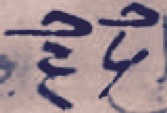 .54 Reversing the order of the terms, we can transcribe them as “
.54 Reversing the order of the terms, we can transcribe them as “
 ” and “
” and “
 ”, respectively. The letter jīm (
”, respectively. The letter jīm ( ) without the dot, for jadhr (“root”), is placed above the 60, 5, and 3 to indicate square root. We have already seen this way of writing gathered numbers – one after the other – several times for distinct fractions, first at 136.8.
) without the dot, for jadhr (“root”), is placed above the 60, 5, and 3 to indicate square root. We have already seen this way of writing gathered numbers – one after the other – several times for distinct fractions, first at 136.8.
Our word “apotome” comes from the Greek word apotomē, meaning “something cut off”, and the Arabic translation is munfaṣil, meaning an amount from which something has been “detached”. Examples are “eight less a root of sixty” and “a root of five less a root of three”. We write these in modern notation as
 and
and
 , but again, our operation of subtraction distorts the premodern idea of a diminished quantity. An apotome was regarded as a single quantity from which something has been removed. The “eight less a root of sixty”, for example, should be thought of as a deficient eight, and not as the subtraction of something from eight. We explain this more thoroughly below at 219.4. Ibn Qunfudh
, but again, our operation of subtraction distorts the premodern idea of a diminished quantity. An apotome was regarded as a single quantity from which something has been removed. The “eight less a root of sixty”, for example, should be thought of as a deficient eight, and not as the subtraction of something from eight. We explain this more thoroughly below at 219.4. Ibn Qunfudh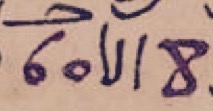 and
and  .55 We transcribe them as
.55 We transcribe them as
 and
and
 . This notation is the same as we have seen for excluded fractions of disconnected type, first at 140.8, and with an image from the Medina manuscript in our commentary at 140.1. Further, Ibn al-Bannāʾ and al-Hawārī use the term munfaṣilat with the meaning of “detached” for the excluded parts of these fractions in the passages at 141.7, 142.6, and 142.10.
. This notation is the same as we have seen for excluded fractions of disconnected type, first at 140.8, and with an image from the Medina manuscript in our commentary at 140.1. Further, Ibn al-Bannāʾ and al-Hawārī use the term munfaṣilat with the meaning of “detached” for the excluded parts of these fractions in the passages at 141.7, 142.6, and 142.10.
Binomials and apotomes are not restricted to the arithmetic of fractions and roots. In algebra, too, the same concepts and notation are behind polynomials. At 183.15, al-Hawārī makes a direct comparison between the quadratic irrationals of this section and algebraic expressions: “The principle behind multiplying appended and deleted terms will be covered in [the chapter on] algebra”.
Euclid’s
Because we will be interspersing the notation for binomials and apotomes with calculations in modern notation, we will express the binomials and apotomes with “
 ” and “
” and “
 ” from now until the end of the section. To transcribe them in notation that better reflects the notation in the texts, omit the “
” from now until the end of the section. To transcribe them in notation that better reflects the notation in the texts, omit the “
 ” and replace the “
” and replace the “
 ” with an “
” with an “
 ”. We write them this way, right-to-left, in the conspectus in Appendix A.
”. We write them this way, right-to-left, in the conspectus in Appendix A.
174.1
In Lifting the Veil, Ibn al-Bannāʾ explains the classification of the six types of binomial and apotome, and al-Hawārī gives examples of each. There are three basic types. Writing the greater term first, in order they are
 ,
,
 , and
, and
 where both
where both
 and
and
 are rational, and where one of these values appears under a root it is not a perfect square. Each of the basic types is divided into two subtypes stemming from a characteristic of its root. Writing the general binomial in modern notation as
are rational, and where one of these values appears under a root it is not a perfect square. Each of the basic types is divided into two subtypes stemming from a characteristic of its root. Writing the general binomial in modern notation as
 , in which
, in which
 and
and
 are both rational,
are both rational,
 , and at most one is a square, al-Hawārī’s rule for calculating
, and at most one is a square, al-Hawārī’s rule for calculating
 at 176.1 can be written as
at 176.1 can be written as

|
A root of the associated apotome,
 , is
, is

|
In one of the two subtypes
 is commensurable with
is commensurable with
 , so the two terms can be combined into a single root. This holds for the first three of the six types of binomial/apotome. In the other subtype the two are incommensurable, and this holds for the last three of the six types.
, so the two terms can be combined into a single root. This holds for the first three of the six types of binomial/apotome. In the other subtype the two are incommensurable, and this holds for the last three of the six types.
Ibn al-Bannāʾ’s classification follows that of Euclid
Just as the digits in a number come in ranks, so do numbers expressed with roots. Two numbers are of the same rank if they are the same “distance” from being rational. Thus
 and
and
 are of the same rank, as are
are of the same rank, as are
 and
and
 and the pair
and the pair
 and
and
 .
.
174.14
Euclid ,
,
 , and
, and
 are positive rational numbers, and numbers under roots are positive non-squares.
are positive rational numbers, and numbers under roots are positive non-squares.
A number is a first binomial if it can be written in the form
 , and a first apotome if it can be written as
, and a first apotome if it can be written as
 . If we let
. If we let
 and
and
 , then the binomial is
, then the binomial is
 and the corresponding apotome is
and the corresponding apotome is
 .
.
A number is a fourth binomial if it can be written in the form
 , where
, where
 is not a perfect square. If
is not a perfect square. If
 and
and
 , then the fourth binomial is
, then the fourth binomial is
 and the associated apotome is
and the associated apotome is
 .
.
A number is a second binomial if it can be written in the form
 . A second apotome can be written in the form
. A second apotome can be written in the form
 . For example, if we let
. For example, if we let
 and
and
 , the binomial is
, the binomial is
 and the associated apotome is
and the associated apotome is
 . Medieval mathematicians would say “a root of forty-five” instead of “three roots of five” because the latter is a collection of three numbers. They preferred the single number
. Medieval mathematicians would say “a root of forty-five” instead of “three roots of five” because the latter is a collection of three numbers. They preferred the single number
 . See below at 179.1 for more on this. Ibn al-Bannāʾ made an error in defining this type by writing “a root of their difference” instead of simply “their difference”.
. See below at 179.1 for more on this. Ibn al-Bannāʾ made an error in defining this type by writing “a root of their difference” instead of simply “their difference”.
Ibn al-Bannāʾ also made an error in defining the fifth binomial. In our notation his description translates into
 . In fact, it should be of the form
. In fact, it should be of the form
 , where
, where
 is incommensurable with
is incommensurable with
 . If we make
. If we make
 and
and
 , the fifth binomial is
, the fifth binomial is
 and the apotome is
and the apotome is
 . Al-Hawārī’s example of the fifth binomial at 177.5 below is correct.
. Al-Hawārī’s example of the fifth binomial at 177.5 below is correct.
A number is a third binomial if it can be written in the form
 . If we let
. If we let
 ,
,
 , and
, and
 , then the third binomial is
, then the third binomial is
 and the associated apotome is
and the associated apotome is
 .
.
A number is a sixth binomial if it can be written in the form
 , and if the two roots are incommensurable. If
, and if the two roots are incommensurable. If
 and
and
 , then the sixth binomial is
, then the sixth binomial is
 and the associated apotome is
and the associated apotome is
 .
.
175.11
Al-Hawārī finds roots of the first binomial
 and its associated apotome
and its associated apotome
 (from
(from
 and
and
 ) by the method given by Ibn al-Bannāʾ at 173.4. We can rewrite this as the modern formula:
) by the method given by Ibn al-Bannāʾ at 173.4. We can rewrite this as the modern formula:

|
For the binomial, he subtracts
 of a square of the smaller (
of a square of the smaller (
 of
of
 is 15) from
is 15) from
 of a square of the greater (
of a square of the greater (
 of
of
 is 16), leaving 1. Its root is 1. This 1 is added to half of the greater term (
is 16), leaving 1. Its root is 1. This 1 is added to half of the greater term (
 of 8 is 4) to get 5, and it is also subtracted from the 4 to get 3. Then
of 8 is 4) to get 5, and it is also subtracted from the 4 to get 3. Then
 is a root of
is a root of
 . He then finds a root of the associated apotome
. He then finds a root of the associated apotome
 by the same procedure to get
by the same procedure to get
 .
.
176.1
To find a root of the first binomial
 (with
(with
 and
and
 ), take the difference of their squares
), take the difference of their squares
 to get 9, and take its root to get 3. Now figure
to get 9, and take its root to get 3. Now figure
 and
and
 , and take their roots. A root of the binomial is then
, and take their roots. A root of the binomial is then
 , and a root of the apotome
, and a root of the apotome
 is
is
 . Euclid
. Euclid
176.10
Next, al-Hawārī finds a root of
 , which is an example of the second binomial (
, which is an example of the second binomial (
 ,
,
 ). Following the same procedure,
). Following the same procedure,
 . Then
. Then
 and
and
 are
are
 and
and
 . (For these steps, al-Hawārī calculated
. (For these steps, al-Hawārī calculated
 and
and
 . Instructions on how to add and subtract roots are given below, starting at 179.1.) So a root of the binomial
. Instructions on how to add and subtract roots are given below, starting at 179.1.) So a root of the binomial
 is
is
 .
.
Euclid and
and
 . They are commensurable in square only because the ratio of their squares,
. They are commensurable in square only because the ratio of their squares,
 , is 7, but their ratio
, is 7, but their ratio
 is
is
 , which is irrational. The two medial numbers contain a rational rectangle because their product,
, which is irrational. The two medial numbers contain a rational rectangle because their product,
 , is rational.
, is rational.
A root of the second apotome
 is
is
 . Euclid
. Euclid , it does not consist of “two names”. Thus it is medial and not bimedial.
, it does not consist of “two names”. Thus it is medial and not bimedial.
176.15
Al-Hawārī’s example of the third binomial is
 (
(
 ,
,
 , and
, and
 ). Its root is
). Its root is
 . This root is called a “second bimedial” in Euclid
. This root is called a “second bimedial” in Euclid and
and
 are commensurable in square only because the ratio of their squares
are commensurable in square only because the ratio of their squares
 is 7, while their ratio is the irrational number
is 7, while their ratio is the irrational number
 . Their product
. Their product
 is
is
 , which is irrational. A “medial area” (i.e., a “medial rectangle”) “is the area which is equal to the square on a medial straight line”.58 In arithmetical terms, the
, which is irrational. A “medial area” (i.e., a “medial rectangle”) “is the area which is equal to the square on a medial straight line”.58 In arithmetical terms, the
 is a medial area because its square root
is a medial area because its square root
 is medial. In arithmetic there is no use for such a designation, because, unlike geometric magnitudes, numbers do not possess dimension. A “medial area” translated to arithmetic becomes simply a number rational in square only, or, in other terms, a number of the form
is medial. In arithmetic there is no use for such a designation, because, unlike geometric magnitudes, numbers do not possess dimension. A “medial area” translated to arithmetic becomes simply a number rational in square only, or, in other terms, a number of the form
 where
where
 is a non-square rational.
is a non-square rational.
A root of the corresponding apotome is
 . Euclid
. Euclid
176.20
Next, al-Hawārī finds a root of
 , which is an example of the fourth binomial (
, which is an example of the fourth binomial (
 ,
,
 ). Following the same procedure he gets
). Following the same procedure he gets
 . Again, following Euclid
. Again, following Euclid is incommensurable in square with
is incommensurable in square with
 because the ratio of their squares,
because the ratio of their squares,
 , is
, is
 , which is irrational. The sum of their squares is 7, which is rational. The rectangle contained by them, or their product, is
, which is irrational. The sum of their squares is 7, which is rational. The rectangle contained by them, or their product, is
 , which is a medial area when interpreted in terms of geometry. The minor is defined similarly for the apotome in Proposition X.76.
, which is a medial area when interpreted in terms of geometry. The minor is defined similarly for the apotome in Proposition X.76.
177.5
The example for the fifth binomial is to find a root of
 (
(
 ,
,
 ). Its root by the same procedure is
). Its root by the same procedure is
 . Euclid
. Euclid . The Arabic translation is quite literal: “[the number whose] power is a rational and a medial”, with the result that term “medial” would be misinterpreted in the arithmetical setting. The number
. The Arabic translation is quite literal: “[the number whose] power is a rational and a medial”, with the result that term “medial” would be misinterpreted in the arithmetical setting. The number
 is rational in square, not medial like its square root.
is rational in square, not medial like its square root.
Euclid “[a straight line] which produces with a rational [area] a medial whole”.61 In our numbers, the root
“[a straight line] which produces with a rational [area] a medial whole”.61 In our numbers, the root
 produces by squaring it the quantity
produces by squaring it the quantity
 which, if one adds back the rational area 3, gives the medial area
which, if one adds back the rational area 3, gives the medial area
 . The Arabic translation describes it as “the joining with a rational to become a whole medial”.
. The Arabic translation describes it as “the joining with a rational to become a whole medial”.
The Greek and Arabic words behind “power” in the descriptions “[the line/number whose] power is a rational and a medial” warrant some explanation. The Greek term is dynaménē, deriving from dynamis, a word meaning “power” or “value”, and in a mathematical setting, “square”. In geometry, a dynamis is a characteristic of a line. One did not make reference to a dynamis directly by naming its opposite vertexes, but rather to a side in respect of dynamis. As Jens Høyrup proposed, a dynamis is “a square identified with its side” or “a line seen under the aspect of a square” (Høyrup 1990, 210). The word often occurs in the dative form, dynámei (“in power”, or “in square”), as we described above at 163.4 for the phrase “rational in square”. Thus, our added words “[the line/number whose]” in the description of the fifth binomial are implied in Euclid’s description.
The forms of the word dynamis in Euclid were translated into Arabic by corresponding forms of quwwa, a word which also means “power”. This word, too, is a characteristic of a side or a number. Gustav Junge and William Thomson, in an appendix to their edition and translation of the medieval Arabic translation of Pappus of Alexandria’s Commentary on Book X of Euclid’s Elements, wrote this of quwwa:
The Dictionary of Technical Terms (Calcutta, A. Sprenger, Vol. II, p. 1230, top.) defines it as “Murabbaʿu-l-Khaṭṭi”, i.e., “the square of the line”, “the square which can be constructed upon the line”, and goes on to say that the mathematicians treat the square of a line as a power of the line, as if it were potential in that line as a special attribute. Al-Ṭūsī (Book X, Introd., p. 225, l. 9.) says: — “The line is a length actually (reading “bi-l-fiʿli” for “bi-l-ʿalqi”)62 and a square (murabbaʿun) potentially (bi-l-quwwati) i.e., it is possible for a square to be described upon it. (Pappus 1930, 181)
So here, too, an Arabic reader familiar with Euclid would have understood the description as meaning “[the number whose] power is a rational and a medial”. But for a young arithmetic student studying al-Hawārī’s book, we guess that the meaning of this description, and of the others, too, would have been obscure, and would have been read as being mere labels.
As a last remark on this passage, al-Hawārī writes the fraction “three fourths” in his calculations of the fourth and sixth binomials and apotomes, but here he writes it in the colloquial way reminiscent of the unit fractions from finger-reckoning as “a half and a fourth”.
177.11
The example for the sixth binomial is
 (
(
 ,
,
 ), and its root is
), and its root is
 . It is called by Euclid
. It is called by Euclid and the
and the
 . The Arabic translation is again literal: “[the number whose] power is a bimedial”. And as before, the word “bimedial” takes a different meaning in an arithmetical context.
. The Arabic translation is again literal: “[the number whose] power is a bimedial”. And as before, the word “bimedial” takes a different meaning in an arithmetical context.
Euclid , “[a straight line] which produces with a medial [area] a medial whole”.64 The root produces by squaring it the apotome
, “[a straight line] which produces with a medial [area] a medial whole”.64 The root produces by squaring it the apotome
 . This is a deficient, or incomplete,
. This is a deficient, or incomplete,
 , so to make it whole we add to it the medial area
, so to make it whole we add to it the medial area
 that it lacks to produce the whole medial area
that it lacks to produce the whole medial area
 . The Arabic translation has “the joining with a medial to become a whole medial”.
. The Arabic translation has “the joining with a medial to become a whole medial”.
179.1 Section I.3.2. Adding and subtracting roots.
Before plunging into the rules and examples for operating on roots, we must clarify some distinctions made in medieval arithmetic that are lost in modern notation. Consider the following:
• A.: Duplicate a root of five three times. (explained at 186.1)
• B.: Three roots of five.
• C.: Multiply three by a root of five. (explained at 183.1)
• D.: A root of forty-five.
While we might translate each of these into
 , all four were conceived of differently in their medieval forms. Both (A) and (C) are operations to be performed, while (B) and (D) are quantities. To “duplicate a root of five three times” in (A) means to collect together three copies of
, all four were conceived of differently in their medieval forms. Both (A) and (C) are operations to be performed, while (B) and (D) are quantities. To “duplicate a root of five three times” in (A) means to collect together three copies of
 . This wording is well-suited for integer multiples, but it cannot work for irrationals. One cannot duplicate a number
. This wording is well-suited for integer multiples, but it cannot work for irrationals. One cannot duplicate a number
 times, for instance. For fractional multiples, al-Hawārī’s wording is different. For them, he “partitions” the root (at 186.8).
times, for instance. For fractional multiples, al-Hawārī’s wording is different. For them, he “partitions” the root (at 186.8).
The immediate and intermediate result of (A), duplicating a root of five three times, is (B), three roots of five. This quantity was not regarded as a single number like our
 . It is a collection of three numbers, all of them
. It is a collection of three numbers, all of them
 . Just as the binomial “eight and a root of fifty-five” is the pair of numbers 8 and
. Just as the binomial “eight and a root of fifty-five” is the pair of numbers 8 and
 gathered together, “three roots of five” is the gathering of
gathered together, “three roots of five” is the gathering of
 ,
,
 , and
, and
 . Likewise, below at 179.20 we will see that “half a root of twenty” was regarded as being “less than one root”, while “two roots of five” are “more than one root”. The “half” and the “two” tell us how many roots there are. They are not the coefficients or scalar multiples that we work with in
. Likewise, below at 179.20 we will see that “half a root of twenty” was regarded as being “less than one root”, while “two roots of five” are “more than one root”. The “half” and the “two” tell us how many roots there are. They are not the coefficients or scalar multiples that we work with in
 and
and
 .
.
Multiples of a root and fractions of a root are routinely converted to whole, single roots before operating on them. To convert “three roots of five” to a single number the 3 is multiplied by the
 . To do this the 3 is squared, and the result is multiplied by 5 to get
. To do this the 3 is squared, and the result is multiplied by 5 to get
 . In other words, one performs (C), and the result is (D). The multiplication in (C) is a different operation from (A). The most evident difference is that (C) allows any number as a multiplier. One can multiply
. In other words, one performs (C), and the result is (D). The multiplication in (C) is a different operation from (A). The most evident difference is that (C) allows any number as a multiplier. One can multiply
 by
by
 , for instance, to get “a root of thirty-five”. The result of the multiplication must be a single root. It cannot be anything like our
, for instance, to get “a root of thirty-five”. The result of the multiplication must be a single root. It cannot be anything like our
 since this symbolic amount, like our
since this symbolic amount, like our
 , has no equivalent in medieval arithmetic.
, has no equivalent in medieval arithmetic.
179.2
We noted above at 176.10 that
 . This is because, as we would work it out,
. This is because, as we would work it out,
 . Ibn al-Bannāʾ gives the rule that two roots can be added or subtracted only if their product is a perfect square. In this example
. Ibn al-Bannāʾ gives the rule that two roots can be added or subtracted only if their product is a perfect square. In this example
 , which is a square of 84. On the other hand,
, which is a square of 84. On the other hand,
 cannot be added to
cannot be added to
 to form a single root because
to form a single root because
 is not a square number.
is not a square number.
179.7
Once it is known that two roots can be added, Ibn al-Bannāʾ gives a rule for finding their sum. Al-Hawārī first applies it to the example of adding
 to
to
 . Here
. Here
 is a square, so the roots can be added. Two roots of 81 are 18, and this is added to
is a square, so the roots can be added. Two roots of 81 are 18, and this is added to
 to get
to get
 . Then
. Then
 . In modern notation,
. In modern notation,
 .
.
This rule is found in many arithmetic and algebra books, extending back to the Book on Algebra of Abū Kāmil
179.11
Al-Hawārī gives a second method of finding the sum. Using the same example he calculates
 (division of roots is explained below, at 187.2), and he adds 1 to get 4. This 4 is then multiplied by the
(division of roots is explained below, at 187.2), and he adds 1 to get 4. This 4 is then multiplied by the
 to get
to get
 . The same procedure works if we reverse the roles of 3 and 27. In modern notation,
. The same procedure works if we reverse the roles of 3 and 27. In modern notation,
 .
.
179.16
Another example: add
 to
to
 to get
to get
 .
.
179.20
Al-Hawārī borrows his problem “add half a root of twenty to two roots of five” from Ibn al-Bannāʾ’s algebra book, where it is solved the same way.65 In his explanation al-Hawārī notes that “half a root of twenty is less than one root”, so he transforms it to one root, which is
 . (The verb behind “transform” here, and elsewhere in our translation, is radda, which ordinarily means “to return”, or “to send back”.) At this point, al-Hawārī could add this to the two roots of five to get three roots of five, which would lead to
. (The verb behind “transform” here, and elsewhere in our translation, is radda, which ordinarily means “to return”, or “to send back”.) At this point, al-Hawārī could add this to the two roots of five to get three roots of five, which would lead to
 . But his goal is to illustrate the technique of forming single roots from fractions and multiples of roots, so he continues: “And two roots of five are more than one root, so we transform them to one root”, which is
. But his goal is to illustrate the technique of forming single roots from fractions and multiples of roots, so he continues: “And two roots of five are more than one root, so we transform them to one root”, which is
 . Then the problem is the same as adding
. Then the problem is the same as adding
 to
to
 . This is worked out by the rule at 179.7 to get
. This is worked out by the rule at 179.7 to get
 .
.
180.6 Al-Hawārī, or more likely Ibn al-Bannāʾ, speaks here about adding roots of different ranks, like adding a root to a root of a root (i.e., to a fourth root). The square root must be made into a root of a root before adding. But there is no nice rule to tell if two fourth roots can be added to get a single fourth root. Al-Hawārī seems to think that the rule for square roots works here too, for he writes below, in the passage at 180.15, that “their surface is likewise not a square, so we add them with the coordinating conjunction”, where this conjunction is the word “and”.
180.10
If the roots cannot be added, then one puts the word “and” between them. The example is to add
 to
to
 . Since
. Since
 is not a perfect square, we cannot write them as a single root. Their sum is thus expressed as the binomial “a root of three and a root of fifteen”. The “and” (wa) does not mean “plus”. See the discussion at 219.1 below. Also, “their surface” is their product. See our comments at 66.17 above.
is not a perfect square, we cannot write them as a single root. Their sum is thus expressed as the binomial “a root of three and a root of fifteen”. The “and” (wa) does not mean “plus”. See the discussion at 219.1 below. Also, “their surface” is their product. See our comments at 66.17 above.
180.15
Here al-Hawārī asks for the sum of
 of
of
 and
and
 of
of
 , where the
, where the
 is “a third of a fourth”. First, the
is “a third of a fourth”. First, the
 of
of
 is “a root of a root of five” (
is “a root of a root of five” (
 ), and the
), and the
 of
of
 is “a root of four and three fourths” (
is “a root of four and three fourths” (
 ). To add them we make them the same rank, so we write
). To add them we make them the same rank, so we write
 as
as
 by squaring the
by squaring the
 . As we just mentioned, the rule al-Hawārī seems to apply to determine if the two can be added does not work. The sum of the roots is expressed as “a root of a root of five and a root of a root of twenty-two and four eighths and half an eighth” (
. As we just mentioned, the rule al-Hawārī seems to apply to determine if the two can be added does not work. The sum of the roots is expressed as “a root of a root of five and a root of a root of twenty-two and four eighths and half an eighth” (
 ).
).
181.4
The first rule for subtracting roots is similar to the first rule for adding roots. Al-Hawārī subtracts
 from
from
 by first multiplying
by first multiplying
 , taking its root to get 16, and doubling it to get 32. This is subtracted from the sum of the two numbers
, taking its root to get 16, and doubling it to get 32. This is subtracted from the sum of the two numbers
 , leaving 8. The difference of the roots is then
, leaving 8. The difference of the roots is then
 . In modern notation,
. In modern notation,
 .
.
181.10
The second rule for subtracting roots is like the second rule for adding them. Al-Hawārī’s example is to subtract
 from
from
 . He divides
. He divides
 by
by
 to get
to get
 (division of roots is explained below, at 187.2). Subtracting 1 leaves
(division of roots is explained below, at 187.2). Subtracting 1 leaves
 . Multiplying this by
. Multiplying this by
 , the divisor, gives
, the divisor, gives
 , which is the answer. In modern notation,
, which is the answer. In modern notation,
 .
.
182.1 Ibn al-Bannāʾ again mentions that if the roots are less than one root or more than one root, they must be returned to one root, like in the addition problem above at 179.20. And if their ranks are different they must be made the same, as above at 180.15.
182.4
Here al-Hawārī gives examples in which the roots cannot be subtracted. For example, subtracting
 from
from
 can only be expressed as “a root of ten less a root of eight”. The “less” (illā) does not mean “minus”. See below at 219.4.
can only be expressed as “a root of ten less a root of eight”. The “less” (illā) does not mean “minus”. See below at 219.4.
183.1 Section I.3.2. Multiplying roots.
183.4
Although we have not found any Arabic book that characterizes the multiplication of irrational roots in a way like Ibn al-Bannāʾ did for the multiplication of whole numbers (95.2) and fractions (149.2), the basic rule was well known. In the latter ninth century Abū Kāmil by
by
 . The answer is a root of the product of the numbers,
. The answer is a root of the product of the numbers,
 .
.
183.7
Next, al-Hawārī multiplies
 by
by
 . Since the roots are of the same rank (both are roots of roots), again he multiplies the numbers and applies the roots. The answer is
. Since the roots are of the same rank (both are roots of roots), again he multiplies the numbers and applies the roots. The answer is
 . The next example, at 183.11, is
. The next example, at 183.11, is
 .
.
183.15
Here al-Hawārī multiplies 3 by the apotome
 . He distributes just the way we would, first multiplying the 3 by
. He distributes just the way we would, first multiplying the 3 by
 to get
to get
 , then the 3 by 2 to get 6. The answer is
, then the 3 by 2 to get 6. The answer is
 .
.
183.20
Ibn al-Bannāʾ gives the rule for multiplying a rational number by a root that al-Hawārī has already applied above in the calculations at 179.20, 180.15, 181.12, and 183.15. The first example is to multiply 3 by
 , which he had just done as part of the previous problem. Al-Hawārī calculates
, which he had just done as part of the previous problem. Al-Hawārī calculates
 , and
, and
 , so the answer is
, so the answer is
 . He then continues through 185.12 with examples of multiplying numbers by multiples and fractions of roots. After that, starting at 186.1, he will duplicate and partition roots.
. He then continues through 185.12 with examples of multiplying numbers by multiples and fractions of roots. After that, starting at 186.1, he will duplicate and partition roots.
184.4
Next, to find
 , he finds
, he finds
 ,
,
 , and
, and
 , so the answer is
, so the answer is
 .
.
184.11
To multiply 2 by two roots of 7 is like multiplying the 2 by a pair of
 s. The two
s. The two
 s must be turned into a single root first, and together they are
s must be turned into a single root first, and together they are
 . Now the 2 can be squared and multiplied by 28 to get the answer, which is
. Now the 2 can be squared and multiplied by 28 to get the answer, which is
 .
.
184.18
Similarly, to multiply 5 by three roots of a root of 2 is like multiplying 5 by three
 s. The three roots together are
s. The three roots together are
 , and multiplying the 162 by a square of a square of 5, which is 625, gives the answer
, and multiplying the 162 by a square of a square of 5, which is 625, gives the answer
 .
.
185.6
Al-Hawārī multiplies
 by half of
by half of
 . The latter is the same as
. The latter is the same as
 , so the
, so the
 is squared to give
is squared to give
 , and this is multiplied by the 5, resulting in
, and this is multiplied by the 5, resulting in
 .
.
185.12
To multiply
 by half of
by half of
 one first turns the half into a whole by squaring the
one first turns the half into a whole by squaring the
 to get
to get
 , and then squaring this to get
, and then squaring this to get
 , and then multiplying it by the 40 to get
, and then multiplying it by the 40 to get
 . Also, the
. Also, the
 must be converted into a root of a root, and this is
must be converted into a root of a root, and this is
 . Multiplying
. Multiplying
 by 25 gives
by 25 gives
 , so the answer is
, so the answer is
 .
.
186.1
To duplicate a root means to collect together copies of it. In the second of two examples, to duplicate
 five times means to gather five
five times means to gather five
 s into a single root. This is done by multiplying 5 by
s into a single root. This is done by multiplying 5 by
 . The answer is
. The answer is
 .
.
186.8
The same works for partitioning a root, which means to take a fraction of a root. Half a root of ten is found by multiplying
 by
by
 . Likewise, a third of four eighths of
. Likewise, a third of four eighths of
 is found by multiplying the fraction by the root.
is found by multiplying the fraction by the root.
187.1 Section I.3.2. Dividing and denominating roots.
187.2
Dividing or denominating a root by a root follows the same general rules as multiplying roots. Al-Hawārī begins by dividing
 by
by
 . First he finds
. First he finds
 , then he takes its root to get
, then he takes its root to get
 . The next example works the same way. Al-Hawārī wrote at 187.7 and at 187.14 “divide” where he should have written “denominate”.
. The next example works the same way. Al-Hawārī wrote at 187.7 and at 187.14 “divide” where he should have written “denominate”.
187.10
To divide
 by
by
 , divide the 6 by 2 to get 3, then apply the roots to get
, divide the 6 by 2 to get 3, then apply the roots to get
 . The next example, dividing
. The next example, dividing
 by
by
 , works the same way.
, works the same way.
188.1
One should only perform a division with single roots, so multiples and fractions of a root must first be converted to single roots. Also, the ranks of the roots of the dividend and divisor must be the same. We mentioned above at 134.2 that there are no medieval counterparts to fractions with irrational numbers, like our
 and
and
 , but one can perform the divisions. To divide 1 by
, but one can perform the divisions. To divide 1 by
 the ranks should be made equal, so 1 is converted to
the ranks should be made equal, so 1 is converted to
 . Then 1 is divided by 2 to get
. Then 1 is divided by 2 to get
 , and finally a root is applied to get
, and finally a root is applied to get
 . Here,
. Here,
 is valid as a fraction, and a root can be taken of any number. To divide
is valid as a fraction, and a root can be taken of any number. To divide
 by 2 one follows the same rule by first rewriting the 2 as
by 2 one follows the same rule by first rewriting the 2 as
 , to again get
, to again get
 .
.
188.6
To divide
 by
by
 , the
, the
 has to be written as
has to be written as
 . Then
. Then
 , so the answer is
, so the answer is
 .
.
188.11
Dividing two
 s by 2 should be trivial – one simply gets a single
s by 2 should be trivial – one simply gets a single
 . But al-Hawārī illustrates the general rule by converting the two roots into a single root and then dividing the result by 2. The two roots together are
. But al-Hawārī illustrates the general rule by converting the two roots into a single root and then dividing the result by 2. The two roots together are
 , and the 2 as a root is
, and the 2 as a root is
 . Then
. Then
 , so the answer is
, so the answer is
 . The next example, dividing half of
. The next example, dividing half of
 by
by
 , works similarly.
, works similarly.
188.18
To divide a quantity by a binomial or an apotome one multiplies both amounts by the conjugate to eliminate the square root. Al-Hawārī’s first example is to divide 12 by the binomial
 . He multiplies the 12 by the apotome
. He multiplies the 12 by the apotome
 to get
to get
 . Then he multiplies
. Then he multiplies
 by
by
 to get 22. Dividing the
to get 22. Dividing the
 by 22 results in
by 22 results in
 . We would write this as
. We would write this as
 , or
, or
 , or even
, or even
 . Restating the latter two rhetorically would result in improperly expressed amounts. These only became possible with Descartes
. Restating the latter two rhetorically would result in improperly expressed amounts. These only became possible with Descartes
Dividing 10 by
 is done the same way. The numerator and denominator are multiplied by the binomial
is done the same way. The numerator and denominator are multiplied by the binomial
 , which leads to the answer
, which leads to the answer
 .
.
191.1 Part II. On the rules by which one arrives at knowledge of the required unknown from the posited known.
Ibn al-Bannāʾ covers three problem-solving methods in Part II: the rule of three, double false position, and algebra. Ibn al-Bannāʾ and other Arabic authors call the first of these “the four proportional numbers”. It is often applied directly to solve a problem, and it is also the core of the method we call single false position. In that method, a convenient value is chosen for the answer (the false posited value, or position), and the true value is found via proportion by a calculation on the posited value and its error. Ibn al-Bannāʾ does not cover single false position in his Condensed Book.
Double false position was called the method of “the two errors” (al-khaṭaʾān). Like other arithmeticians in the Maghreb, Ibn al-Bannāʾ calls it the method of “scales” (kiffāt) because of the shape of the diagram drawn to work out the problems. In this method, two false values are posited for the answer, and the true value is found by a calculation involving the values and their respective errors. This method relies on proportion, so it is covered along with the rule of three in Chapter II.1.
Algebra is covered in Chapter II.2. The Arabic name for algebra is al-jabr wa-l-muqābala, meaning “restoration and confrontation”, or sometimes al-jabr for short. This is the origin of our word “algebra”. In an algebraic solution, an unknown is named in terms of designated names of the powers of the unknown, and an equation is set up in terms of these names and solved. In the other methods the calculations are worked out on known numbers, and without equations.
Ibn al-Bannāʾ and al-Hawārī explain the rules for each of the three methods, but they give sample problems only for double false position. We give examples translated from other books of the four proportional numbers, single false position, and algebra in Appendix B.
193.1 Chapter II.1. Working out [problems] with proportion.
The Arabic word for mathematical “ratio” is nisba. This word is also used in non-mathematical settings to mean any kind of relation between two objects, and even kinship between people. Nisba is also the Arabic word for “proportion”. The two meanings can be distinguished by the context.
195.2 Ibn al-Bannāʾ lists the following kinds of proportion in Lifting the Veil:68
(1)Geometric. This is the usual proportion involving four numbers
 ,
,
 ,
,
 , and
, and
 in which the ratio
in which the ratio
 is equal to the ratio
is equal to the ratio
 , or, in notation,
, or, in notation,
 . Numerically, it is equivalent to
. Numerically, it is equivalent to
 .
.
(2)Arithmetic. “The difference between the first and the second is equal to the difference between the third and the fourth”.69 The four numbers
 ,
,
 ,
,
 , and
, and
 are in arithmetic proportion if
are in arithmetic proportion if
 .
.
(3)Harmonic. Ibn al-Bannāʾ writes “For three numbers, the ratio of the extremes is as the ratio of the two differences between the middle and each one of the extremes. This ratio is composed of the geometric and the arithmetic, since, on the one hand, it comes from the difference between the middle and each one of the extremes, resembling the arithmetic, and, on the other, from proportionality, resembling the geometric”.70 Three (descending) numbers
 ,
,
 , and
, and
 are in harmonic proportion if
are in harmonic proportion if
 . Ibn al-Bannāʾ gives his source for the definition as Nicomachus’s
. Ibn al-Bannāʾ gives his source for the definition as Nicomachus’s
(4)Ex-aequali. Given two sets of numbers
 and
and
 , if
, if
 for each
for each
 , then
, then
 . Although this reads like a proposition, it is presented as Definition V.17 in Euclid’s
. Although this reads like a proposition, it is presented as Definition V.17 in Euclid’s
(5)Harmony. This one comes from Nicomachus, ,
,
 ,
,
 , and
, and
 . See Nicomachus’s Introduction, Chapter II.29 for the different properties it satisfies.
. See Nicomachus’s Introduction, Chapter II.29 for the different properties it satisfies.
As Nicomachus
In his list at 195.2 al-Hawārī omits geometric proportion, and he switches the order of the last two. Apparently he omitted geometric proportion by mistake. Not only does he dispense with all four proportions from his list in this passage, and then follow Ibn al-Bannāʾ by discussing geometric proportion, but the omission causes a misreading. Ibn al-Bannāʾ writes “[the] origin of these last three proportions is the first, which is in the four numbers mentioned in the book”.74 By leaving off geometric proportion al-Hawārī’s paraphrase “all three derive from it and it does not derive from them” implies that the last three derive from arithmetic proportion instead of geometric proportion.
195.7 The four proportional numbers.
Ibn al-Bannāʾ focuses on geometric proportion for the rest of this chapter. Four numbers,
 ,
,
 ,
,
 , and
, and
 , are proportional if
, are proportional if
 , or, equivalently, if
, or, equivalently, if
 .
.
195.9
Whenever three of the numbers are known, the fourth can be found. Continuing with modern notation, suppose we want to find
 in the proportion
in the proportion
 or
or
 .
.
195.14
In
 , the
, the
 and
and
 are of the same kind because they have the same positions in their respective ratios. Likewise,
are of the same kind because they have the same positions in their respective ratios. Likewise,
 and
and
 are of the same kind. The number
are of the same kind. The number
 is isolated because it is not of the same kind as either of the other two known numbers. This is multiplied by
is isolated because it is not of the same kind as either of the other two known numbers. This is multiplied by
 , the number in ratio with
, the number in ratio with
 . The product is then divided by the third number
. The product is then divided by the third number
 to give the value of
to give the value of
 .
.
195.16
Al-Hawārī gives examples of this rule for the proportion
 , treating each number in turn as the unknown and finding it from the other three by the rule.
, treating each number in turn as the unknown and finding it from the other three by the rule.
196.16
A proportion can be converted to a number of other proportions. The four types mentioned by Ibn al-Bannāʾ are taken in order from Definitions V.12 through V.15 in Euclid’s , then the following proportions also hold:
, then the following proportions also hold:
Switching (badala):
 .
.
In Elements Def. V.12 Heath translates this as “alternate ratio”.
Reversing (khalafa):
 .
.
In Elements Def. V.13 Heath translates this as “inverse ratio”.
Combining (rakiba):
 or
or
 .
.
In Elements Def. V.14 Heath translates this as “composition of a ratio”.
Separating (faṣala):
 or
or
 .
.
In Elements Def. V.15 Heath translates this as “separation of a ratio”.
One can also combine two or more of these operations. For example, combining after switching gives
 . Euclid
. Euclid , presuming
, presuming
 and
and
 . But this can be obtained by reversing after separating, which may be why Ibn al-Bannāʾ did not include it.
. But this can be obtained by reversing after separating, which may be why Ibn al-Bannāʾ did not include it.
Al-Hawārī may have chosen to copy this passage from Lifting the Veil because, as he mentions below at 198.4, one can derive the rule for double false position from a known proportion by switching, separating, and then switching again.
197.4 Al-Hawārī gives variations on Ibn al-Bannāʾ’s rule at 195.9 that switch the order of operations. The jurist mentioned at the end of this passage is otherwise unknown.
198.2 The method of scales (double false position)
The method of “scales”, or double false position, “comes from the art of geometry” because of its use in geometric proportion. The method is in fact purely numerical. In another part of Lifting the Veil, Ibn al-Bannāʾ explains the term “geometric proportion”: “It is said to be geometric proportion because it is more specific to the quantities that are considered in geometry”.75
Double false position works for problems in which the operations on the unknown described in the enunciation give a number proportional to the unknown. Sometimes a problem can be adjusted to satisfy this condition (our authors do not do this), and other times, as we shall see starting at 201.14, the method itself can be adjusted.
198.4
Al-Hawārī mentions that the proportion just stated by Ibn al-Bannāʾ is found by switching, separating, and then switching a known proportion. We explain this in terms of the specific numbers in the problem below at 199.1, so read that first and then come back here. The “first scale”, or the first posited value, is 15. The calculated “portion” is the result of performing the operations on the 15, and this is
 . The “assigned number” is the 10, and the value of the unknown is found at the end to be 24.
. The “assigned number” is the 10, and the value of the unknown is found at the end to be 24.
We begin with the ratio stated by Ibn al-Bannāʾ, “the ratio of the error of each scale to the difference between the scale and the unknown number is as the ratio of the assigned number to the unknown”:

|
Switching gives

|
Separating gives

|
Switching again gives

|
This is now “the ratio of the portion to its scale is as the ratio of the assigned number to the unknown”, which al-Hawārī took from Lifting the Veil.
From here, Ibn al-Bannāʾ continues in Lifting the Veil to derive the rule for solving problems by double false position, though al-Hawārī does not copy it into his book. Like all his derivations/proofs, Ibn al-Bannāʾ expresses the steps in arithmetical terms, without the use of algebra. In other words, he does not name any of the quantities and then manipulate the subsequent algebraic expressions. For example, he says “so the two results from multiplying each error by the excess of the other scale are equal”,76 where by contrast we would name the unknown as, say,
 , the two posited values or scales as
, the two posited values or scales as
 ,
,
 , and their respective errors as
, and their respective errors as
 , and then write
, and then write
 . The names of the powers of the unknown in premodern algebra were generally not used outside the context of algebraic problem-solving, and Ibn al-Bannāʾ’s derivation is not an exception. We leave it to the reader to take our last equation and solve for
. The names of the powers of the unknown in premodern algebra were generally not used outside the context of algebraic problem-solving, and Ibn al-Bannāʾ’s derivation is not an exception. We leave it to the reader to take our last equation and solve for
 to find a modern rendering of the procedure.
to find a modern rendering of the procedure.
198.7 Double false position is worked out with a diagram, shown below. It has the shape of a balance, or “scales”.
199.1 Al-Hawārī’s first problem is: “A quantity: taking away its third and its fourth leaves ten. How much is the quantity?” See our commentary below at 211.8 for the different meanings of the word māl, translated here as “quantity”, in Arabic arithmetic.
The first step is to draw the scales and put the assigned number above the dome:
This method calls for two values to be posited. Al-Hawārī makes the first value 15. This is placed in the right scale like this:
The operations are then performed on the posited value: subtracting 5 (a third of 15) and
 (a fourth of 15) from the 15 leaves
(a fourth of 15) from the 15 leaves
 . This is placed next to the 15, inside the balance:
. This is placed next to the 15, inside the balance:
We confront this
 with the desired 10, and we find that it falls short by an error of
with the desired 10, and we find that it falls short by an error of
 . Because it falls short, it is written below the scale:
. Because it falls short, it is written below the scale:
Al-Hawārī then chooses 12 for the second value. He follows the same process, this time putting the numbers in the left scale. The 12 is written in, then the calculations are made: subtracting 4 (a third of 12) and 3 (a fourth of 12) from the 12 leaves 5. Confronting this 5 with the desired 10, we find that it falls short by 5. The second error, 5, is likewise written below the scale:
Now we are ready to calculate the value of the unknown. First, each posited value is multiplied by the other error, and their difference is taken. Multiplying the 15 by 5 gives 75, and
 by 12 gives 45. Their difference is 30. This is divided by the difference between the two errors, which is
by 12 gives 45. Their difference is 30. This is divided by the difference between the two errors, which is
 . The result is 24, which is the answer.
. The result is 24, which is the answer.
200.1
The next example is: “A quantity: we take the sum of its third and its fifth, and we add to it half of the remainder, so it comes to twenty-three”. To explain what is meant by “the remainder”, we resort to modern algebraic notation. If we name the quantity
 , then its third and its fifth are
, then its third and its fifth are
 . The remainder is what we get after subtracting this from the quantity, so let
. The remainder is what we get after subtracting this from the quantity, so let
 . We could then express the enunciation as the equation
. We could then express the enunciation as the equation
 , but of course this is not how our author proceeds with his solution.
, but of course this is not how our author proceeds with his solution.
Al-Hawārī chooses 40 for the first value. Adding its third and its fifth gives
 . The remainder from 40 is then
. The remainder from 40 is then
 . Adding to the
. Adding to the
 half the remainder, or
half the remainder, or
 , gives
, gives
 . This
. This
 is not the 23 we want. Since the calculated number this time exceeds the desired amount, we put the error
is not the 23 we want. Since the calculated number this time exceeds the desired amount, we put the error
 above the scale.
above the scale.
Next, al-Hawārī tries 45. Taking its third and its fifth and adding half the remainder gives
 , so the error is
, so the error is
 . Since the
. Since the
 is greater than the desired 23, the error is again put above the scale:
is greater than the desired 23, the error is again put above the scale:
The same procedure is followed as in the last example. He calculates
 and
and
 . Subtracting the smaller from the greater leaves 115. This is divided by the difference between the errors, which is
. Subtracting the smaller from the greater leaves 115. This is divided by the difference between the errors, which is
 , to get 30, which is the unknown quantity.
, to get 30, which is the unknown quantity.
201.1
In the third example, al-Hawārī illustrates the case in which one value gives a result that falls short of the desired number and the other gives a result that exceeds it. The problem is to find a quantity such that if “we add its tenth to the difference between its fourth and three of its fifths
 it comes to nine”. We resort again to modern algebra to clarify what is being asked. If we call the quantity
it comes to nine”. We resort again to modern algebra to clarify what is being asked. If we call the quantity
 and perform the operations, we get the equation
and perform the operations, we get the equation
 . Again, there is no algebra in the enunciation, and algebra plays no role in the solution.
. Again, there is no algebra in the enunciation, and algebra plays no role in the solution.
The first posited value is 12, and the result of the operations is
 . This falls short of the desired 9 by
. This falls short of the desired 9 by
 . The second posited value is 25. The result of the operations is
. The second posited value is 25. The result of the operations is
 , which exceeds the desired 9 by
, which exceeds the desired 9 by
 . The two errors are placed below and above the scale like this:
. The two errors are placed below and above the scale like this:
Again we perform the two multiplications, but this time we add the results rather than subtract them, since one error is above the scale and the other is below. So
 and
and
 . Their sum is 117, and this is divided by the sum of the errors, which is
. Their sum is 117, and this is divided by the sum of the errors, which is
 , which for us would be
, which for us would be
 . The result of the division is 20, which is the unknown quantity.
. The result of the division is 20, which is the unknown quantity.
Al-Hawārī has now covered three cases: (a) both calculated portions fall short of the desired number, (b) both exceed it, and (c) one falls short and the other exceeds. We can, if we want, write a single formula to cover all three cases because our arithmetic allows for negative numbers.
201.14 Ibn al-Bannāʾ gives a second method of working with scales. The diagram and values are drawn as described above, but the calculations are now asymmetric with respect to the scales, so that it works even when the same value is posited for both scales (as in the example at 203.1). With only one error, it functions more like a complicated version of single false position. The asymmetry also opens it up to problems in which only one posited value and its error are given, but not the number above the dome! The example for this is given at 203.11.
“This second method is used only when there is a proportional relation”, as al-Hawārī writes at 202.3. He means that in cases where two or more values are placed in each scale, they must be chosen proportionally according to the conditions of the problem. This method, in fact, will also work where there is only one value placed in each scale, like the three examples given above.
202.3
The first example is “ten: you divide it into two parts so that a third of one of them is a fourth of the other”. The enunciation of this problem copies word-for-word the first problem in Ibn al-Bannāʾ’s algebra book.77 There, of course, it is solved by algebra, with the naming of one of the parts as “a thing”, which plays the role of our
 . It is easier for us to understand what is being asked in the enunciation by converting it to modern algebra: If we name the parts
. It is easier for us to understand what is being asked in the enunciation by converting it to modern algebra: If we name the parts
 and
and
 , then
, then
 and
and
 . This second condition is equivalent to saying that the ratio of one part to the other is as the ratio of 3 to 4.
. This second condition is equivalent to saying that the ratio of one part to the other is as the ratio of 3 to 4.
No naming occurs in double false position. The first step in al-Hawārī’s solution is to put the 10 above the dome, and then to pick two numbers so that a third of one is a fourth of the other. He picks 3 and 4. They are placed in the right scale, with the 3 above the 4. Their sum is 7, and this is placed next to them. Confronting 7 with 10, we see that it falls short by 3, so a 3 is put below the scale. Next, 6 and 8 are posited for the second two numbers. Their sum is 14, which exceeds the 10 by 4. The completed diagram looks like this:
The rule for finding the answer will seem kind of bizarre. Al-Hawārī multiplies the 6 on the left by the error 3 on the right to get 18. Then he multiplies the 14 on the left by the 3 on the right, above the 4, to get 42. Because the first error is below the scale (whether the second error is above or below does not matter), he adds them to get 60. Dividing this by the 14 gives
 , which is the smaller number, and the greater is
, which is the smaller number, and the greater is
 . We leave it as an exercise for the reader to show with modern algebra, or by geometry if you want, that this method works.
. We leave it as an exercise for the reader to show with modern algebra, or by geometry if you want, that this method works.
203.1
Because of the asymmetry of the calculations, one can work with the same value twice rather than pick a different one. In this next example, al-Hawārī solves “ten: you divide it into two parts. You divide the greater by the smaller, so the result is four”. This time the ratio of the parts is 4 instead of
 . He picks as his first values the numbers 3 and 12. Their sum is 15, which exceeds the 10 by 5. So a 5 is put above the scale. With the same numbers on both sides, the diagram looks like this:
. He picks as his first values the numbers 3 and 12. Their sum is 15, which exceeds the 10 by 5. So a 5 is put above the scale. With the same numbers on both sides, the diagram looks like this:
Now the 3 on the left is multiplied by the error 5 on the right to get 15, and the 15 on the left multiplied by the 3 on the right make 45. We take their difference because the error is above the scale. So
 . We divide this by the 15 to get 2, which is the smaller part, and the greater part is 8.
. We divide this by the 15 to get 2, which is the smaller part, and the greater part is 8.
203.11
Ibn al-Bannāʾ writes that this second method will also work when only one of the posited values and its error are given in the problem. He gives the example “a quantity: we subtract its third and its fourth from a third of sixty and its fourth, leaving fourteen”. If we call the unknown
 , this would yield the equation
, this would yield the equation
 . This derives from the problem “A quantity: you added its third and its fourth, so it gave
. This derives from the problem “A quantity: you added its third and its fourth, so it gave
 some number
some number
 ”. We can think of 14 as the error for the posited value 60. Pick another number for the second value, like 72, add its third and its fourth to get 42, and fill out the diagram:
”. We can think of 14 as the error for the posited value 60. Pick another number for the second value, like 72, add its third and its fourth to get 42, and fill out the diagram:
Since the error 14 exceeds, we calculate
 , and we divide this by the 42 to get 36, which is the answer. The number above the dome would have been 21, but we were not asked to find that.
, and we divide this by the 42 to get 36, which is the answer. The number above the dome would have been 21, but we were not asked to find that.
204.3 Ibn al-Bannāʾ dictated three alternatives to the basic rule of double false position illustrated in the examples above at 199.1, 200.1, and 201.1. These explanations would have been better placed just after those examples. Al-Hawārī does not give examples of these alternatives, so we give here the calculations from his previous examples. The diagrams are the same.
204.6
For the example at 199.1, the difference between (the numbers in) the scales is
 . Multiplying this by one of the errors, 5, gives 15. Dividing this by the difference between the errors, or
. Multiplying this by one of the errors, 5, gives 15. Dividing this by the difference between the errors, or
 , gives 12. Adding to this the 12 in the scale associated with the error 5 gives 24, which is the answer.
, gives 12. Adding to this the 12 in the scale associated with the error 5 gives 24, which is the answer.
For the example at 200.1, we calculate
 , then
, then
 . This is divided by
. This is divided by
 to get 15. Subtracting this from the 45 gives 30, which is the answer.
to get 15. Subtracting this from the 45 gives 30, which is the answer.
For the example at 201.1, we calculate
 , then
, then
 . Dividing this by
. Dividing this by
 gives
gives
 . Subtracting this from the 25 gives 20, which is the answer.
. Subtracting this from the 25 gives 20, which is the answer.
204.12 The calculations for these same three examples by the second alternative are as follows:
For 199.1:
 ;
;
 . Multiplying them,
. Multiplying them,
 ;
;
 . Keep this in mind. One option is:
. Keep this in mind. One option is:
 ; its half is 12, and adding the 12 in the scale gives the answer 24. The other option is:
; its half is 12, and adding the 12 in the scale gives the answer 24. The other option is:
 ; its half is 9, and
; its half is 9, and
 .
.
For 200.1:
 ;
;
 . Multiplying them,
. Multiplying them,
 ;
;
 . Keep this in mind. One option is:
. Keep this in mind. One option is:
 , its half is 15, and
, its half is 15, and
 is the answer. The other option is:
is the answer. The other option is:
 , its half is 10, and
, its half is 10, and
 .
.
For 201.1:
 ;
;
 . Multiplying them,
. Multiplying them,
 ,
,
 . Keep this in mind. One option is:
. Keep this in mind. One option is:
 , its half is 8, and
, its half is 8, and
 , which is the answer. The other option is:
, which is the answer. The other option is:
 , its half is 5, and
, its half is 5, and
 .
.
205.1 The calculations for these examples by the third alternative are as follows:
For 199.1:
 ;
;
 ;
;
 , which is the answer.
, which is the answer.
For 200.1:
 ;
;
 ;
;
 , which is the answer.
, which is the answer.
For 201.1:
 ;
;
 ;
;
 , which is the answer.
, which is the answer.
205.5 If an indeterminate problem does not restrict any number to a particular class such as squares or cubes, then to be non-trivial it must give conditions on at least three unknown numbers. In a solution by scales one of these numbers can reside above the dome, so there will be at least two values in each scale. Unlike problems with a proportional relation, two of these values can be chosen independent of each other. Thus the first method must be used.
This first indeterminate problem is of a common type in Arabic and later Latin and Hebrew arithmetic, and it is found in abstract form in Diophantus
Because the problem is indeterminate, any number can be chosen for the first man, i.e., the amount of money the first man has. Ibn al-Bannāʾ chooses 4 dirhams. He then first posits 2 dirhams for the second man. From these two numbers the price of the horse and the money of the third are found, 5 and 9 respectively. The 4, 2, and 9 are placed in the first scale, and the 5 is put above the dome. In the second scale the first man is given 4 again, and the value for the second man is posited as 6 dirhams. Then the price of the horse is calculated from the last condition as 7, so the third man must have 3 dirhams. The 4, 6, and 3 are placed in the second scale, and the 7 is placed above the dome.
The price of the horse is then calculated a second time from the last condition. For the right scale, the horse costs
 , which exceeds the calculated 5 by 5, so a 5 is put above the scale. In the left scale, the same condition gives the price of the horse as 4 dirhams, which is 3 less than the calculated 7, so the error of 3 is placed below the scale. Here is the diagram:
, which exceeds the calculated 5 by 5, so a 5 is put above the scale. In the left scale, the same condition gives the price of the horse as 4 dirhams, which is 3 less than the calculated 7, so the error of 3 is placed below the scale. Here is the diagram:
Now the money of each man can be calculated using the rule from the first method. The first man has 4 dirhams, as we decided in advance. The second man’s money is found by the calculation
 , divided by
, divided by
 , giving
, giving
 dirhams. The third man’s money is found the same way:
dirhams. The third man’s money is found the same way:
 , and dividing by the same 8 gives
, and dividing by the same 8 gives
 dirhams. By the first condition, the price of the horse is
dirhams. By the first condition, the price of the horse is
 dirhams.
dirhams.
Ibn al-Bannāʾ does not prove in Lifting the Veil that this variation with two numbers above the dome works. He could have derived it through a manipulation of proportions as he did for the standard version of the method, or he could have followed Qusṭā ibn Lūqā , then the problem is equivalent to finding
, then the problem is equivalent to finding
 where the price of the horse can be written two ways, each of them of the form
where the price of the horse can be written two ways, each of them of the form
 . In our problem, these are
. In our problem, these are
 and
and
 . When Ibn al-Bannāʾ calculates the values for the horse to put above the dome he gets the same values we get by plugging his numbers into
. When Ibn al-Bannāʾ calculates the values for the horse to put above the dome he gets the same values we get by plugging his numbers into
 . When he recalculates the values, he gets the same results we get by plugging them into
. When he recalculates the values, he gets the same results we get by plugging them into
 .
.
In the kinds of problems that are usually solved by double false position, the (posited) unknown is proportional to the desired value (the number placed above the dome), or, in modern algebra,
 for constants
for constants
 and
and
 . In the present problem, the condition is not stated as one of proportionality. It effectively equates the results of two calculations, which we can write as
. In the present problem, the condition is not stated as one of proportionality. It effectively equates the results of two calculations, which we can write as
 . But this equation can be rearranged as
. But this equation can be rearranged as
 , and applying double false position to this proportional relation, with the single number
, and applying double false position to this proportional relation, with the single number
 above the dome, gives the same errors for posited values of
above the dome, gives the same errors for posited values of
 , and thus the same answer, as Ibn al-Bannāʾ’s way.
, and thus the same answer, as Ibn al-Bannāʾ’s way.
206.5 Since all solutions are proportional to this one, al-Hawārī notes that if we do not want fractions, we can multiply all the numbers by 4. This way, the first man has 16 dirhams, the second has 18 dirhams, the third has 21 dirhams, and the horse costs 25 dirhams.
207.1 We can also assign an arbitrary value for the price of the horse, and pick a value for what the first man has, and work through the calculations. Then we pick a different value for the horse, but the same value for the first man, and work through the calculations again. The same rule then gives what the second and third man have.
207.6
This next problem asks for the number of each kind of bird given the total cost and the price of each kind. Problems of this type were posed and solved in China and India before the rise of Islam, and they later appear in medieval Europe, including Fibonacci’s
207.9 Ibn al-Bannāʾ states two conditions for this problem. The first is that the number of each kind of bird must be a whole number. Then, since the total price is whole, and starlings are the only bird that cost a fraction of a dirham, their number must be a multiple of 8. The second condition is that the product of the price of the cheapest bird by the number of birds should be less than the total cost, and the product of the price of the most expensive bird by the number of birds should be greater than the total cost.
Working with these conditions, Ibn al-Bannāʾ finds that the number of starlings cannot be 8 or 16, but that 24 is a possibility. Then, two values are posited for the number of chickens, 8 and 14. The number of geese must be the difference from 40, or 8 and 2, respectively. The total cost is calculated, 37 and 43 dirhams, respectively, making the errors 3 and 3. The diagram is set up like this:
Next to the number of birds, al-Hawārī has put their cost. Only the Oxford manuscript shows the 43 and 37, and they were put below the scales because there was no room inside.
The number of geese is calculated as
 , and the number of chickens is
, and the number of chickens is
 . One can use modern algebra to show why this works, too. It is simpler than the case of problems with two numbers above the dome.
. One can use modern algebra to show why this works, too. It is simpler than the case of problems with two numbers above the dome.
For an explanation as to why our authors write “the starlings”, “the chickens”, and “the geese” for what we would write as “the number of starlings”, “the number of chickens”, and “the number of geese”, see the last three paragraphs of our commentary at 95.3 above.
208.12 Last, the possibility that the number of starlings is 32 is considered. This is shown to be impossible.
By “problems involving multiplication” Ibn al-Bannāʾ probably means problems in which unknowns are multiplied by unknowns. In such problems, the calculated portions will not have a proportional relation to the posited values, so the method of scales will not work. Problems [3] and [4] in Appendix B, solved by algebra, are of this type. Problems involving divisions of unknowns cannot be solved by scales, either. Problem [6] in Appendix B is of this type, and it too is solved by algebra.
209.1 Chapter II.2. Algebra.
Arabic algebra is the third and last method of numerical problem solving presented by Ibn al-Bannāʾ. As with single false position, al-Hawārī does not give any example of a problem worked out by the method. Instead, he only covers the kinds of calculations that crop up in the course of working through algebraic solutions. These include the solutions to the six simplified equations, operations on polynomials, and the simplification of equations. To make up for the lack of problems, we present some translations from other books in Appendix B.
211.1 Section II.2.1. The meaning of algebra (al-jabr wa-l-muqābala).
The name given to algebra in medieval Arabic is al-jabr wa-l-muqābala, literally “restoration and confrontation”. Sometimes the name was shortened to just al-jabr, and via transliterations in medieval Latin and Italian it led to the English word “algebra”. The words al-jabr and al-muqābala occur individually in the solutions to problems by algebra, specifically for particular steps in the simplification of equations, and it is these meanings that are briefly described in the next line, along with the term “equalization” (muʿādala). By “its types” Ibn al-Bannāʾ means the six types of simplified equation, described at 213.1.
211.2 Ibn al-Bannāʾ gives brief explanations of restoration (al-jabr), confrontation (al-muqābala), and equalization (muʿādala). Al-Hawārī will clarify these terms later, via examples in the section on addition and subtraction beginning at 219.1. It would not do much good for him to expound on them here anyway, before the basic elements of algebra are covered.
The rules for algebra, as explained by Ibn al-Bannāʾ and illustrated by al-Hawārī, are best understood in the context of the general structure of algebraic solutions. Three basic stages are followed in the solution of a problem by algebra in medieval Arabic:
• Stage 1.: An unknown number is named in terms of the names of the powers of the unknown, usually as a “thing” (like our “
 ”). Then the conditions of the problem are applied to the name to produce an equation;
”). Then the conditions of the problem are applied to the name to produce an equation;
• Stage 2.: The equation is simplified to one of six types (given below) via restoration and/or confrontation;
• Stage 3.: The simplified equation is solved using the specified rule for that type.
211.8
The name given to the first degree unknown is a “thing” (shayʾ), though it is sometimes called a “root” (jidhr, or, as Ibn al-Bannāʾ preferred, jadhr (see 163.11)). This is like our
 , though whether rhetorically or in notation, it was interpreted differently from its modern counterpart. The second degree unknown, which corresponds to our
, though whether rhetorically or in notation, it was interpreted differently from its modern counterpart. The second degree unknown, which corresponds to our
 , is called a māl. This word ordinarily takes the meaning of “sum of money”, “possession”, or “wealth”. Because there is no good English translation of the word, and because it was used in a technical sense in Arabic algebra unconnected with its everyday meanings, we leave it untranslated. And, because of the different plural forms for Arabic nouns, we write the plural of māl with the English suffix: māls.
, is called a māl. This word ordinarily takes the meaning of “sum of money”, “possession”, or “wealth”. Because there is no good English translation of the word, and because it was used in a technical sense in Arabic algebra unconnected with its everyday meanings, we leave it untranslated. And, because of the different plural forms for Arabic nouns, we write the plural of māl with the English suffix: māls.
Units, things, and māls were considered to be three different types or species of number, just like units, tens, hundreds, etc. are different species (see our description above at 68.18). This idea goes back at least to al-Khwārazmī
The word māl also commonly takes another meaning in arithmetic, where it can be an amount of money, or, in most cases, a generic “quantity”. The word māl is used to mean a “quantity” in two problems translated in Appendix B: Ibn al-Bannāʾ solves problem [2] by single false position, and al-Ḥaṣṣār
The word “root” likewise takes different meanings in arithmetic and algebra. In arithmetic it means “square root”, while in algebra it is also the name sometimes given to the first degree unknown. Again, the meaning is made clear by the context.81
Units in Arabic arithmetic are often counted in dirhams, a denomination of silver coin. Sometimes the word refers to money, but often the problem is stated in more abstract terms, and it is clear, then, that “dirham” is a substitute for a generic, arithmetical “unit”. This is most evident in problems that are stated in terms that cannot possibly involve money, such as problems in al-Khwārazmī
We shall encounter higher powers below, especially in Section 4 starting at 225.1. The cube of a thing is called a “cube” (kaʿb), the fourth power is a māl māl, the fifth power is usually a māl cube, and higher powers are some combination of “māl” and “cube”. These species can be written any way one likes, as long as the powers add up. For example, at 226.3 al-Hawārī writes that the eighth degree term can be called a māl māl māl māl, a cube māl cube, or a cube cube māl.
211.13
The most common ways of equating numbers and magnitudes in Arabic mathematics were with words deriving from sawiya (“to be equivalent, be equal”), mithl (“equivalent”), the prefix ka- (“as, like”), and the implied verb “to be”.83 Algebraic equations, however, were stated in Arabic with the unusual verb ʿadala, meaning “equal” or “well-balanced”. Another feature that distinguishes equations from other kinds of equating is that the two sides of an equation are stated with the names of the algebraic powers. These two features are evident, for example, in the equation “a māl and five things equal (taʿdil, conjugated from ʿadala) ten dirhams and two māls less a thing” at 224.1, which in modern notation would be
 .
.
We explain below in our comments in the section on addition and subtraction, beginning at 219.1, that modern notation is not compatible with medieval algebraic expressions. For this reason, it is better to write the expressions and equations of Arabic algebra with a transliteration of the notation that was current in the western part of the Islamic world in the time of al-Hawārī, even if he does not show it in his book. This notation is an extension of Indian notation to cover algebraic expressions, operations, and equations.
This last equation is a good example for introducing the Arabic notation. Instead of
 , we write it as
, we write it as
 . In the first term, the
. In the first term, the
 , the “m” stands for māls and the 1 indicates that there is one of them. The “t” in
, the “m” stands for māls and the 1 indicates that there is one of them. The “t” in
 stands for “things”, and the 5 below is how many there are. (Even when the first degree term is called “roots”, the letter in the notation is an abbreviation for “things”.) Simple numbers, here 10, do not need a designation, so there is no letter above them. There is no sign for addition on the left side or between the first two terms on the right because the terms are gathered together. This is the same kind of grouping we saw for distinct fractions at 136.8, where “five sixths and four fifths” is shown as
stands for “things”, and the 5 below is how many there are. (Even when the first degree term is called “roots”, the letter in the notation is an abbreviation for “things”.) Simple numbers, here 10, do not need a designation, so there is no letter above them. There is no sign for addition on the left side or between the first two terms on the right because the terms are gathered together. This is the same kind of grouping we saw for distinct fractions at 136.8, where “five sixths and four fifths” is shown as
 , and for binomials in our commentary at 173.10, with examples from Ibn Qunfudh
, and for binomials in our commentary at 173.10, with examples from Ibn Qunfudh ”. Last, the
”. Last, the
 is the same sign for “less” that we saw for excluded fractions and apotomes, and which we explain and show above at 86.1, 140.1, and 173.10. It indicates that the
is the same sign for “less” that we saw for excluded fractions and apotomes, and which we explain and show above at 86.1, 140.1, and 173.10. It indicates that the
 is lacking or missing from the
is lacking or missing from the
 .
.
The Arabic algebraic notation originated in the western part of the Islamic world (i.e., west of Egypt) no later than the end of the twelfth century.84 Several textbooks with chapters on algebra show it, including those written by Ibn al-Yāsamīn
Here are a couple of sample equations from a manuscript of a book that shows the notation, Ibn Ghāzī’s ”.85 Reading the notation right to left, the first term shows a mīm, the first letter in the word māl, above a 5, for the “five māls”. The next term shows a shīn, the first letter in shayʾ (“thing”) above a 4, and this is followed by a lone 3. The sign for “equals” is the black line shaped like a backwards “L”. It is a lām, the last letter in taʿdil (“equals”). The left side of the equation is written similarly. Our transliteration, read left to right, is
”.85 Reading the notation right to left, the first term shows a mīm, the first letter in the word māl, above a 5, for the “five māls”. The next term shows a shīn, the first letter in shayʾ (“thing”) above a 4, and this is followed by a lone 3. The sign for “equals” is the black line shaped like a backwards “L”. It is a lām, the last letter in taʿdil (“equals”). The left side of the equation is written similarly. Our transliteration, read left to right, is
 , which corresponds to the modern
, which corresponds to the modern
 .
.
An example from the same manuscript with “less” is: “ten less four things equals sixteen less six things, so the figure for this is 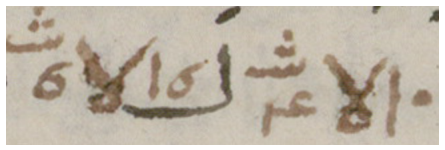 ”.86 We write it as
”.86 We write it as
 , and in modern notation it is
, and in modern notation it is
 . Like we have seen for arithmetic, in the manuscripts either the whole word illā is written, or the initial alif is dropped so it looks like an upside-down
. Like we have seen for arithmetic, in the manuscripts either the whole word illā is written, or the initial alif is dropped so it looks like an upside-down
 . Note that here the Arabic “0” is written as a dot, so the “10” looks like “1
. Note that here the Arabic “0” is written as a dot, so the “10” looks like “1
 ”. Because it takes a little while to become accustomed to the Arabic notation, we will continue for a while to give the version in modern notation as well. See below at 229.8 for a brief description of how this notation was interpreted.
”. Because it takes a little while to become accustomed to the Arabic notation, we will continue for a while to give the version in modern notation as well. See below at 229.8 for a brief description of how this notation was interpreted.
Today, we have just one form of simplified quadratic equation,
 , where our
, where our
 ,
,
 , and
, and
 can be positive, negative, or zero. The solution to this equation,
can be positive, negative, or zero. The solution to this equation,
 , is a formula expressed in terms of the coefficients. The corresponding solutions in medieval algebra also use the “coefficients”, but because only positive numbers were acknowledged they had six types of simplified equation: three of them “simple” (mufrad), with a single term on each side, and the other three “composite” (murakkaba), where one side has two terms. These are listed below, with al-Hawārī’s examples under each generic form:
, is a formula expressed in terms of the coefficients. The corresponding solutions in medieval algebra also use the “coefficients”, but because only positive numbers were acknowledged they had six types of simplified equation: three of them “simple” (mufrad), with a single term on each side, and the other three “composite” (murakkaba), where one side has two terms. These are listed below, with al-Hawārī’s examples under each generic form:
Simple equations
Type 1: some māls equal some roots
“three māls equal seven things” (
 ;
;
 ).
).
Type 2: some māls equal some numbers
“five māls equal twenty” (
 ;
;
 ).
).
Type 3: some roots equal some numbers
“three roots equal twelve” (
 ;
;
 ).
).
Composite equations
Type 4: some māls and some roots equal some numbers
“a māl and ten roots equal twenty-four” (
 ;
;
 ).
).
Type 5: some māls and some numbers equal some roots
“a māl and four equal five roots” (
 ;
;
 ).
).
Type 6: some māls equal some roots and some numbers
“a māl equals four roots and five” (
 ;
;
 ).
).
There is no notation in al-Hawārī’s chapter on algebra, not even for numbers. Recall that in the first part of the book, on arithmetical calculation, he used the Indian figures only to illustrate work that was to be performed on the dust board or other surface. Like the previous chapter covering proportion and double false position, the calculations in the chapter on algebra are given entirely in words because their execution in notation has already been explained in the first part of the book.
213.1 Section II.2.2. Working out the six types (of equation).
213.2 The third stage in the solution to a problem by algebra is to solve the simplified equation. Each of the six types of equation is solved by its own rule. The solutions to the three simple types require a single division to get the māl or thing/root.
213.7
The example for type 1 is “three māls equal fifteen things”, or
 . In modern notation, this is
. In modern notation, this is
 .
.
Students who had not studied algebra before would not be familiar with the wording of algebraic equations. So like al-Khwārazmī ”) with a specified outcome (“gives a sum
”) with a specified outcome (“gives a sum
 ”). Also, the equation is stated with the algebraic “equal” (taʿdil, conjugated from ʿadala) while the arithmetical version uses an “equal” (musāwiya) common to arithmetic.87
”). Also, the equation is stated with the algebraic “equal” (taʿdil, conjugated from ʿadala) while the arithmetical version uses an “equal” (musāwiya) common to arithmetic.87
Here al-Hawārī calls the equation a “problem” (masʾala), the same word used for other kinds of arithmetic problems or questions. This is also the word used for equations by al-Khwārazmī,
213.13
Al-Hawārī’s equation “two māls equal eighteen”,
 , corresponds to our
, corresponds to our
 . Al-Hawārī again translates the equation into an arithmetical enunciation: “What māl, if we add itself to it, becomes equal to eighteen?” Like in the first example, the equation “two māls equal eighteen” does not invoke any operation, since it merely asserts the equality of a couple of “māls” with 18. By contrast, the arithmetical version entails an operation: one adds a māl to itself, with an outcome equal to eighteen.
. Al-Hawārī again translates the equation into an arithmetical enunciation: “What māl, if we add itself to it, becomes equal to eighteen?” Like in the first example, the equation “two māls equal eighteen” does not invoke any operation, since it merely asserts the equality of a couple of “māls” with 18. By contrast, the arithmetical version entails an operation: one adds a māl to itself, with an outcome equal to eighteen.
214.1
Al-Hawārī’s equation “five things equal twenty”,
 , corresponds to our
, corresponds to our
 . In the reformulation, the “thing” becomes a root of the māl: “What māl, if we take five of its roots, gives a result equal to the twenty?” And again, the arithmetical version is framed as an operation and its outcome.
. In the reformulation, the “thing” becomes a root of the māl: “What māl, if we take five of its roots, gives a result equal to the twenty?” And again, the arithmetical version is framed as an operation and its outcome.
214.7
The rules for the composite equations are naturally more complicated, and one can easily show that they are equivalent to our quadratic formula. Many authors, like al-Khwārazmī,
214.9
Al-Hawārī’s type 4 example “a māl and two things equal fifteen”,
 , corresponds to our
, corresponds to our
 . He again explains the equation in terms of an arithmetical enunciation framed with operations, in which “māl” and “root” revert to their meanings in arithmetic.
. He again explains the equation in terms of an arithmetical enunciation framed with operations, in which “māl” and “root” revert to their meanings in arithmetic.
Some authors occasionally write out the whole phrase “half of the number of things”, but it is usually written simply as “half of the things”, like it is here. In the modern term
 , the 2 and the
, the 2 and the
 are both numbers which are joined through scalar multiplication. But the medieval “two things” is simply a two of a particular type (“things”). In the present case “the things” is 2, and its half is 1. Then
are both numbers which are joined through scalar multiplication. But the medieval “two things” is simply a two of a particular type (“things”). In the present case “the things” is 2, and its half is 1. Then
 ,
,
 ,
,
 , and
, and
 , which is the unknown thing/root. The unknown māl is then 9. This type of equation will have just one positive solution.
, which is the unknown thing/root. The unknown māl is then 9. This type of equation will have just one positive solution.
We can rewrite the solutions to each equation type as a modern formula. In this case, Ibn al-Bannāʾ’s solution to the general equation
 can be transformed into
can be transformed into
 . But keep in mind that like the rules for double false position, these rules are procedures consisting of a sequence of operations, and not static, written formulas. The rule is spoken, in time, with one step following another, while our formula is apprehended visually, and not necessarily left-to-right (or right-to-left) like rhetorical text (see our comments above at 198.4).
. But keep in mind that like the rules for double false position, these rules are procedures consisting of a sequence of operations, and not static, written formulas. The rule is spoken, in time, with one step following another, while our formula is apprehended visually, and not necessarily left-to-right (or right-to-left) like rhetorical text (see our comments above at 198.4).
214.14
In most problems the desired unknown is the “thing”, so the rule given above yields the answer to the problem. But, often one is searching instead for the māl. For instance, if we were asked to find a number given some condition involving its square root, we might name the number
 and create an equation with
and create an equation with
 and its root
and its root
 . This is why some algebraists give rules for finding the māl directly, even if in practice these rules were not used much. Rules for finding the māl date back to Abū Kāmil’s
. This is why some algebraists give rules for finding the māl directly, even if in practice these rules were not used much. Rules for finding the māl date back to Abū Kāmil’s
215.3
The fifth type of equation might have two, one, or no positive solutions. Al-Hawārī’s example with two solutions is “a māl and eight equal six things” (
 ;
;
 ).
).
The rule to solve this equation is similar to the rule for the type 4 equation. Take half of the 6 to get 3, square it to get 9, subtract the 8 to get 1, and take its root to get 1. One of the solutions is obtained by adding the 3 to the 1 to get 4, and the other is obtained by subtracting the 1 from the 3 to get 2.
215.12
Ibn al-Bannāʾ gives the condition under which this equation will have exactly one solution: a square of half the number of roots/things equals the number. Al-Hawārī’s example is “a māl and nine equal six things” (
 ;
;
 ). Half of the roots is 3, and its square 9 equals the 9 in the equation. The value of the thing is half the roots, or 3, and the māl is the number, 9.
). Half of the roots is 3, and its square 9 equals the 9 in the equation. The value of the thing is half the roots, or 3, and the māl is the number, 9.
215.14 Following the first rule at 215.3 for this kind of equation causes one to operate on “nothing” a number of times. This is reminiscent of the operations on zero we saw earlier in the book. It is not necessary to regard nothing or zero as being a number for these operations to be carried out. See our comments on “operating on zero” at 74.17 above.
216.1
Next, al-Hawārī gives the rule for finding the māl directly for equations with two solutions; in other words, when “the number is smaller than a square of half of the number of roots” (he had not given this condition earlier). He works this out for the first type 5 example, “a māl and eight equal six things”. A square of the number of roots is 36, and its half is 18. Subtracting the 8 leaves 10. Keep this in mind. Then square the 8 to get 64, and subtract it from a square of the remembered 10, which is 100, leaving 36. Its square root is 6. One solution is that the māl is
 , and the other is
, and the other is
 .
.
216.11
Type 6 equations always have one positive solution. Al-Hawārī’s example is “a māl equals two of its roots and three” (
 ;
;
 ). Al-Hawārī’s explanation in terms of arithmetic is awkward, since it is the same as the equation, only with the arithmetical term yusāwī (“[is] equal”) replacing the algebraic yaʿdil (“equals”): “what māl is equal to two of its roots and three?” This might be because the two terms in this equation are stated after the single term, and al-Hawārī did not see that he could simply switch them and write “what māl, if we add three to two if its roots, gives a result equal to the māl?” This confusion may also be why he wrote in the equation “two of its roots”, which is the arithmetical formulation, instead of the usual “two roots”.
). Al-Hawārī’s explanation in terms of arithmetic is awkward, since it is the same as the equation, only with the arithmetical term yusāwī (“[is] equal”) replacing the algebraic yaʿdil (“equals”): “what māl is equal to two of its roots and three?” This might be because the two terms in this equation are stated after the single term, and al-Hawārī did not see that he could simply switch them and write “what māl, if we add three to two if its roots, gives a result equal to the māl?” This confusion may also be why he wrote in the equation “two of its roots”, which is the arithmetical formulation, instead of the usual “two roots”.
In the solution, he takes half of the 2 and squares it to get 1. Adding this to the 3 gives 4. Its root is 2, and adding this to half of the 2 gives 3, “which is the unknown thing”.
216.17 The rule for finding the māl directly is clear.
217.1 The rules that Ibn al-Bannāʾ gave for the three composite equations presume that the number of māls is 1. Now he explains that if their number is greater or less than 1, we should set the number to 1 by restoring or reducing it, and we must also adjust the other terms of the equation in the same manner. Restoration and reduction have already been described outside the context of algebra for whole numbers in Section I.1.6 at 129.1, and for fractions in Section I.2.5 at 154.1. Once the number of māls becomes 1, then the rules given above can be applied to find the solution(s).
The word we translate as “term” (ism) in this chapter is also the word for “name”. The species “thing”, “māl”, and “cube” are often called “names” (first at 211.8, in the translation), and the same word is used to mean a term of an equation, like “three things”, “a māl”, and “half a cube”. So “thing” as a name for the first degree unknown is an ism, just as “six things” in the equation below is an ism. In the present passage Ibn al-Bannāʾ uses another word, alqāb, also meaning “name”, for a term in an equation. In common use ism is “given name”, while alqāb is “family name”.
217.10
Al-Hawārī’s first example is “two māls and six things equal thirty-six” (
 ;
;
 ). Here the two māls must be reduced to a single māl, so he multiplies it by a half. The other terms must be reduced by a half to compensate, so the equation becomes “a māl and three things equal eighteen” (
). Here the two māls must be reduced to a single māl, so he multiplies it by a half. The other terms must be reduced by a half to compensate, so the equation becomes “a māl and three things equal eighteen” (
 ;
;
 ).
).
217.15 Another way to do this is to divide the two by two, and divide the other terms by two as well. Dividing by two and multiplying by a half may be mathematically equivalent, but they are conceptually different. One is division by a whole number, and the other is multiplication by a fraction.
218.1
The other example is “half a māl and two things equal six” (
 ;
;
 ). Here the half of a māl must be restored to one māl, so he multiplies it and the other terms by two to get “a māl and four things equal twelve” (
). Here the half of a māl must be restored to one māl, so he multiplies it and the other terms by two to get “a māl and four things equal twelve” (
 ;
;
 ). The other way is to divide each term by a half.
). The other way is to divide each term by a half.
219.1 Section II.2.3. Addition and subtraction.
In this section, al-Hawārī explains how to add and subtract algebraic expressions. After giving some easy examples mainly taken from Lifting the Veil (219.5-220.4), he pays special attention to examples illustrating Ibn al-Bannāʾ’s rule for simplifying a problem of subtraction in which one or both of the parts is a diminished algebraic amount. These amounts are of the form “A less B”, and can be thought of as algebraic apotomes (220.5-222.4). Al-Hawārī follows this with a subsection on simplifying equations (223.1-224.8), since the techniques there are the same. In both subtractions and equations diminished amounts are “restored” (with al-jabr) and like terms in the two parts are settled by “confronting” them (with al-muqābala). We describe these terms along with “equalization” (muʿādala) below in our comments at 220.5.
And it is here, in the present section, that rewriting the Arabic calculations in modern notation breaks down. The cause of the problem goes back to the way arithmetical operations, and by extension algebraic operations as well, are worded in premodern mathematics. We have been able to overlook the matter so far because it really only becomes an issue for addition and subtraction of quantities that are already composed of more than one term, like the quantities “six eighths less a ninth”, “two and a root of eight”, or “ten less a thing”. This wording is in turn linked with a difference in how multi-term quantities were conceived, and only when the medieval conceptions are addressed will the Arabic “restoration” of diminished amounts and other oddities of medieval practice make sense.
We begin our comments by examining the anatomy of Arabic arithmetical operations, keeping in mind that algebra is a part of arithmetic. In the process, we address how Arabic authors conceived of multi-term amounts, and we expose the inadequacy of modern notation. Later, in our remarks on al-Hawarī’s examples, we continue to work with the transliteration of the Arabic algebraic notation, which is naturally well-suited to represent the calculations.
Al-Hawārī writes at 87.19 “We add the five to the three, giving eight”. Today we write this as
 , which is spoken as “three plus five equals eight”. Mathematically, the medieval and modern operations are the same, but they are presented differently. The Arabic is phrased with a verb for the operation (in this example “add”, conjugated from jamaʿa) and a word announcing the result (here “gives”, from bi-). The operation is performed in time, with a specified outcome. By contrast, the verb in the modern version is “equals”, and the word “plus” appears in its quasi-prepositional sense to indicate the operation. There was no word in Arabic that means “plus”. The key difference between the Arabic and modern ways of expressing the operation is that the former is presented as a process that is worked through, while the latter is a static equivalence.
, which is spoken as “three plus five equals eight”. Mathematically, the medieval and modern operations are the same, but they are presented differently. The Arabic is phrased with a verb for the operation (in this example “add”, conjugated from jamaʿa) and a word announcing the result (here “gives”, from bi-). The operation is performed in time, with a specified outcome. By contrast, the verb in the modern version is “equals”, and the word “plus” appears in its quasi-prepositional sense to indicate the operation. There was no word in Arabic that means “plus”. The key difference between the Arabic and modern ways of expressing the operation is that the former is presented as a process that is worked through, while the latter is a static equivalence.
This difference becomes problematic for operations involving multi-term amounts, like al-Hawārī’s “add a root of three to a root of fifteen…to get a root of three and a root of fifteen” (at 180.10). Translated into modern notation, the operation does not seem to accomplish anything:
 . Like in the first example, the operation in the Arabic is expressed with the verb “add” (the first “+” in notation). Because the two numbers cannot be written as a single root, the result is a binomial expressed as “a root of three and a root of fifteen” using the common conjunction “and” (wa, the second “+”). This wa is not another word for the arithmetical operation of addition. The result “a root of three and a root of fifteen” is merely a collection of two objects, like saying “an apple and a banana”. We see this kind of aggregation also in distinct fractions, explained above at 136.8 and 139.1. The fraction “five sixths and four-fifths” from 136.8, written
. Like in the first example, the operation in the Arabic is expressed with the verb “add” (the first “+” in notation). Because the two numbers cannot be written as a single root, the result is a binomial expressed as “a root of three and a root of fifteen” using the common conjunction “and” (wa, the second “+”). This wa is not another word for the arithmetical operation of addition. The result “a root of three and a root of fifteen” is merely a collection of two objects, like saying “an apple and a banana”. We see this kind of aggregation also in distinct fractions, explained above at 136.8 and 139.1. The fraction “five sixths and four-fifths” from 136.8, written
 , is a single number expressed as two numbers gathered together. This kind of joining of numbers into an aggregation is even present in the way numbers with different ranks are expressed, like 24, which is spoken as “four and twenty”. Where in Arabic a distinction is made between the operation of addition and the expression of the result with “and”, in our notation the plus sign “
, is a single number expressed as two numbers gathered together. This kind of joining of numbers into an aggregation is even present in the way numbers with different ranks are expressed, like 24, which is spoken as “four and twenty”. Where in Arabic a distinction is made between the operation of addition and the expression of the result with “and”, in our notation the plus sign “
 ” is used for both.
” is used for both.
Another example, this one involving three multi-term amounts, is Ibn al-Hāʾim’s

|
The original Arabic calls for only one operation (the second “+”), but we see a total of four additions in notation. And where the right side should be the outcome of that operation, in our notation the two sides are symmetric, so it is equivalent to

|
Ibn al-Hāʾim’s

|
But this unhappy hybrid is no easier to read than our transliteration of the medieval notation. So we will use the latter, which in this case should look something like this:

|
Here, the horizontal line serves to separate the steps in the working out of the problem. This notation for separating steps is rarely shown in manuscripts. Like we have seen for al-Hawārī’s calculations with Indian numerals, Arabic textbooks describe the operations rhetorically, and those that show the notation generally give only snippets to illustrate what should be written on the dust-board. Of all the medieval Arabic books that show the notation, we know of only one instance, from Ibn Ghāzī’s
Operations themselves were designated in notation by prepositions. Al-Ḥaṣṣār’s .92 Between the fractions is the preposition ilā, “to”, the same word appearing in the rhetorical statement of the operation. The Arabic prepositions for addition, subtraction, multiplication, and division are all different, so they suffice to indicate which operation is intended. Al-Ḥaṣṣār performs this calculation rhetorically to get “one and two fifths and three fourths of a fifth”, which is shown in notation as
.92 Between the fractions is the preposition ilā, “to”, the same word appearing in the rhetorical statement of the operation. The Arabic prepositions for addition, subtraction, multiplication, and division are all different, so they suffice to indicate which operation is intended. Al-Ḥaṣṣār performs this calculation rhetorically to get “one and two fifths and three fourths of a fifth”, which is shown in notation as  .
.
Another example is al-Mawāḥidī’s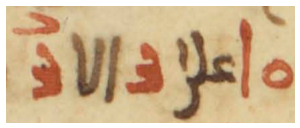 .93 Here the “by” (ʿalā) and “less” are in black, and the numbers are in red. Above the last 3 is the dotless letter jīm (
.93 Here the “by” (ʿalā) and “less” are in black, and the numbers are in red. Above the last 3 is the dotless letter jīm ( ) indicating a square root. We transcribe this as “
) indicating a square root. We transcribe this as “
 ”. The result is given rhetorically as “five in number and a root of eight and a third”, and is shown in notation as
”. The result is given rhetorically as “five in number and a root of eight and a third”, and is shown in notation as 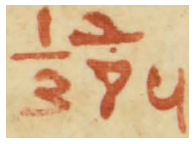 , or “
, or “
 ”. Like with distinct fractions (at 136.8 and 139.1), the aggregation shows no sign for “and”.94
”. Like with distinct fractions (at 136.8 and 139.1), the aggregation shows no sign for “and”.94
In algebra, adding two terms of the same species is done by adding their “numbers”, or what we call their coefficients. For example, adding three things to five things gives eight things (in modern notation,
 ). But, if the species are different, one can only put the conjunction “and” (wa) between them, as we saw with binomials in the chapter on roots. In his abridgment of his own commentary on Ibn al-Yāsamīn’s
). But, if the species are different, one can only put the conjunction “and” (wa) between them, as we saw with binomials in the chapter on roots. In his abridgment of his own commentary on Ibn al-Yāsamīn’s gives
gives
 . The result of the addition is a collection of five items of two different species or types, and it is worded just like we would say “two apples and three bananas”.
. The result of the addition is a collection of five items of two different species or types, and it is worded just like we would say “two apples and three bananas”.
Because a term like “three things” was conceived as a collection of three objects, much like “three bananas”, irrational coefficients were not allowed. One can have three bananas or two and a half bananas, but it makes no sense to speak of
 bananas. Arabic algebraists avoided irrational “numbers” of terms by taking a root of the entire term. For example, in solving one problem Ibn al-Bannāʾ writes “you multiply a thing by a root of ten, to get a root of ten māls”. Expressing this in modern notation, he multiplies
bananas. Arabic algebraists avoided irrational “numbers” of terms by taking a root of the entire term. For example, in solving one problem Ibn al-Bannāʾ writes “you multiply a thing by a root of ten, to get a root of ten māls”. Expressing this in modern notation, he multiplies
 by
by
 to get
to get
 . This way the “number” (the coefficient 10) remains rational, while the root of the entire term is valid as an irrational number (the value of the “thing” in this problem is found to be
. This way the “number” (the coefficient 10) remains rational, while the root of the entire term is valid as an irrational number (the value of the “thing” in this problem is found to be
 ).96 Here is an example of how such a root appears in notation in an Arabic equation, from Ibn Qunfudh’s
).96 Here is an example of how such a root appears in notation in an Arabic equation, from Ibn Qunfudh’s . In our transliterated version this is the equation
. In our transliterated version this is the equation
 , which corresponds to
, which corresponds to
 in modern notation.97
in modern notation.97
219.2
Al-Hawārī’s example of adding appended expressions is to add together a māl, six things, and ten dirhams to get “a māl and six things and ten dirhams”. This result is a collection or aggregation of seventeen items of three different species, and in notation we write it as
 . Contrast al-Hawārī’s polynomial with its modern equivalent,
. Contrast al-Hawārī’s polynomial with its modern equivalent,
 , where the arithmetical operation of addition appears twice along with scalar multiplication and exponentiation.
, where the arithmetical operation of addition appears twice along with scalar multiplication and exponentiation.
Al-Hawārī does not give an example where the addends themselves are already expressed with two or more appended names (i.e., where the terms are connected with “and”), so we give the explanation from al-Karajī’s
219.4 Where the word “and” (wa) is used to express the sum of two different species, the word “less” (illā) is used to express their difference. In Arabic grammar this word indicates that the noun that follows is absent from the preceding noun, like in the phrase “all the children except (illā) Amy”. Here “all the children” is called mustathnā minhu, literally “excluded from it”, or better, “diminished”, and “Amy” is called mustathnā, “excluded” or “absent”.
The same idea of something missing from something else applies also to mathematical expressions with illā. Al-Qalaṣādī . Instead, the result of the subtraction, “a root of eight less a root of five” (
. Instead, the result of the subtraction, “a root of eight less a root of five” (
 ), is an apotome, and apotomes by their nature contain no operation. This quantity is a diminished
), is an apotome, and apotomes by their nature contain no operation. This quantity is a diminished
 , from which
, from which
 has been removed. In English, we have no word that functions quite like the Arabic illā. It is kind of like saying “an apple less a bite” or “three cents short of a dollar”. We have already seen this use of “less” in the case of excluded fractions, like the example “six eighths less a ninth” at 140.8. The notational version of that example from one manuscript is shown above in our comments for 140.1. See also al-Mawāḥidī’s
has been removed. In English, we have no word that functions quite like the Arabic illā. It is kind of like saying “an apple less a bite” or “three cents short of a dollar”. We have already seen this use of “less” in the case of excluded fractions, like the example “six eighths less a ninth” at 140.8. The notational version of that example from one manuscript is shown above in our comments for 140.1. See also al-Mawāḥidī’s
In mathematics, as in grammar, the two values A and B in expressions of the form “A less B” are called mustathnā minhu (diminished) and mustathnā (excluded), respectively. Al-Hawārī uses these terms in his explanation of excluded fractions beginning at 140.1, in the context of quadratic irrational apotomes at 183.15, and in algebra on pages 219-222 and 230. Sometimes the diminished term is called “appended” (zāʾid) and the excluded term “deleted” (nāqiṣ), as in the passages at 87.11, 183.15, 189.1, 211.2, etc. We translate these two words as “exceeds” and “falls short”, respectively, in the solutions to problems by double false position (first at 198.8).
So where we simplify an equation like
 by adding the subtracted
by adding the subtracted
 to both sides, at 223.2 al-Hawārī restores (with al-jabr) the diminished māl in the left side of the equation
to both sides, at 223.2 al-Hawārī restores (with al-jabr) the diminished māl in the left side of the equation
 to make it complete (restoration is explained more fully below at 220.5) and then adds the
to make it complete (restoration is explained more fully below at 220.5) and then adds the
 to the other side. Like with “plus”, there is no medieval Arabic word with the meaning of the modern “minus”. For this reason, neither word occurs in our translation.
to the other side. Like with “plus”, there is no medieval Arabic word with the meaning of the modern “minus”. For this reason, neither word occurs in our translation.
219.5
On the previous line Ibn al-Bannāʾ had written “and the different excluded [species] cannot be subtracted”. When an excluded species (a term following the word “less”) has no counterpart from which it can be subtracted, that is, when it is “different” from the others, the exclusion must remain. Al-Hawārī’s example is to “add a māl less a thing to ten dirhams”, or, in notation, to add
 to 10. There are no other “things” in the problem from which we can remove the
to 10. There are no other “things” in the problem from which we can remove the
 , so the result of the addition is “a māl and ten dirhams less a thing”, or
, so the result of the addition is “a māl and ten dirhams less a thing”, or
 . The answer is eleven objects of two types (one māl and ten dirhams) that are diminished by a thing. Writing it entirely in modern notation makes the operation appear as if all we do is rearrange terms:
. The answer is eleven objects of two types (one māl and ten dirhams) that are diminished by a thing. Writing it entirely in modern notation makes the operation appear as if all we do is rearrange terms:
 .
.
219.7
When adding expressions with deleted terms, subtract when possible the deleted term from an appended term of the same power. The first example is to add
 to 10. This is not a well-formed problem, since the first term, the “two māls less a māl”, is itself not fully resolved. It is of course the same as “a māl”, and the answer to the addition is
to 10. This is not a well-formed problem, since the first term, the “two māls less a māl”, is itself not fully resolved. It is of course the same as “a māl”, and the answer to the addition is
 .
.
In the second example
 is added to
is added to
 , resulting in
, resulting in
 . The third example is similar: add
. The third example is similar: add
 to
to
 to get
to get
 . In modern notation this corresponds to adding
. In modern notation this corresponds to adding
 to
to
 to get
to get
 .
.
220.1
Here al-Hawārī explains the particle “less” to designate the result of a subtraction of different species. The result of subtracting a thing from a māl is “a māl less a thing”, or
 . The result in the second example is
. The result in the second example is
 .
.
220.5 Al-Hawārī has postponed until this section his explanations of restoration (al-jabr), confrontation (al-muqābala), and equalization (muʿādala) that were briefly described by Ibn al-Bannāʾ above at 211.2. It is here, after all, that he applies them in problems of subtraction, and in the following subsection on simplifying equations.
The subtraction of appended terms in algebraic expressions (those connected with the word “and”) is easy: one simply subtracts like terms. Subtraction is less straightforward when it involves an expression of the form “A less B”, especially when this occurs in the subtrahend. Ibn al-Bannāʾ and al-Hawārī cover these here. Like other Arabic algebraists, al-Hawārī transforms the problem of subtraction into a simpler problem of subtraction by restoring diminished amounts (of the form “A less B”), and confronting like terms in the two sides. These are also the same steps one takes in simplifying equations, which is covered in the next subsection.
As Ibn al-Bannāʾ remarked above at 211.2, the restoration of a diminished term (the “A” in “A less B”) is the same restoration he explained of smaller numbers to greater numbers described at 129.1 and 154.1, and it is also the same restoration we saw of fractions of a māl at 217.1. To pick two examples, both “half a māl” (
 ) and “a māl less three things” (
) and “a māl less three things” (
 ) were considered to be incomplete māls. To restore the first of these one multiplies by two, and to restore the second one adds back the missing “three things”.100
) were considered to be incomplete māls. To restore the first of these one multiplies by two, and to restore the second one adds back the missing “three things”.100
In his problem (T1), Abū Kāmil ): “And restore the fifteen [things] by the māl and a half so that it is equivalent to fifteen things. Then add the māl and a half to the māl to get: two māls and half a māl equal fifteen things”101 (
): “And restore the fifteen [things] by the māl and a half so that it is equivalent to fifteen things. Then add the māl and a half to the māl to get: two māls and half a māl equal fifteen things”101 (
 ). Two distinct steps are performed. First, the “fifteen things less a māl and a half”, being a deficient “fifteen things”, is restored to a full “fifteen things”. Then, to balance the equation, “a māl and a half” is added to the other side. The restoration is the first of these two steps.
). Two distinct steps are performed. First, the “fifteen things less a māl and a half”, being a deficient “fifteen things”, is restored to a full “fifteen things”. Then, to balance the equation, “a māl and a half” is added to the other side. The restoration is the first of these two steps.
In the early eleventh century al-Karajī
By the twelfth century many authors had begun to also call the second step, the addition of the same amount to the other side, a “restoration”. This new way of wording it as two restorations was applied to the simplification of both subtractions and equations. Ibn al-Yāsamīn from
from
 ): “you restore the ten by the deleted thing to get ten. Then restore the thing, which is the greater part, by the same [amount] you restored the ten, to get two things. So it is as if someone had said, subtract ten from two things”.103 Note that the restorations do not give the answer to the subtraction, but result in an equivalent subtraction problem from which the remainder will be found.
): “you restore the ten by the deleted thing to get ten. Then restore the thing, which is the greater part, by the same [amount] you restored the ten, to get two things. So it is as if someone had said, subtract ten from two things”.103 Note that the restorations do not give the answer to the subtraction, but result in an equivalent subtraction problem from which the remainder will be found.
The modern version of Ibn al-Yāsamīn’s , which we work out by distributing the minus sign to get
, which we work out by distributing the minus sign to get
 , and which reduces to
, and which reduces to
 . Although medieval algebraists knew that “when subtracting the deleted from another deleted, it is appended” (from above at 87.11), they usually handled the problem of subtracting an apotome through a restoration.
. Although medieval algebraists knew that “when subtracting the deleted from another deleted, it is appended” (from above at 87.11), they usually handled the problem of subtracting an apotome through a restoration.
Like Ibn al-Yāsamīn
Restoring the deleted to the appended always entails the two sides. This is because whenever you restore the appended by what is excluded from it on one side, once your restoration is completed, that side has become greater than the other side. Thus it is different from what is equated to it, so you restore it by the excess.104
Confrontation is performed whenever there are like terms in the two sides. The verb qabila (“to confront”) is rarely used in the course of simplifying an equation or subtraction, however. The tenth-century CE lexicographer Muḥammad ibn Aḥmad al-Khwārazmī
And for an example of confrontation, suppose one encounters in a problem: a māl and two roots equal five roots []. You cast away the two roots which are with the māl, and you cast away the same from what it is equal to, to get: a māl equals three roots, and that is nine.105
The idea is that the like terms are confronted, or put face-to-face, and their difference is placed on the side of the greater. Like restoration, confrontation is performed in two steps. The smaller amount is deleted from one side, and the smaller is subtracted from the larger on the other side.
Ibn al-Bannāʾ explains confrontation similarly, though more tersely, in Lifting the Veil.106 What is new in Ibn al-Bannāʾ is the word meaning “equalization” (muʿādala). He writes:
Restoring the deleted to the appended is equalization with restoration, and subtracting the appended from the appended or the deleted from the deleted of things of the same species is equalization with confrontation.107
In both cases the “equalization” is the necessary compensation in the other part so that the new subtraction or equation yields the same answer as the original. “Restoring the deleted to the appended” is the adding of the deleted amount to the other side, and “subtracting the appended from the appended or the deleted from the deleted” is apparently what one does to compensate for deleting the smaller of the two like terms (the meaning is not presented clearly for confrontation). In confrontation, one typically subtracts “the appended from the appended”. Al-Hawārī gives an example of subtracting “the deleted from the deleted” in the second solution to the problem at 223.7.
Restoration was also applied to the subtraction of apotomes. Al-Baghdādī
220.9
In the first of four examples of subtraction, the minuend is diminished. Here al-Hawārī subtracts “two and a thing” (
 ) from “a māl less three things” (
) from “a māl less three things” (
 ). Adding the
). Adding the
 to the minuend restores the
to the minuend restores the
 , and adding the same to the subtrahend equalizes the operation. Thus it is called “equalization with restoration”. The problem then becomes to “subtract two and four things from a māl”, or
, and adding the same to the subtrahend equalizes the operation. Thus it is called “equalization with restoration”. The problem then becomes to “subtract two and four things from a māl”, or
 from
from
 . The answer is
. The answer is
 .
.
221.1
In the second example, the diminished term is in the subtrahend: subtract
 from
from
 (we write “c” for “cube”). Restoring the 52 and adding
(we write “c” for “cube”). Restoring the 52 and adding
 to the other part changes the question into one of subtracting 52 from
to the other part changes the question into one of subtracting 52 from
 . So far, this is equalization with restoration. Now both parts have simple numbers, 30 and 52, and these should be confronted. Al-Hawārī subtracts the smaller of the two from both sides, making the problem one of subtracting 22 from
. So far, this is equalization with restoration. Now both parts have simple numbers, 30 and 52, and these should be confronted. Al-Hawārī subtracts the smaller of the two from both sides, making the problem one of subtracting 22 from
 .
.
221.8
The step just described is called “confrontation with equalization” (he reverses Ibn al-Bannāʾ’s words) since the 30 is dropped from one part, and is subtracted from 52 in the other. The answer is then
 . In the modern version of this problem we would not need to transform the subtraction of 52 from
. In the modern version of this problem we would not need to transform the subtraction of 52 from
 into the problem of the subtraction of 22 from
into the problem of the subtraction of 22 from
 , since for us the latter “problem”
, since for us the latter “problem”
 is also its solution.
is also its solution.
221.13
In this next example, both terms are diminished. To subtract
 from
from
 al-Hawārī adds
al-Hawārī adds
 and
and
 , totaling
, totaling
 , to both sides to turn the problem into one of subtracting
, to both sides to turn the problem into one of subtracting
 from
from
 . We can see that he could have just added
. We can see that he could have just added
 to both sides, but our author is following the rule to the letter: add to both sides all amounts that are lacking from diminished terms. From here, confronting the
to both sides, but our author is following the rule to the letter: add to both sides all amounts that are lacking from diminished terms. From here, confronting the
 with the
with the
 yields the problem of subtracting 12 from
yields the problem of subtracting 12 from
 , giving
, giving
 .
.
222.1
The last example is worked out like the previous one. The problem is to subtract
 from
from
 . Restoring with equalizing means adding
. Restoring with equalizing means adding
 to both sides to get the equivalent problem of subtracting
to both sides to get the equivalent problem of subtracting
 from
from
 . There is no confrontation to be done here, since all terms are of different species. The answer is then
. There is no confrontation to be done here, since all terms are of different species. The answer is then
 .
.
223.1 Subsection concerning examples with the two sides of an equation.
Now al-Hawārī shows how to apply restoration (al-jabr) and confrontation (al-muqābala) to simplify equations in stage 2 to one of the six types. The phrase al-jabr wa-l-muqābala, taken from these steps in stage 2, was the name given to the art of algebra. As mentioned above, some algebraists would shorten the name to just al-jabr, and via transliterations in medieval Latin and Italian it became the origin of our word “algebra”.
223.2
The first example is
 . Restoring the
. Restoring the
 amounts to turning the
amounts to turning the
 into
into
 . To equalize,
. To equalize,
 must be added to the
must be added to the
 , so the equation becomes
, so the equation becomes
 . This is a type 6 equation, so one should next follow the rule at 216.11 to solve it.
. This is a type 6 equation, so one should next follow the rule at 216.11 to solve it.
223.7
To simplify
 one restores first. Adding both
one restores first. Adding both
 and
and
 to both sides gives
to both sides gives
 . Now the
. Now the
 is confronted with the
is confronted with the
 to get
to get
 . This is a type 4 equation, and the rule for its solution is given above at 214.7.
. This is a type 4 equation, and the rule for its solution is given above at 214.7.
Another way to do it is to confront the deleted
 with the deleted
with the deleted
 on the other side to get a deleted
on the other side to get a deleted
 :
:
 . Now the 24 is restored and
. Now the 24 is restored and
 is added to the other side to get
is added to the other side to get
 .
.
223.14
The next example is to simplify
 . Adding
. Adding
 to both sides gives
to both sides gives
 ; confronting the two
; confronting the two
 s results in the equation
s results in the equation
 . Al-Hawārī cannot begin this one by confronting the
. Al-Hawārī cannot begin this one by confronting the
 s, since it would leave terms deleted from nothing on both sides, which would be impossible.
s, since it would leave terms deleted from nothing on both sides, which would be impossible.
223.17
In the equation
 , adding the
, adding the
 to both sides gives
to both sides gives
 , and confronting the 10 with the 51 results in the simplified equation
, and confronting the 10 with the 51 results in the simplified equation
 . Al-Hawārī does not mention the confrontation. The other equations he gives are simplified similarly.
. Al-Hawārī does not mention the confrontation. The other equations he gives are simplified similarly.
225.1 Section II.2.4. Multiplication and knowing the power and the term.
The power of a term in modern algebra is easy to determine, since it is the exponent. The power of
 is 3, the power of
is 3, the power of
 is 12, etc. Knowing the power is necessary for multiplying or dividing terms, such as figuring that
is 12, etc. Knowing the power is necessary for multiplying or dividing terms, such as figuring that
 or
or
 . In Arabic algebra the terms are expressed with the names “thing”, “māl”, and “cube”, so the exponent must be calculated from these names. Ibn al-Bannāʾ tells us that the power of the things is 1, of māls is 2, and of cubes is 3, and that for higher powers one collects these numbers together. For example, the power of a māl cube māl māl is
. In Arabic algebra the terms are expressed with the names “thing”, “māl”, and “cube”, so the exponent must be calculated from these names. Ibn al-Bannāʾ tells us that the power of the things is 1, of māls is 2, and of cubes is 3, and that for higher powers one collects these numbers together. For example, the power of a māl cube māl māl is
 . From 225.2 to the end of the chapter the text has “[a] power (uss)” with the implied indefinite article. We translate it as “the power” to make the reading easier, and because the power of a term is unique.
. From 225.2 to the end of the chapter the text has “[a] power (uss)” with the implied indefinite article. We translate it as “the power” to make the reading easier, and because the power of a term is unique.
226.1
To find a name of the term from the exponent, one need only come up with some combination of māl and cube so the powers add up right. There was no standard way of writing the powers greater than the fourth in Arabic, as we already knew from variations offered by such authors as Abū Kāmil
226.9 To multiply two monomials, multiply their numbers (i.e., coefficients) and add the powers. If one of the terms is a simple number, then the power of the product is the power of the other term.
226.12
Al-Hawārī explains his examples well. In notation they are
 by
by
 gives
gives
 ,
,
 by
by
 gives
gives
 ,
,
 by
by
 gives
gives
 , 6 by
, 6 by
 gives
gives
 , and 7 by
, and 7 by
 gives
gives
 .
.
227.10 In Arabic algebra there was no standard way of making the plurals for species expressed with more than one term (māl, cube). Al-Hawārī makes the first term plural when there is more than one, but because the plural and singular forms of Arabic nouns are the same for numbers greater than ten, we often cannot tell if the second term is intended to be plural. What appears to be “three māls cube” could be “three māls cubes” if we take the “three māls” to be the number of cubes, and this number is greater than ten. See our remarks above at 70.8 for a similar situation with “thousands”. In our translation we leave these potentially plural forms singular. Perhaps Ibn al-Bannāʾ can make all the terms plural at 227.14 because he has not specified the number of the term.
227.14 Here Ibn al-Bannāʾ explains how to reduce the degree of an equation. This passage seems to be misplaced. It fits better in the section below on division.
If every term in an equation has degree of at least one, or, as al-Hawārī says, “you do not have a number”, then drop the power of each term by the lowest power in the equation. For a modern example, if we had
 , the smallest power is 2, so we drop all powers by two to get
, the smallest power is 2, so we drop all powers by two to get
 . Zero cannot be a solution in medieval algebra, so for al-Hawārī this gives an equivalent equation. Again, al-Hawārī explains his three examples well. In notation they are:
. Zero cannot be a solution in medieval algebra, so for al-Hawārī this gives an equivalent equation. Again, al-Hawārī explains his three examples well. In notation they are:
 reduces to
reduces to
 ,
,
 reduces to
reduces to
 , and
, and
 reduces to
reduces to
 .
.
228.8 Before Italian algebraists in the sixteenth century found solutions to irreducible cubic and quartic equations, the only equation types that could be solved generally were those that simplify, or could in some way be reduced, to one of the six types of degree 1 or 2.
228.9
When multiplying polynomials, some terms are appended and some are deleted. For example, in “a hundred and a māl less twenty things” (
 ) the “hundred” and the “māl” are appended, while the “twenty things” is deleted. Be careful not to interpret “appended” and “deleted” as “positive” and “negative”. See the discussions at 219.1 and 219.4 above.
) the “hundred” and the “māl” are appended, while the “twenty things” is deleted. Be careful not to interpret “appended” and “deleted” as “positive” and “negative”. See the discussions at 219.1 and 219.4 above.
Al-Hawārī does not explain why a deleted term multiplied by a deleted term yields an appended term, but the rule was well known. It would have been easy to derive it by geometry, among other possible ways. Abū Kāmil by
by
 ).109
).109
228.15
The example in notation is to multiply
 by
by
 . First al-Hawārī multiplies the terms that will give appended amounts: 8 by 7 gives 56, and
. First al-Hawārī multiplies the terms that will give appended amounts: 8 by 7 gives 56, and
 by
by
 gives
gives
 . The other two products yield deleted terms: 8 by
. The other two products yield deleted terms: 8 by
 gives
gives
 and
and
 by 7 gives
by 7 gives
 . The product is then
. The product is then
 .
.
229.1 Section II.2.5. Division.
229.2
Ibn al-Bannāʾ first explains how to divide a monomial by a monomial of lower degree. Al-Hawārī’s first example is to divide
 by
by
 . The 10 is divided by 2 to get 5. The power of the māls is 2, and the power of the things is 1, so the power of the quotient is their difference, 1. The answer is then “five things”. His other example is to divide
. The 10 is divided by 2 to get 5. The power of the māls is 2, and the power of the things is 1, so the power of the quotient is their difference, 1. The answer is then “five things”. His other example is to divide
 by
by
 , from which he gets
, from which he gets
 .
.
229.8
Note the wording: “The resulting five is then five māls”. In this term the “māls” is the kind, and the “five” tells how many there are. The two words are the two aspects of a single number or value, like saying “five dollars”. When there is only one of them, the notation must still specify the number. If, instead of “
 ” we write “
” we write “
 ”, it would be like saying “dollars and five pesos”. This leaves unanswered how many dollars/māls there are. For this reason, throughout premodern algebra a “1” was always written in notation when there is one of a term. By contrast, the 5 and the
”, it would be like saying “dollars and five pesos”. This leaves unanswered how many dollars/māls there are. For this reason, throughout premodern algebra a “1” was always written in notation when there is one of a term. By contrast, the 5 and the
 in our
in our
 are both numbers, one known and the other not, that are multiplied together. Our
are both numbers, one known and the other not, that are multiplied together. Our
 itself, without any coefficient, already designates a value, and so does not need a 1 in front.110
itself, without any coefficient, already designates a value, and so does not need a 1 in front.110
229.12
In the case that the powers of the two terms are the same, the result is a number. Al-Hawārī’s example is to divide
 by
by
 to get 4.
to get 4.
229.17
Dividing by a number gives the same power as the dividend. The example is to divide
 by 4 to get
by 4 to get
 . This and the previous rule are given separately because the power of a number was not regarded as being zero. Zero was a place holder in Indian numerical notation, and not a number.
. This and the previous rule are given separately because the power of a number was not regarded as being zero. Zero was a place holder in Indian numerical notation, and not a number.
230.1
If the dividend is diminished, divide both terms by the divisor. By this rule, dividing
 by
by
 gives
gives
 . A second example is dividing
. A second example is dividing
 by 2 to get
by 2 to get
 . Our authors do not mention that the same rule works if “less” is replaced by “and”, but this may be because the procedure is easily understood in the case of terms gathered together.
. Our authors do not mention that the same rule works if “less” is replaced by “and”, but this may be because the procedure is easily understood in the case of terms gathered together.
230.11
Ibn al-Bannāʾ writes that one cannot divide a lower power by a higher power. But one can at least eliminate common divisors. The example is to divide
 by
by
 to get “two divided by a thing”. The division is still unresolved, but at least the common divisors have been dealt with. Ibn al-Bannāʾ explains the same rule in his book on algebra. In one example he writes “divide eight cubes by three māls māl”. The answer is given as “two and two thirds divided by a thing”.111
to get “two divided by a thing”. The division is still unresolved, but at least the common divisors have been dealt with. Ibn al-Bannāʾ explains the same rule in his book on algebra. In one example he writes “divide eight cubes by three māls māl”. The answer is given as “two and two thirds divided by a thing”.111
When working with polynomials, the three operations of addition, subtraction, and multiplication can all be performed to yield another polynomial. But the division of a polynomial by a polynomial often cannot be performed, which is why an algebraist would sometimes admit an unresolved division in an equation. But writing the result of a division in the form “
 divided by
divided by
 ” was generally avoided in algebraic problem-solving. Ibn al-Bannāʾ’s problem (I.10) from his book on algebra is a good example. He solves this particular problem five different ways, each time coming up with a clever way to avoid unresolved divisions. (The enunciation and first solution are translated as problem [6] in Appendix B.) Al-Karajī
” was generally avoided in algebraic problem-solving. Ibn al-Bannāʾ’s problem (I.10) from his book on algebra is a good example. He solves this particular problem five different ways, each time coming up with a clever way to avoid unresolved divisions. (The enunciation and first solution are translated as problem [6] in Appendix B.) Al-Karajī in place of
in place of
 . Only in his fourth and last solution does he set up the equation with divisions: “ten less a thing divided by a thing and a thing divided by ten less a thing, and that equals two dirhams and a sixth”.112
. Only in his fourth and last solution does he set up the equation with divisions: “ten less a thing divided by a thing and a thing divided by ten less a thing, and that equals two dirhams and a sixth”.112
In modern notation, al-Karajī’s . We know only one book that shows notation for divisions of algebraic expressions. In place of the division bar, Ibn Ghāzī
. We know only one book that shows notation for divisions of algebraic expressions. In place of the division bar, Ibn Ghāzī ), the first letter in the word qasama (“divide”). Here is the notational version of his “twenty-four divided by half a thing and four and a half in number”, followed by our transcription (with a “d” for “divided by”), and then the modern version:
), the first letter in the word qasama (“divide”). Here is the notational version of his “twenty-four divided by half a thing and four and a half in number”, followed by our transcription (with a “d” for “divided by”), and then the modern version:
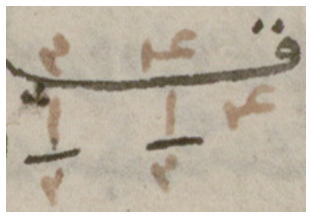


The manuscript indicates “things” with only the three dots from the letter 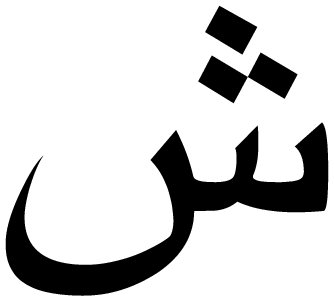 . The similarity between the simple bar for fractions and the elongated qāf for algebraic expressions is deliberate, but because divisions are not fractions they are differentiated.
. The similarity between the simple bar for fractions and the elongated qāf for algebraic expressions is deliberate, but because divisions are not fractions they are differentiated.
230.16 One cannot perform a division if the divisor is diminished. To “divide ten māls by three less a thing” can only yield “ten māls divided by three less a thing”. Of course, one cannot perform the division if the divisor consists of two or more appended terms, either. Dividing “ten māls” by “three and a thing” can only give “ten māls divided by three and a thing”. Neither Ibn al-Bannāʾ nor al-Hawārī make note of this.
231.1 Section [on secret numbers].
It was not uncommon for authors of arithmetic books to include problems on finding secret numbers. Other medieval authors who did so include Ibn al-Yāsamīn ,
,
 , and
, and
 , and
, and
 and
and
 are calculated values revealed to the guesser. Keep in mind that there is no algebra (al-jabr wa-l-muqābala) in the questions or solutions.
are calculated values revealed to the guesser. Keep in mind that there is no algebra (al-jabr wa-l-muqābala) in the questions or solutions.
231.4
First problem: the person is asked to secretly think of a number,
 , and then to calculate
, and then to calculate
 and
and
 . If
. If
 , the remainder
, the remainder
 is revealed. Then
is revealed. Then
 . If
. If
 then
then
 is revealed, and
is revealed, and
 .
.
231.13
Second problem: the person is asked to secretly think of two numbers,
 and
and
 , that add to 10. This time the revealed number is
, that add to 10. This time the revealed number is
 , which of course is the same as
, which of course is the same as
 . Given the sum and ratio of two numbers, the numbers are also given. Al-Hawārī does not give the rule past this point. We can solve our equations to get
. Given the sum and ratio of two numbers, the numbers are also given. Al-Hawārī does not give the rule past this point. We can solve our equations to get
 , but if the person chose whole numbers they are easy to guess without any particular rule. If the revealed number is 9 or 1/9, the numbers are 1 and 9. If they are 4 or 1/4, the numbers are 2 and 8, etc.
, but if the person chose whole numbers they are easy to guess without any particular rule. If the revealed number is 9 or 1/9, the numbers are 1 and 9. If they are 4 or 1/4, the numbers are 2 and 8, etc.
232.1
Third problem: A secret number is divided into two other secret numbers. In notation, suppose
 with
with
 . Two numbers are revealed:
. Two numbers are revealed:
 and
and
 . Then
. Then
 and
and
 , so
, so
 and
and
 .
.
233.2 The date 18 Dhū al-Qaʿda 704 AH corresponds to the Julian date June 12, 1305.
Footnotes
Translated in (Euclid 1956, vol. 2, 277).
Book I, Chapters 7-10 (Nicomachus 1959, 19-28); (Nicomachus 1938, 190-201). Ibn al-Bannāʾ’s terms are precisely those in Thābit ibn Qurra’s late ninth century Arabic translation of Nicomachus’s work (Nicomachus 1959, 20.18). D’Ooge translated Nicomachus’s Greek terms as “even-times even”, “even-times odd”, and “odd-times even”.
(Lane 1863–1893, 455). Lane gives definitions in third person singular perfect tense. Here and elsewhere I have changed them to the infinitive.
In the Arithmetical Introduction, Book II, Chapters 20-23 (Nicomachus 1938, 263, 266-70).
The first trio of dots on the right should not be there.
Categories 4b20-24; (Avicenna 2005, 10, 72).
Most arithmetic books give this definition. We found four arithmetic books that give no definition at all: those of al-Uqlīdisī, Kūshyār ibn Labbān, al-Baghdādī, and al-Qurashī. (Titles of their books are given in Appendix C.) The word for “duplication” is almost always ḍaʿafa.
There were some books that apply algebra to solve problems relating to Book X, but not the other way around.
For arithmetical proofs in Arabic algebra, see (Oaks 2018a).
The earliest extant book is Abū l-Wafāʾ’s arithmetic book (Saidan 1971, 113).
Book V, Definition 3 of the Elements (Euclid 1956, vol. 2, 114). The word “size” here is translated from pēlikotēs, which was translated into Arabic as qadr. The meaning of pēlikotēs in the Book V definition is not yet that of numerical size.
The desire to validate fractions as ratios goes back at least to the tenth century, when Abū l-Wafāʾ also defined fractions as ratios of whole numbers (Saidan 1971, 71).
The “separation” he speaks of may be the preposition “to” (ilā) in the phrase “the ratio of three to six”. Or it may be the mark one makes when writing ratios in notation. Al-Mawāḥidī, another commentator of the Condensed Book, uses the generic “


 ” which also serves to separate numbers in other contexts. The proportion
” which also serves to separate numbers in other contexts. The proportion
 is written as “8
is written as “8


 6
6


 4
4


 3” in (al-Mawāḥidī manuscript, fol. 78a).
3” in (al-Mawāḥidī manuscript, fol. 78a).
We also find intelligible mathematical objects in al-Khayyām (Omar Khayyam), who followed Aristotle closely. He wrote that while one-, two-, and three-dimensional algebraic powers correspond to geometric magnitudes that exist in sensible things, the zero degree term and powers higher than three are not associated with any sensible objects. These objects are instead “imagined in the continuous magnitudes”, or are “taken as abstracted in the intellect from material things”. See (Oaks 2011a); (Rashed and Vahabzadeh 2000, 171).
Ibn al-Bannāʾ’s example
 at 137.1 is first stated in terms of “fourths of a sixth”, and the version in terms of “twenty-fourths” is only added to show the denominator.
at 137.1 is first stated in terms of “fourths of a sixth”, and the version in terms of “twenty-fourths” is only added to show the denominator.
(Zemouli 1993, 171). On Ibn al-Yāsamīn’s way of writing numbers, see (Abdeljaouad 2005b).
Here “surplus (faḍla) between” could be translated as “difference between”, but the notion of a surplus or excess would be lost.
We have found the descriptions in three commentaries on Euclid’s Book X: Anonymous (attributed to al-Māhānī, #82 [M2], ninth century), Sulaymān ibn ʿIṣma al-Samarqandī (#181 [M1], ca. 900), and al-Ahwāzī (#193 [M1], tenth century); in Ibn Sīnā’s epitome of Euclid’s Elements ([M1], ca. 1000); and in two works dealing with algebra: al-Karajī’s Marvelous [Book] of Arithmetic (al-Badīʿ) ([M3], early eleventh century. He gives a minor variation in the descriptions of the second and third apotomes) and Ibn al-Bannāʾ’s Book on the Fundamentals and Preliminaries in Algebra ([M6], before 1300. Only for binomials). Gregg De Young writes that Ibn Sīnā’s book “was heavily influenced by, if not based completely upon, the al-Ḥajjāj translation tradition” (De Young 1991, 665). His evidence comes partly from Ibn Sīnā’s proofs to propositions X.64-66 (De Young 1991, 661). From this, and the fact that their wording is different in the Isḥāq-Thābit translation, we cautiously attribute the wording of these phrases to the translation of al-Ḥajjāj.
Definitions are given in Propositions X.36 and X.73, and the classifications are given in two sets of definitions presented after Propositions X.47 and X.84.
By contrast, commensurable roots can be added to make a single root, like the example at 179.16:
 and
and
 together are
together are
 .
.
We enclose in square brackets English words implied but not present in the Greek, and were thus not translated into Arabic.
This is Heath’s explanation in (Euclid 1956, vol. 3, 55).
Our translation. Heath translates it as “the side of a rational plus a medial area” (Euclid 1956, vol. 3, 129).
We have corrected misplaced quotation marks here.
Our translation. Heath translates it as “the side of the sum of two medial areas” (Euclid 1956, vol. 3, 130).
For Abū Kāmil, see (Oaks 2011b); for al-Baghdādī, see (al-Baghdādī 1985, 200.5).
See (Oaks 2017, 153).
“And the third is harmonic proportion, which is described by the author of the Arithmetic…” (Ibn al-Bannāʾ 1984, 293.7). He then paraphrases (Nicomachus 1959, 102.1). Harmonic proportion is covered by Nicomachus in Book II Chapter 25, starting at (Nicomachus 1959, 101.20); (Nicomachus 1938, 274).
Translated in (Nicomachus 1938, 284). Both in Greek and in Arabic the words for “harmonic” and “harmony” have the same root.
Translated in (Nicomachus 1938, 270).
(Ibn al-Bannāʾ 1994, 293.17). One could argue that he meant “the first two”, since he explicitly said that the third, harmonic proportion, “is composed of the geometric and the arithmetic”. In any case, it is geometric proportion that is in “the four [proportional] numbers”.
(Saidan 1986, 557.7). Ibn al-Bannāʾ’s first of two solutions by algebra is: “You make one of the parts a thing, so the other is ten less a thing. We take a third of a thing, giving a third of a thing, and you confront it with a fourth of ten less a thing, and that is two and a half less a fourth of a thing [this sets up the equation we write as
 ]. You restore and confront [i.e., simplify the equation], resulting in the third type [of equation, which we would write as
]. You restore and confront [i.e., simplify the equation], resulting in the third type [of equation, which we would write as
 ], which gives the thing is four and two sevenths, which is the part whose third we took, and the other part is the remainder from the ten.” In the second solution he switches the roles of “a thing” and “ten less a thing”.
], which gives the thing is four and two sevenths, which is the part whose third we took, and the other part is the remainder from the ten.” In the second solution he switches the roles of “a thing” and “ten less a thing”.
Problems (24) and (28) in (al-Khwārizmī 2009, 185, 191); most of the 20 geometry problems in (Abū Kāmil 2012, 523-577).
Definitions are taken from (Wehr 1994, 519, 943, 1047). See (Oaks 2010).
See (Abdeljaouad 2002) and (Oaks 2012a) for a description of the notation.
For more on the word “equation” see (Oaks 2010, §5.2).
For arithmetical proofs, see (Oaks 2018a).
The books of these authors are named in Appendix C.
Occasionally the “and” will be written in the notation, usually to counterbalance a “less” in another part of the expression.
Or, in modern notation,
 (Saidan 1986, 581.6).
(Saidan 1986, 581.6).
(Ibn Qunfudh manuscript, 272.3). Here Ibn Qunfudh denotes “things” using only the three dots from the letter  . The equation is stated verbally as “three things and a root of two māls equal eighteen and a root of seventy-two in number”. The example is given to explain that the term “a root of two māls” is of the order of things, since it comes from the “multiplication of a root of two by a thing”. For more on how medieval algebraists dealt with irrational numbers in algebra, see (Oaks 2017).
. The equation is stated verbally as “three things and a root of two māls equal eighteen and a root of seventy-two in number”. The example is given to explain that the term “a root of two māls” is of the order of things, since it comes from the “multiplication of a root of two by a thing”. For more on how medieval algebraists dealt with irrational numbers in algebra, see (Oaks 2017).
(al-Khwārizmī 1895, 201.3). The “what it [i.e., the left side] is equal to” is the “five roots” on the other side of the equation.



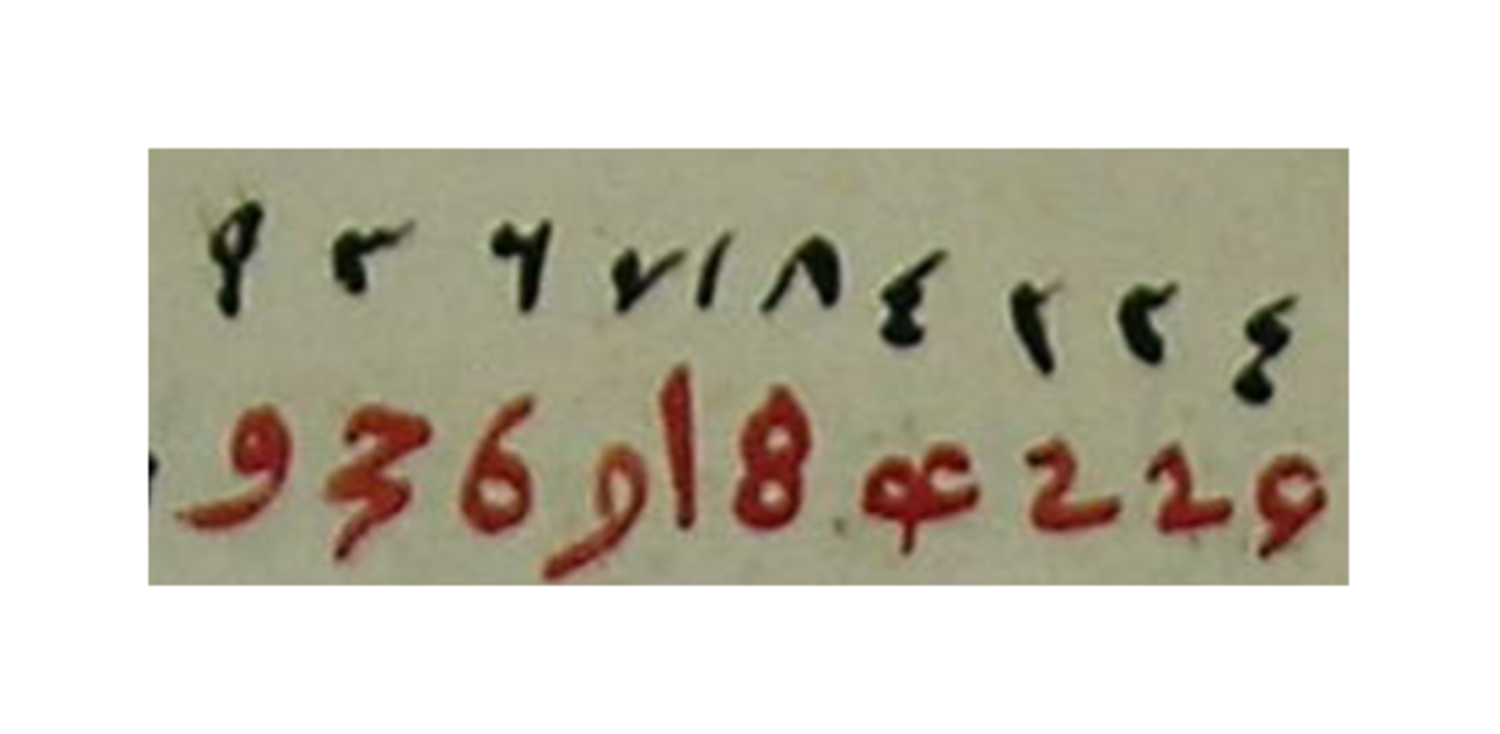
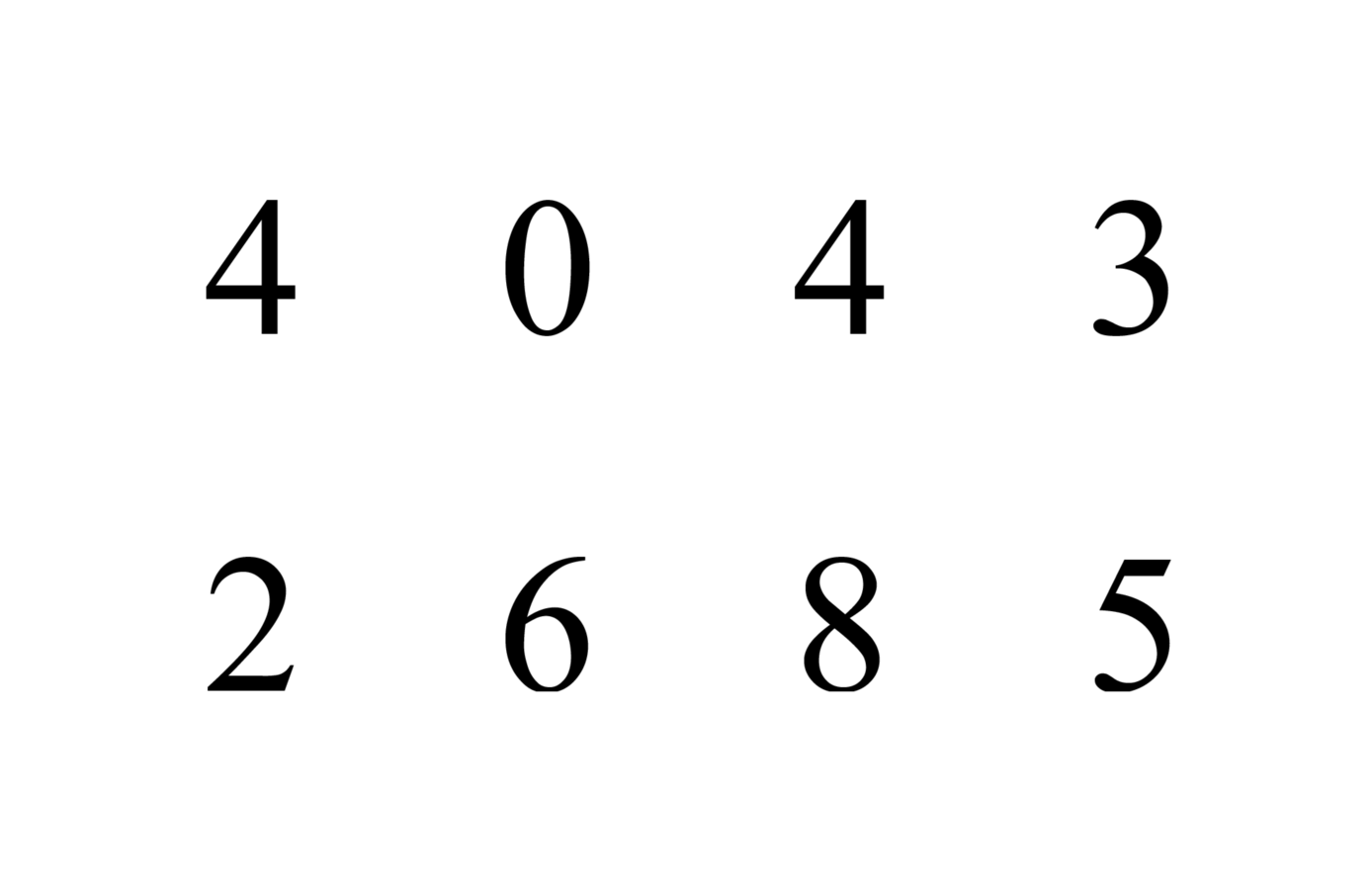
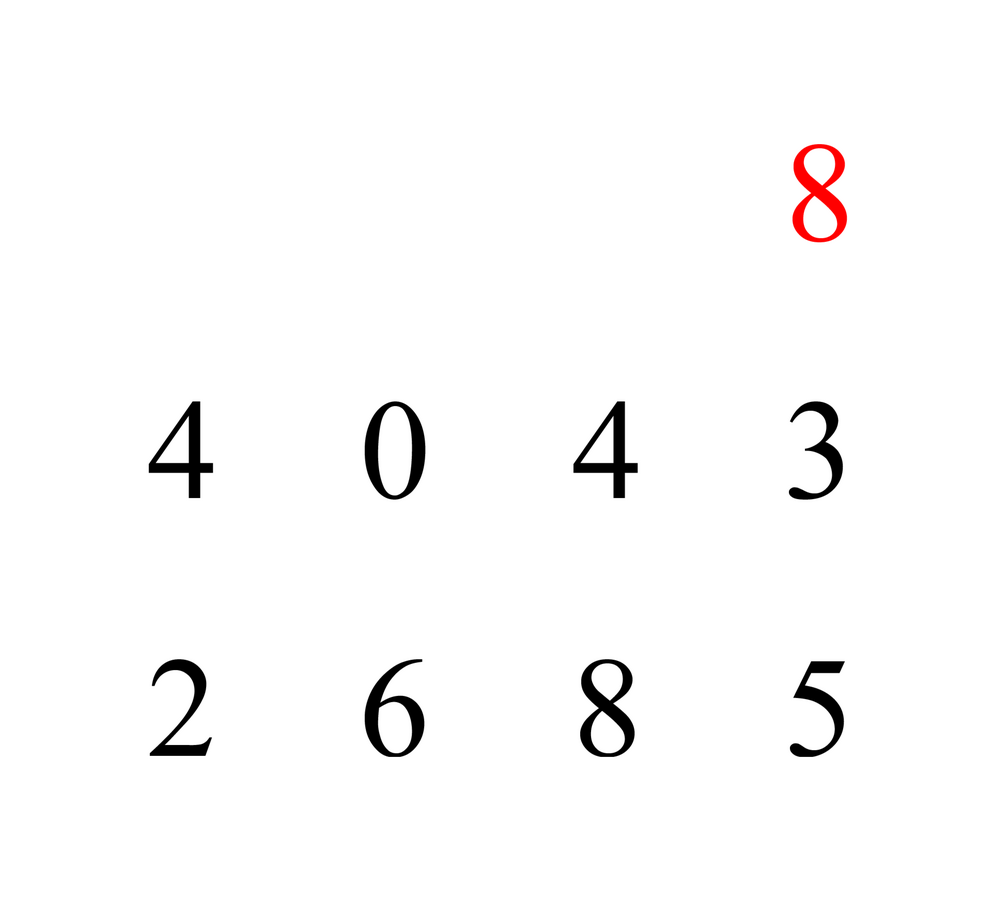
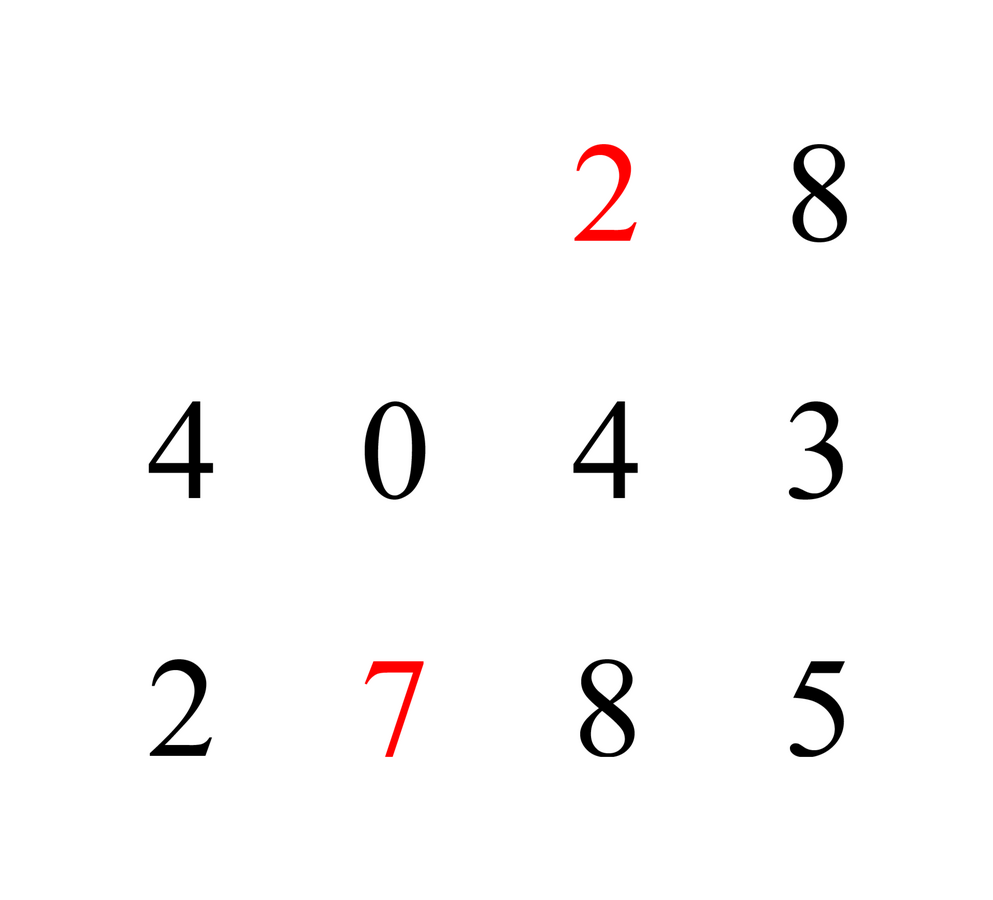


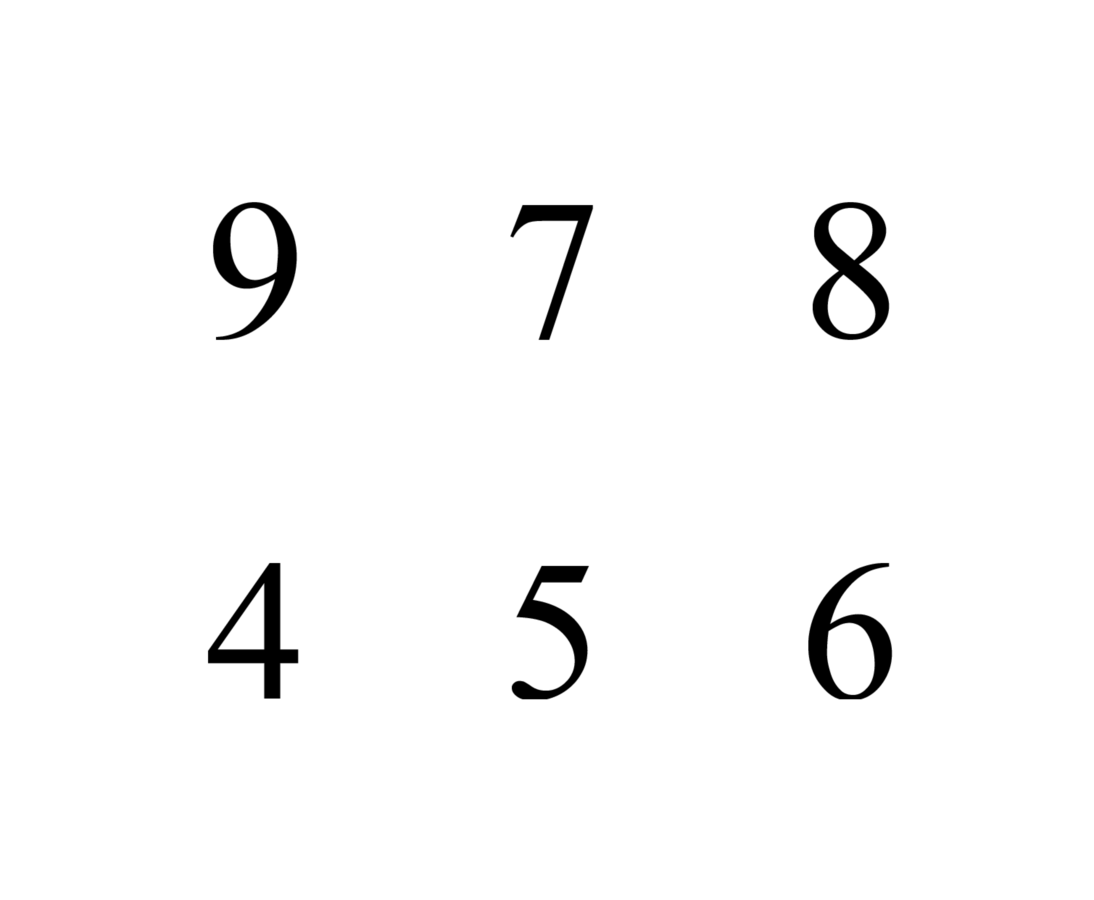
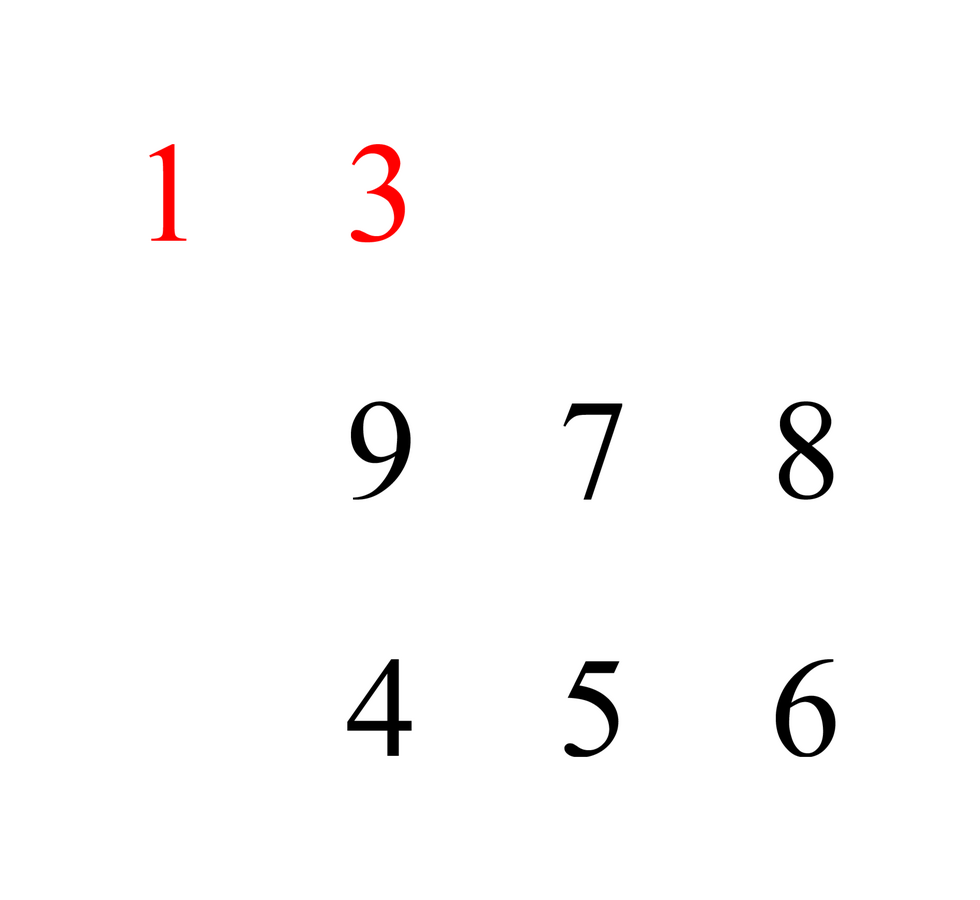
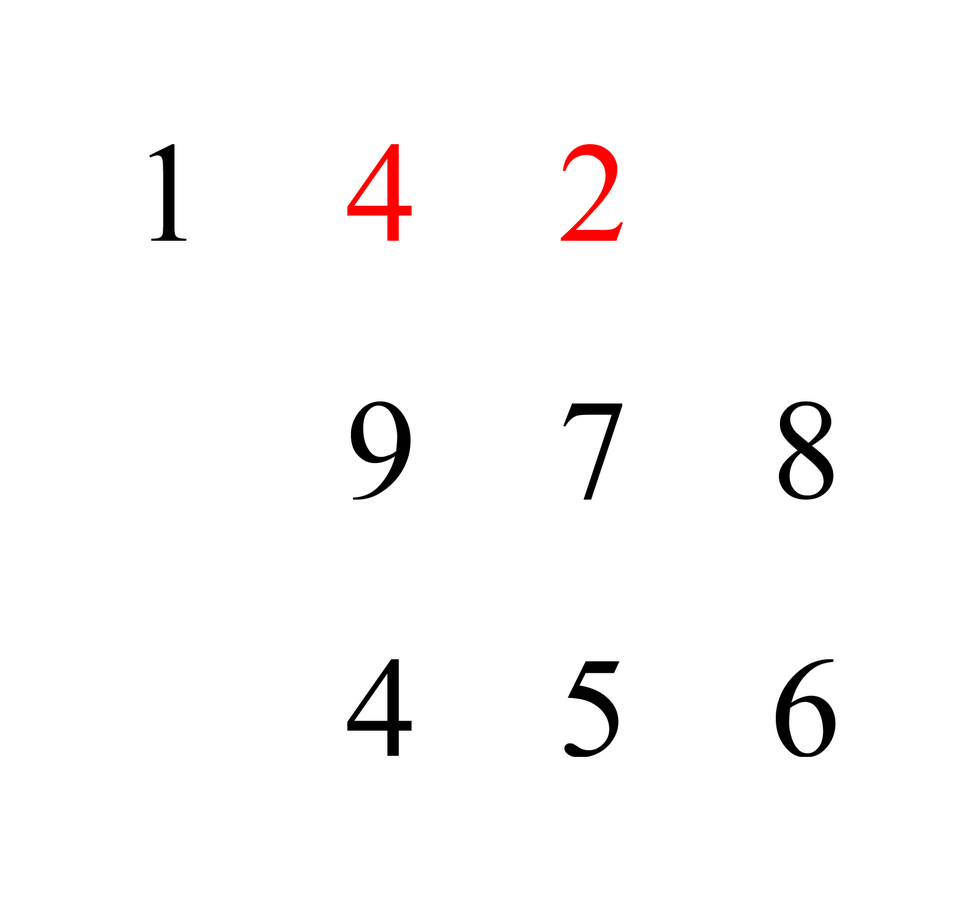
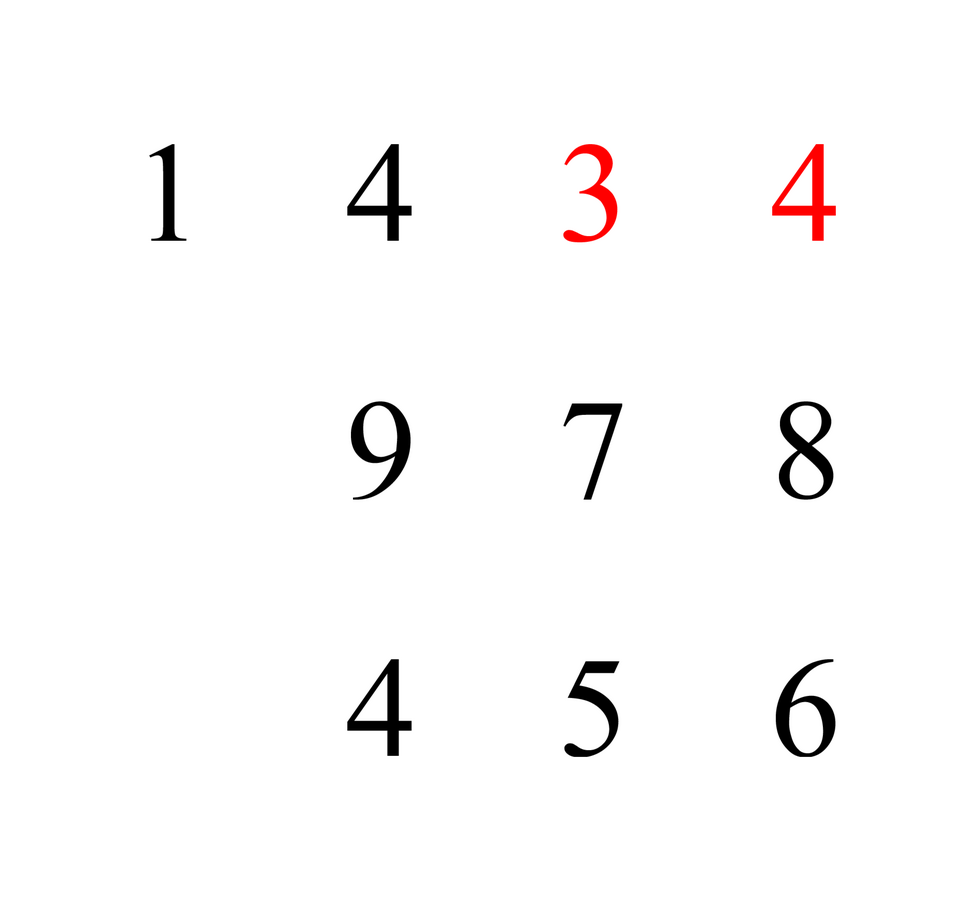
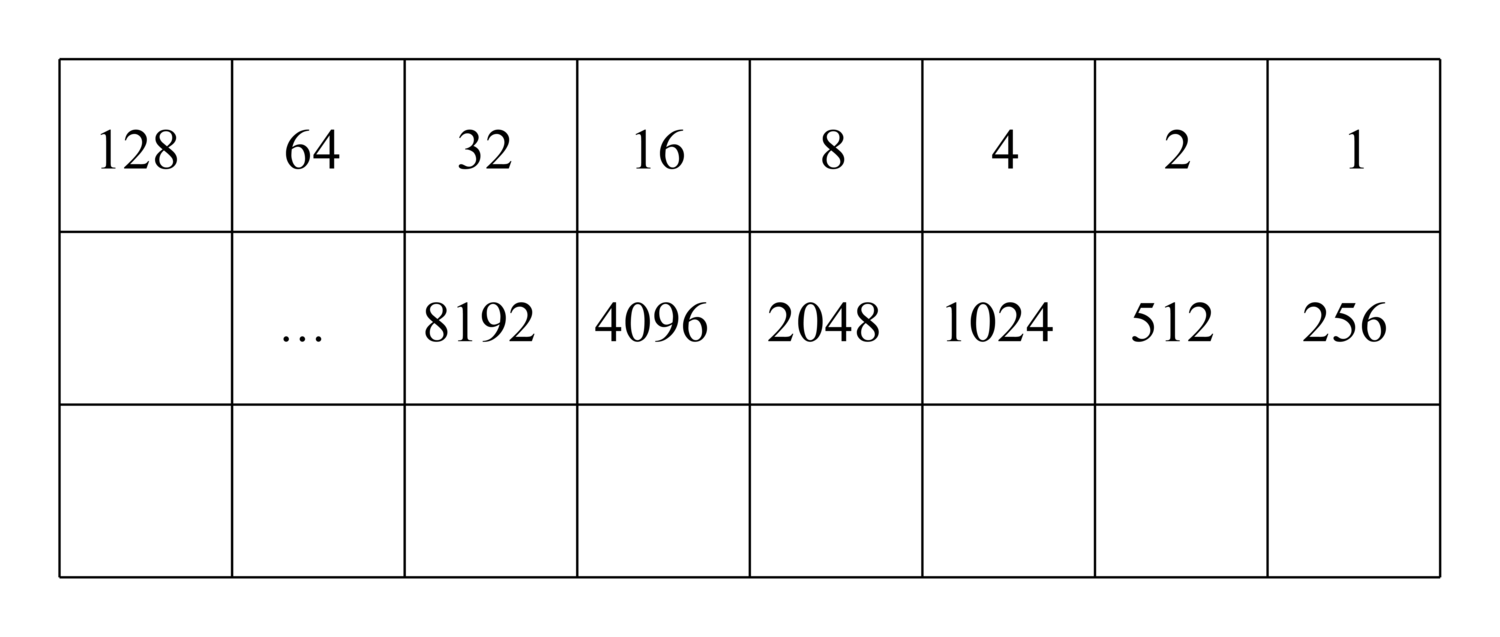

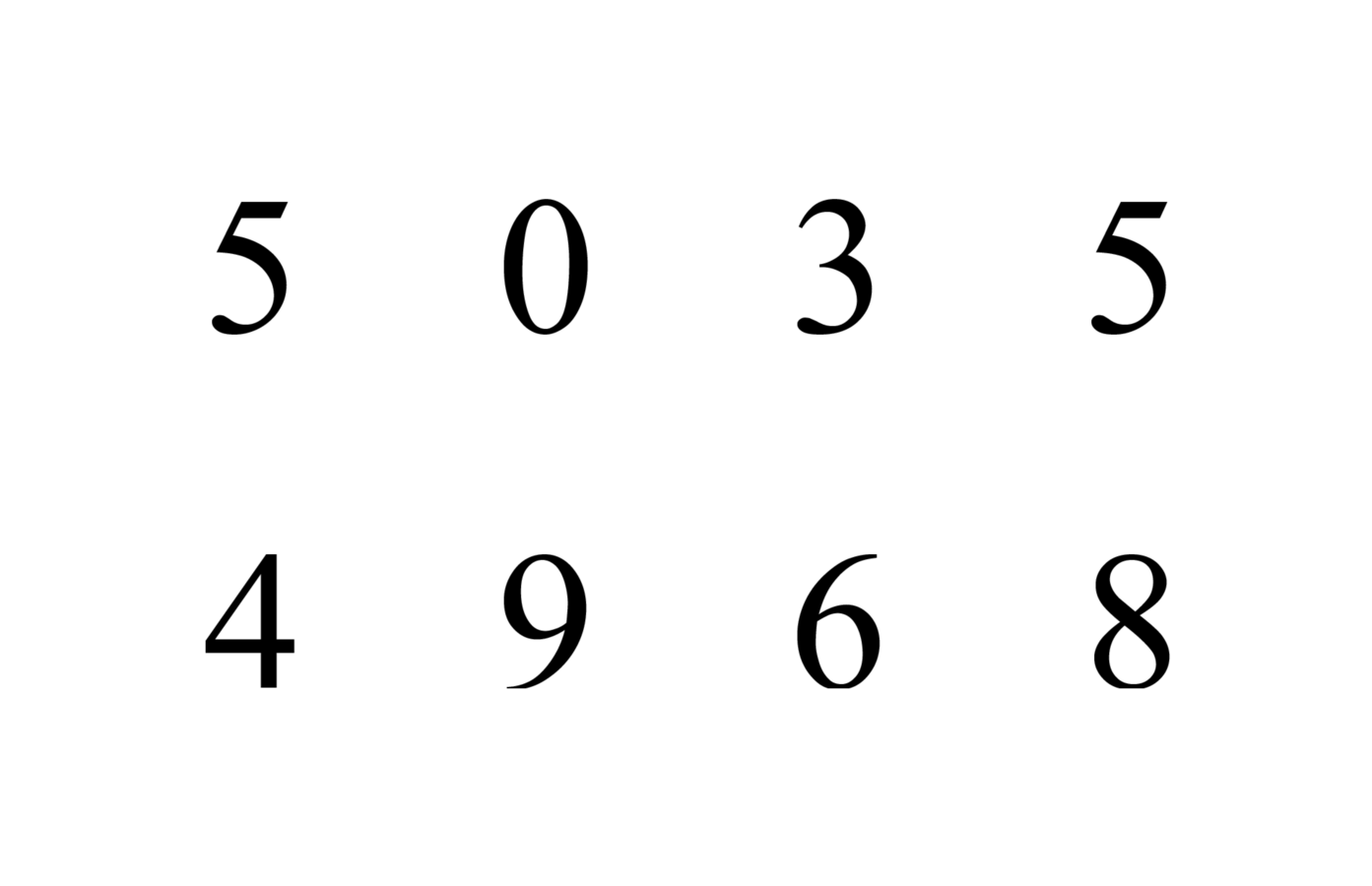
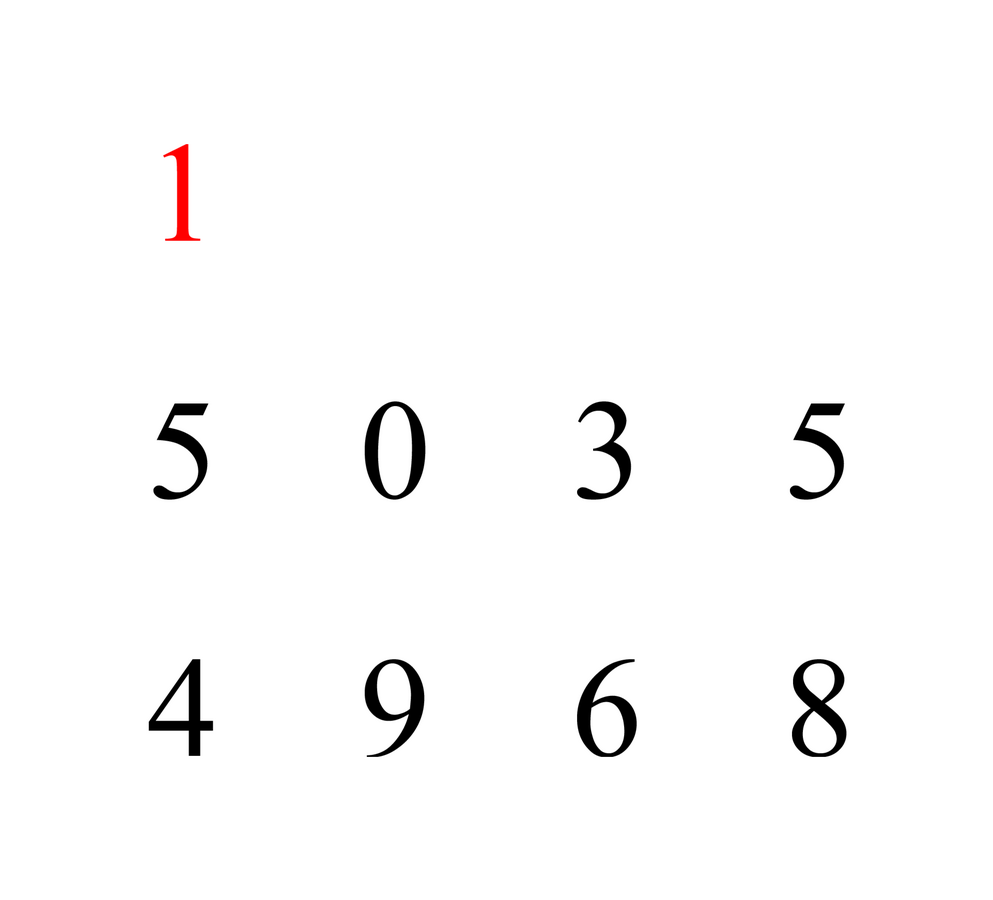
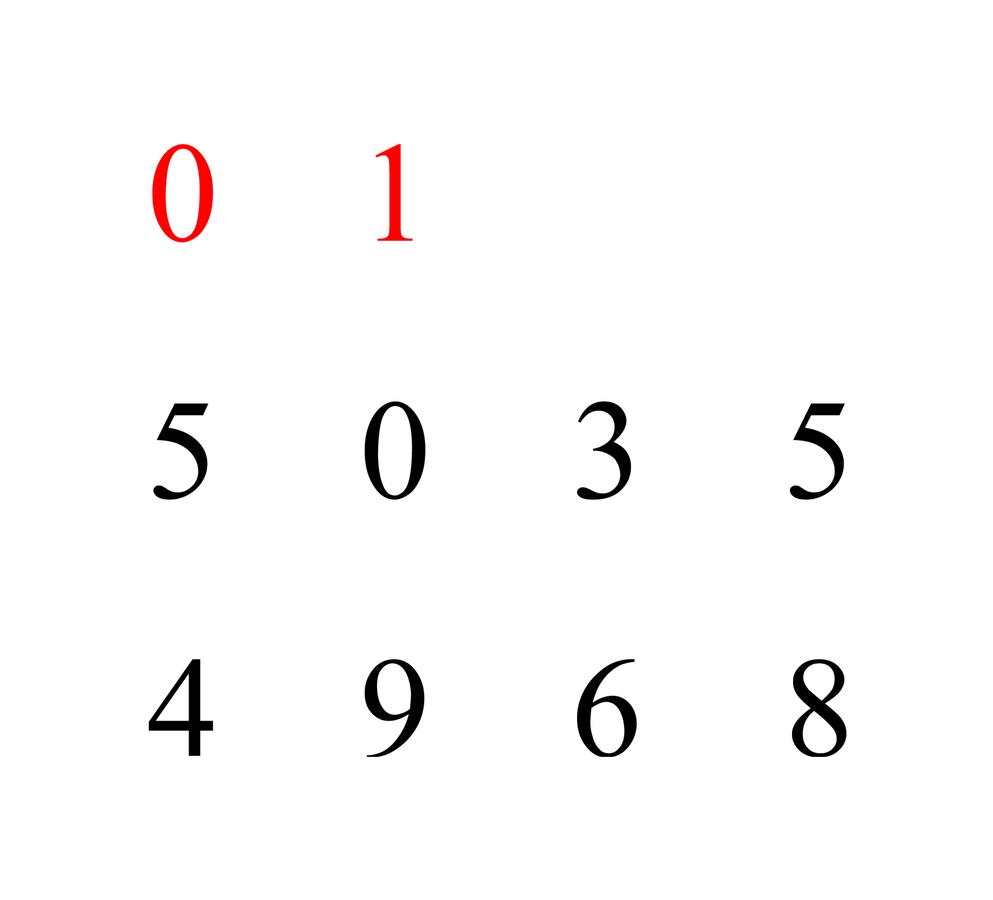
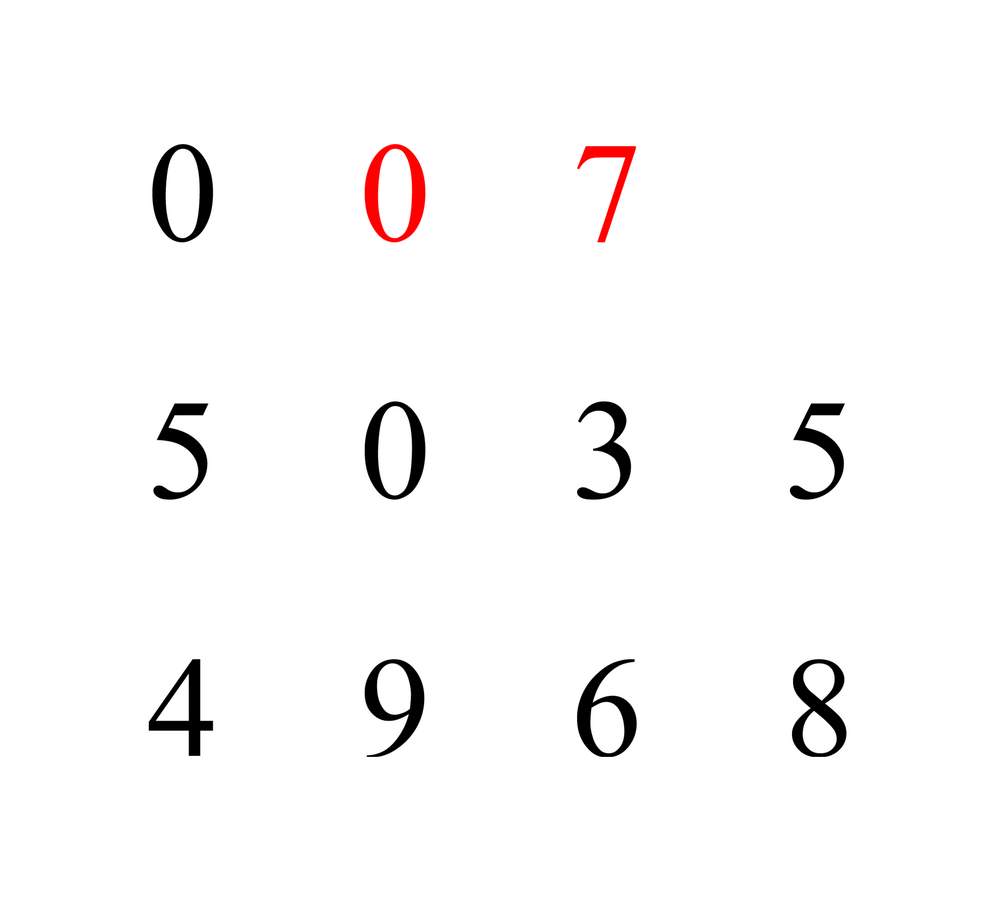

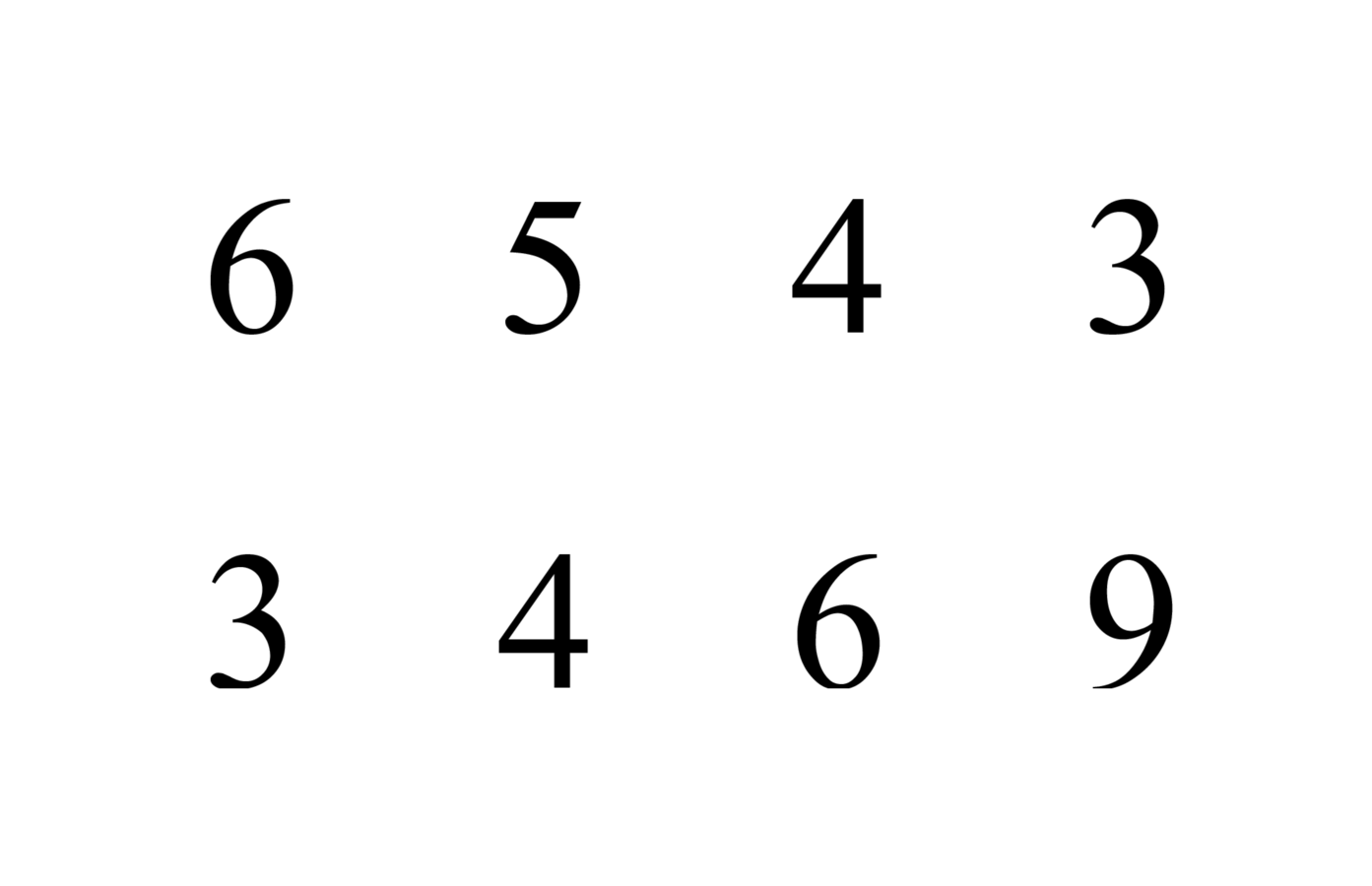
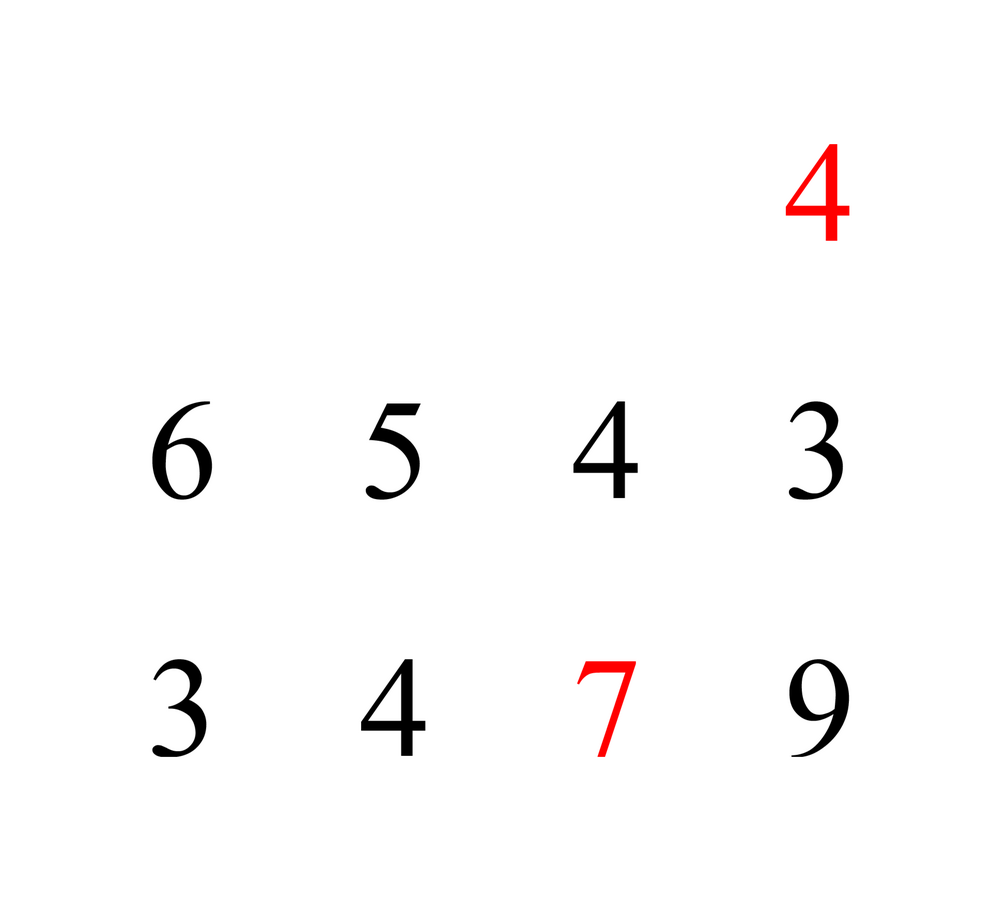
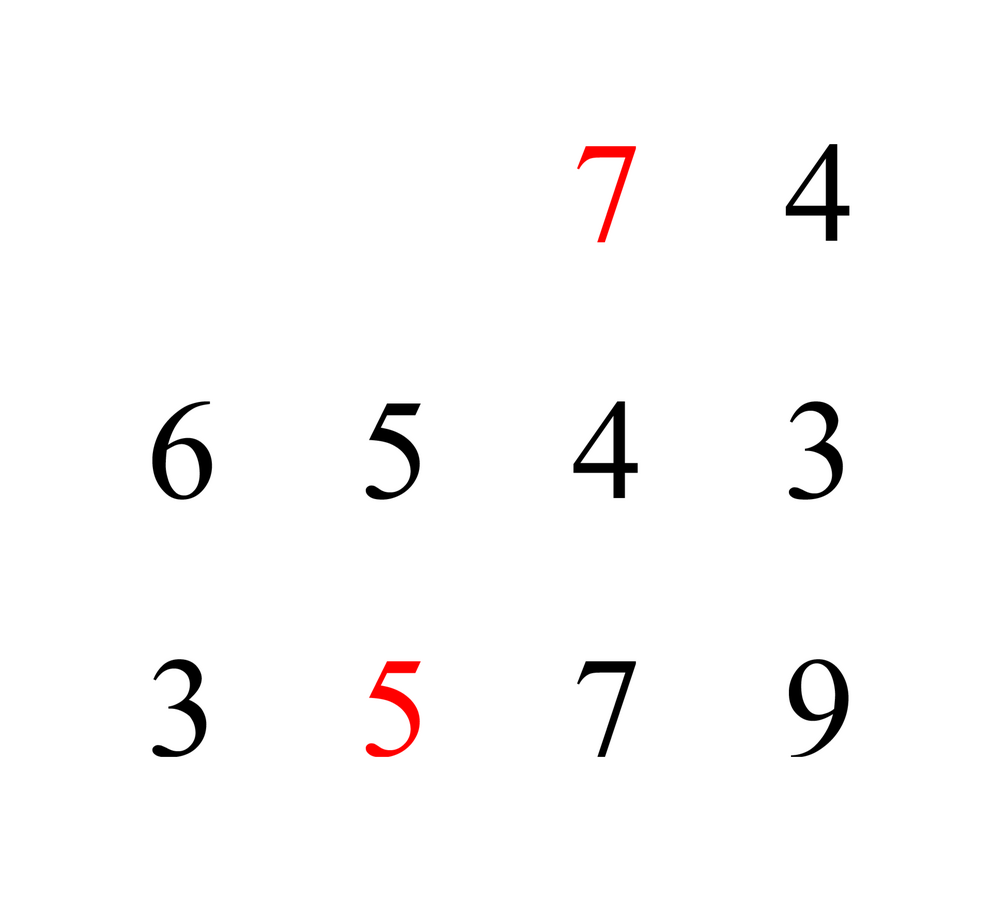
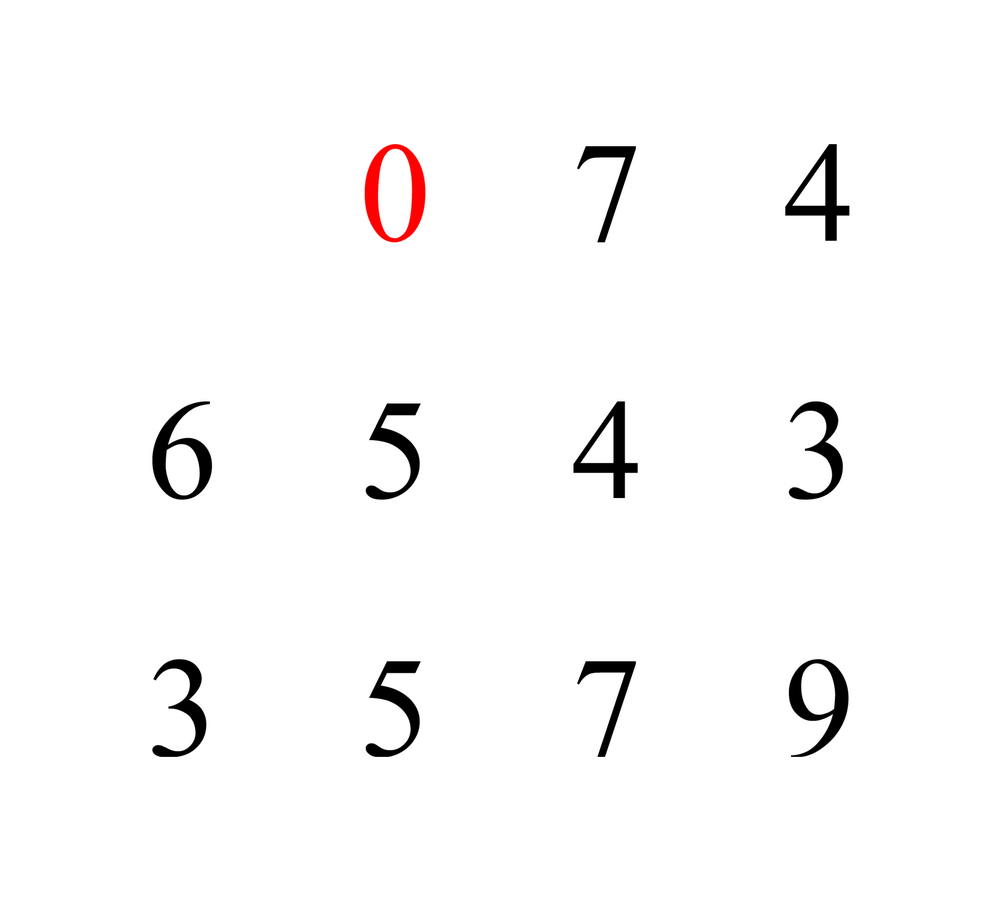
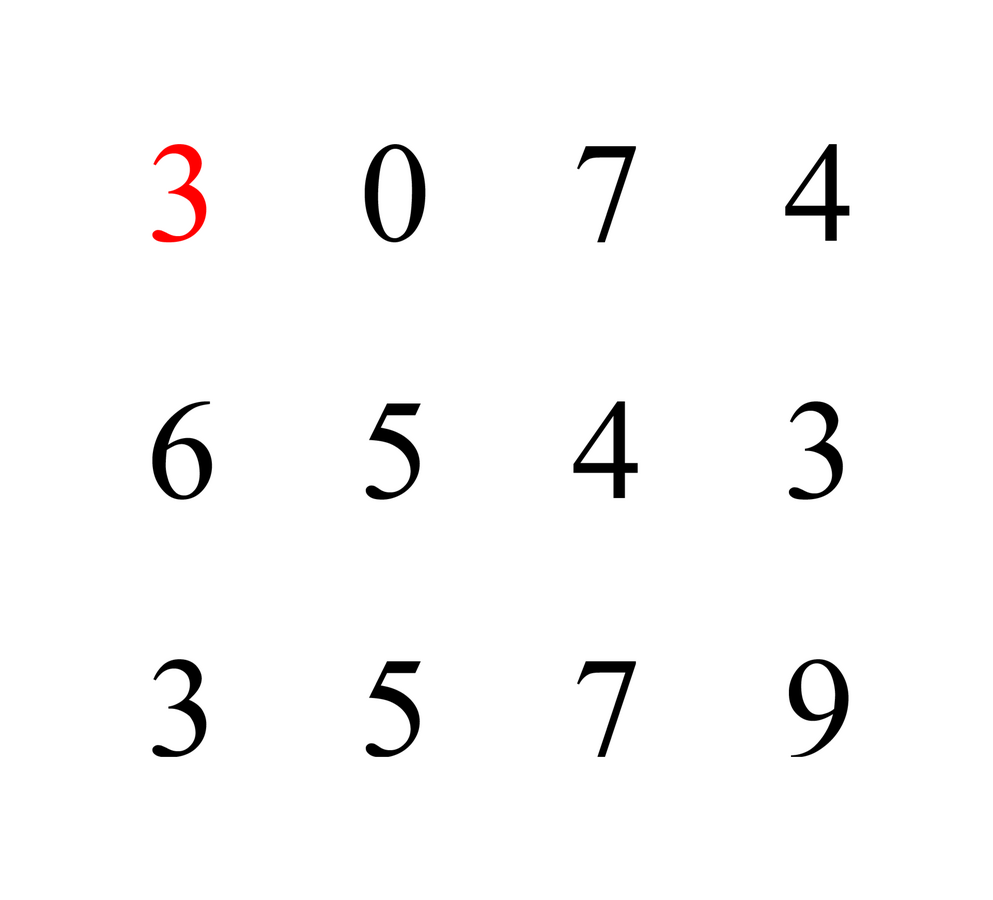
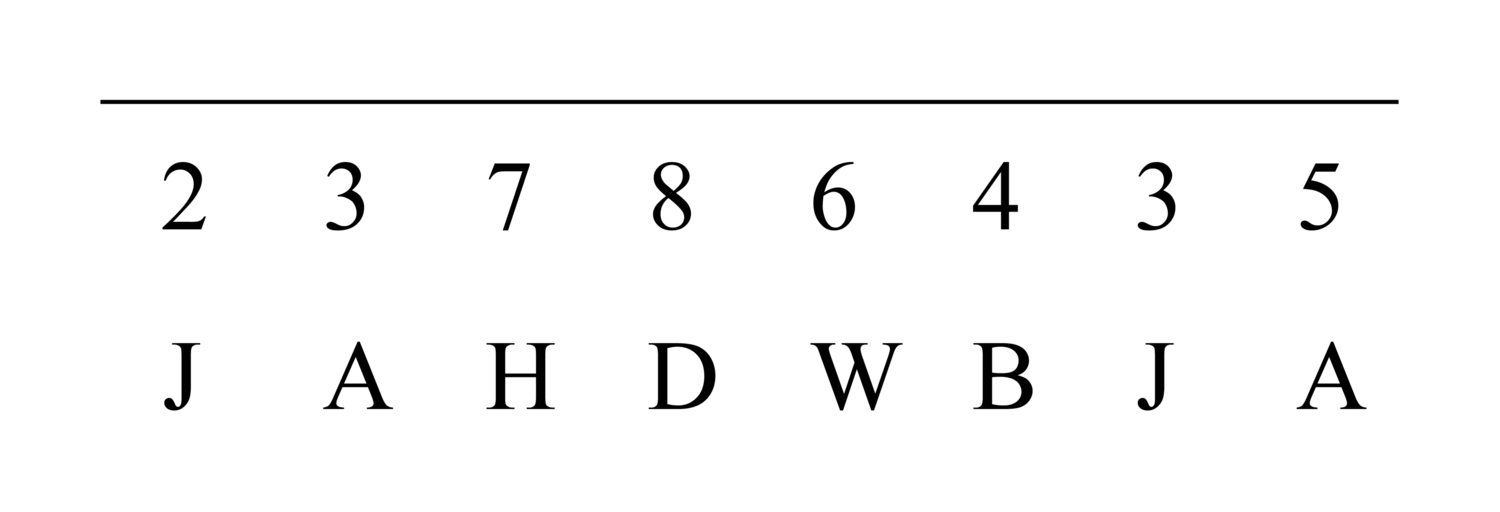

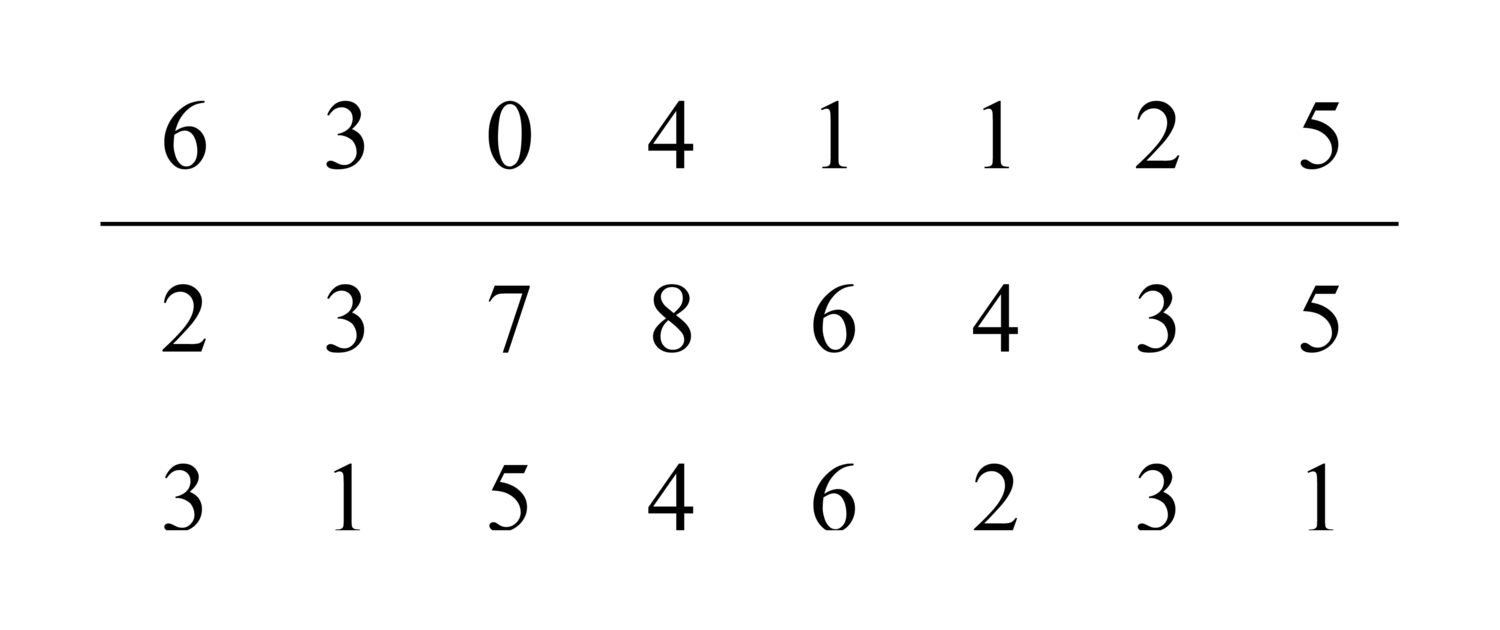
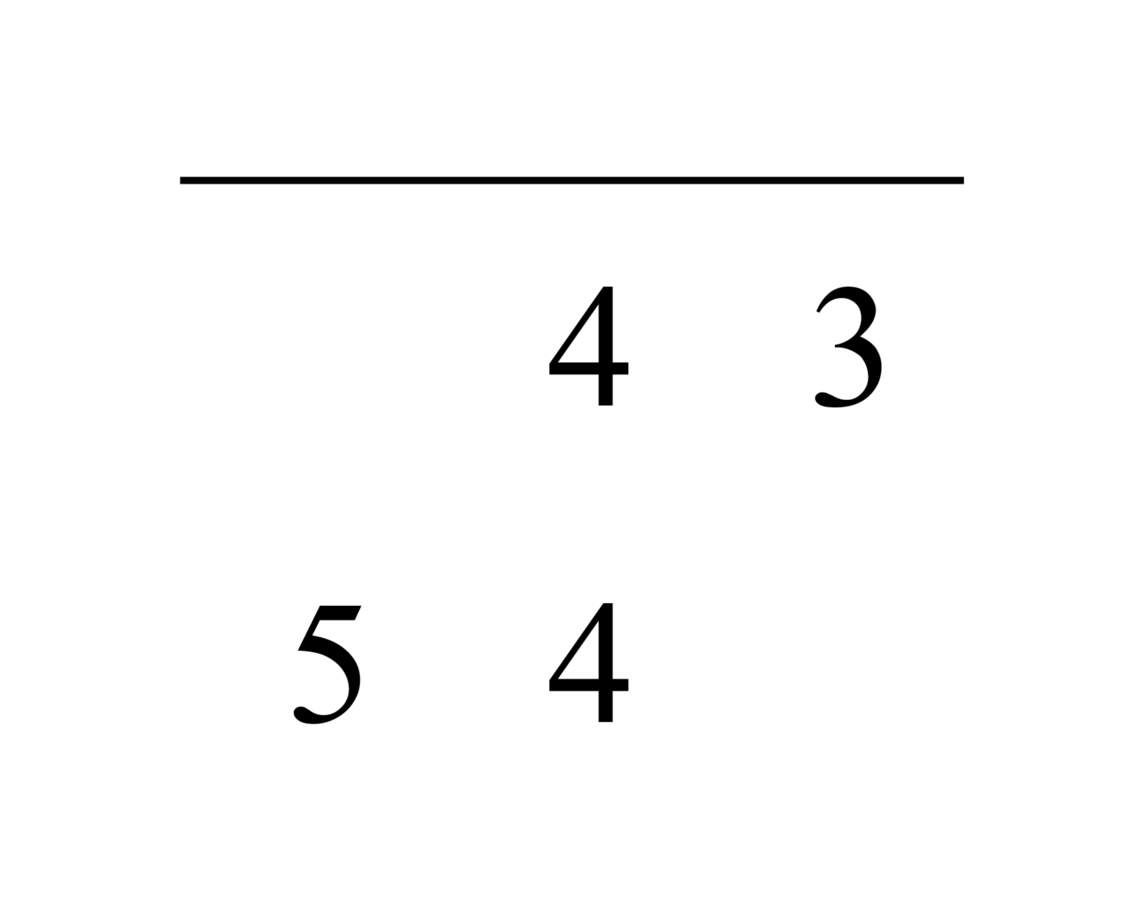

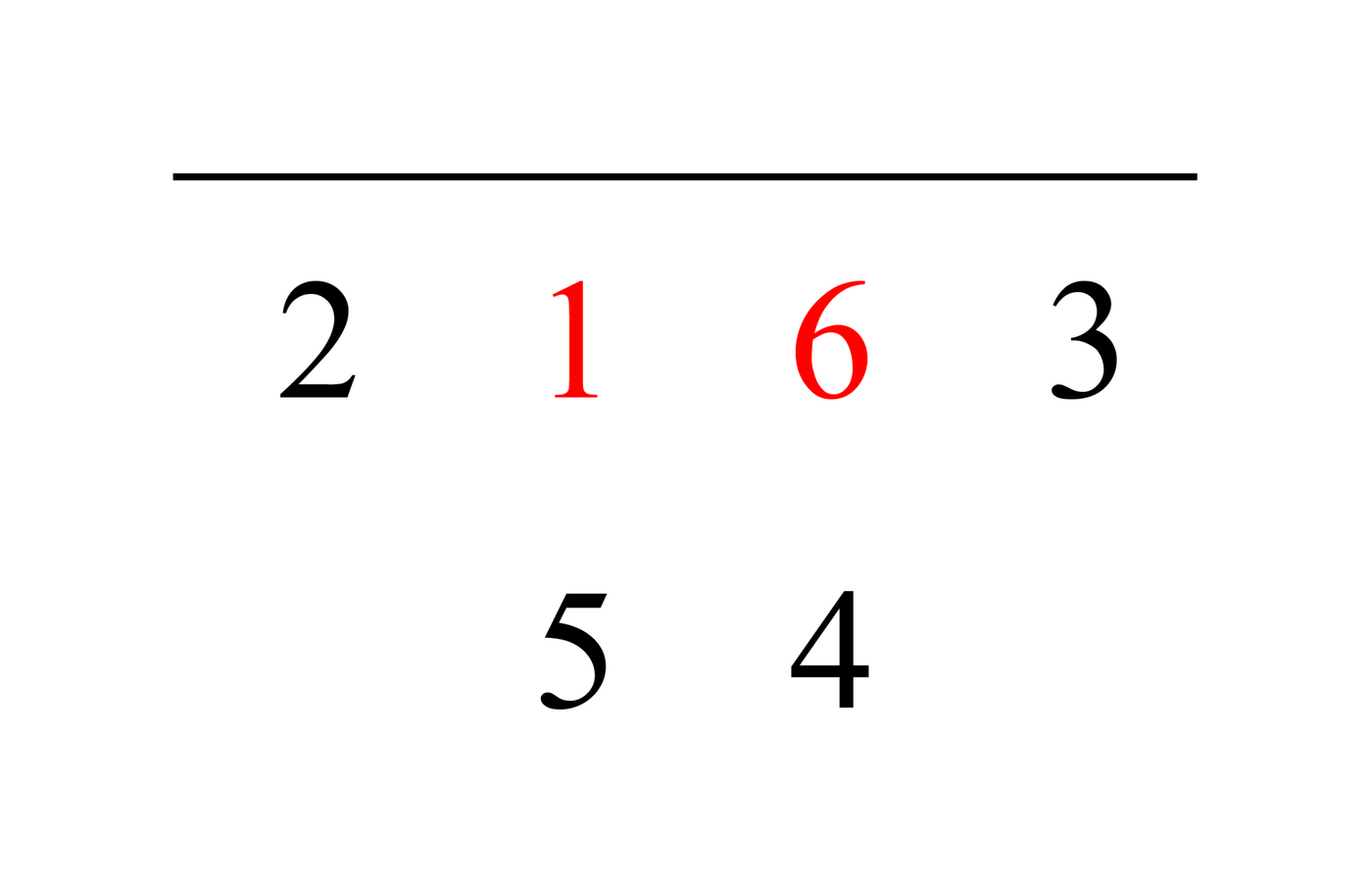

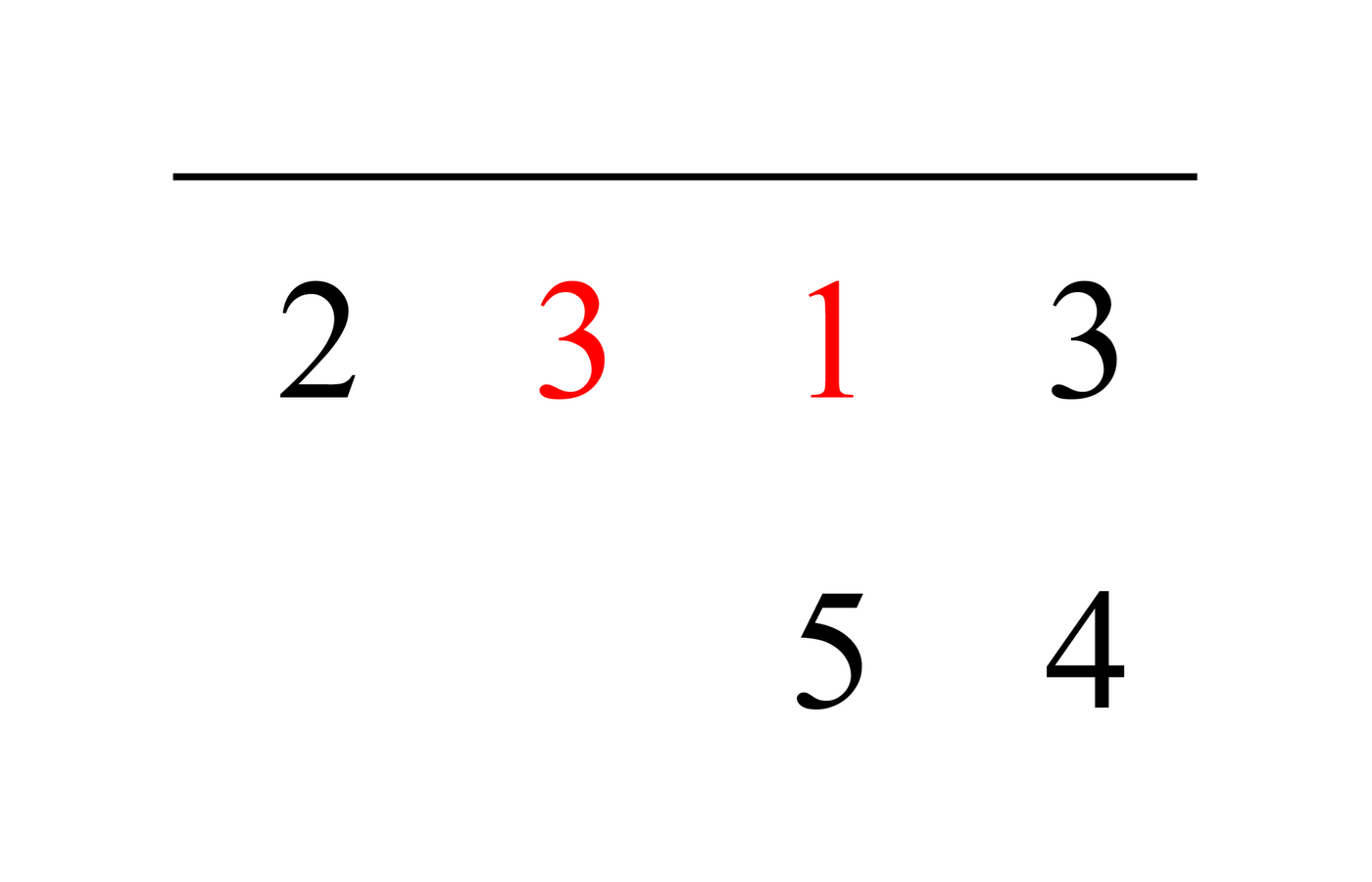
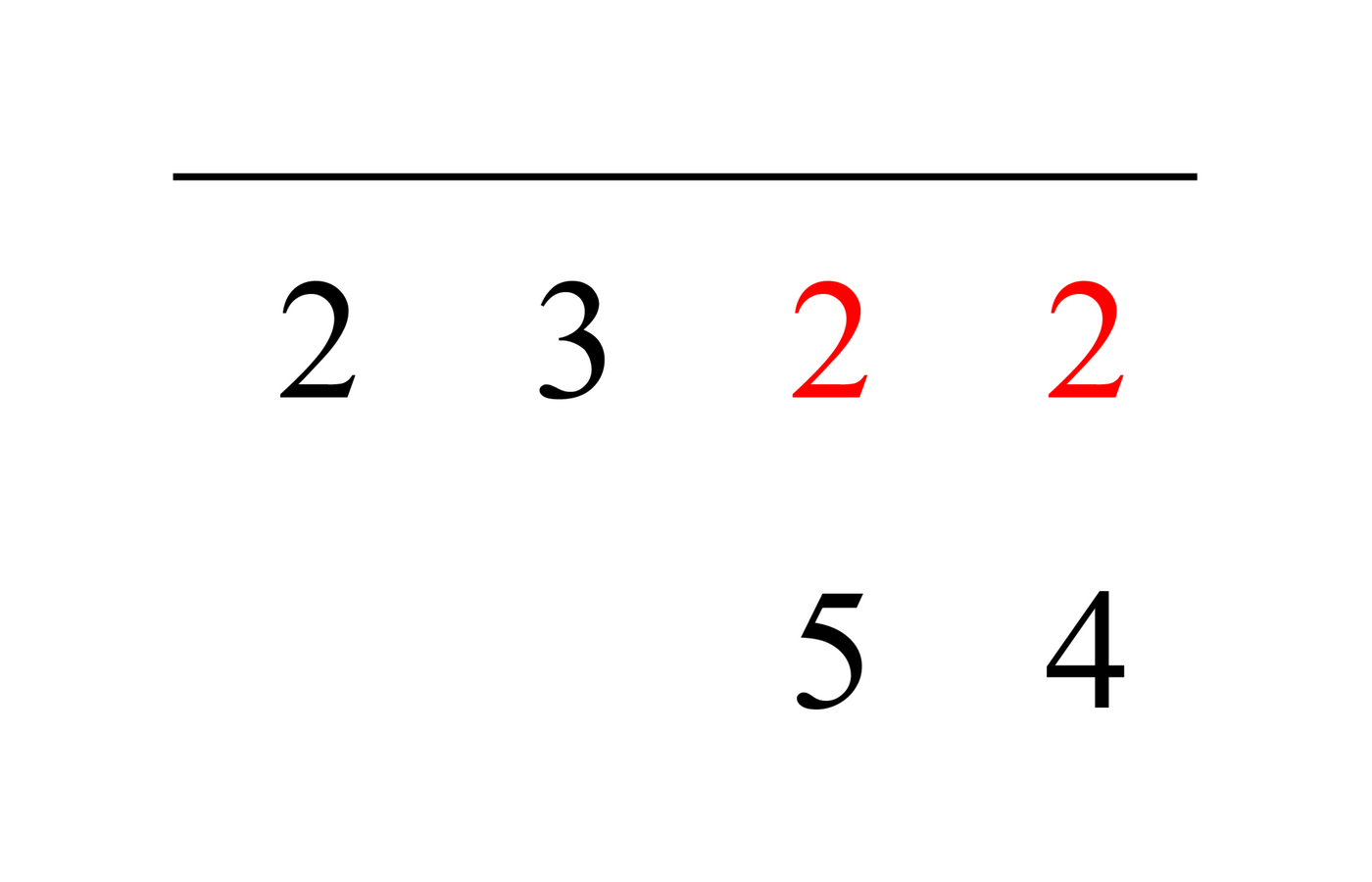
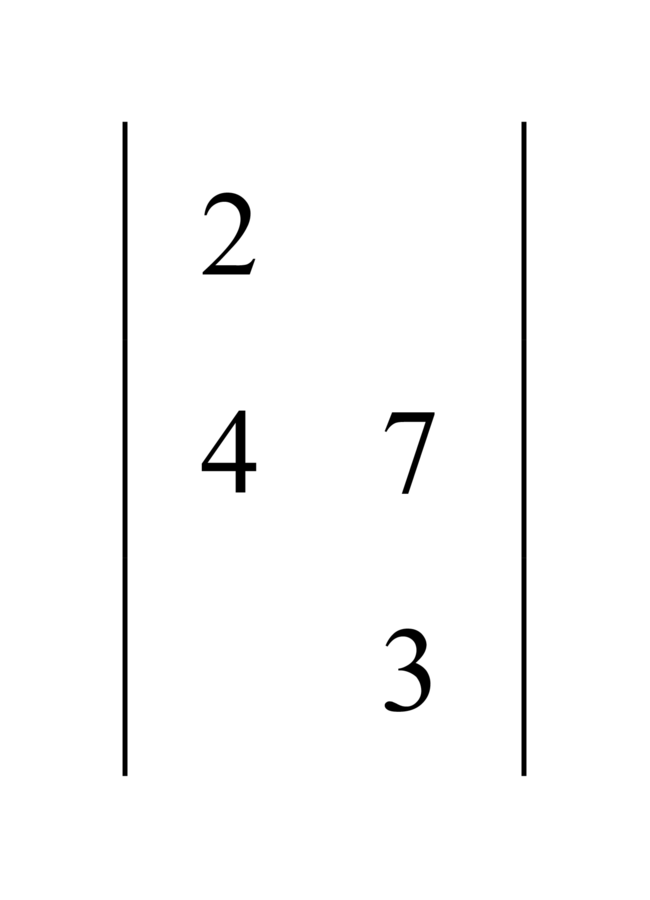
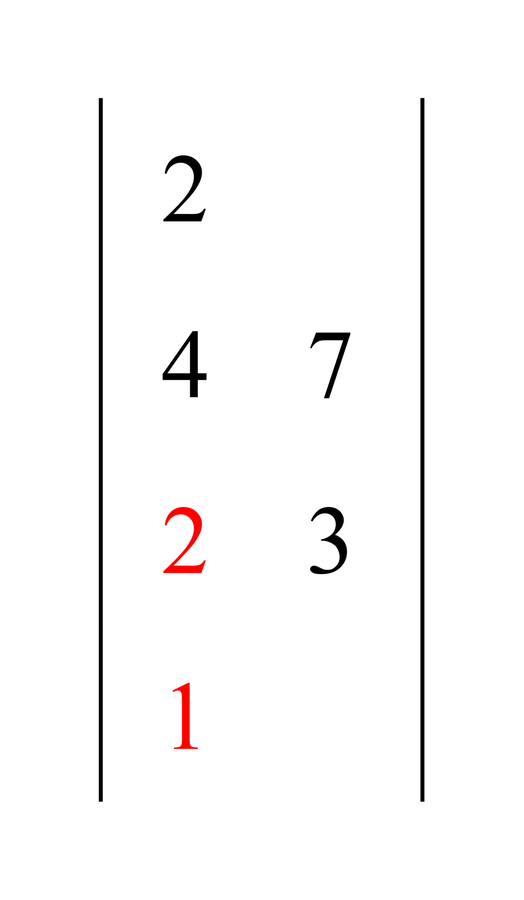
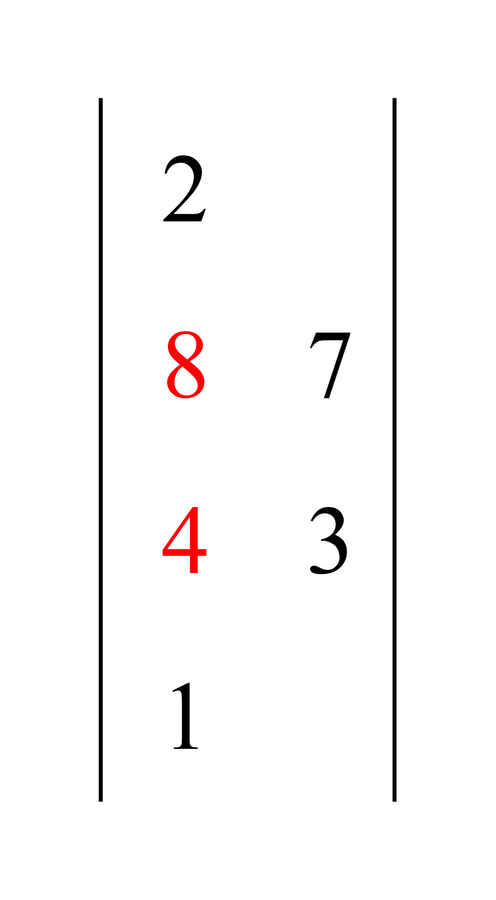


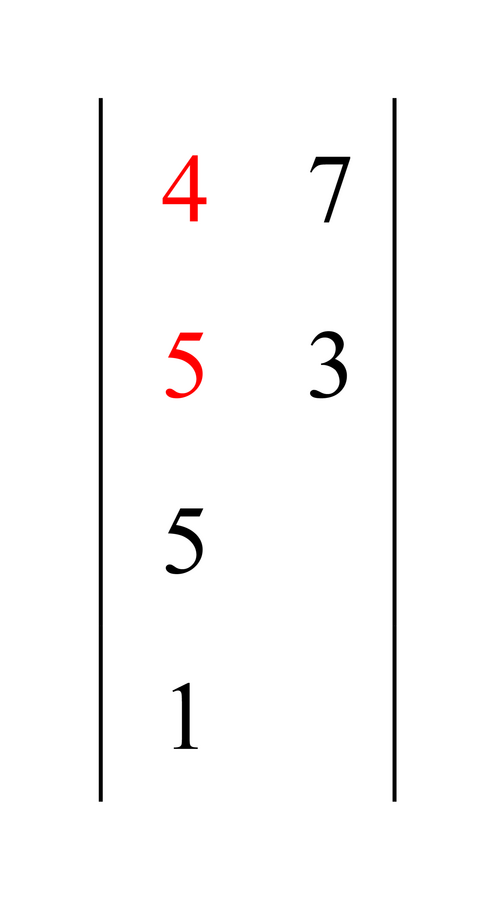

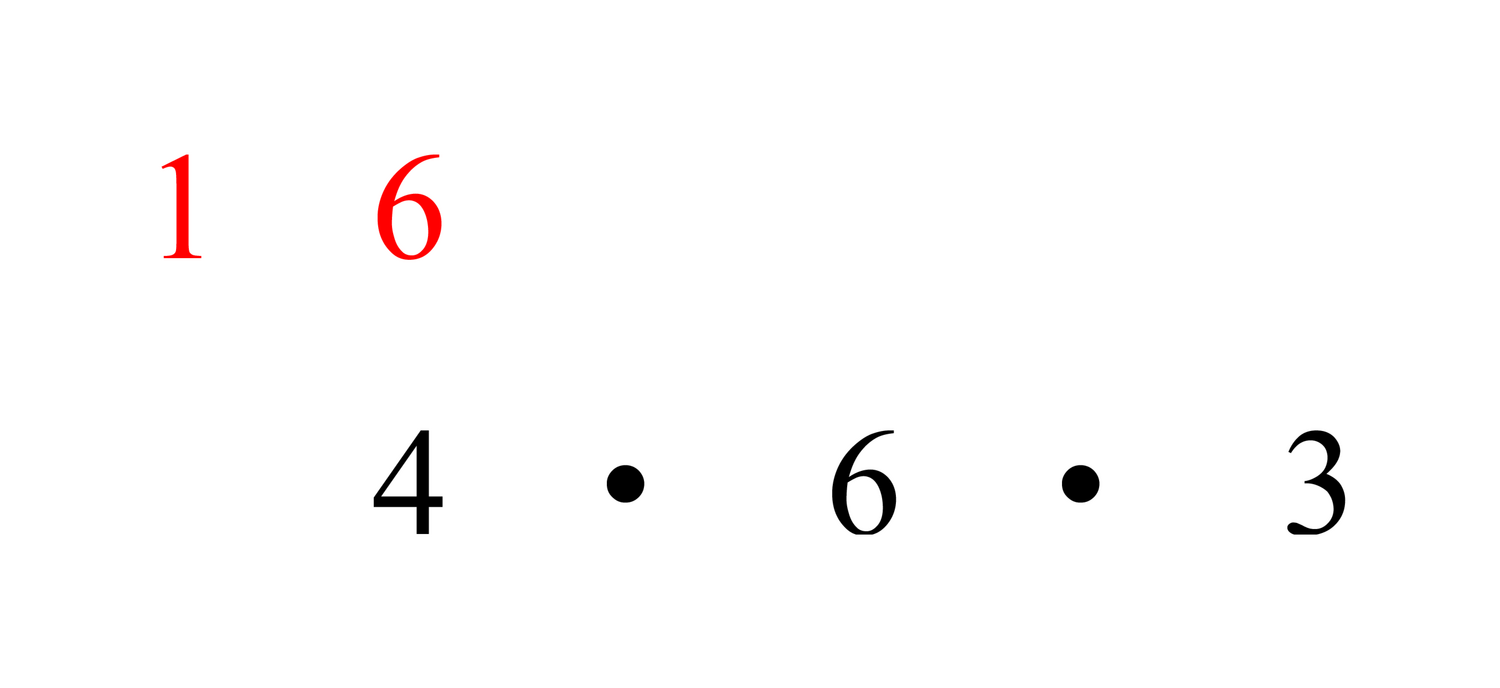
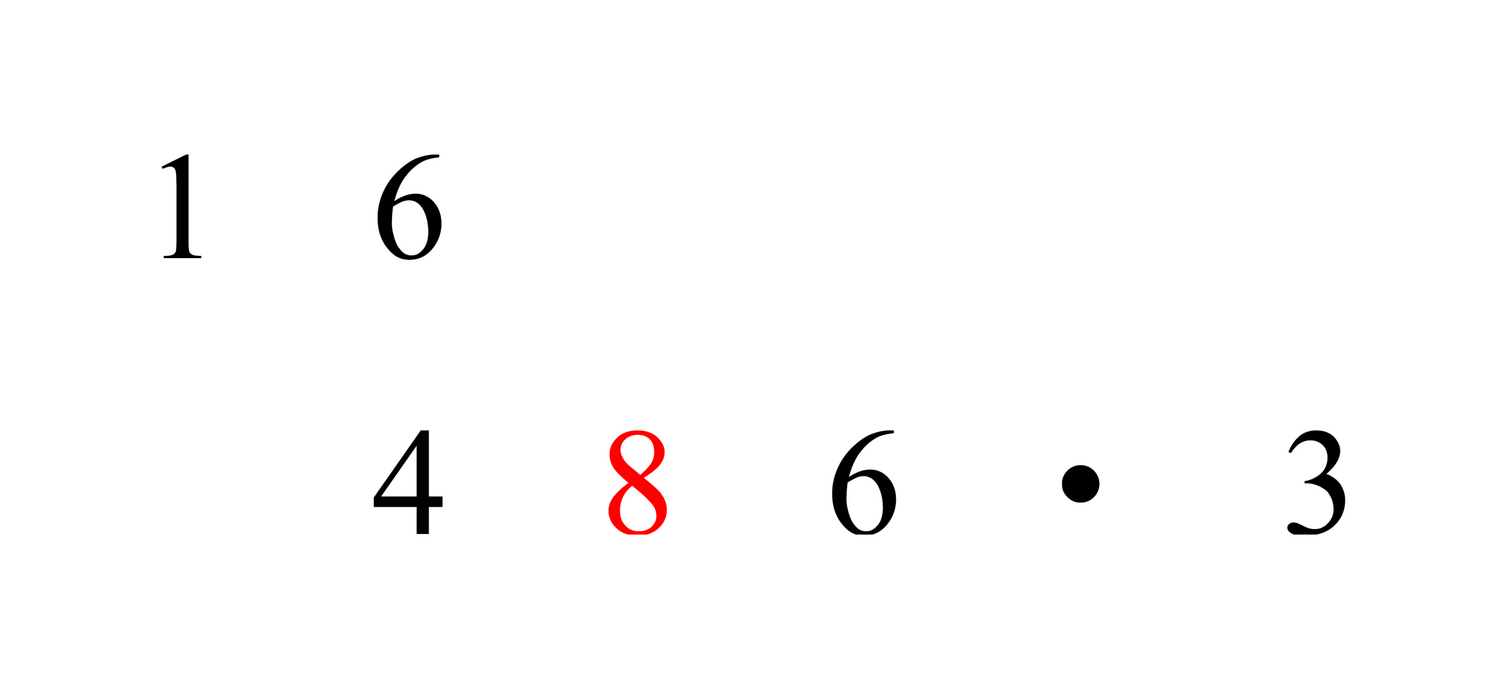


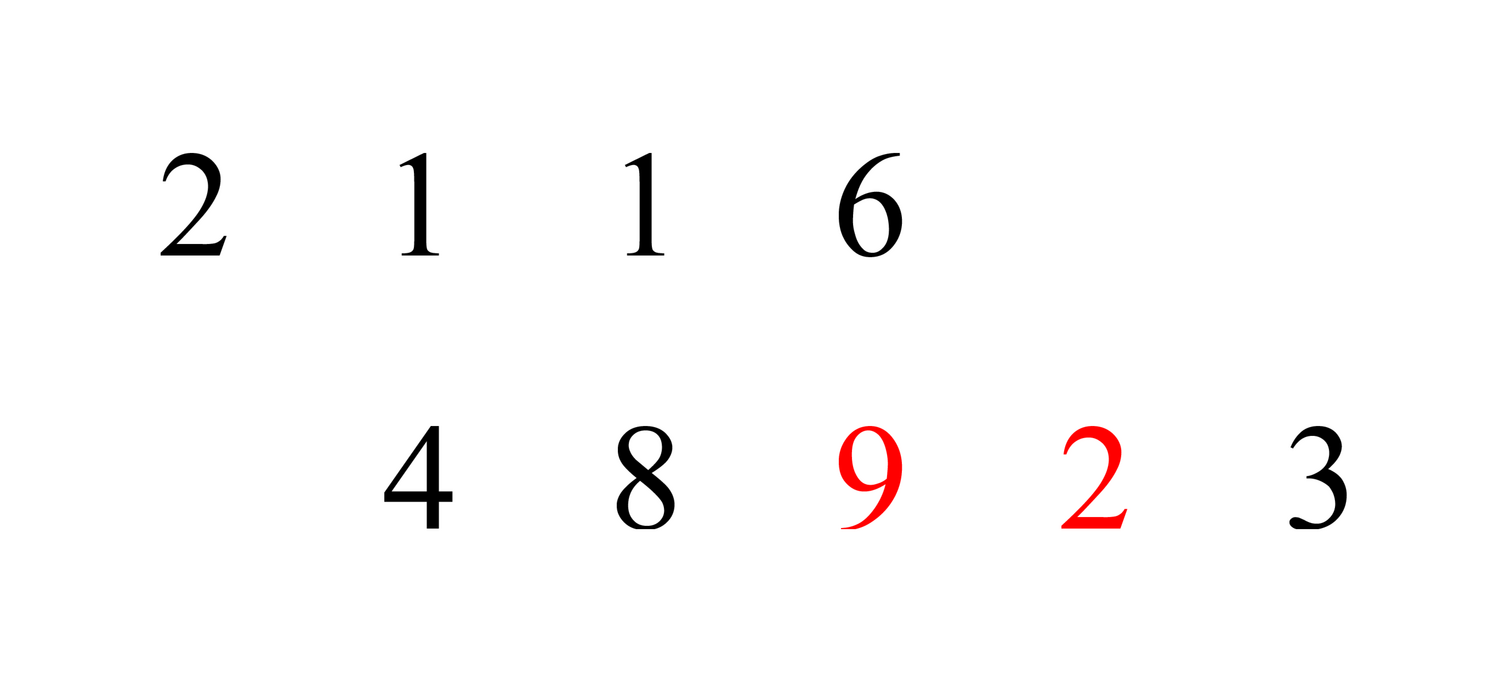
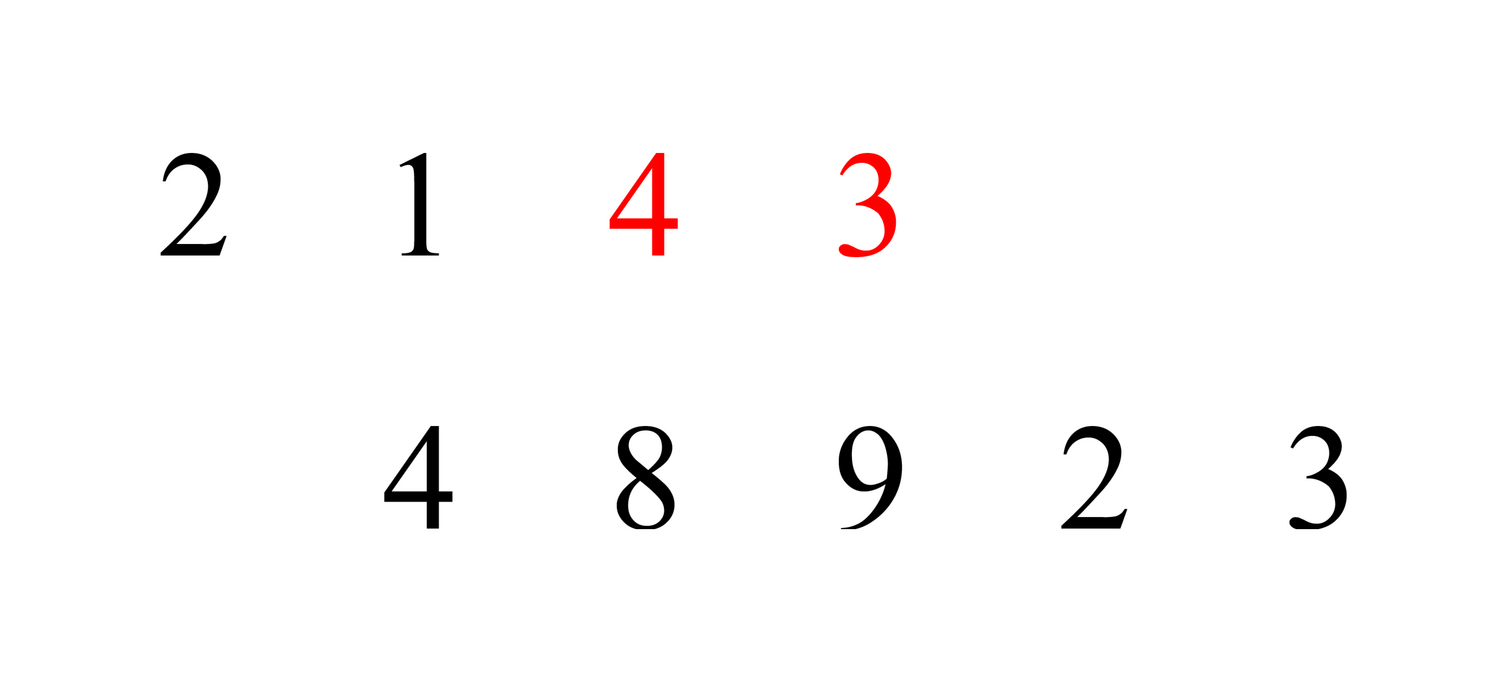

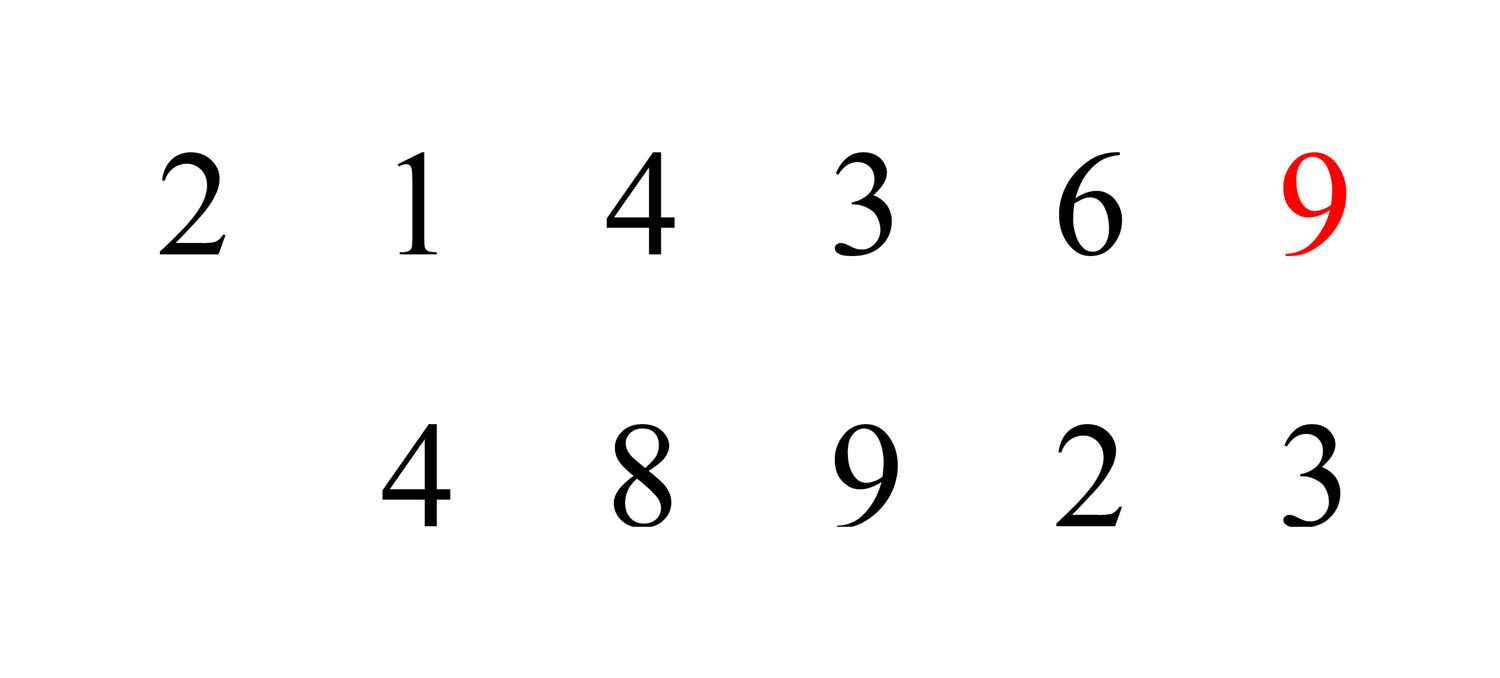
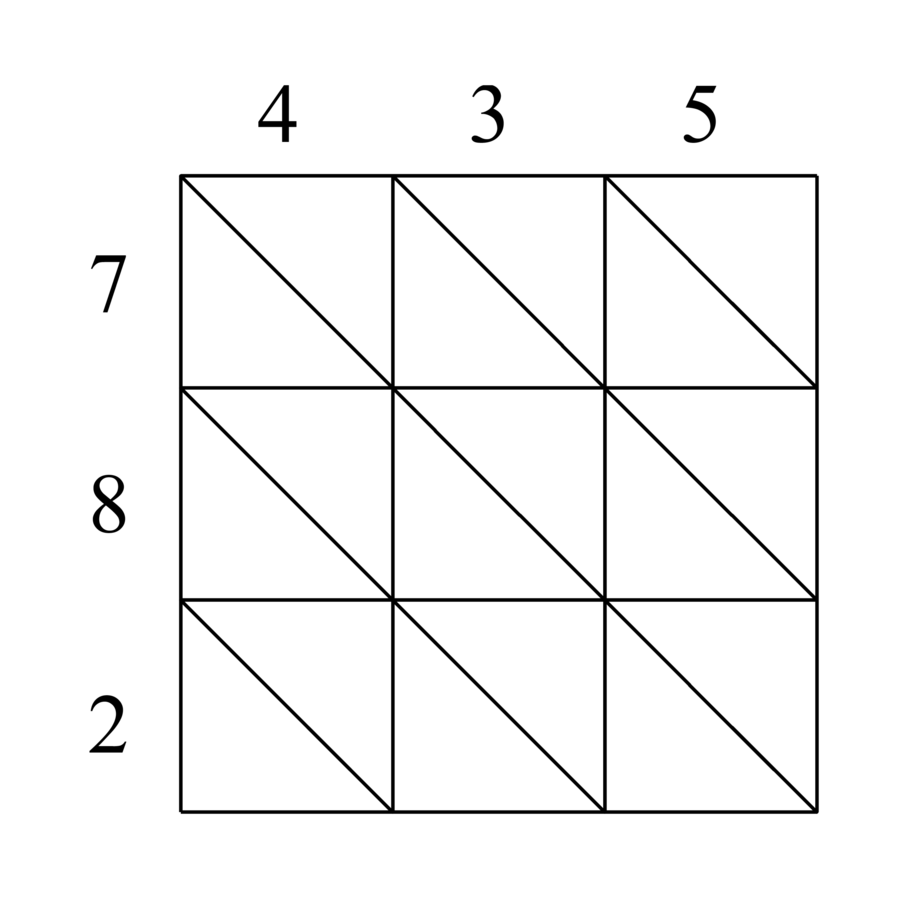
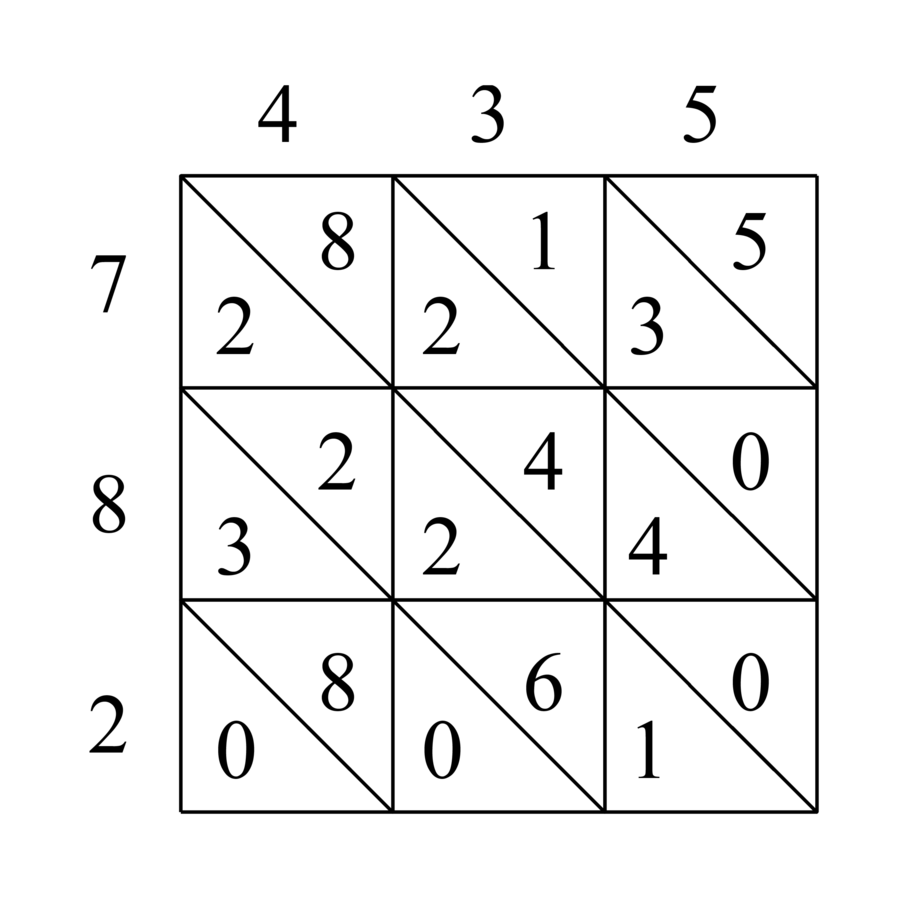
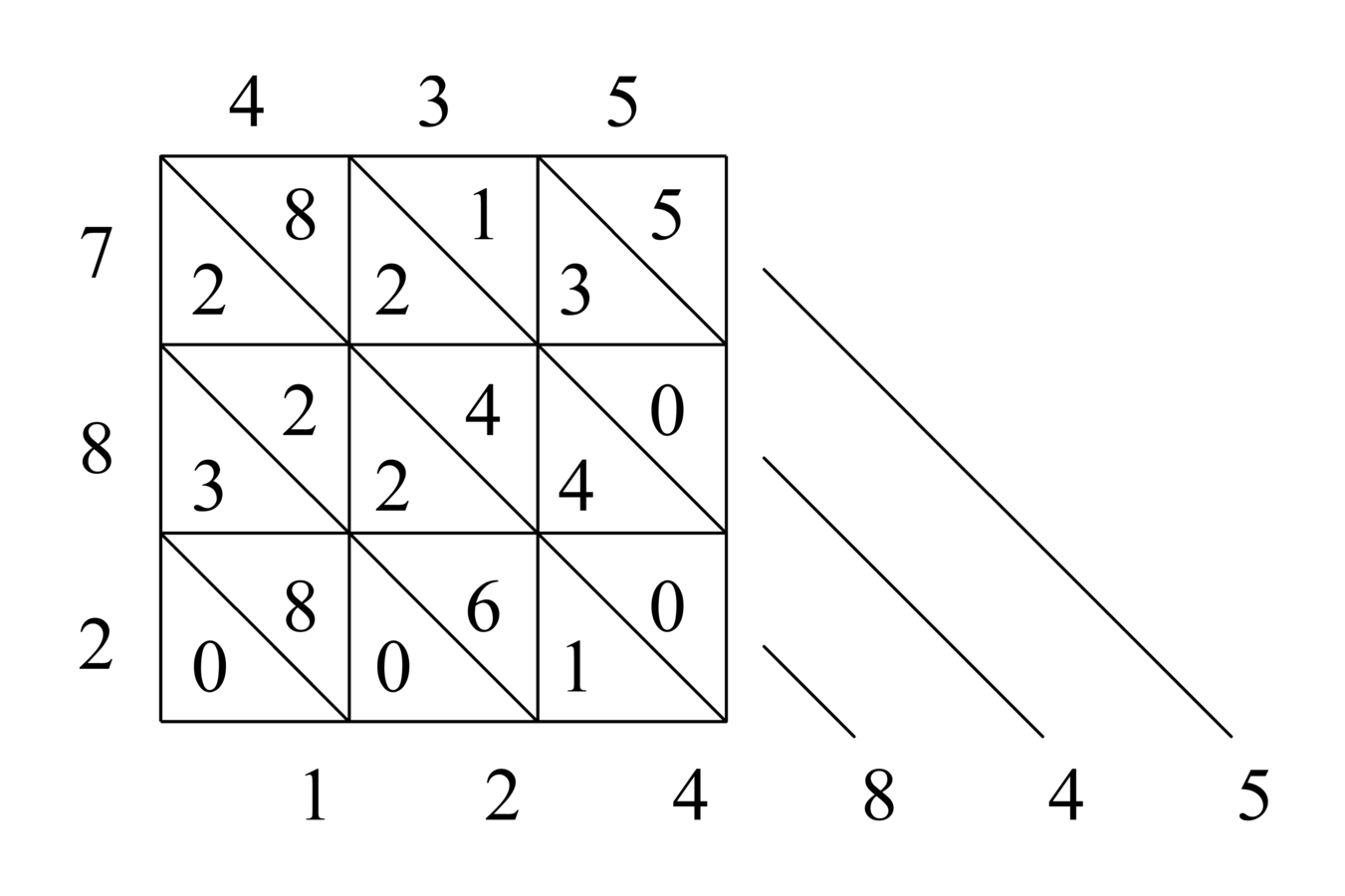
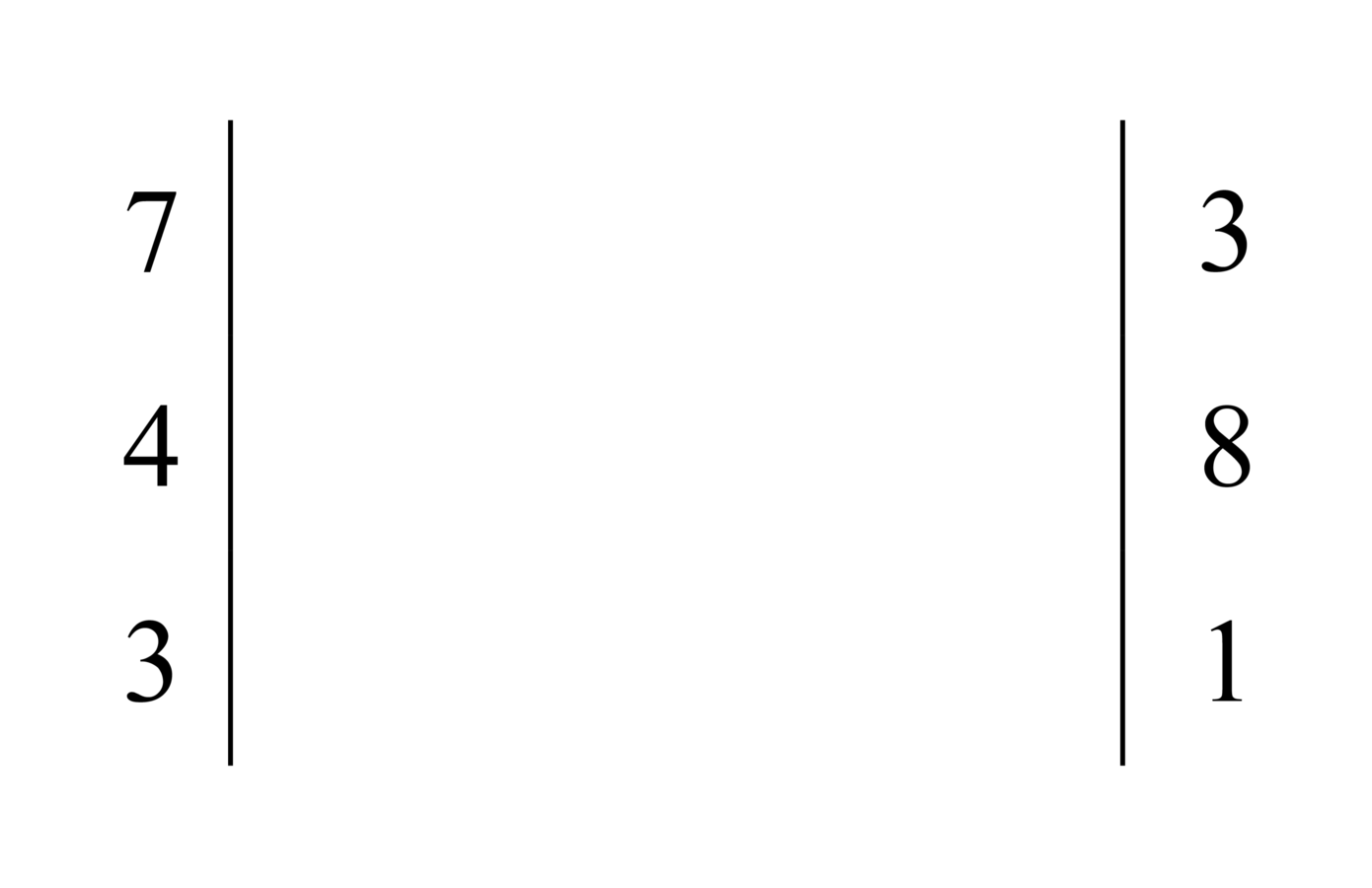
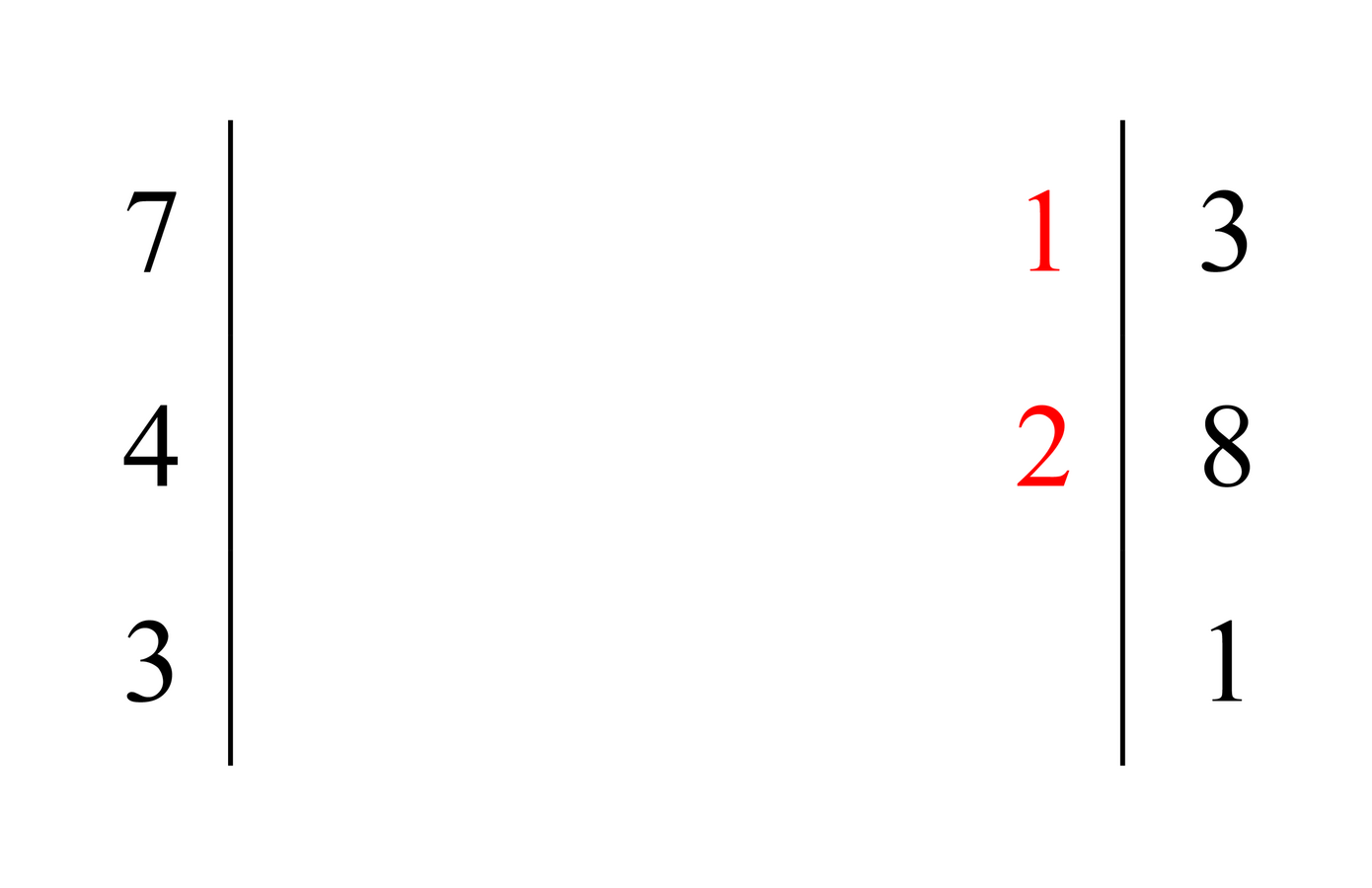
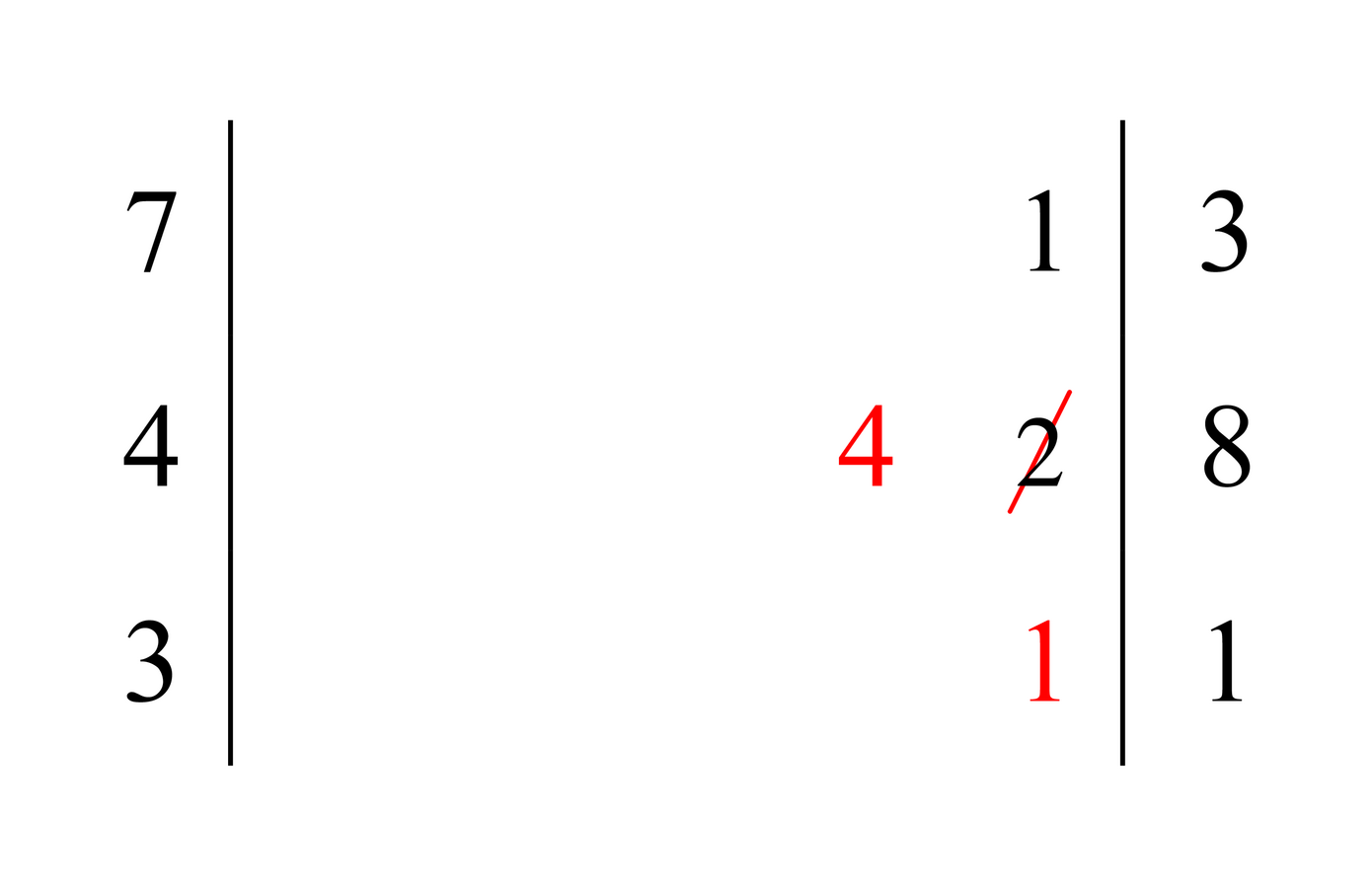
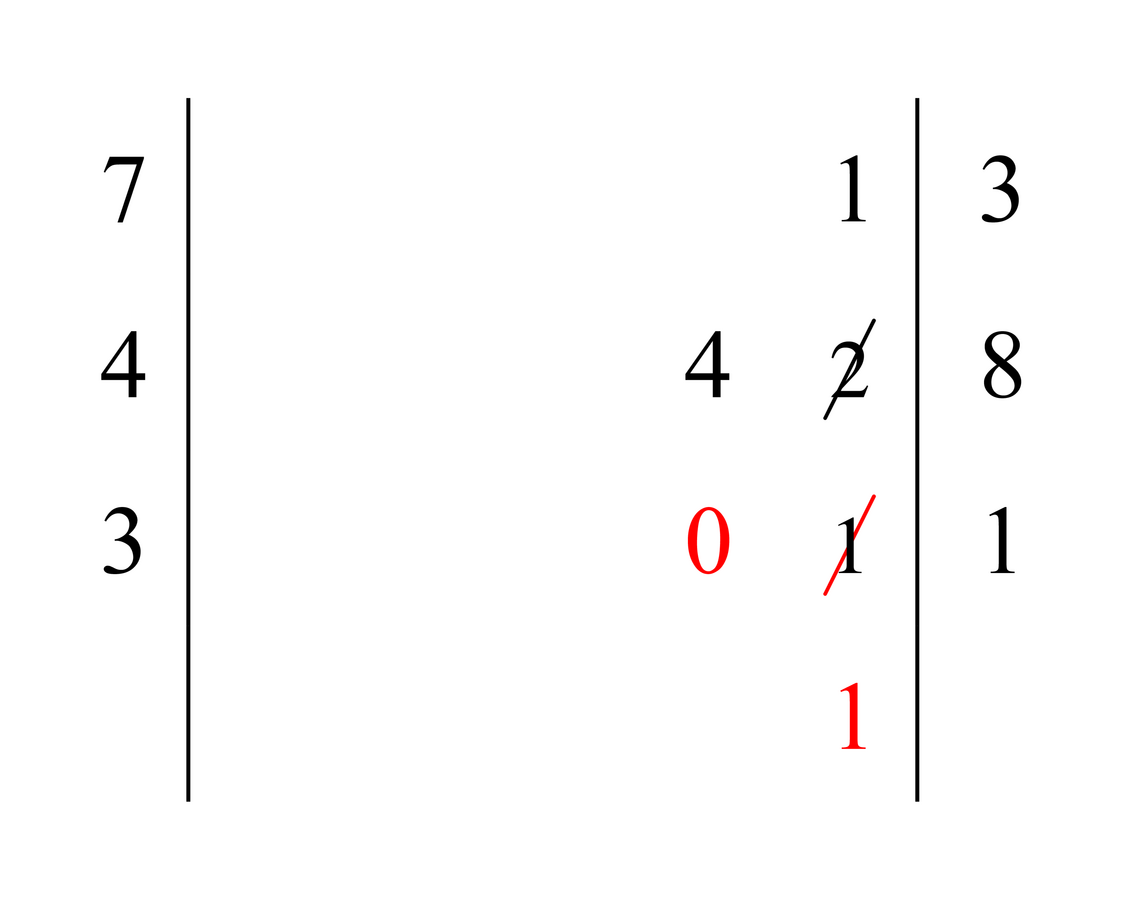
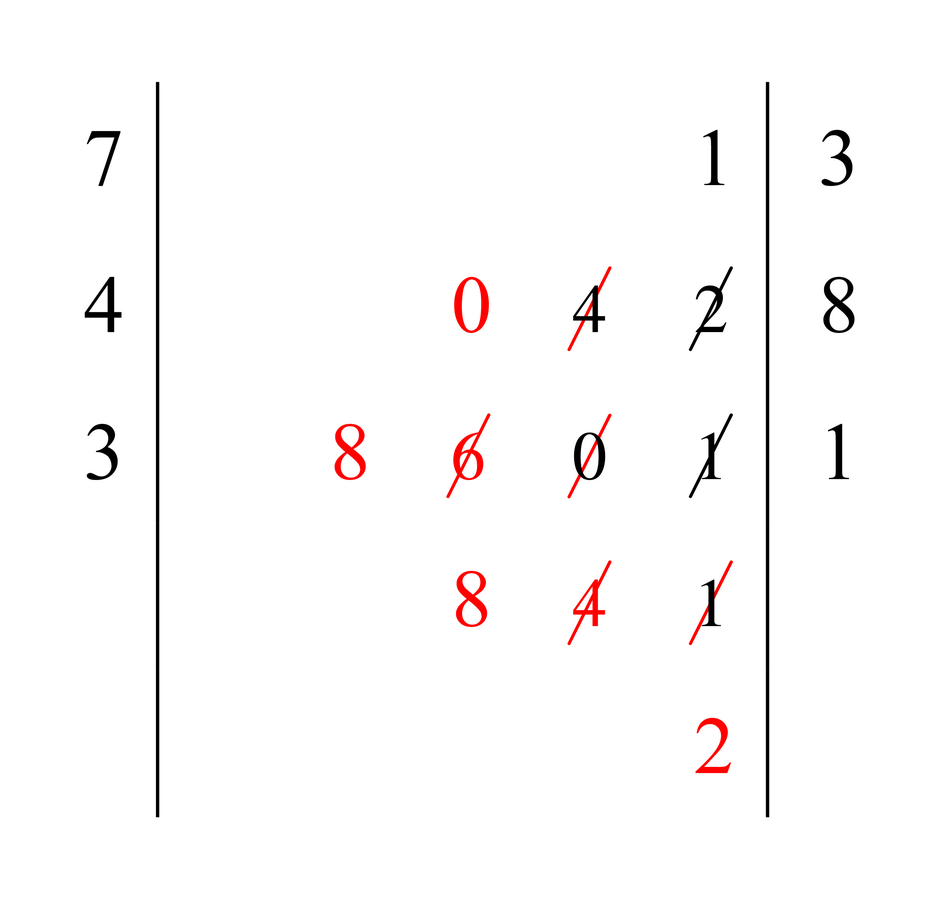
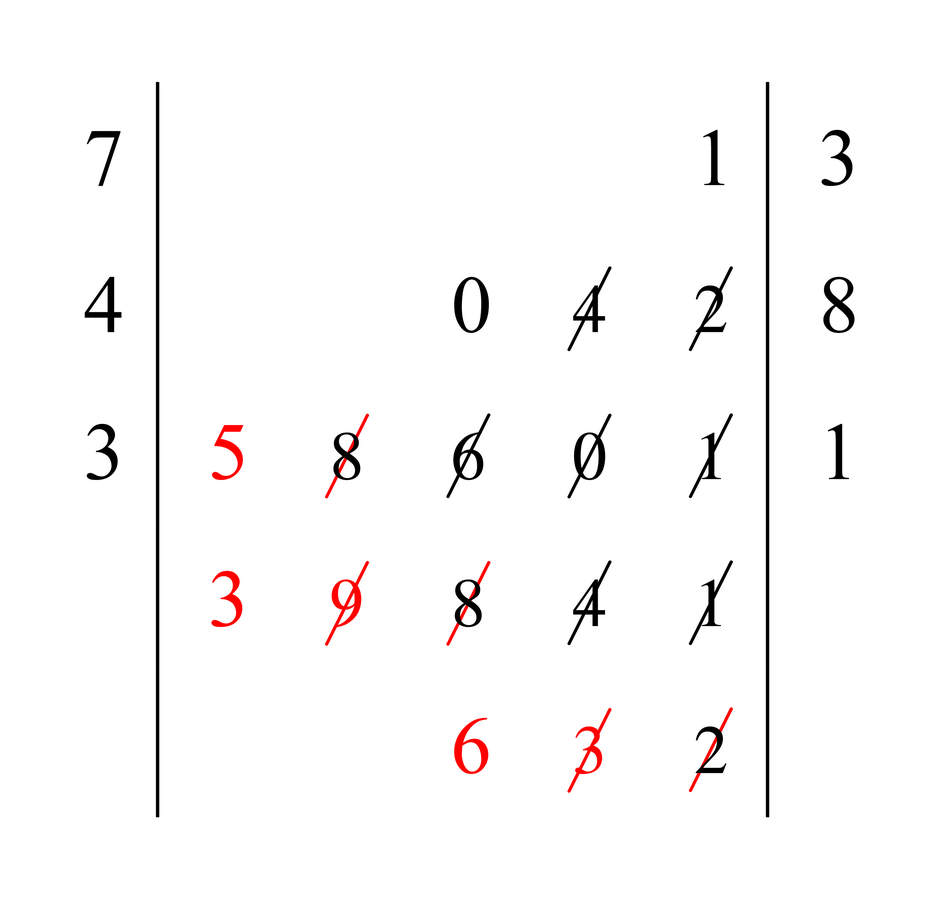
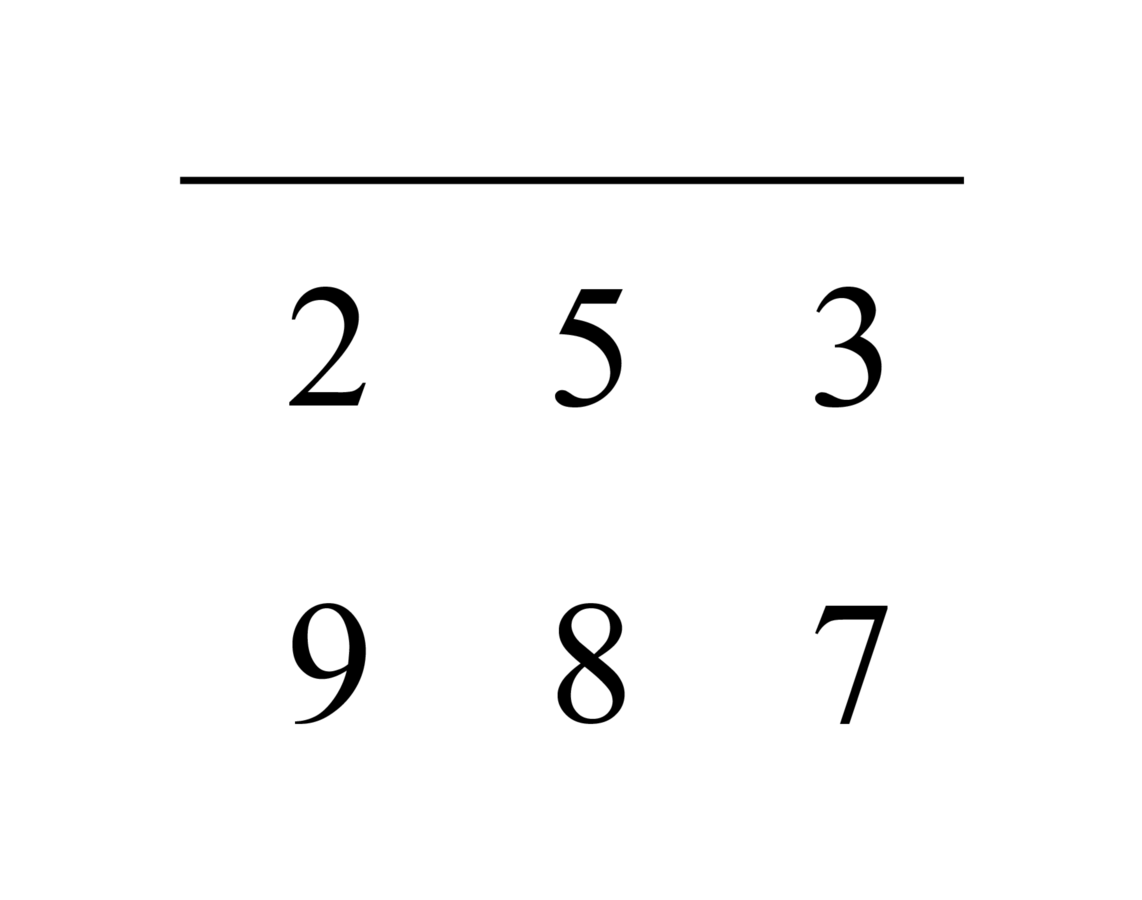
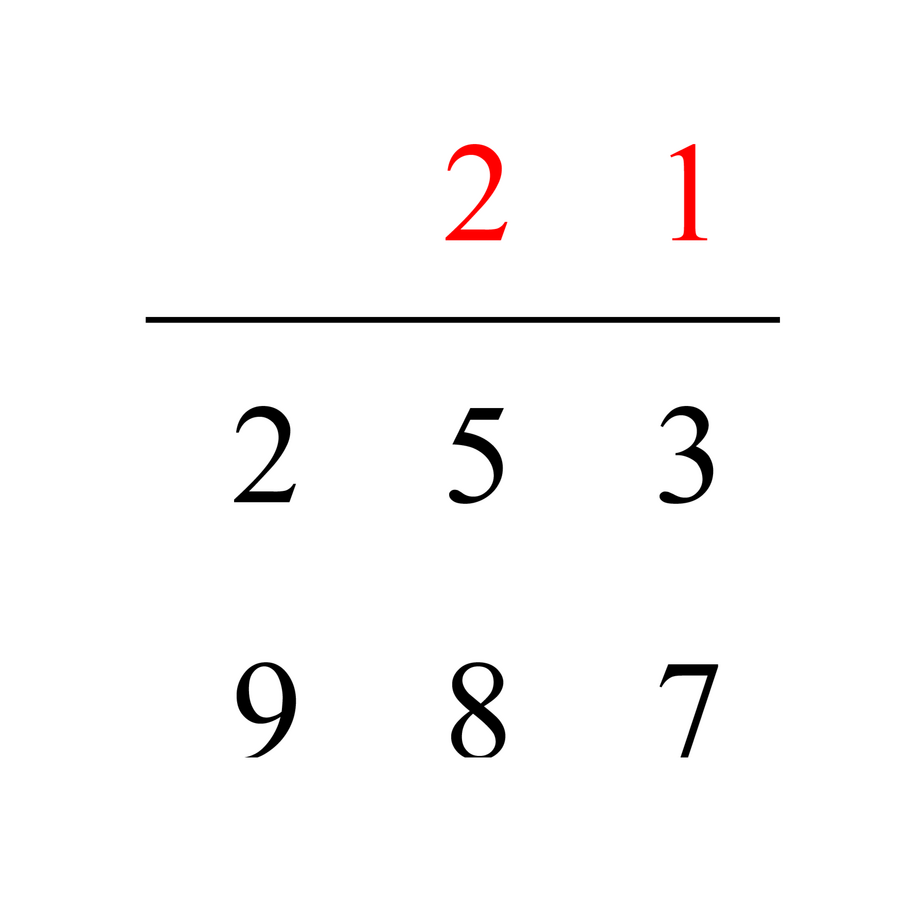
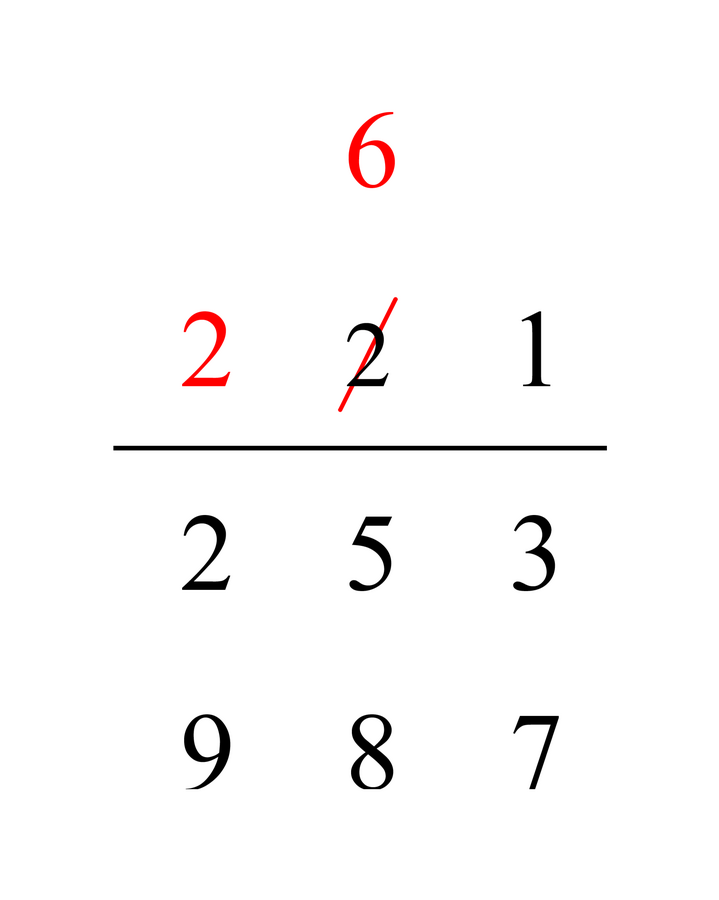
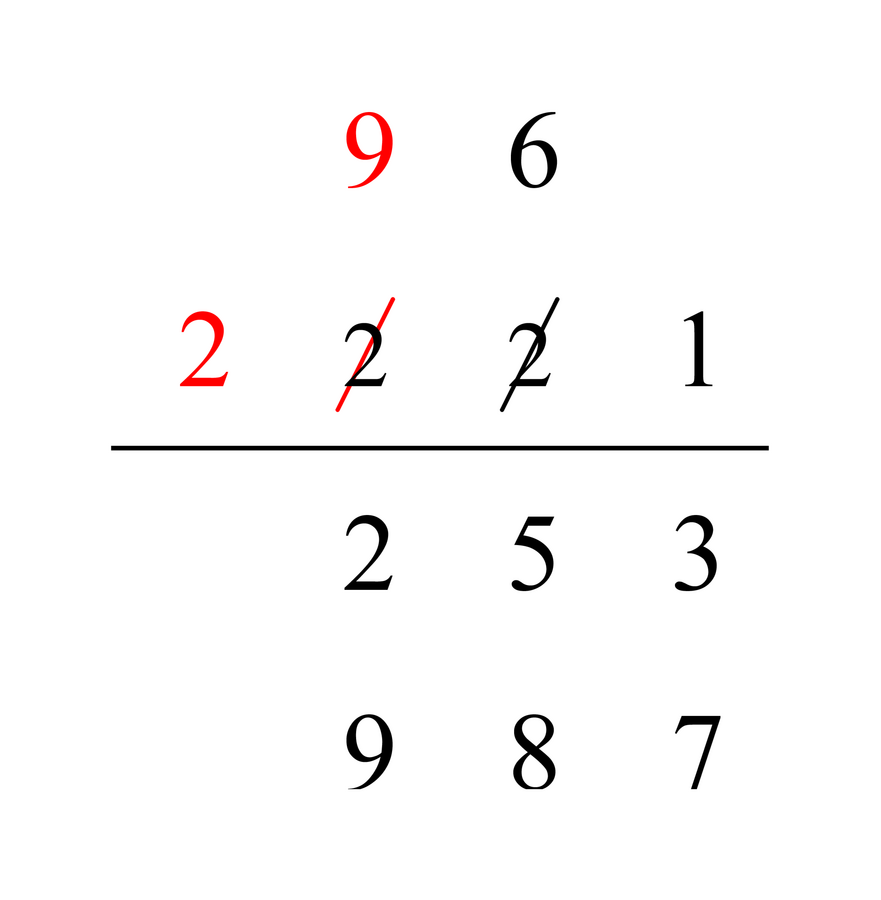
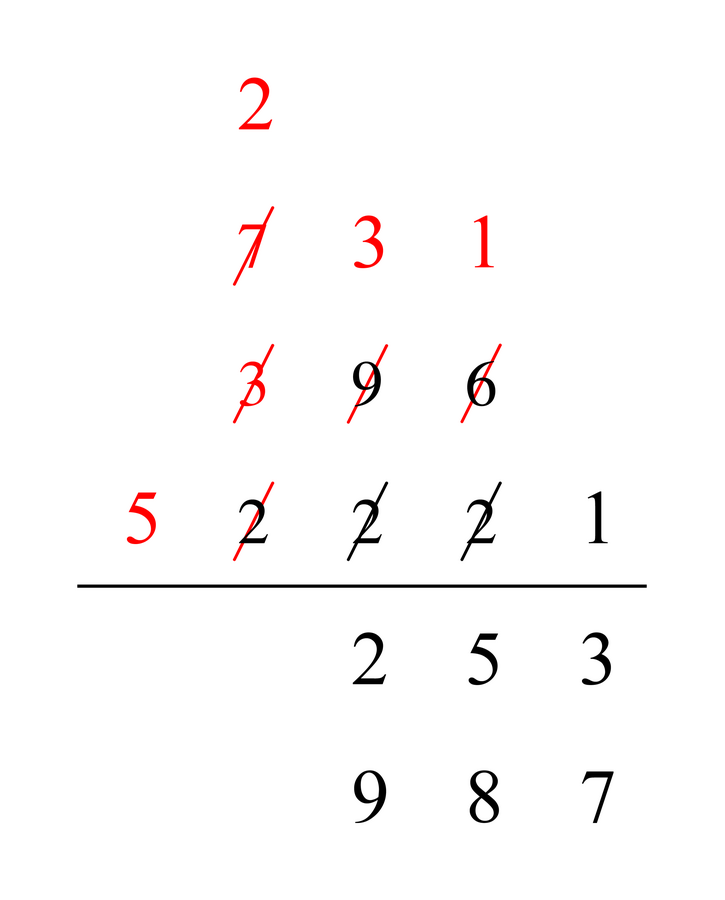
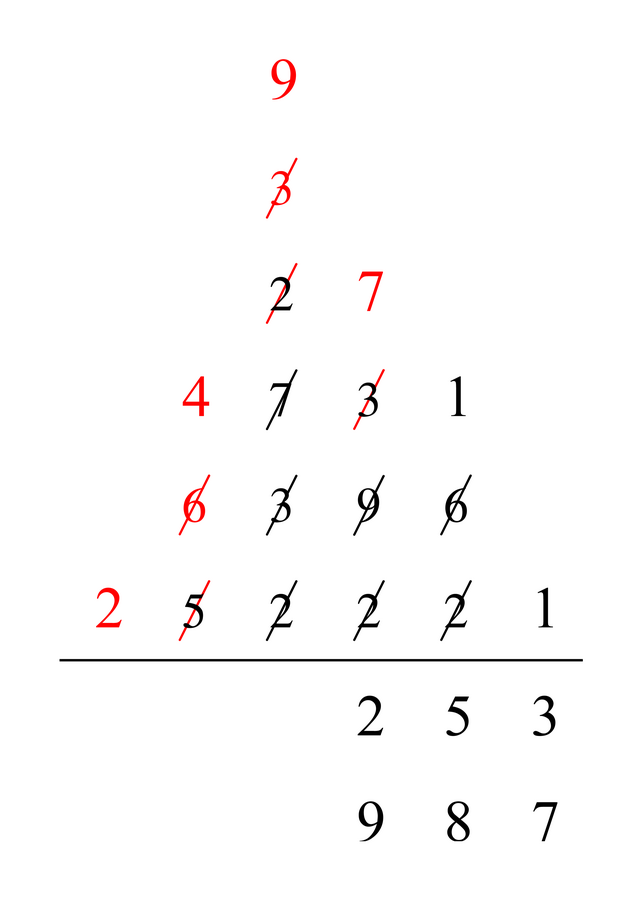
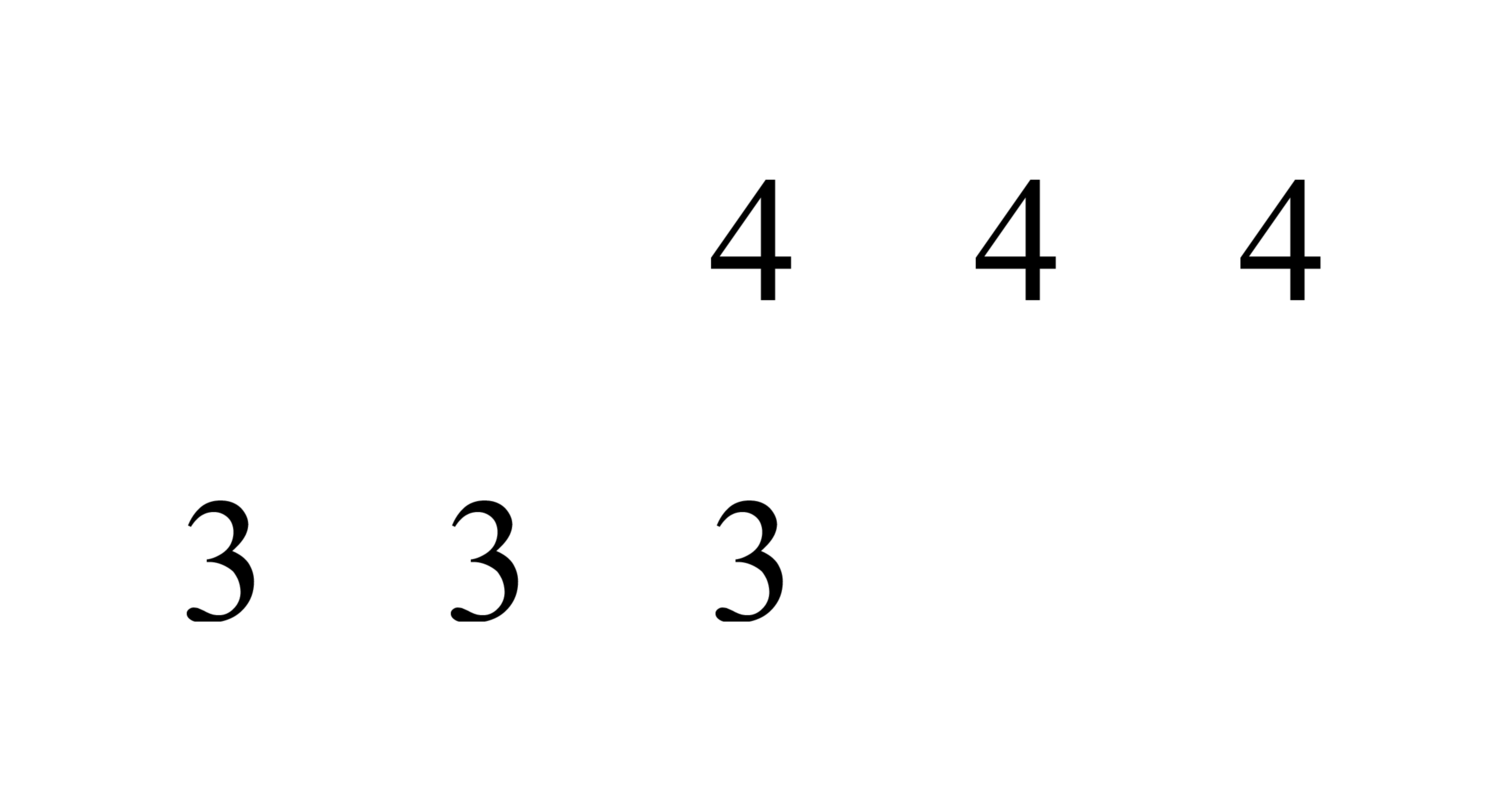


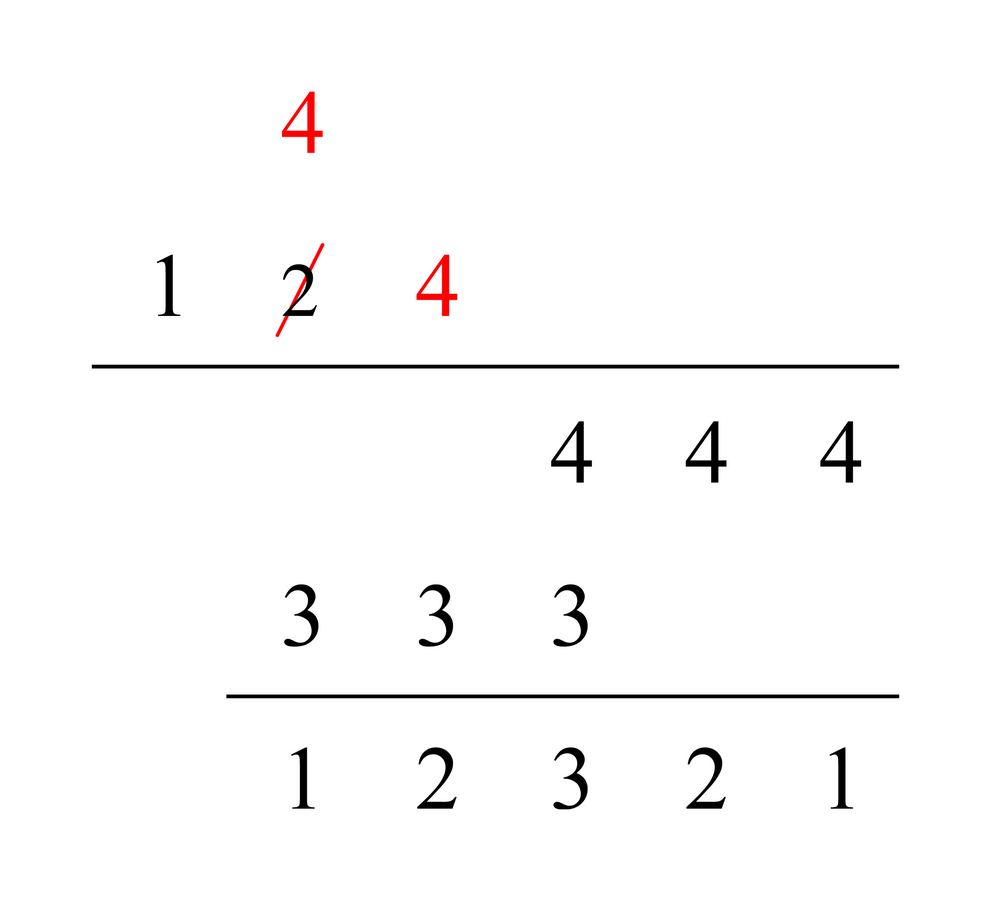
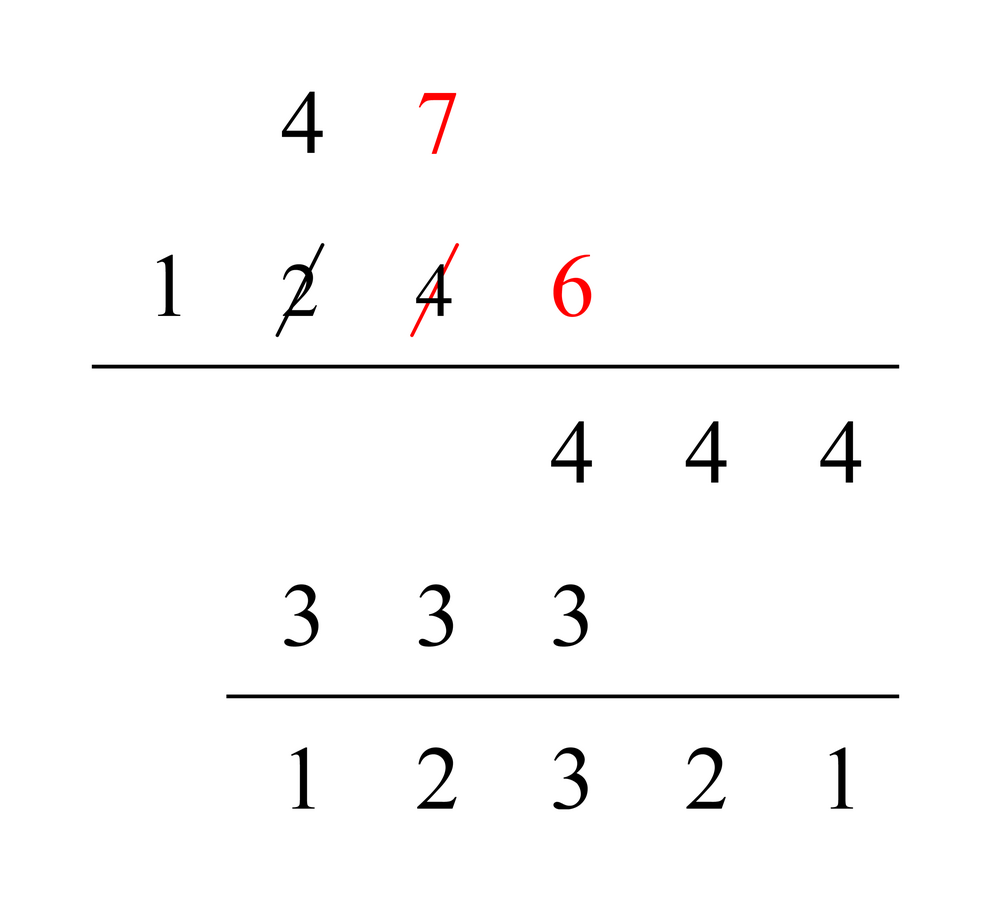
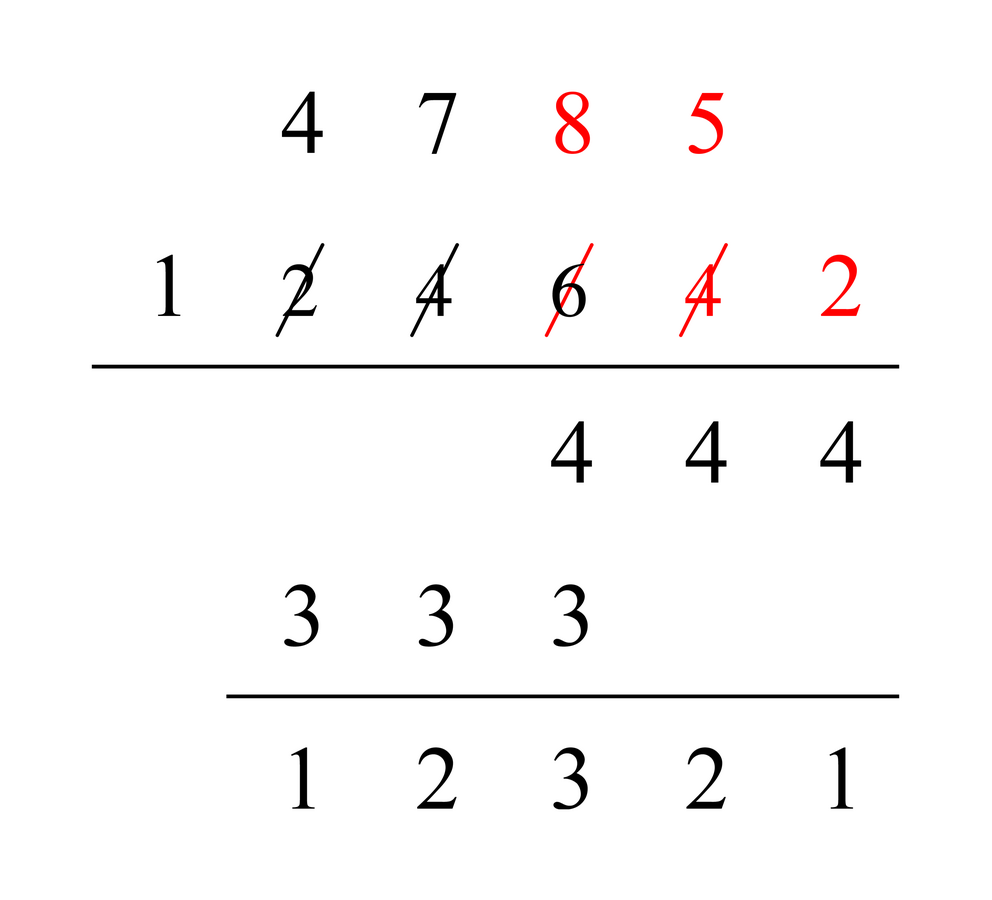


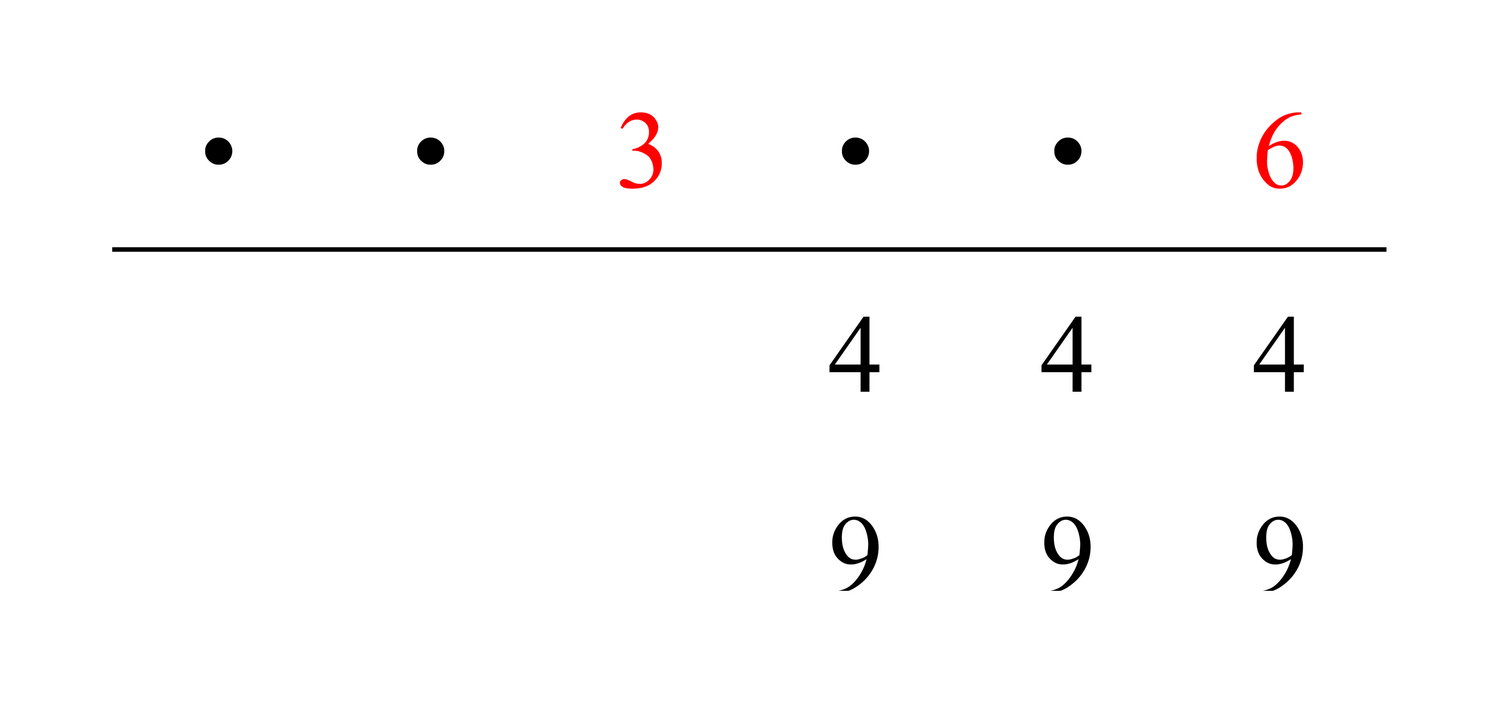
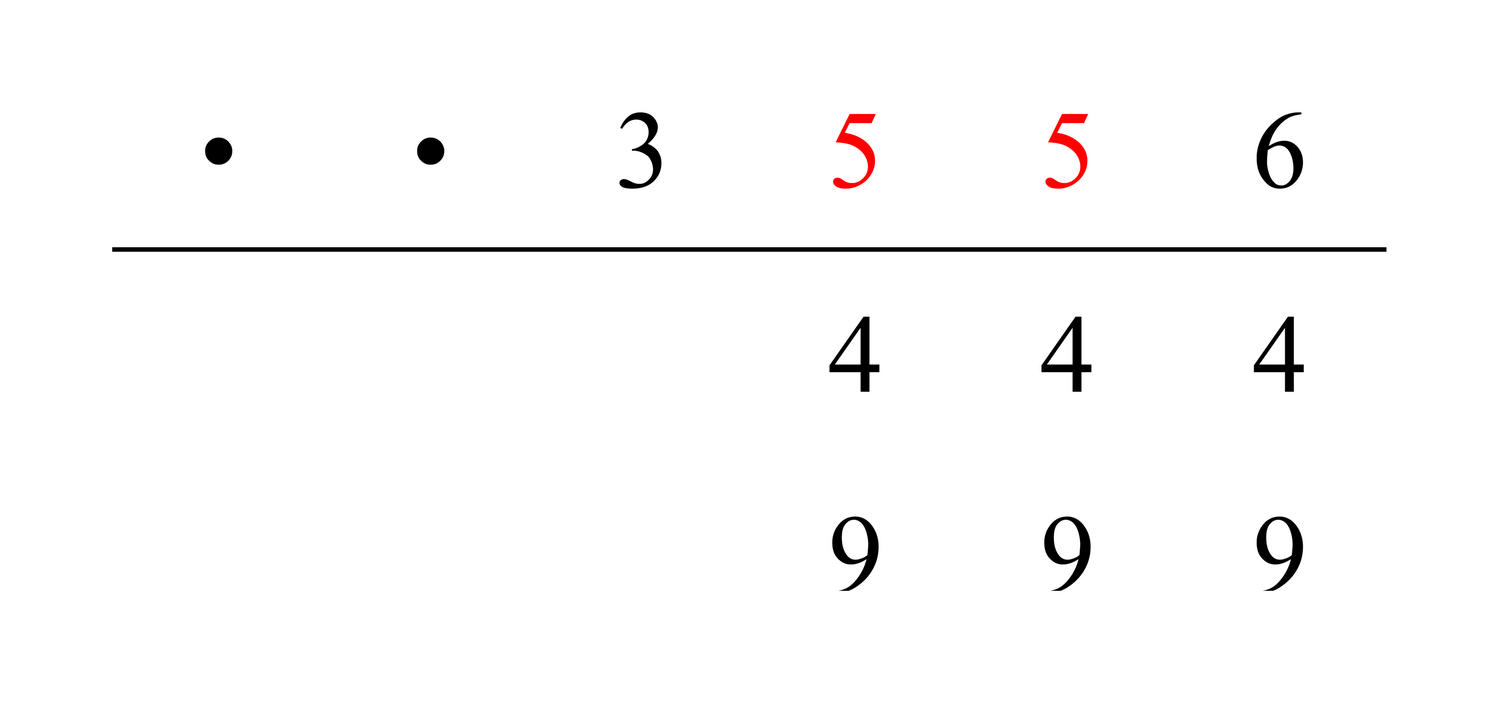
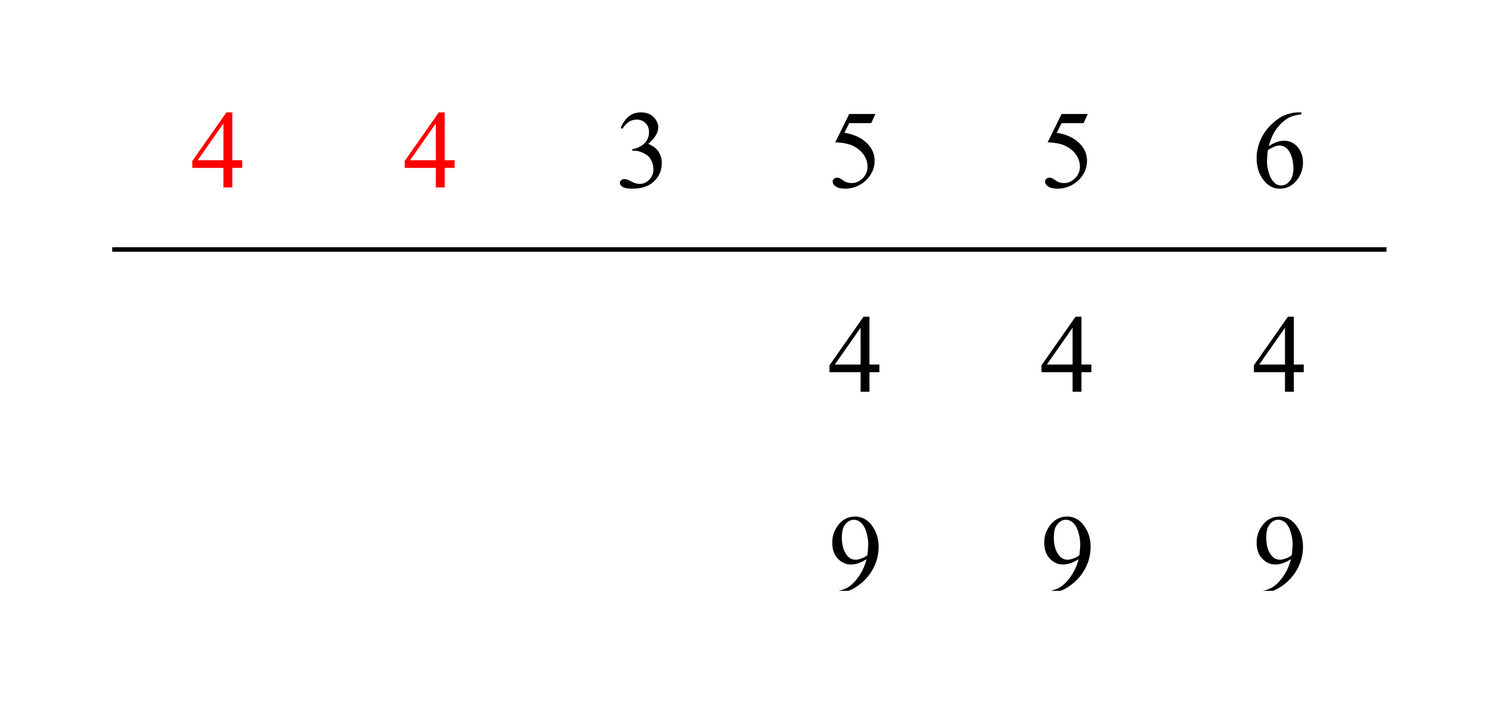
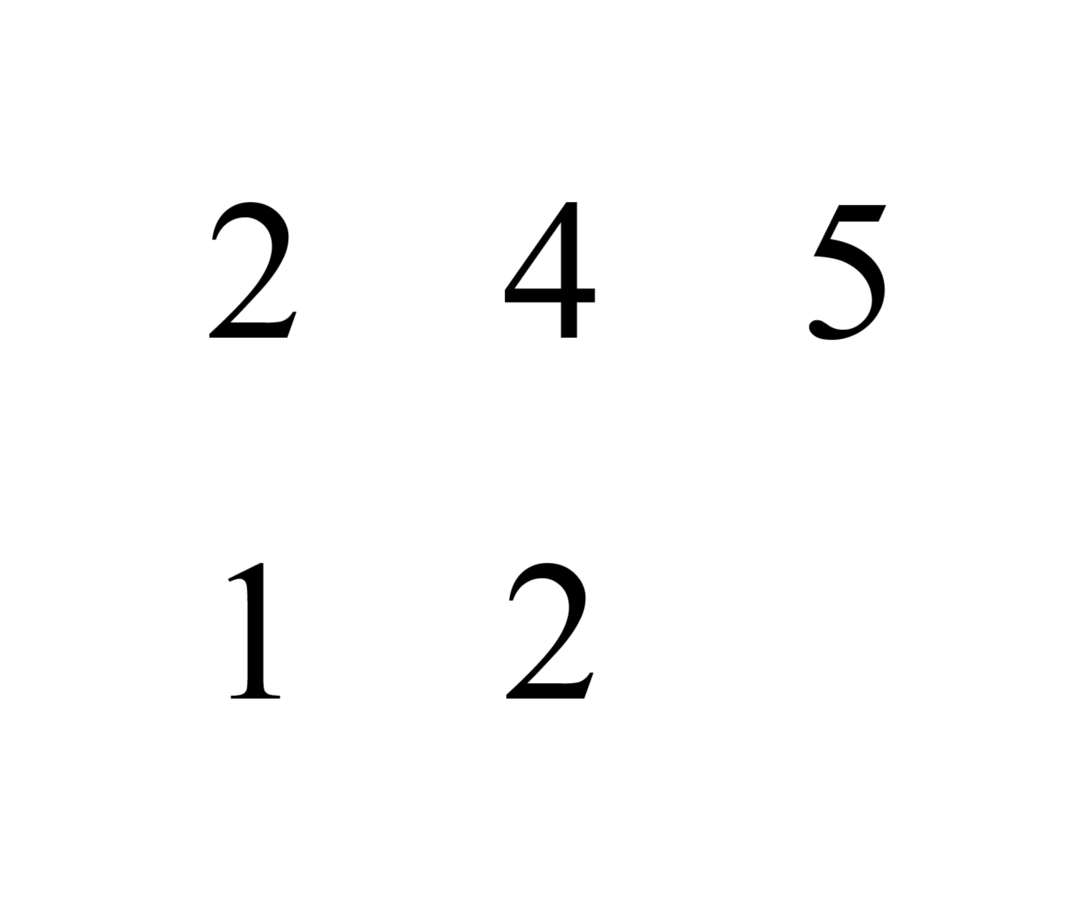
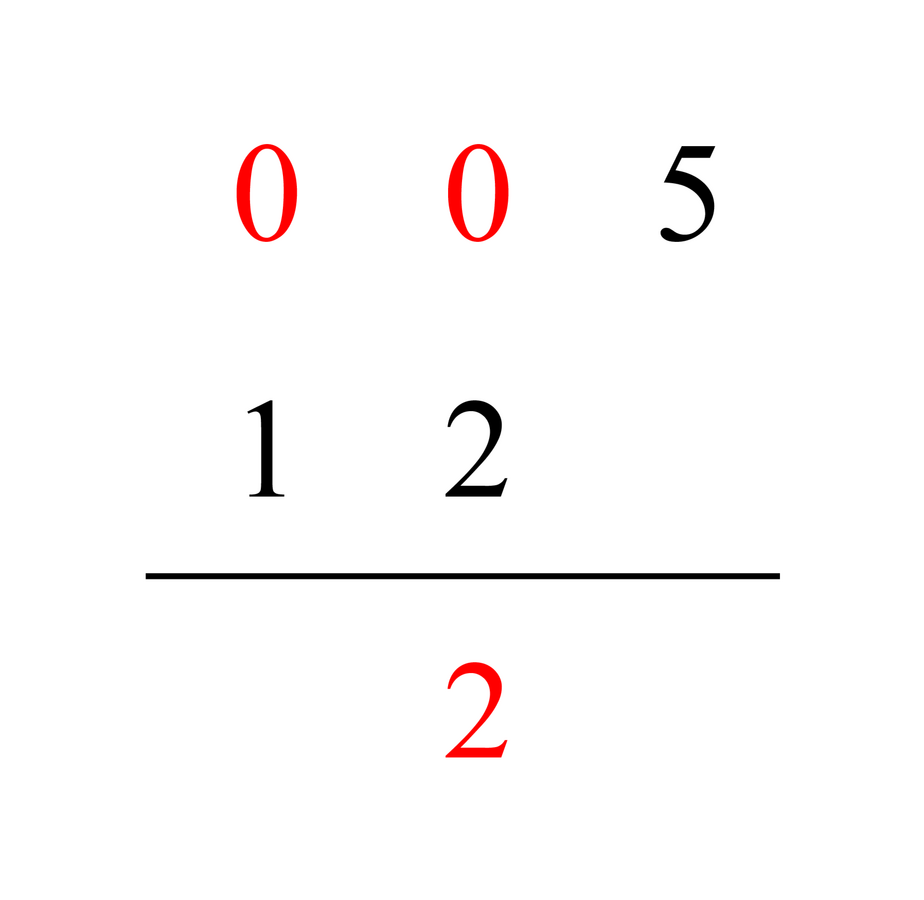
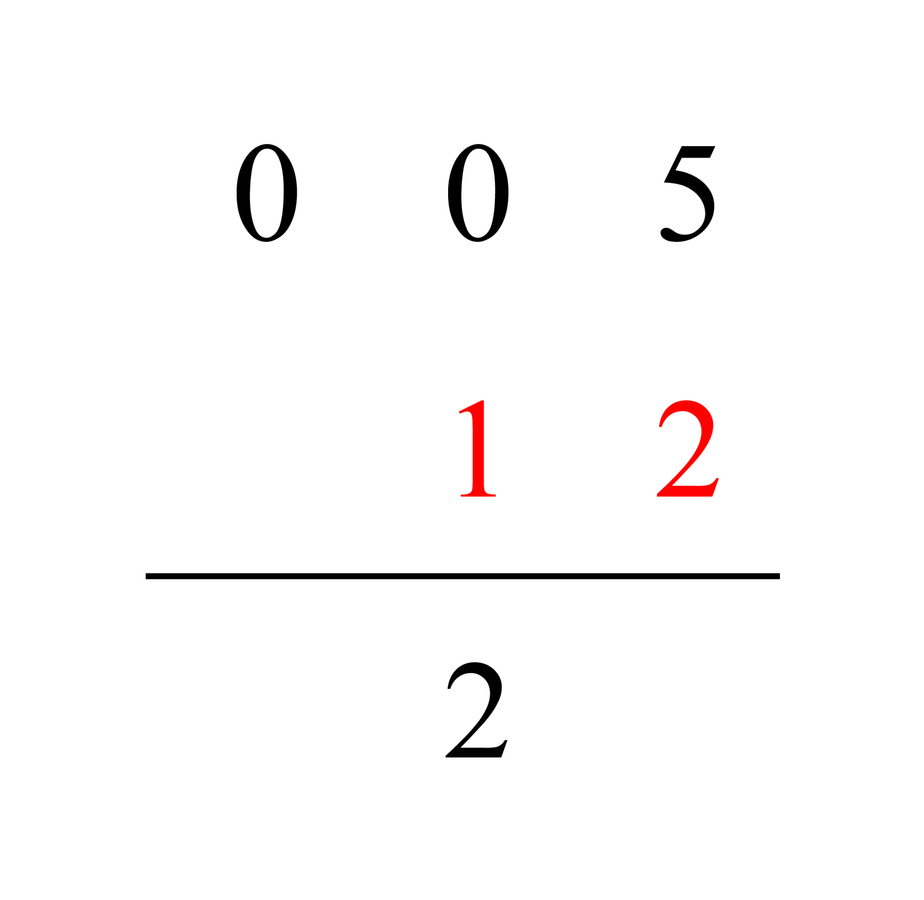
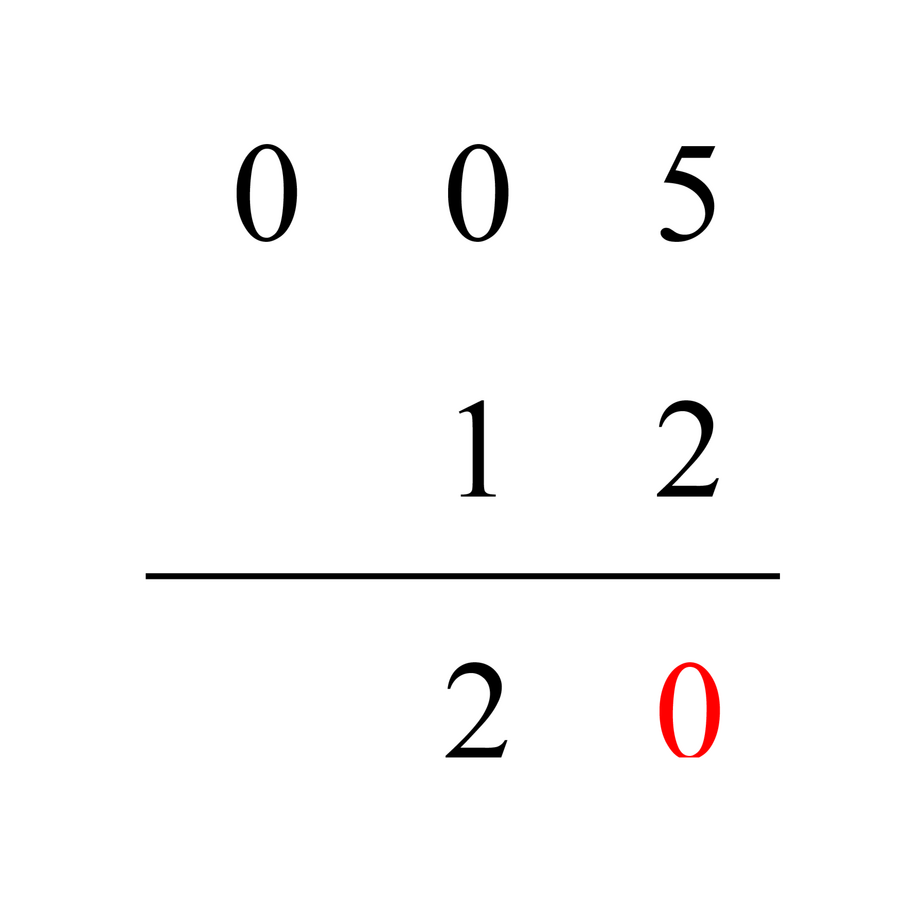
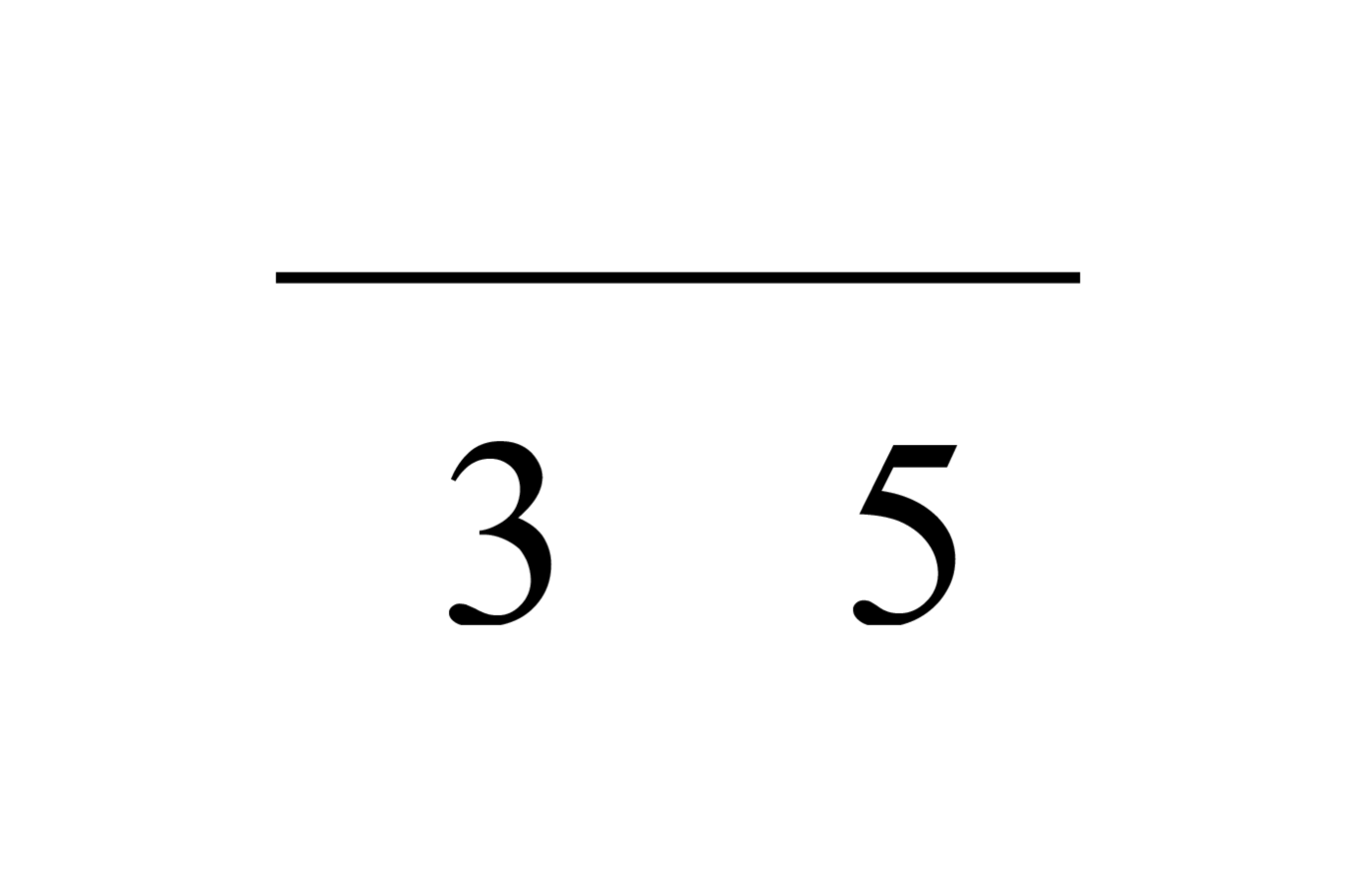
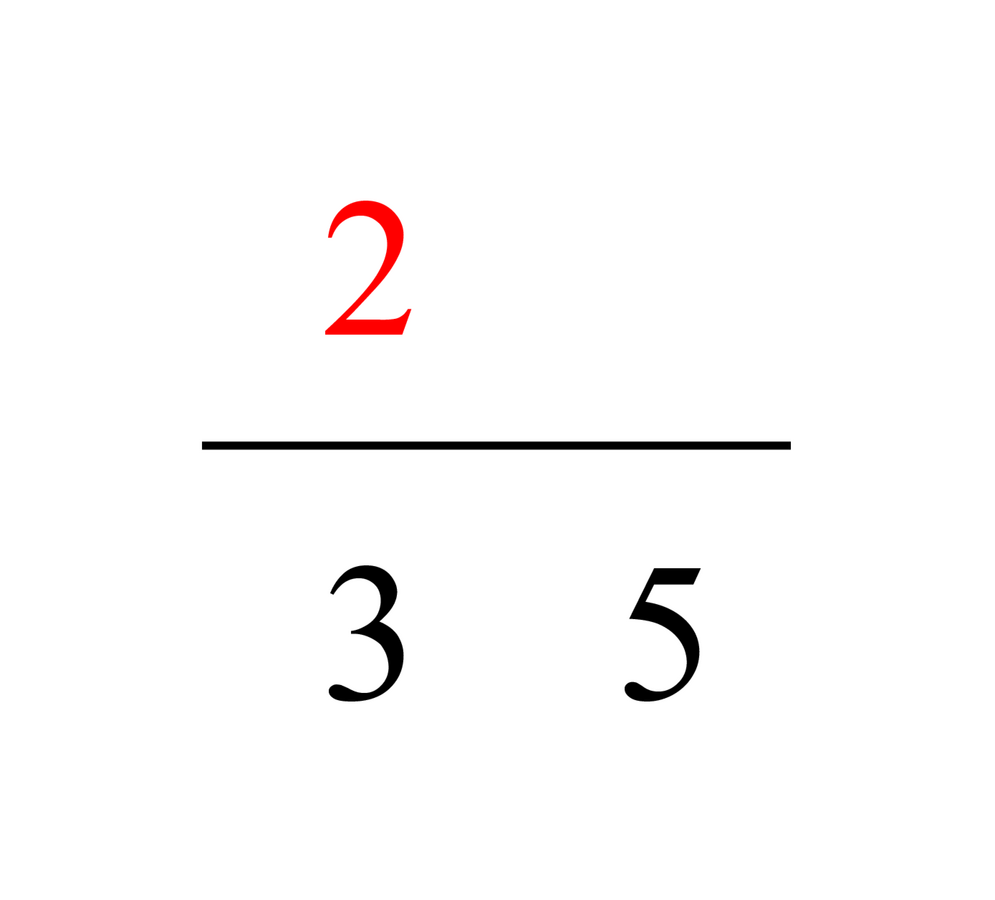
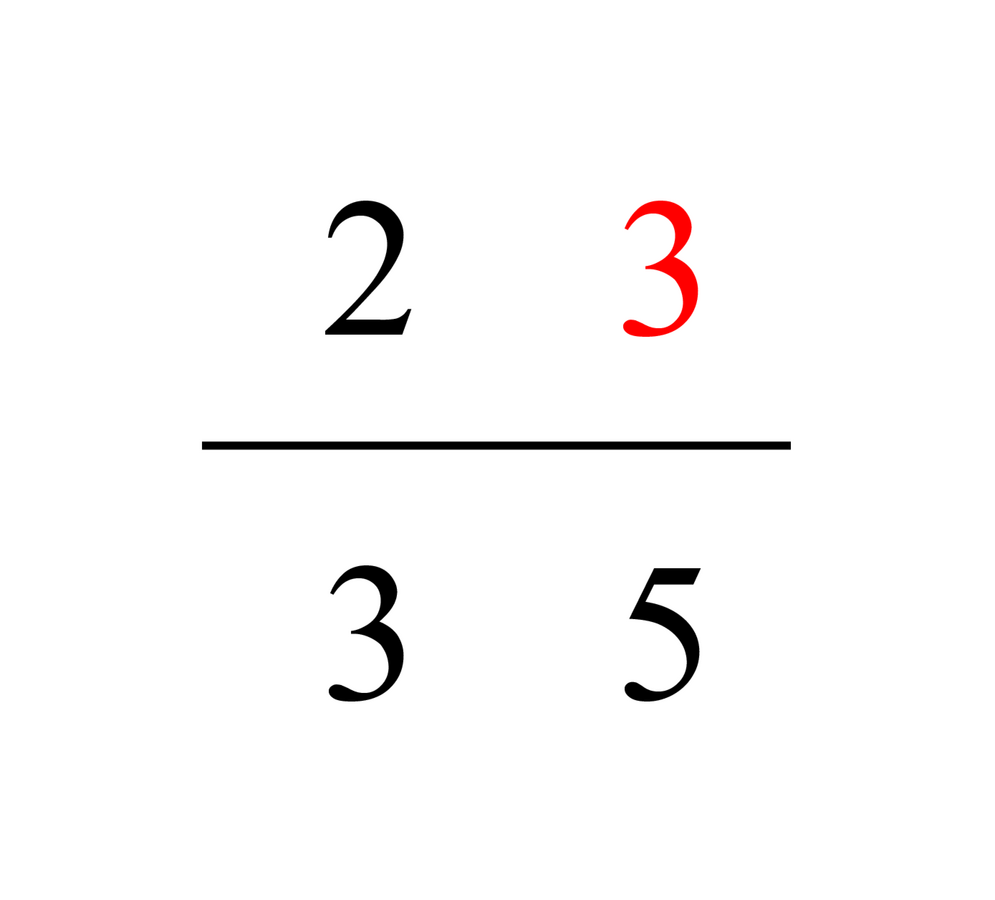


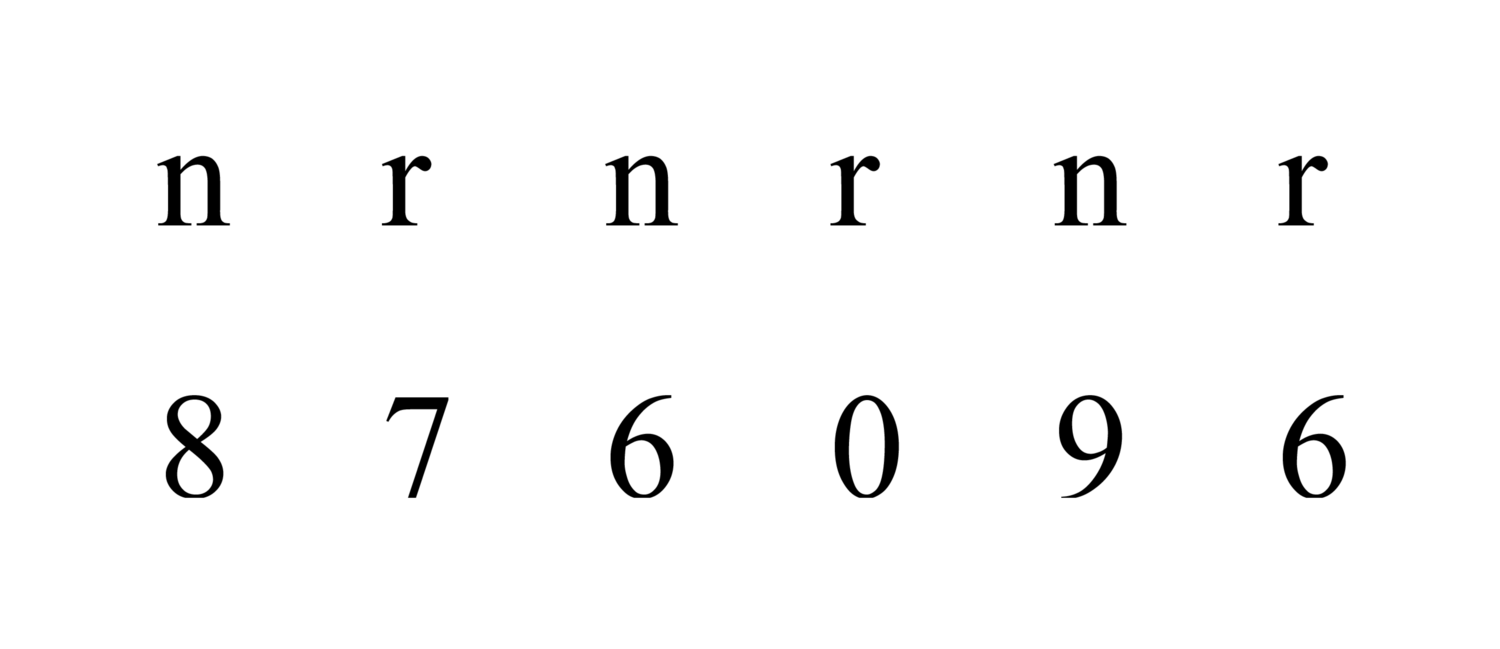
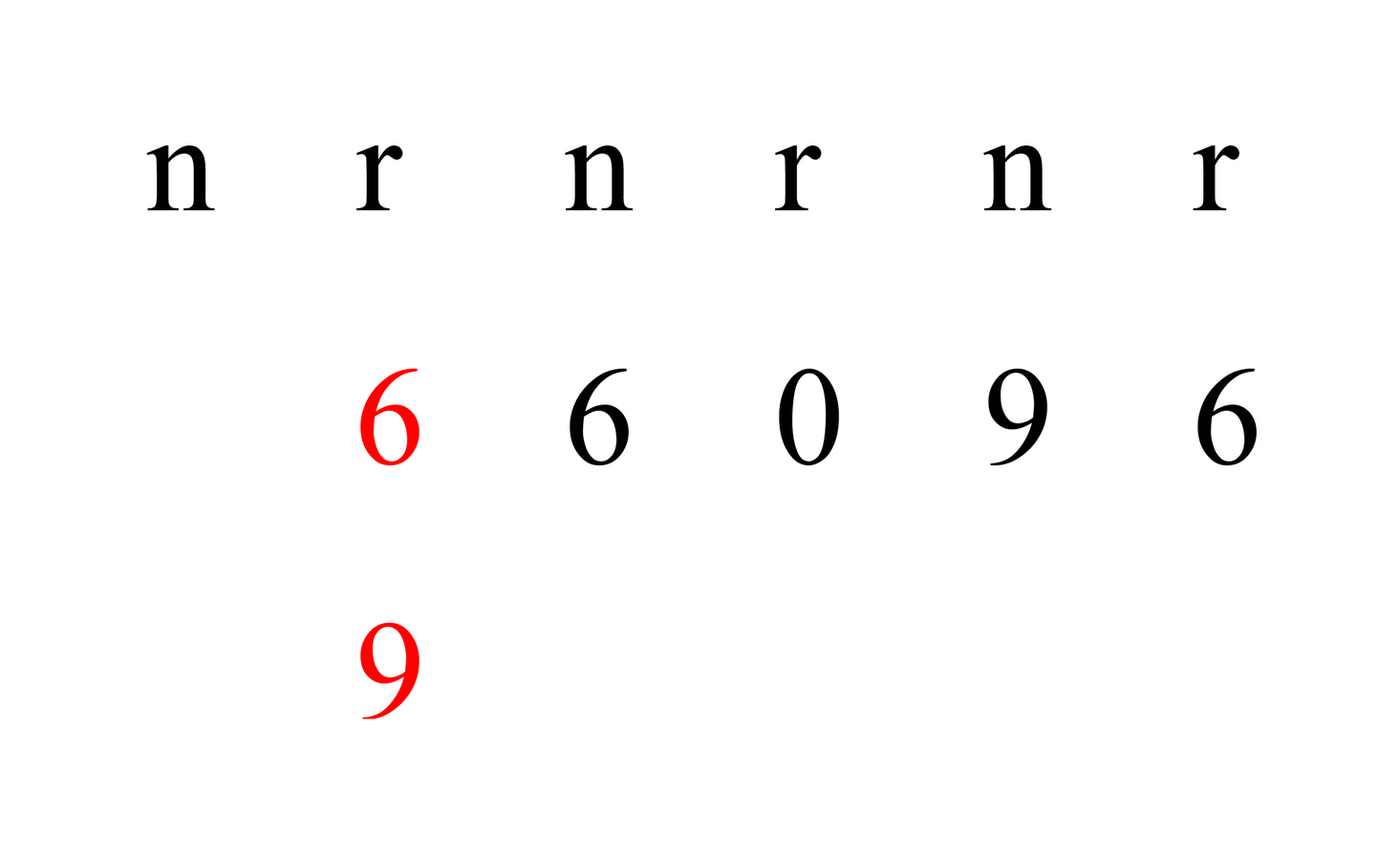
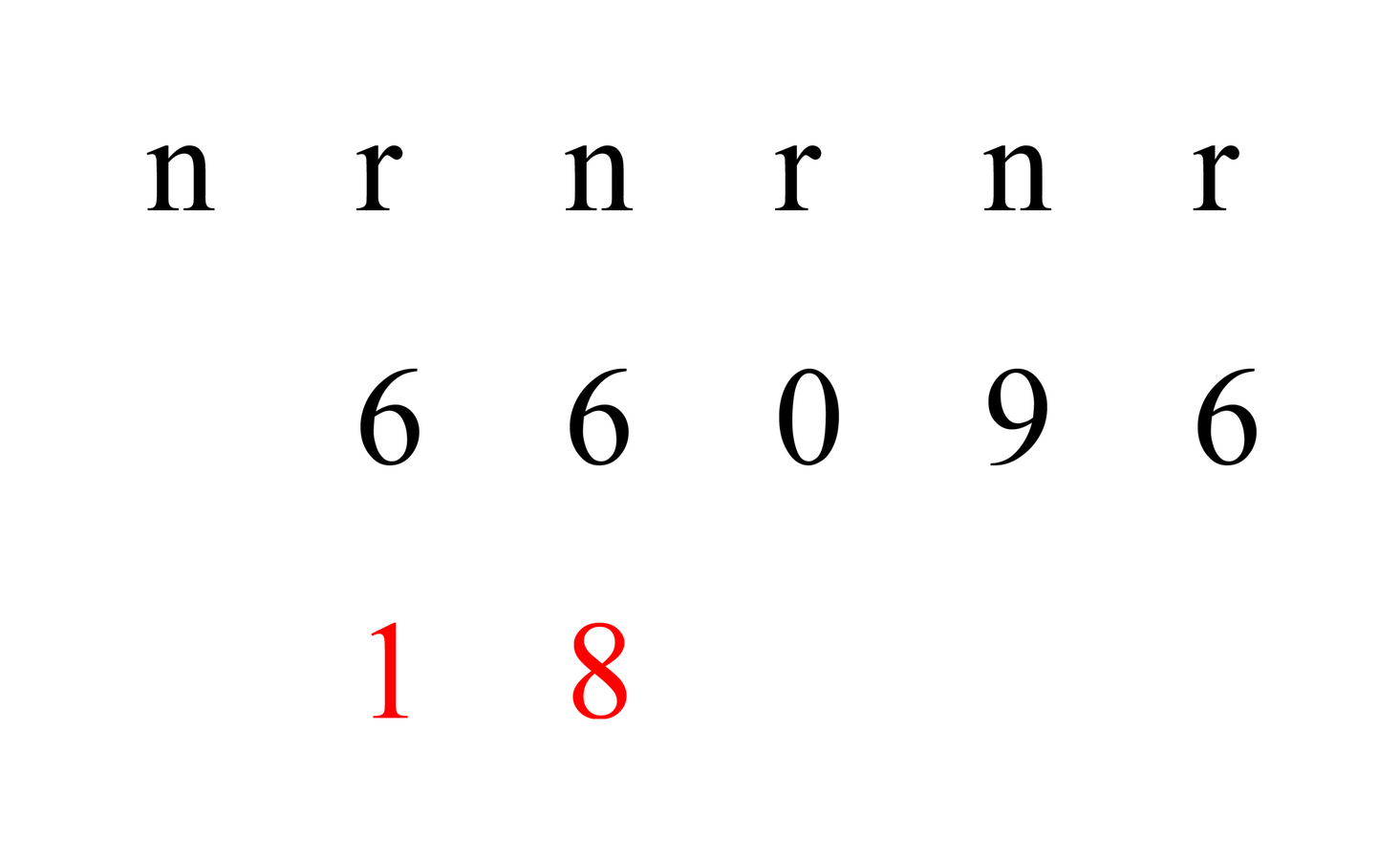
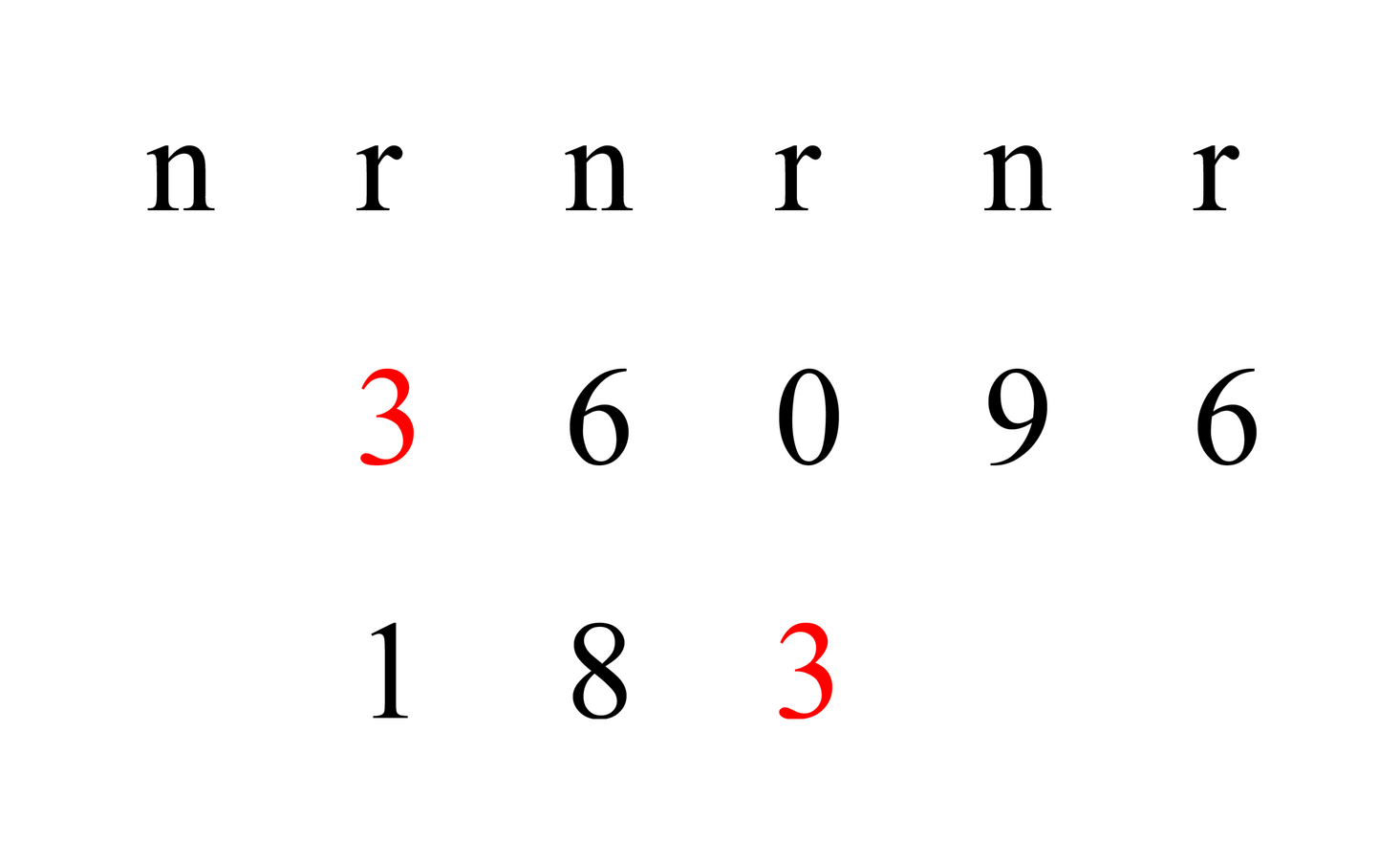


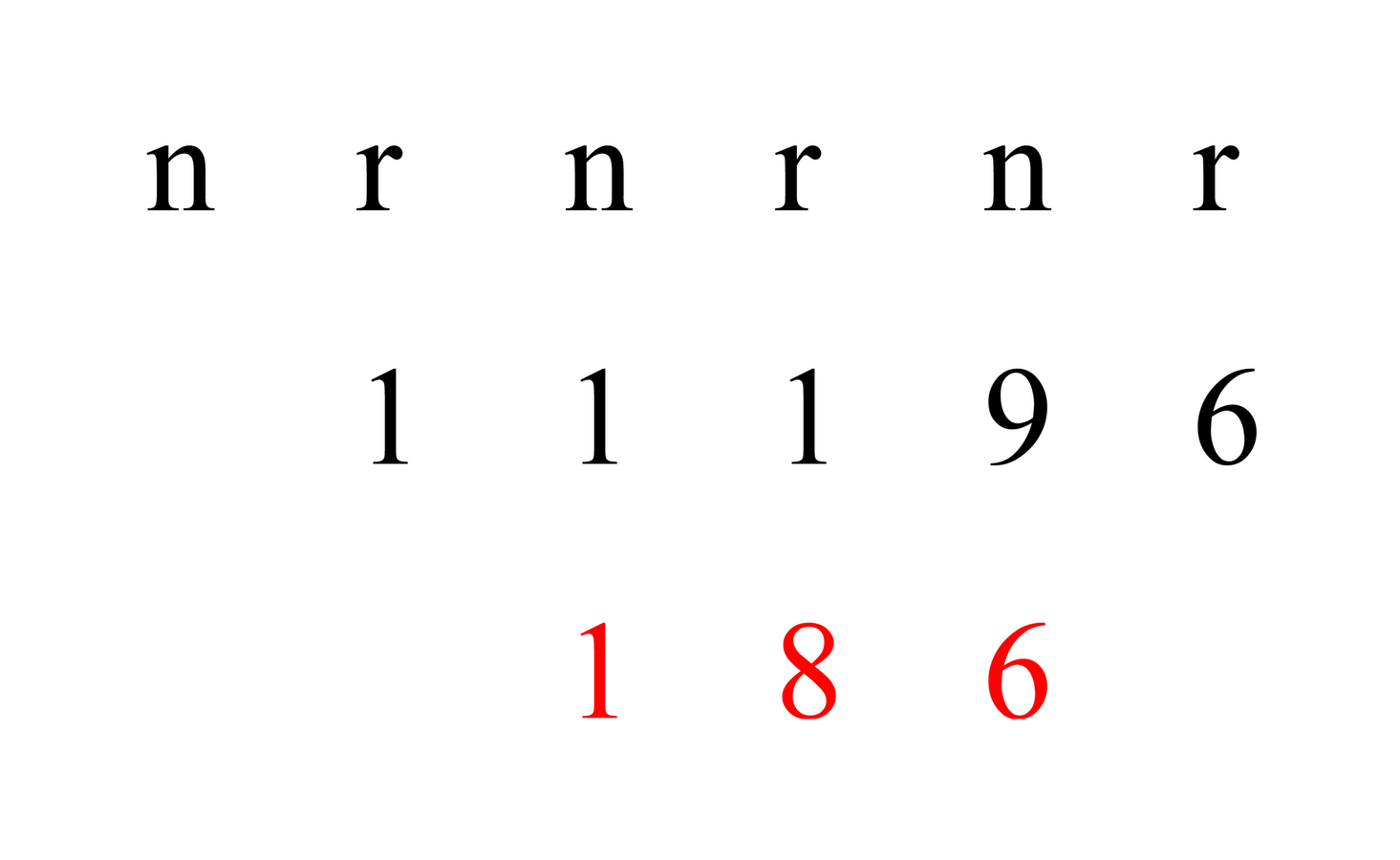
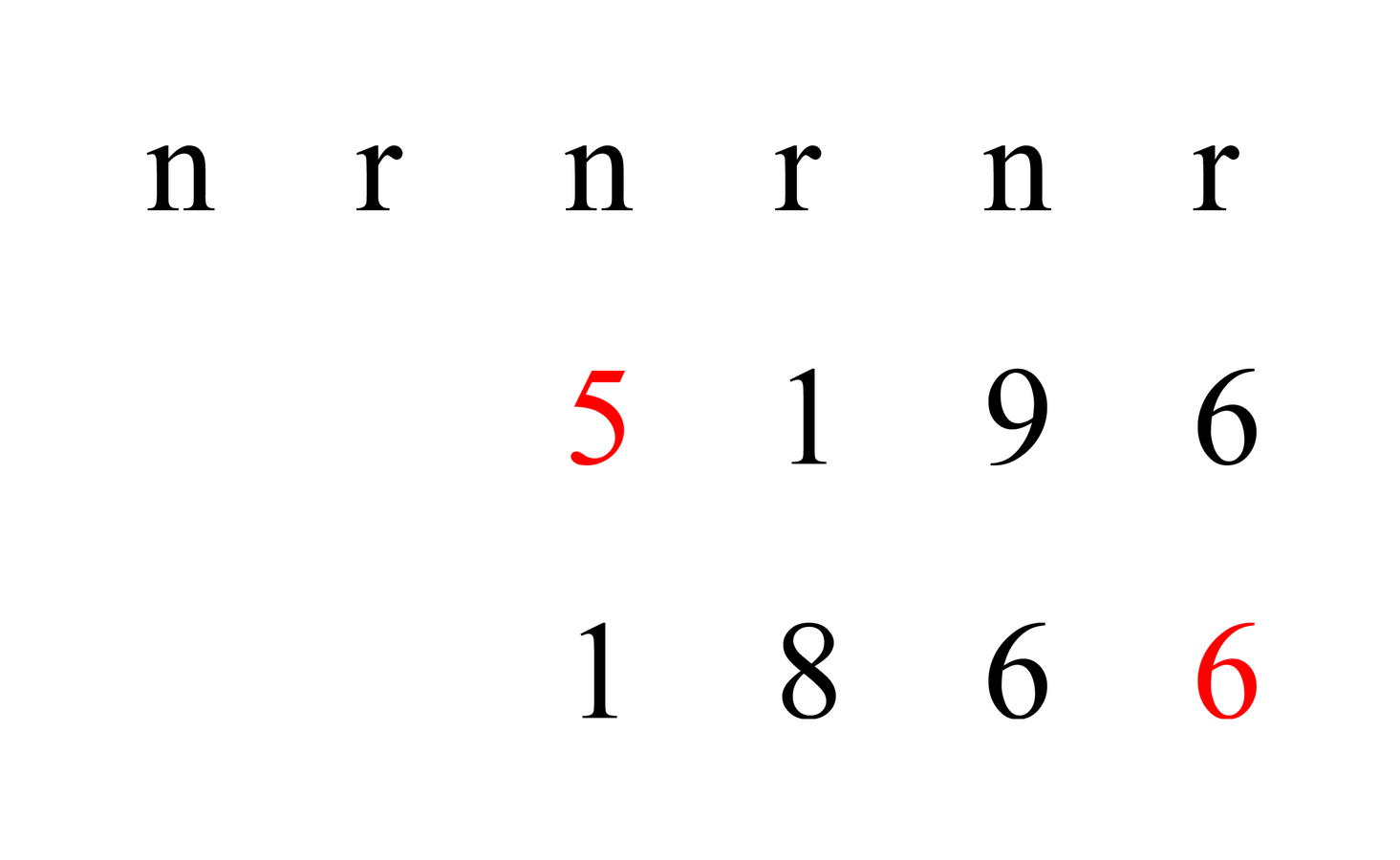
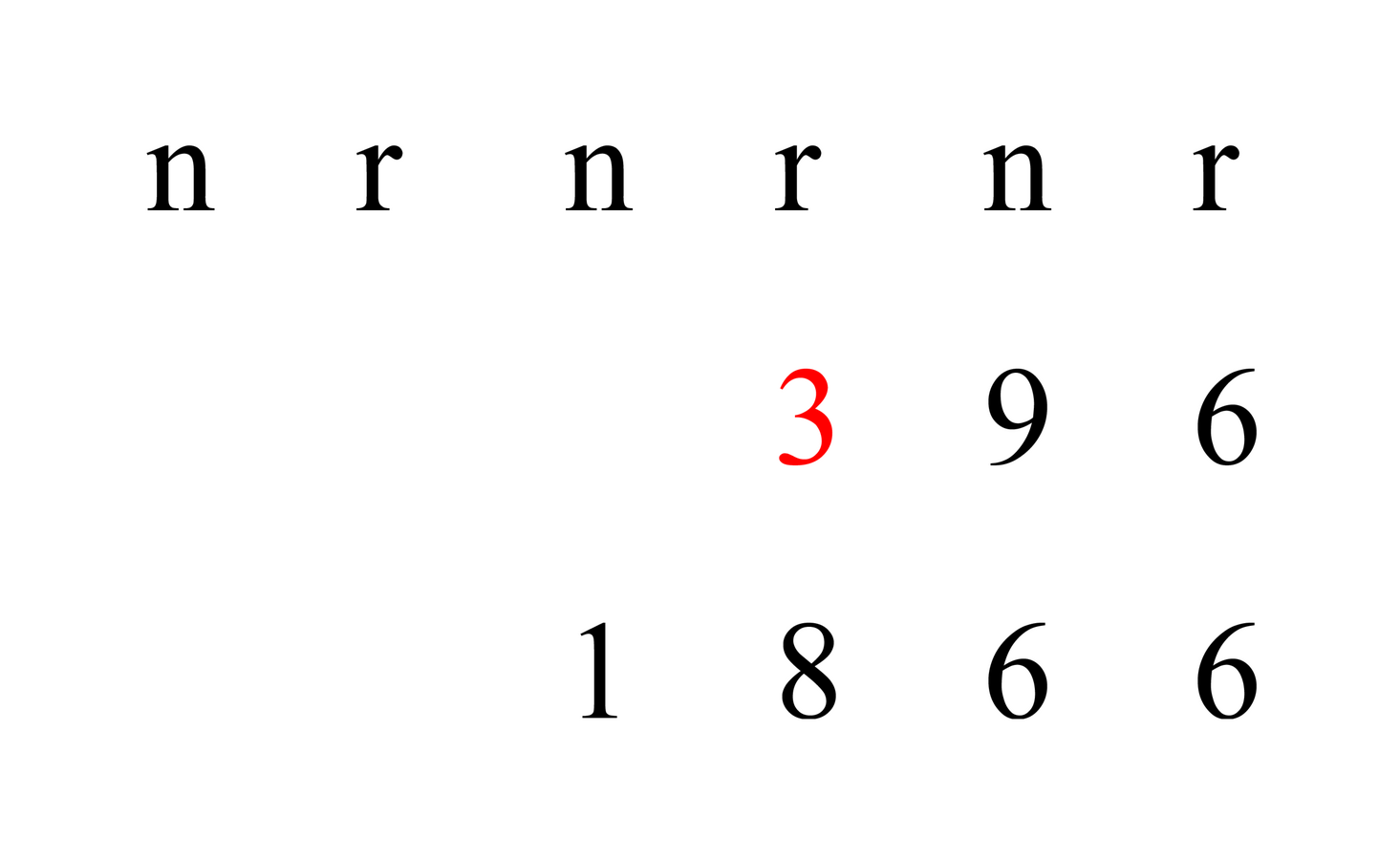
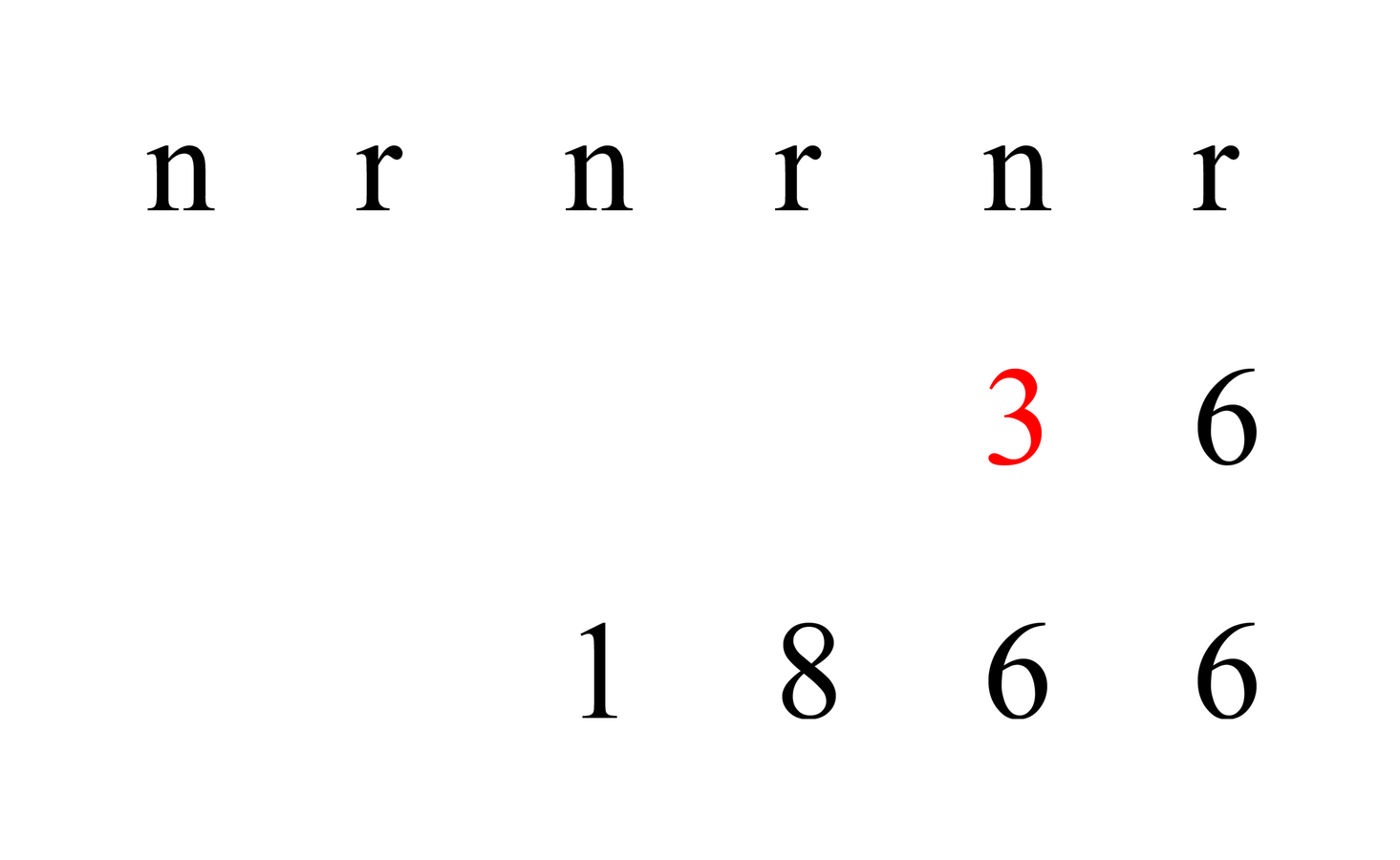

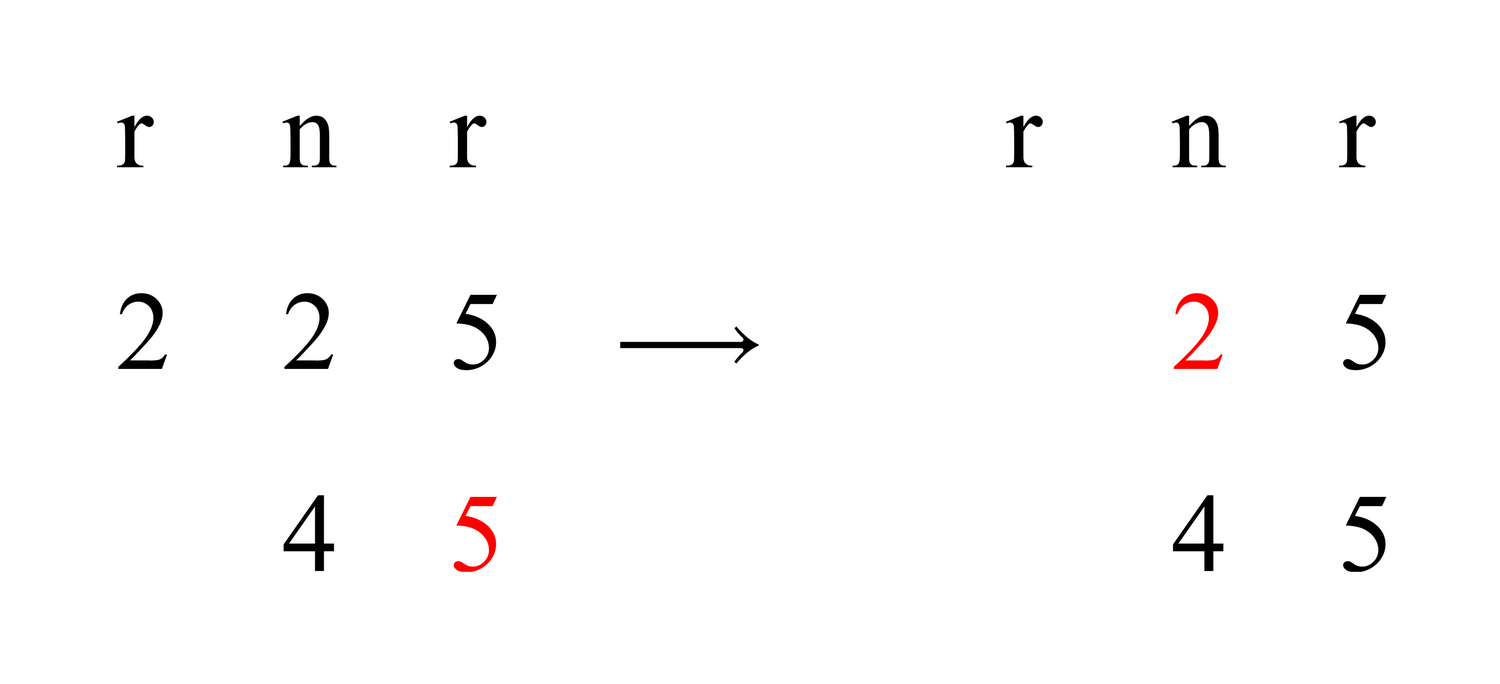
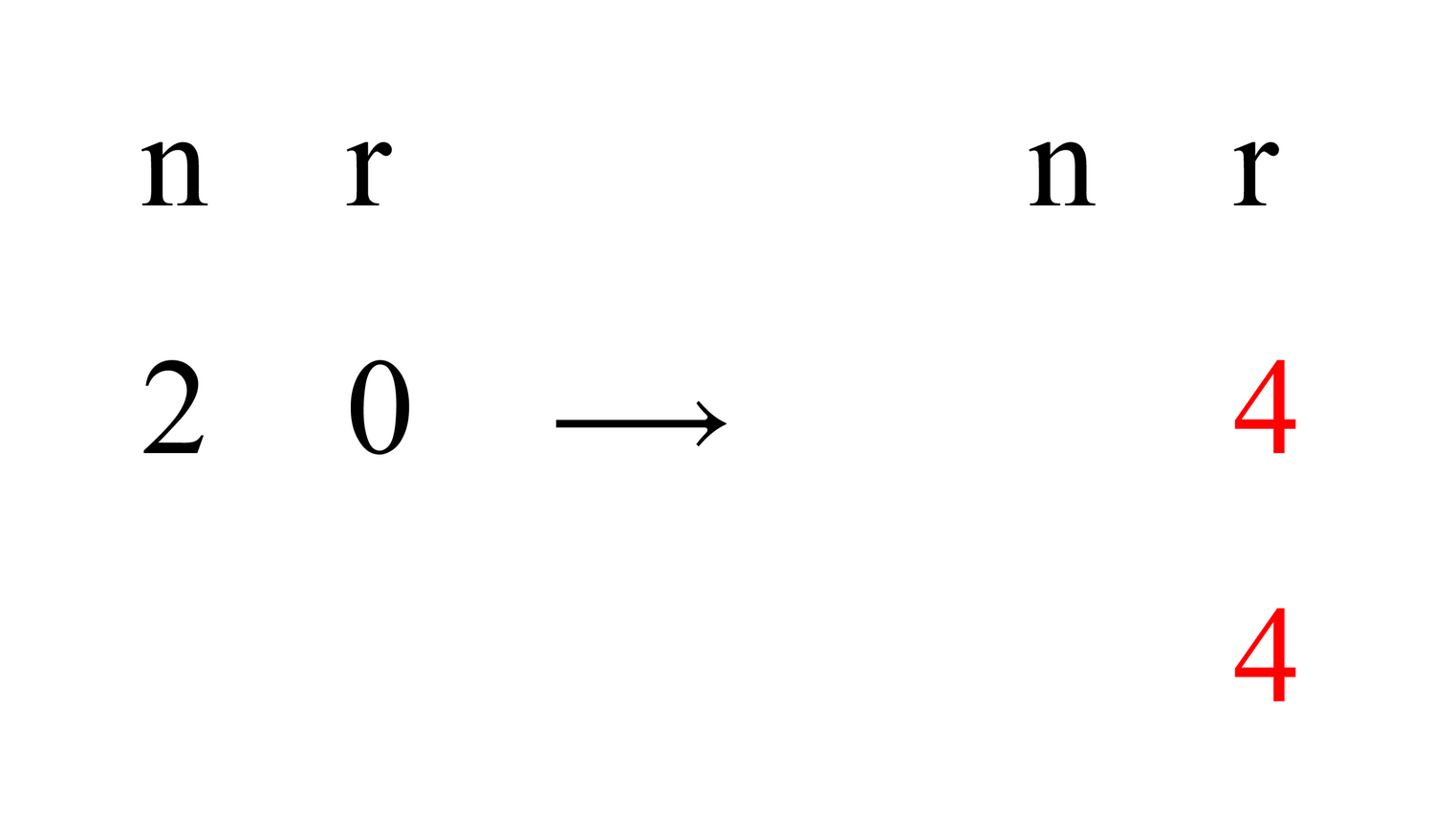




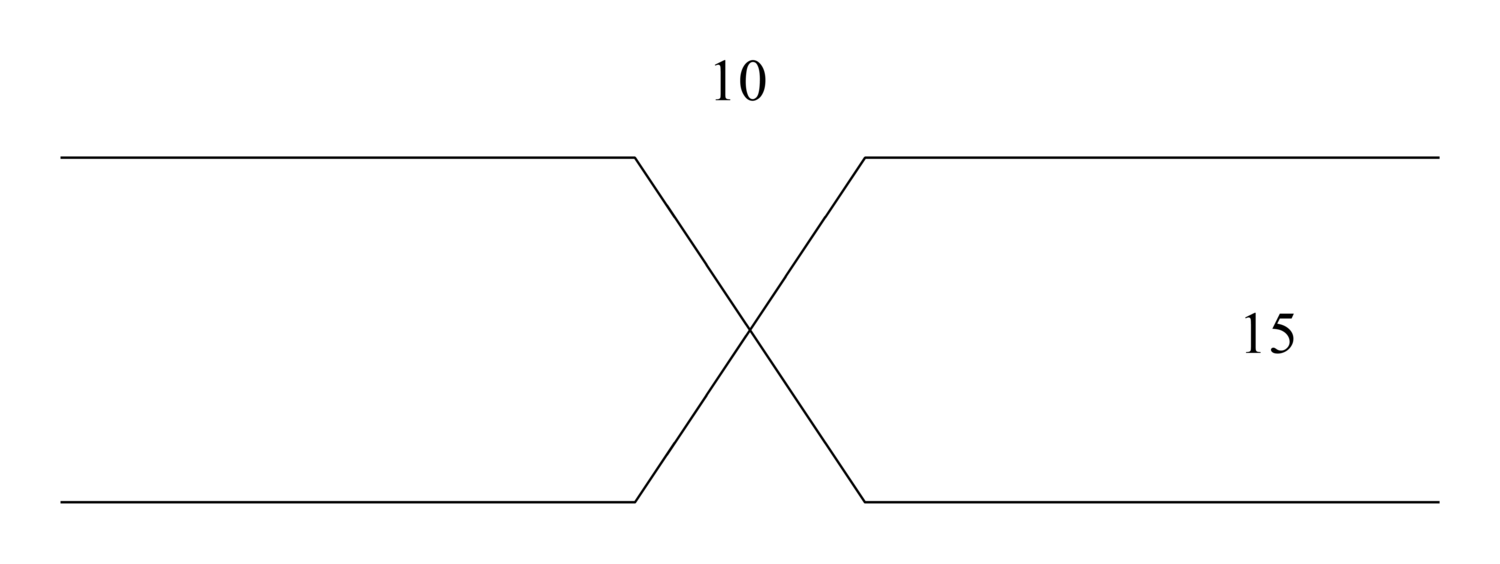




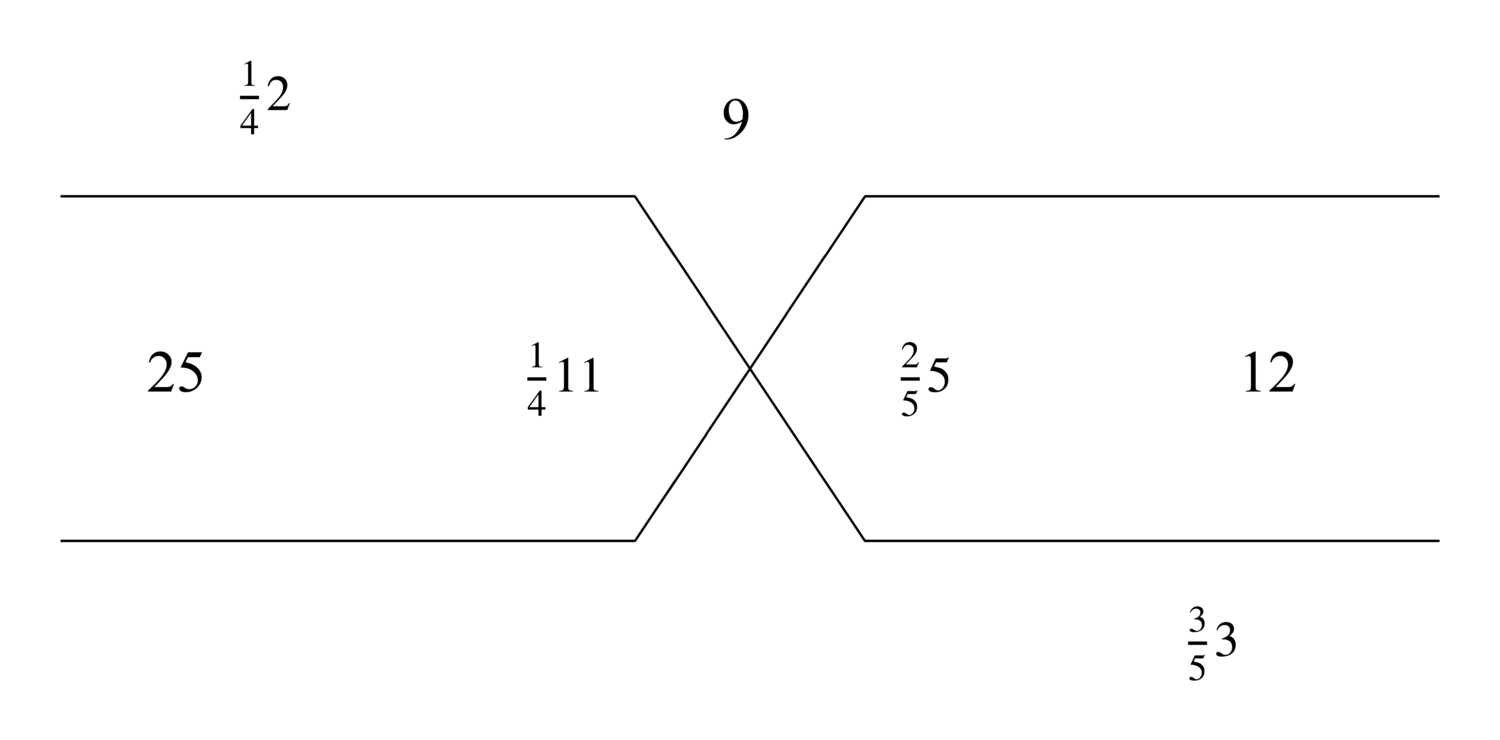
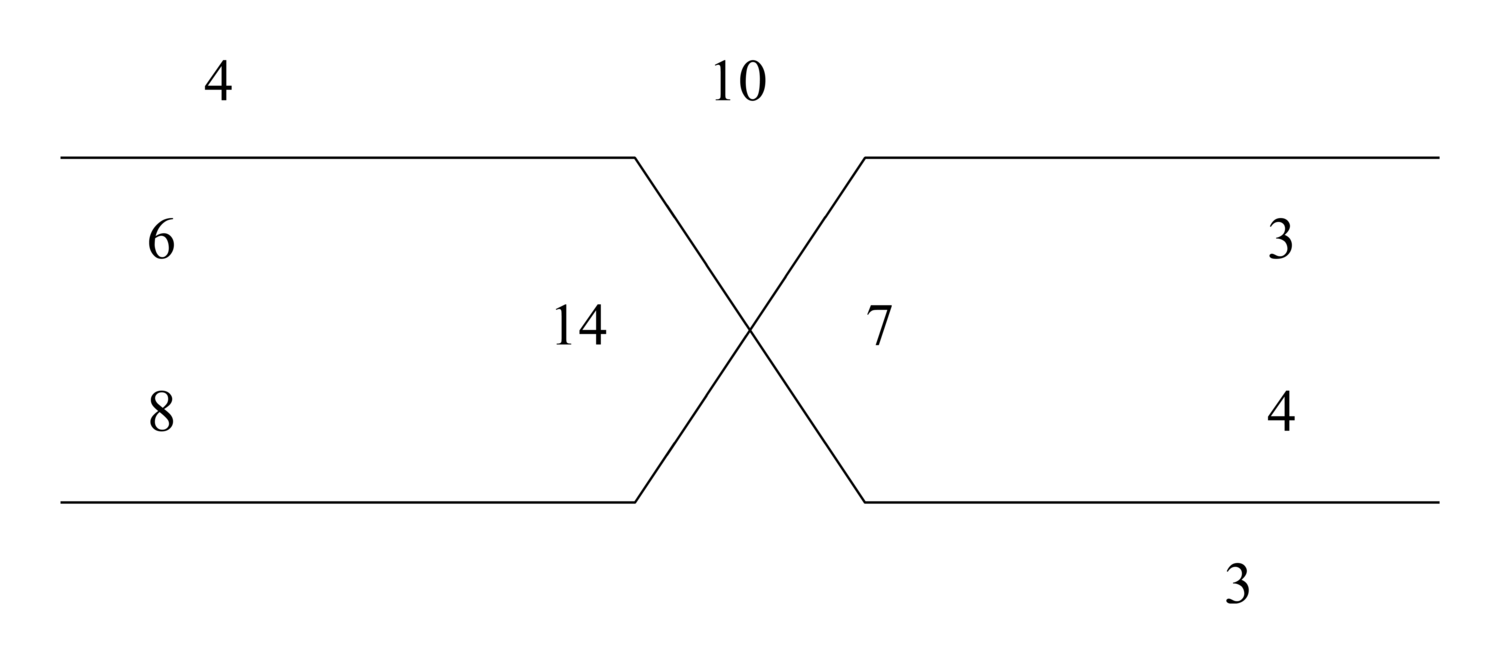

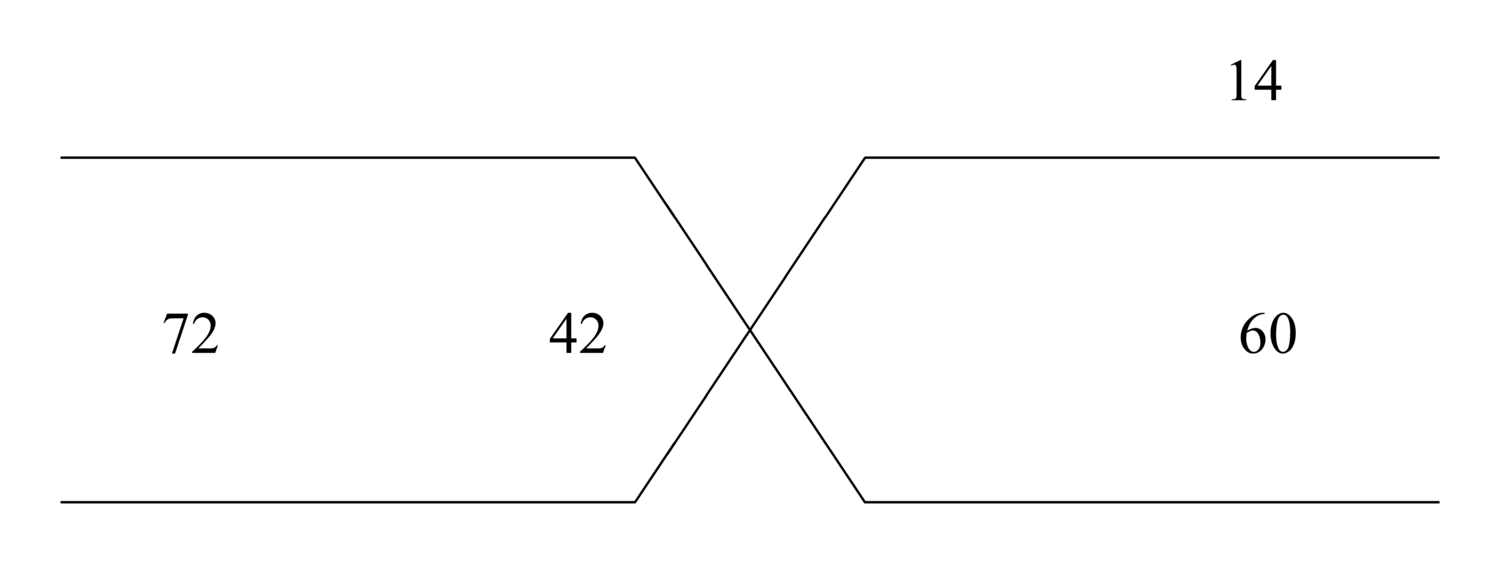

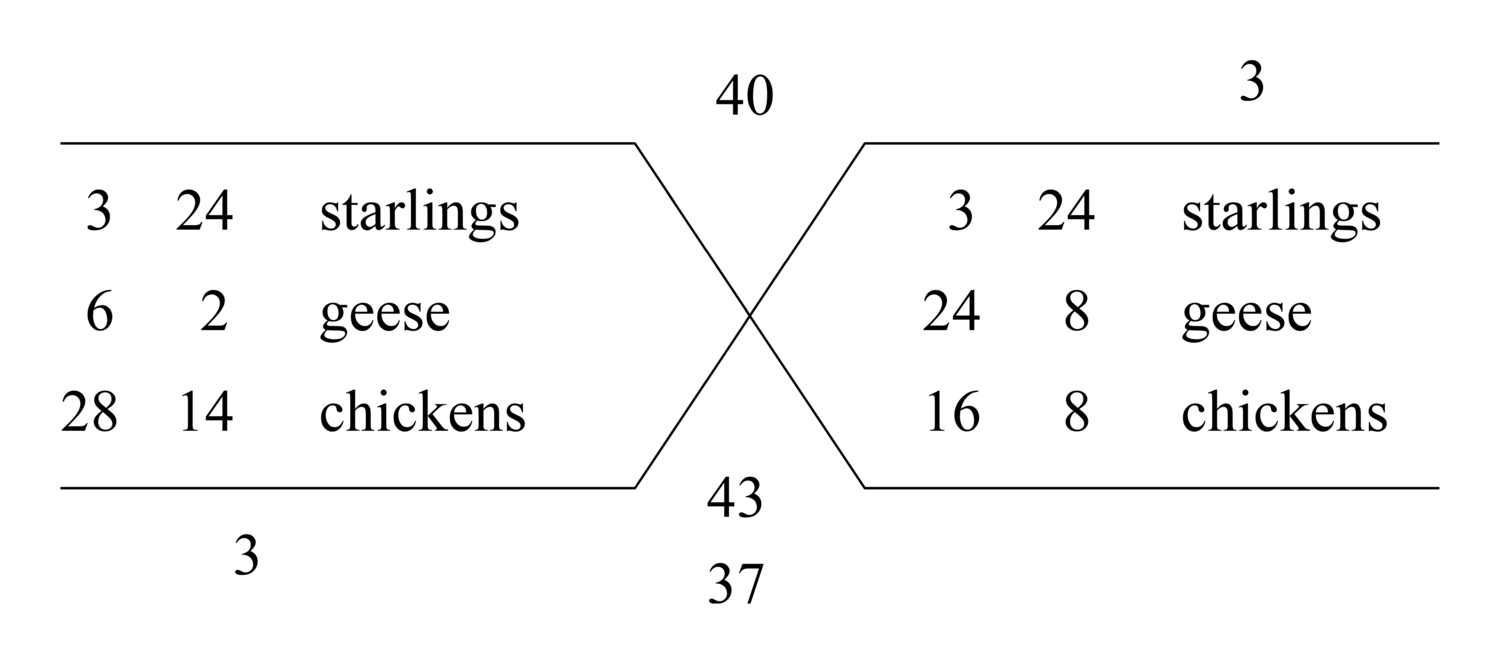
![\scalebox {-1}[1]{\ell }](../../../media/sources/14/5/EOAineq_5_10.png) ”.
”.